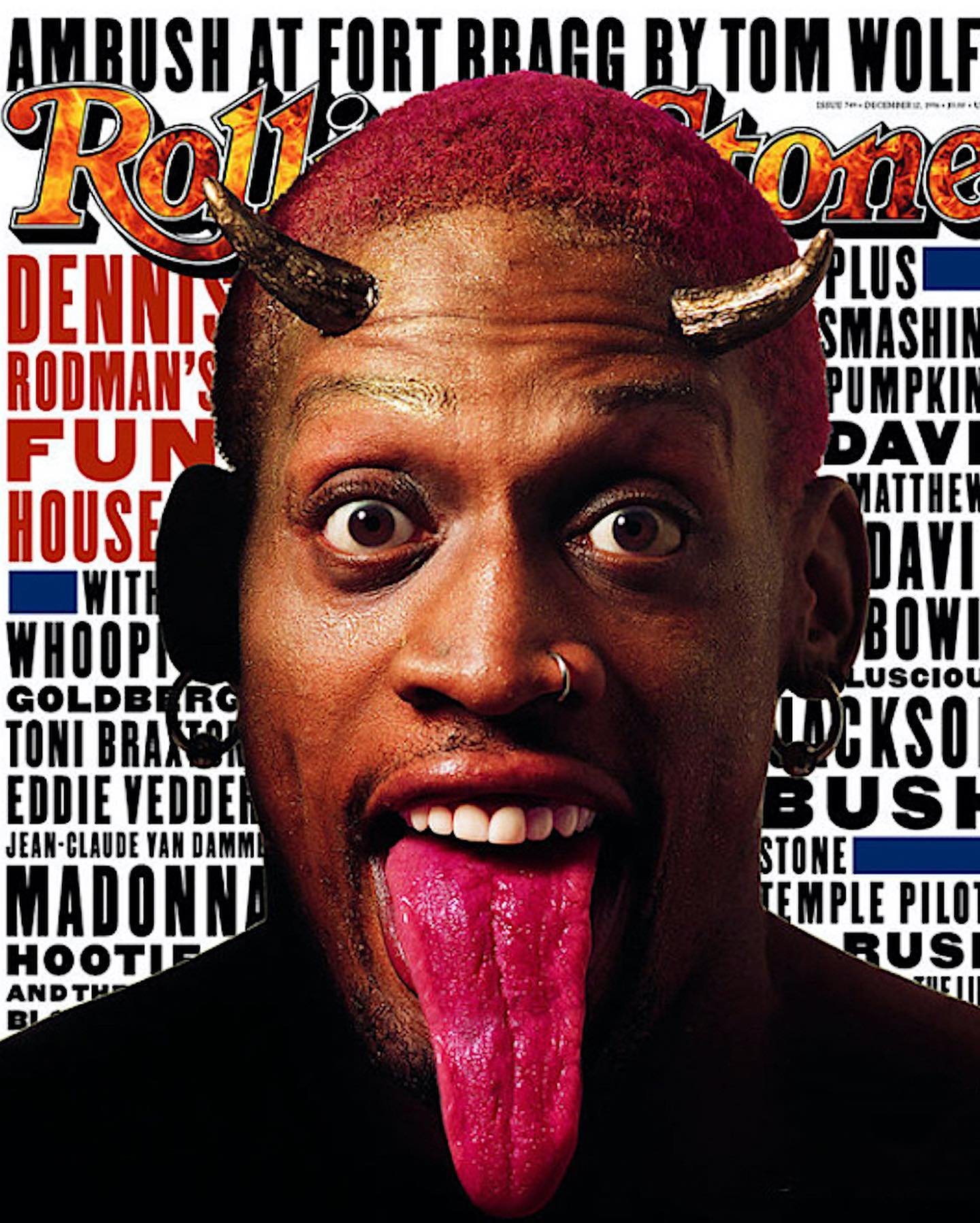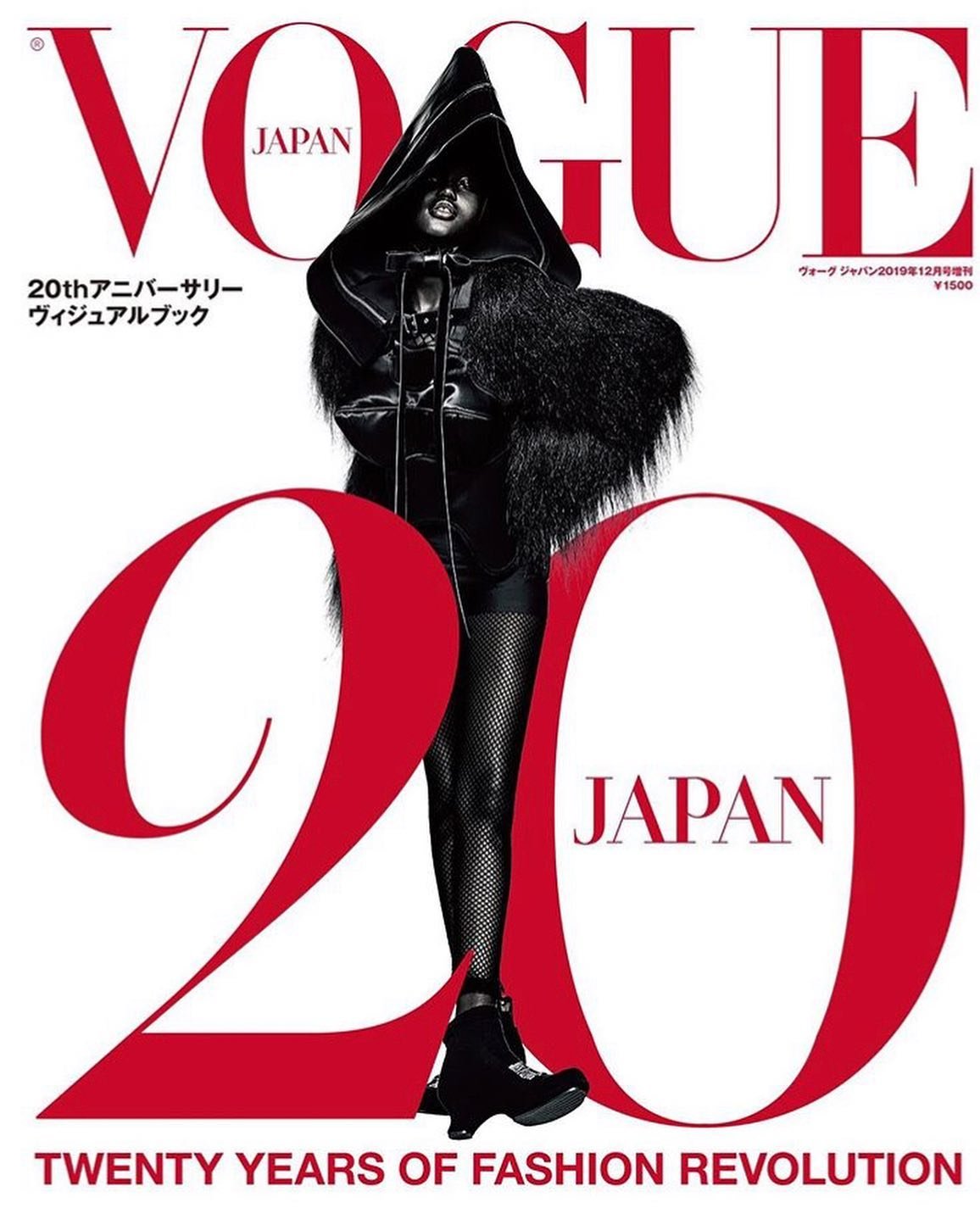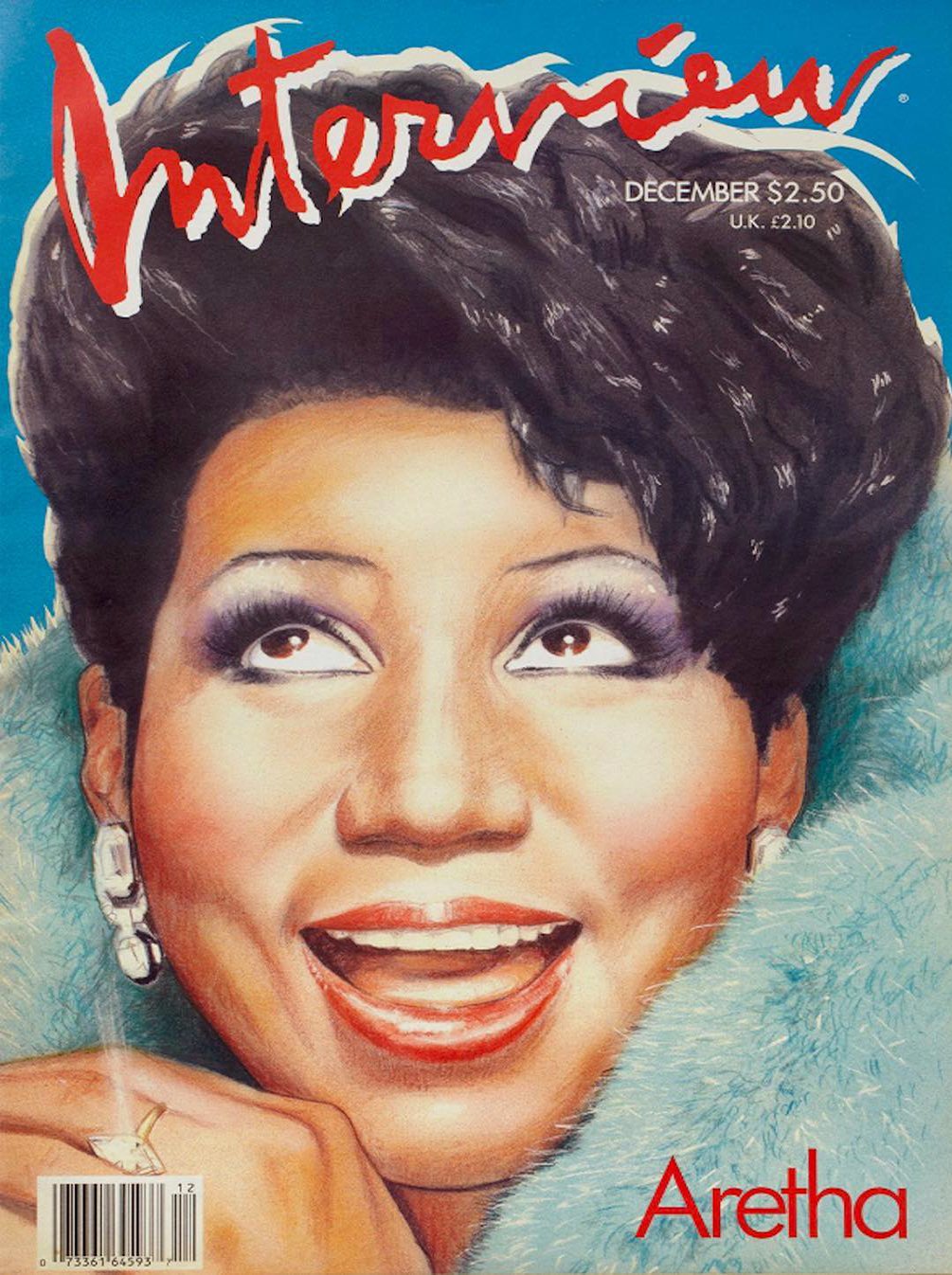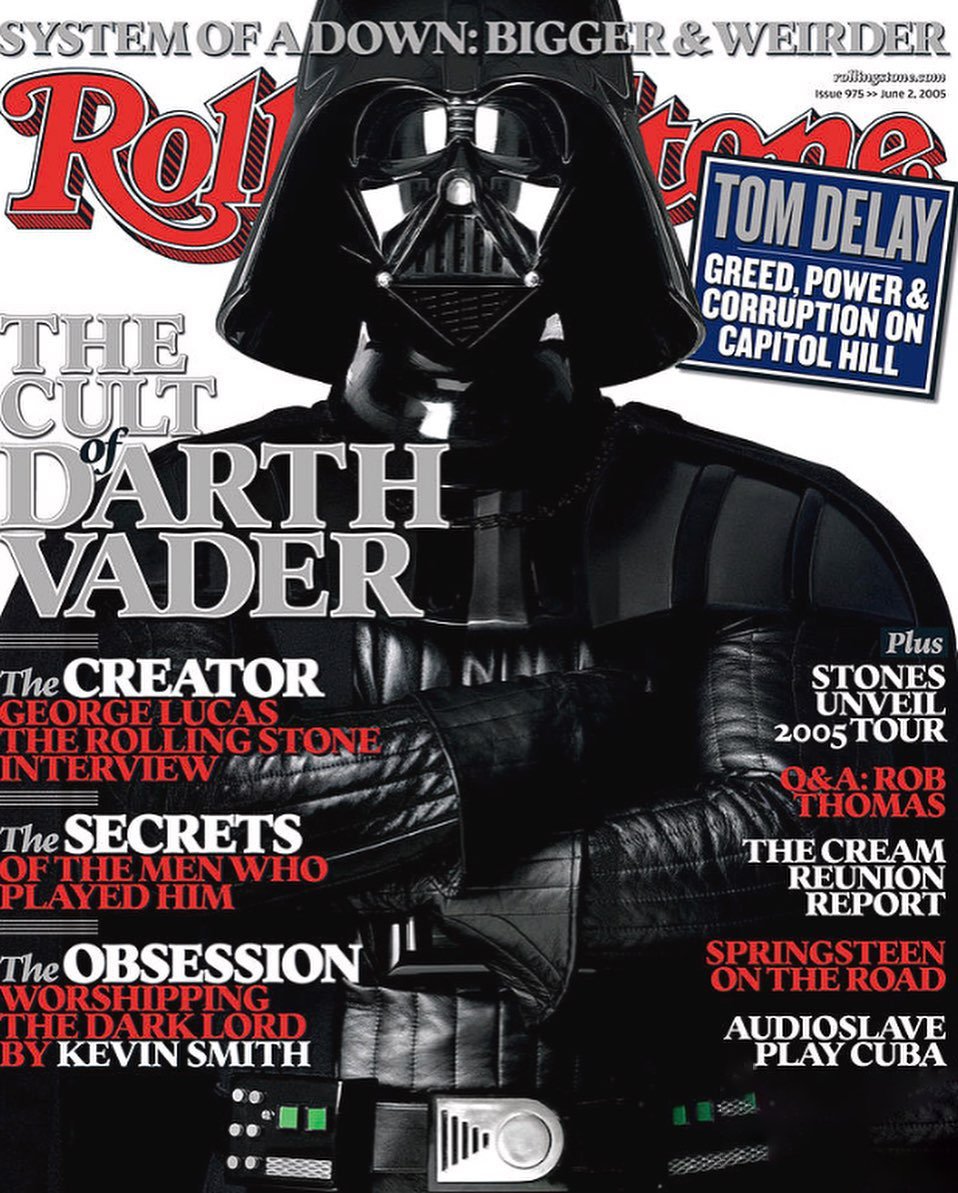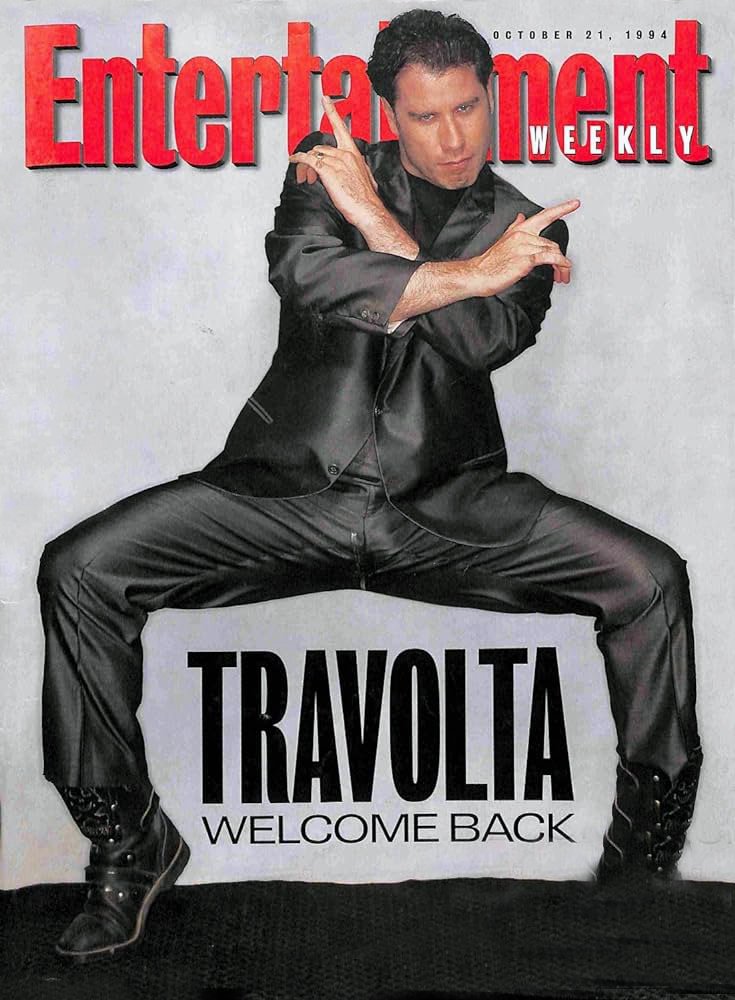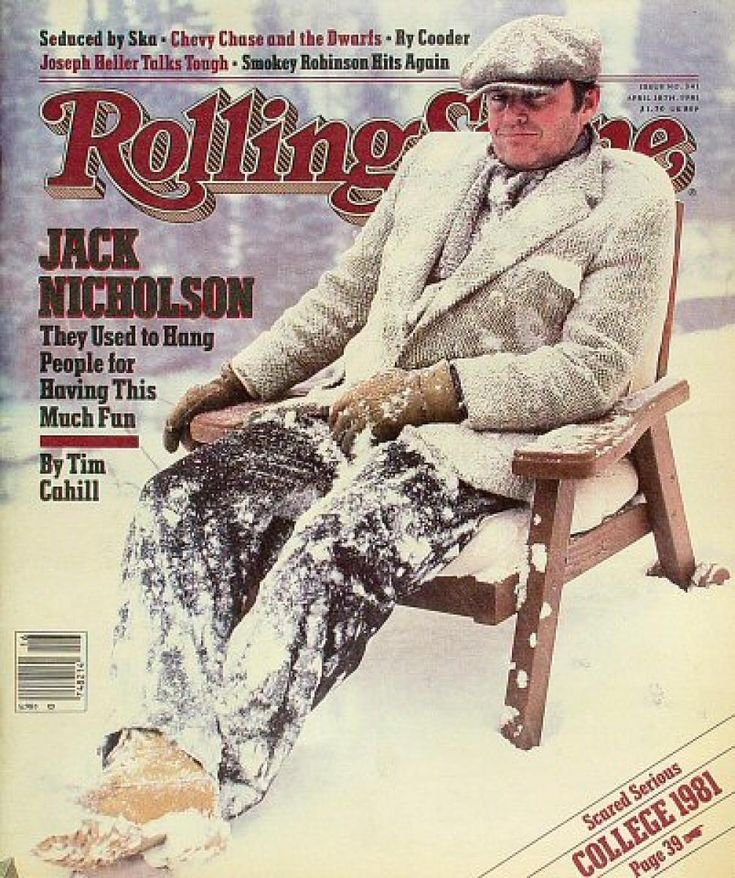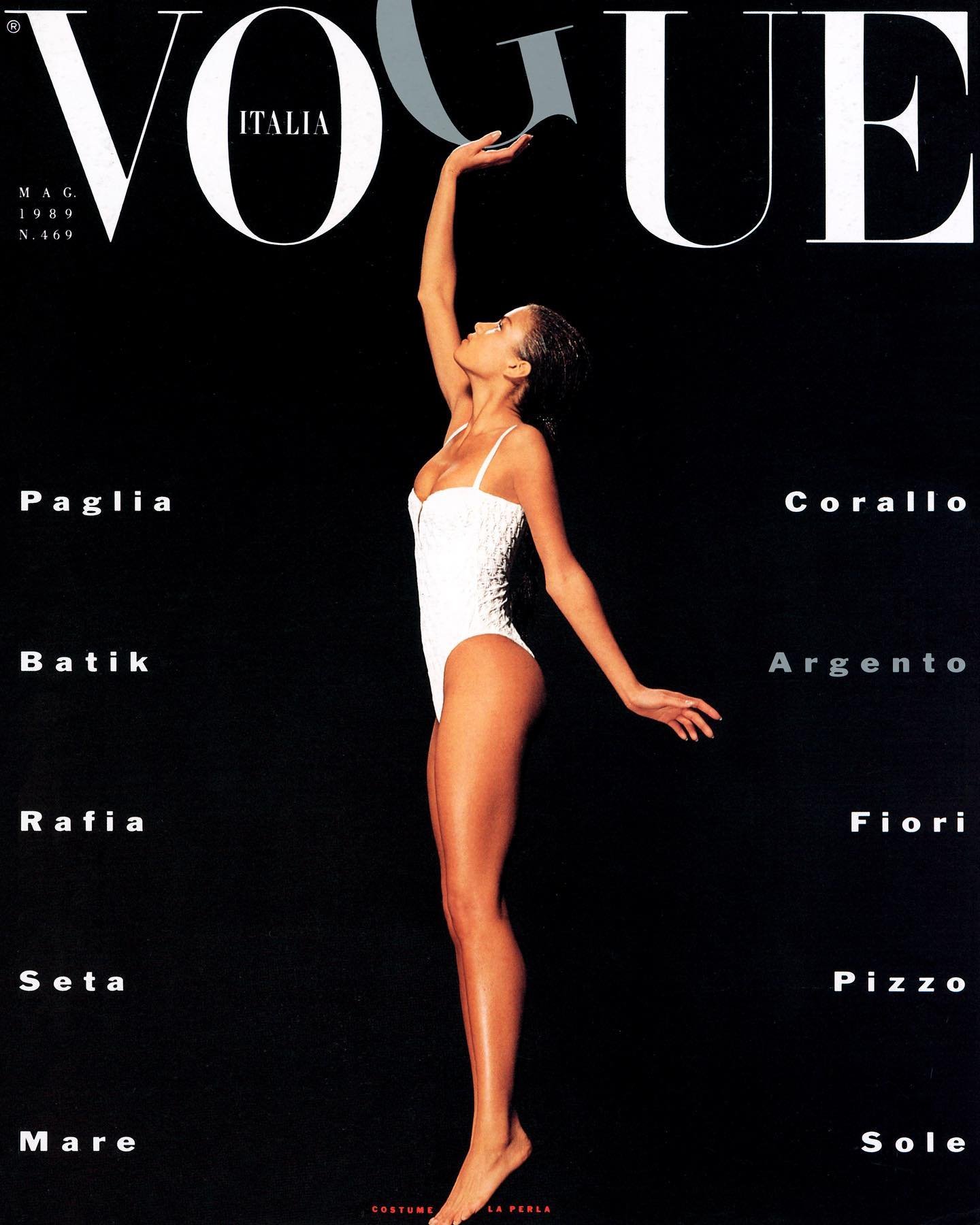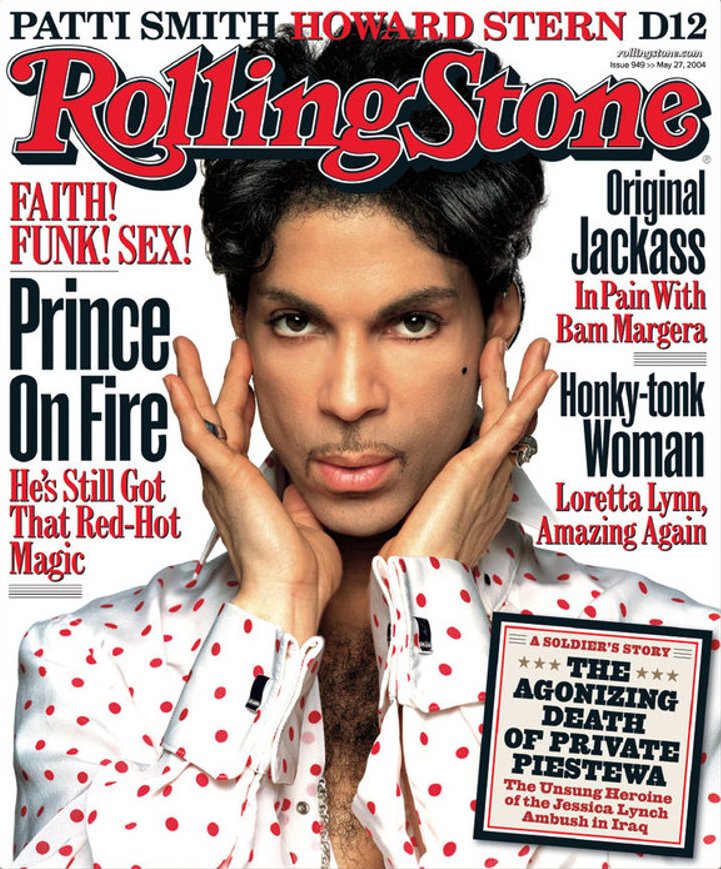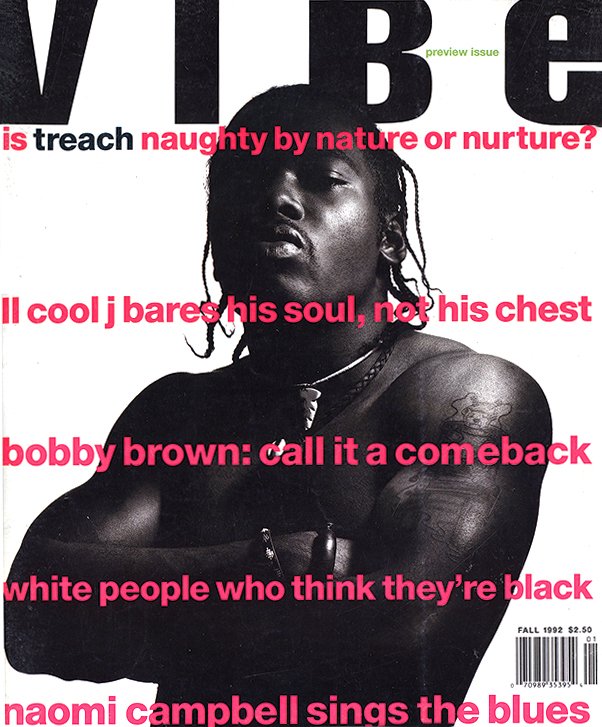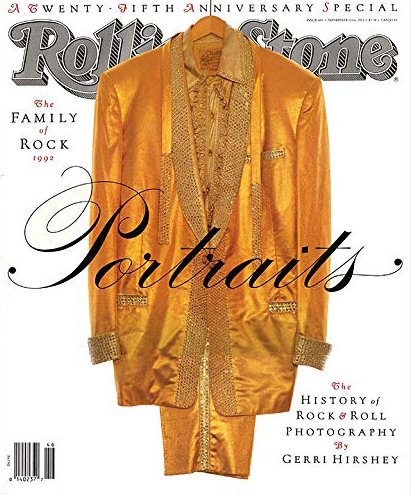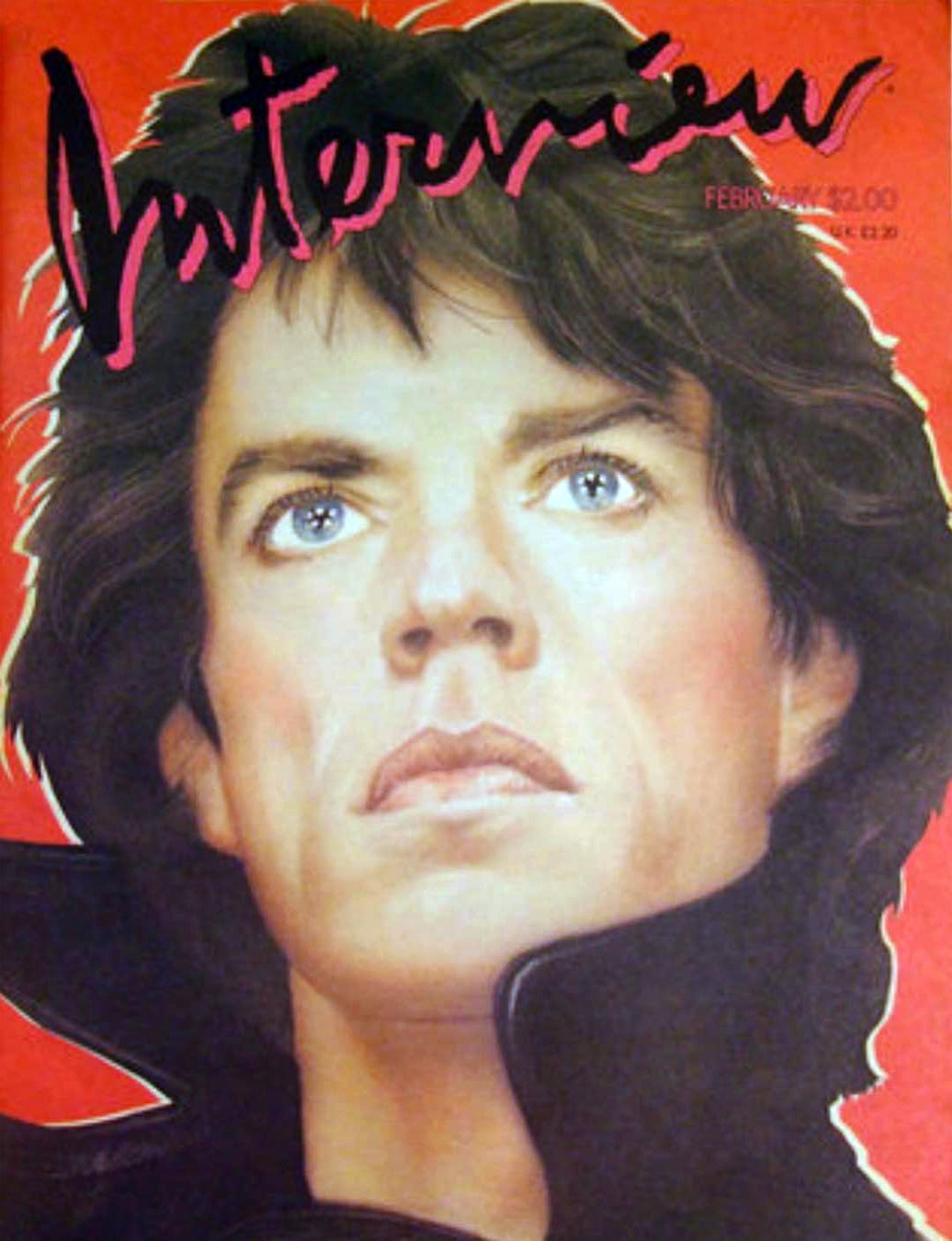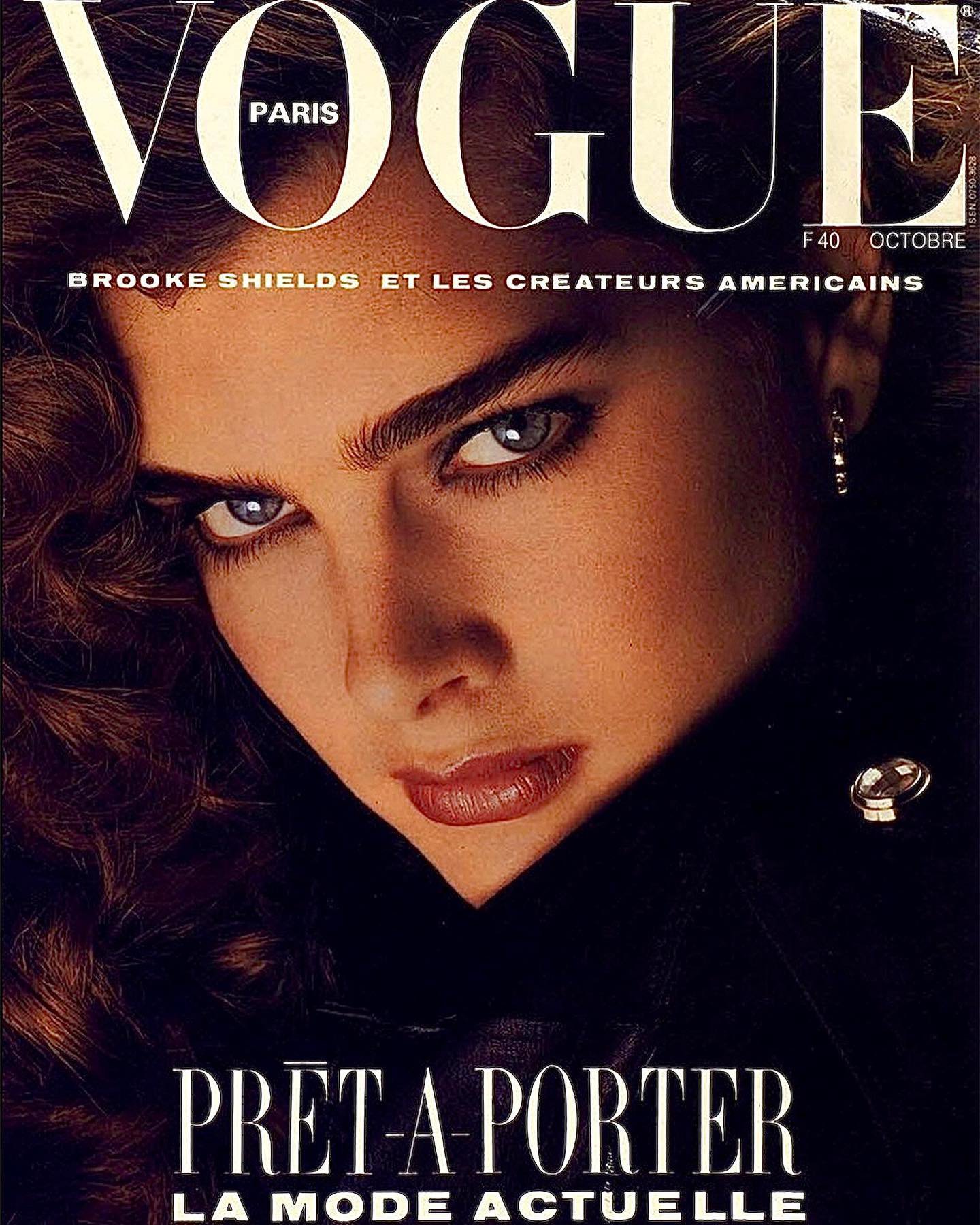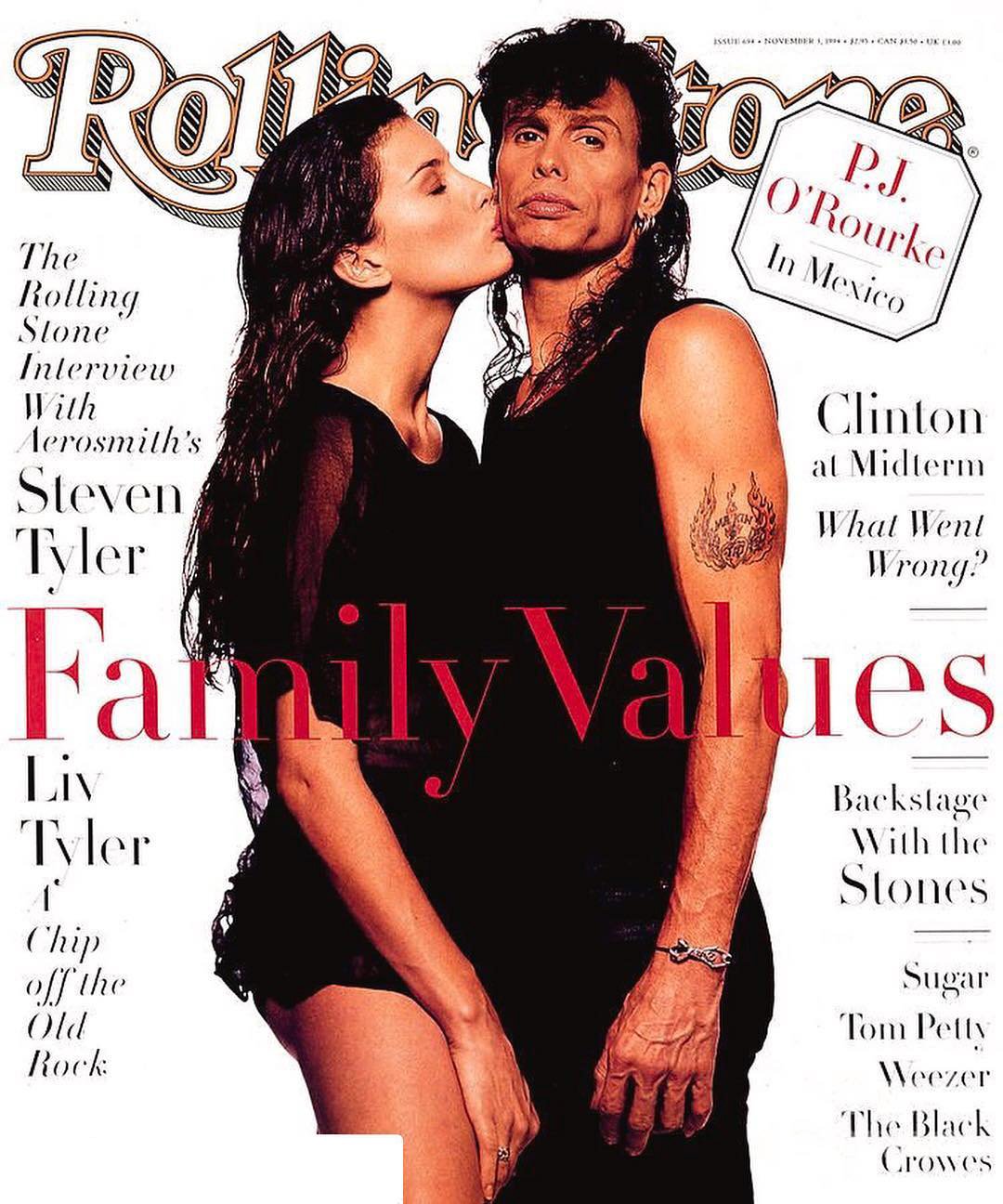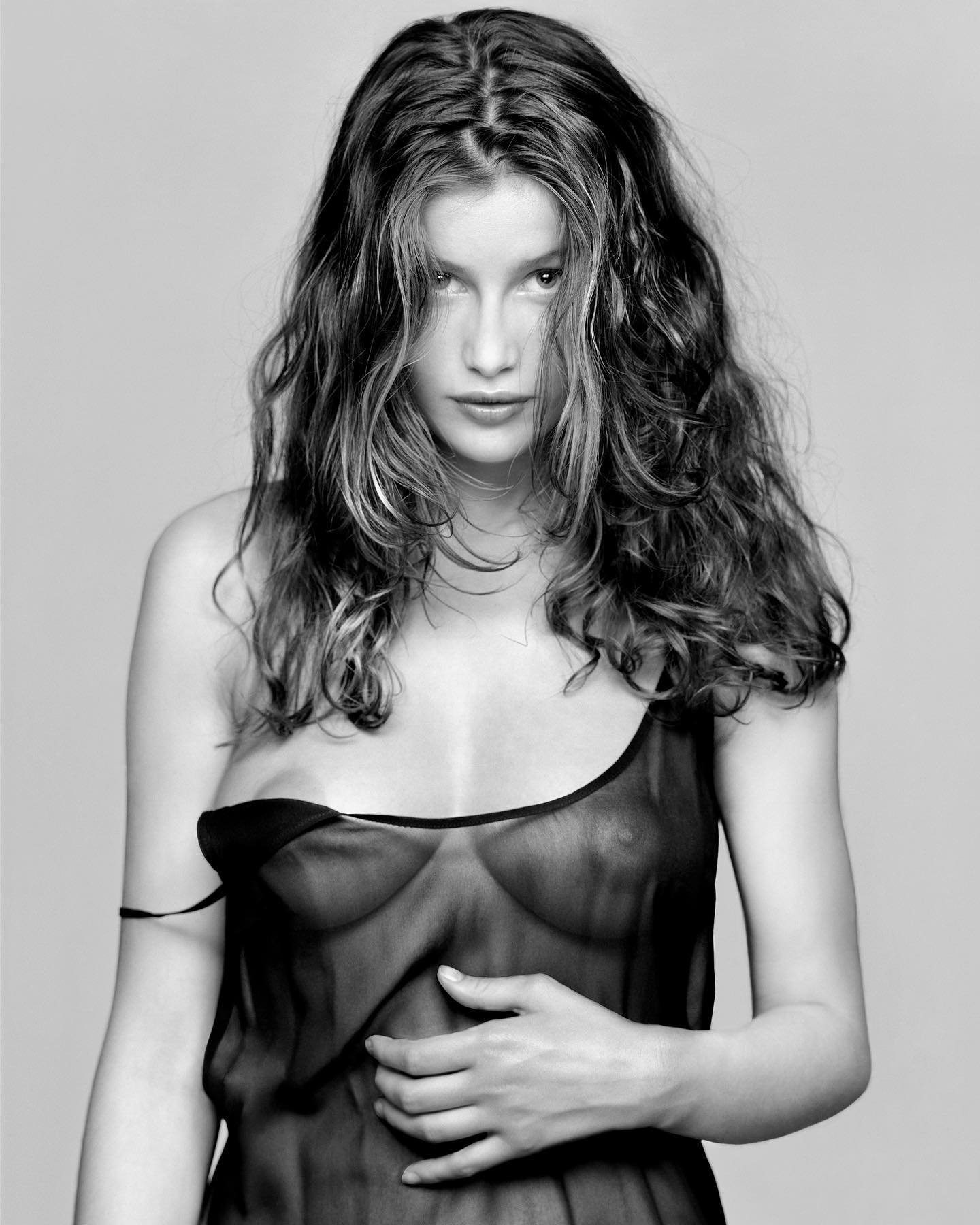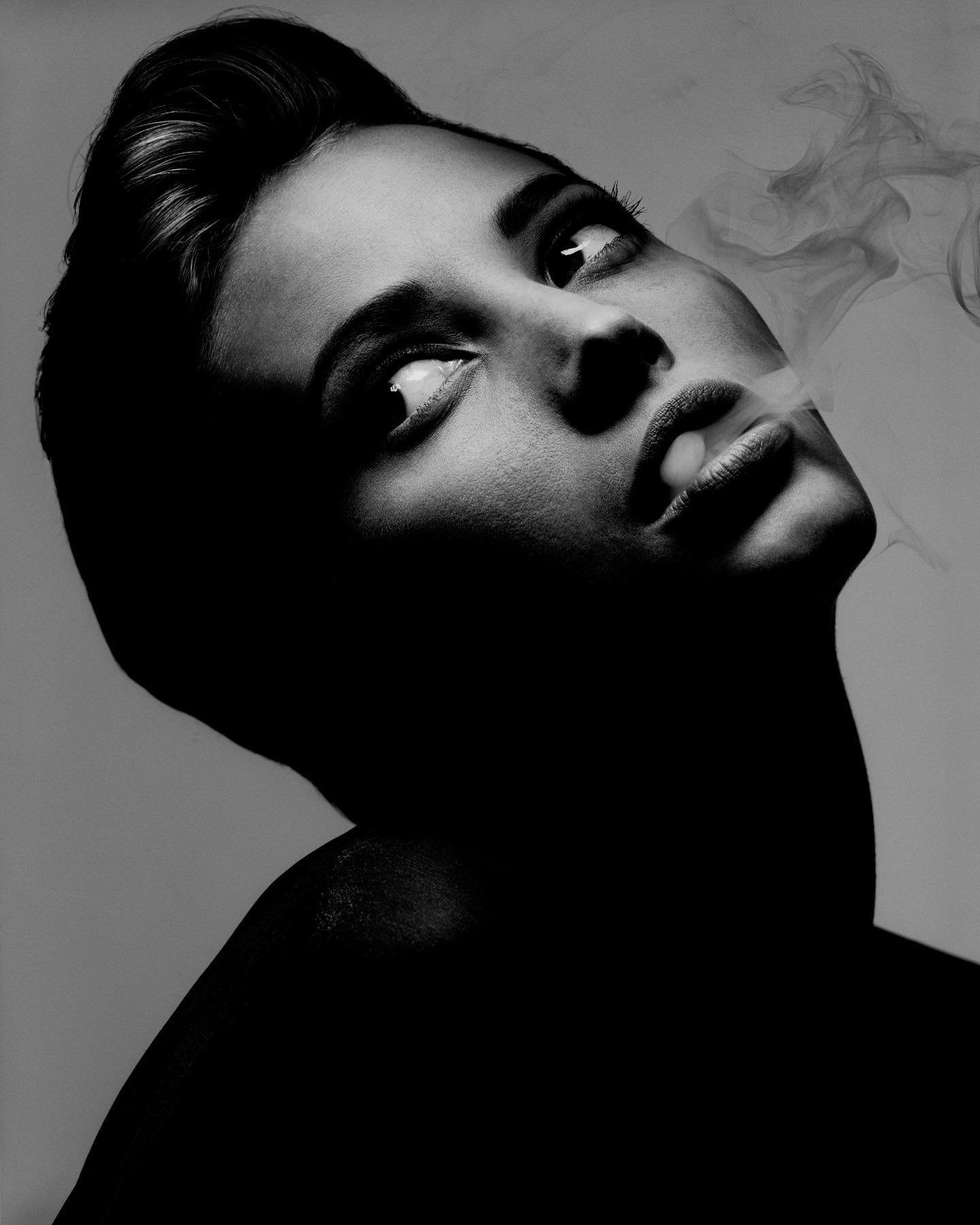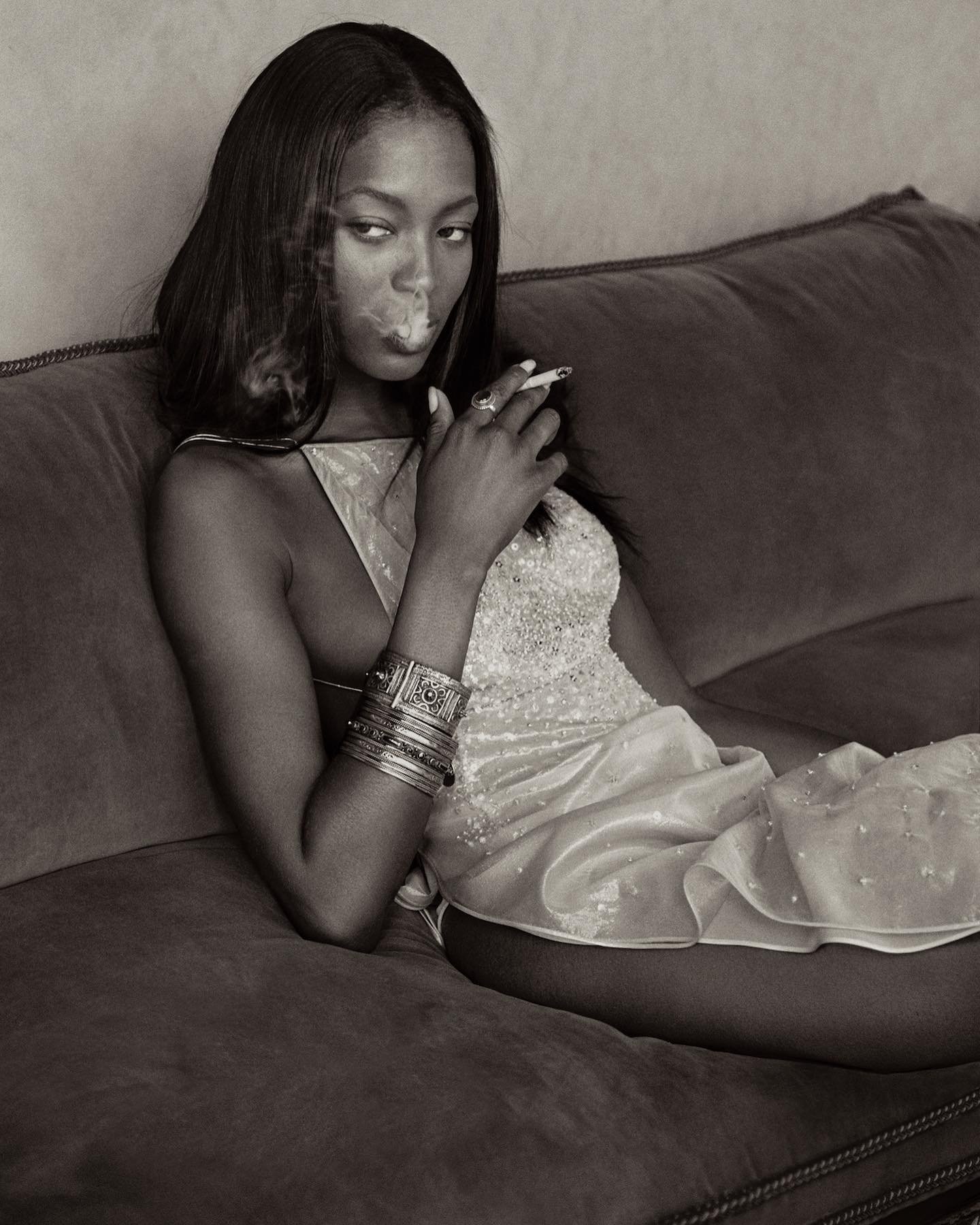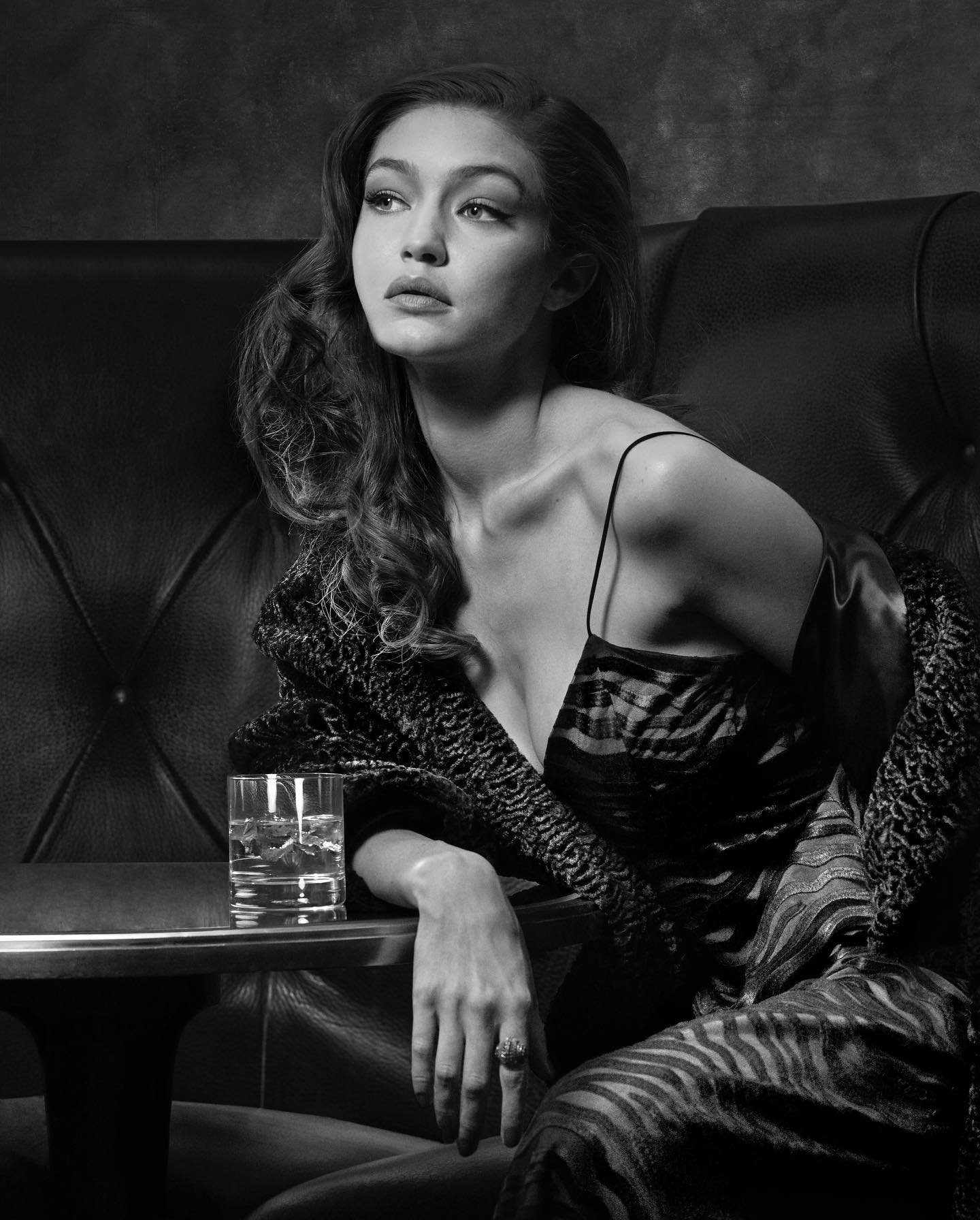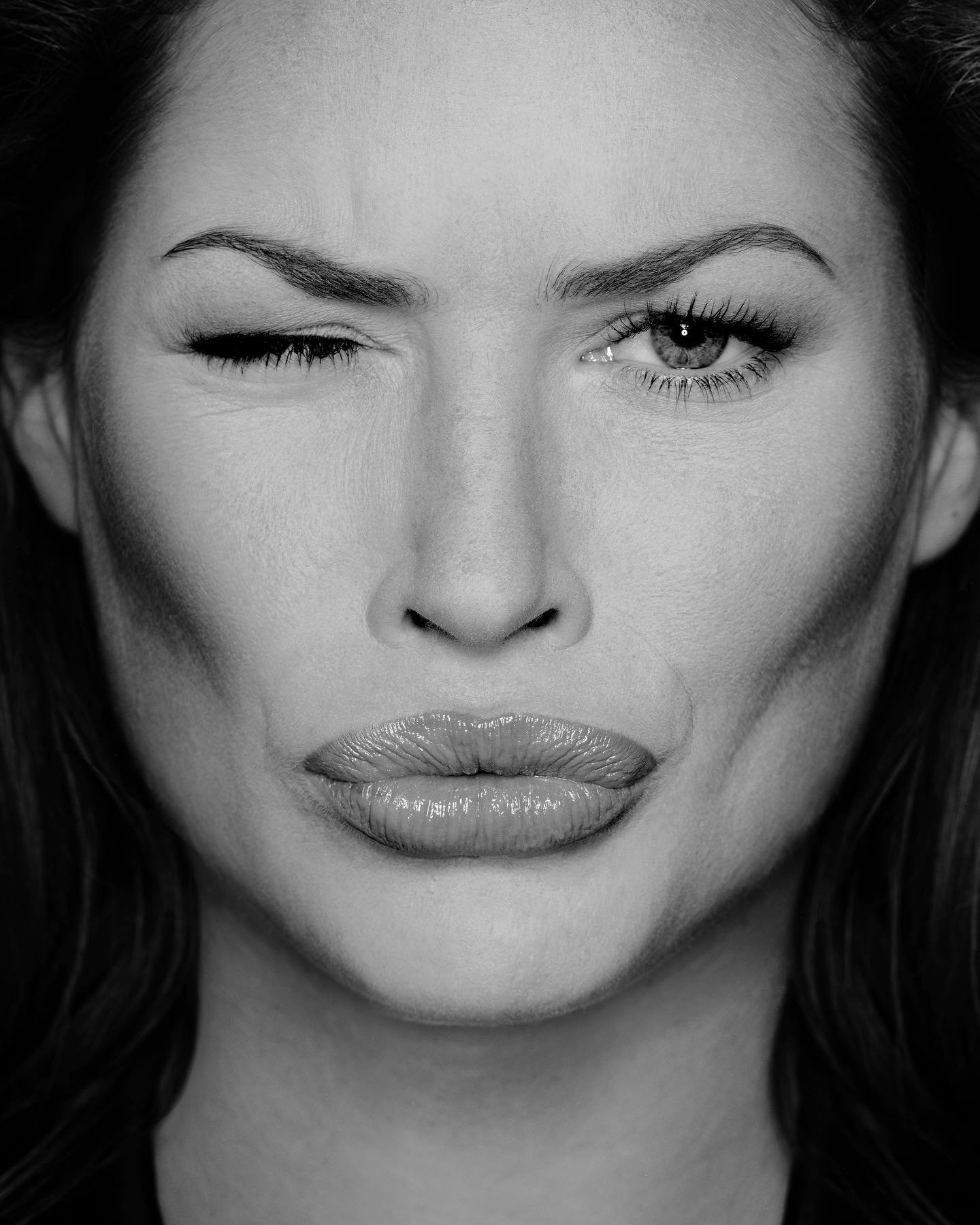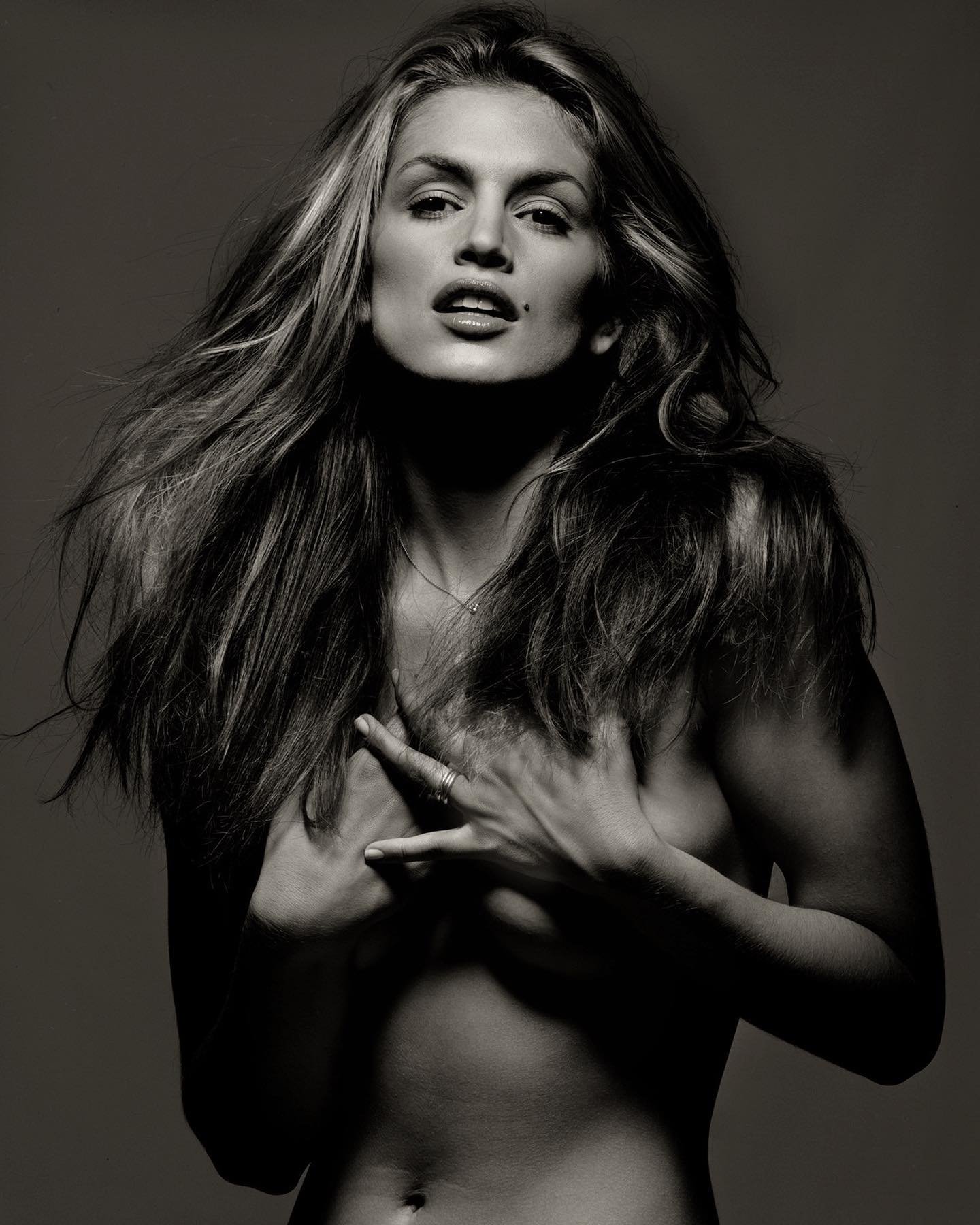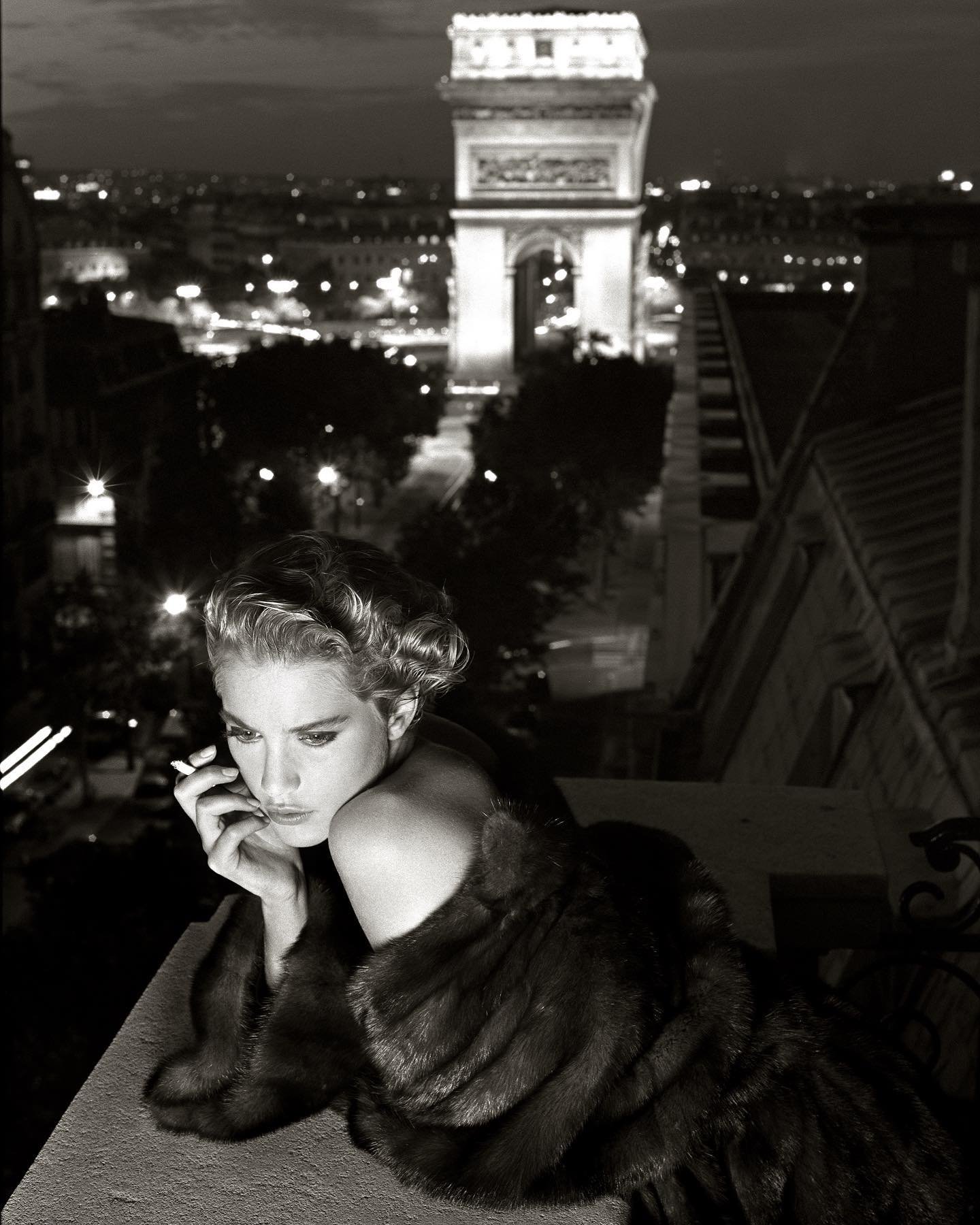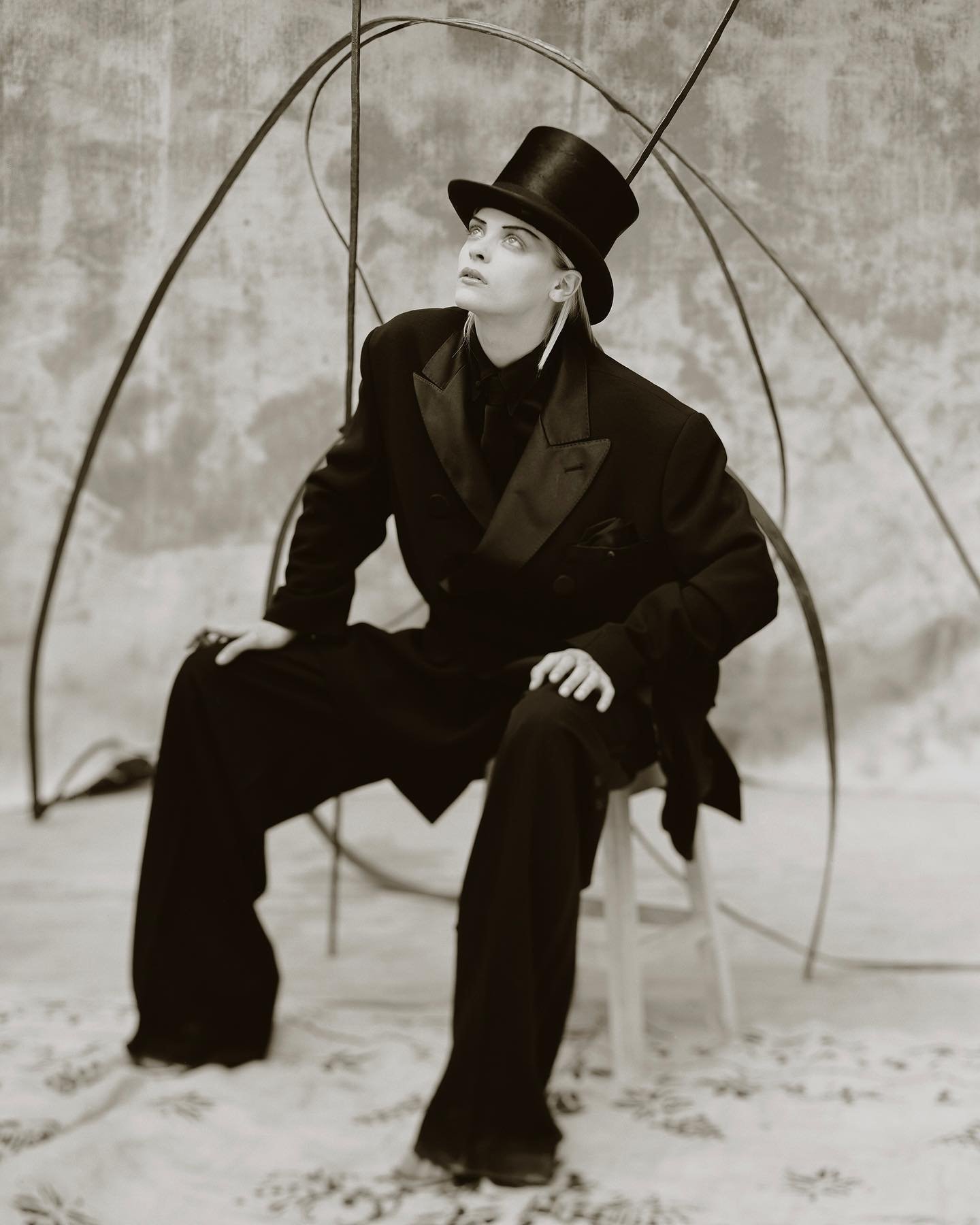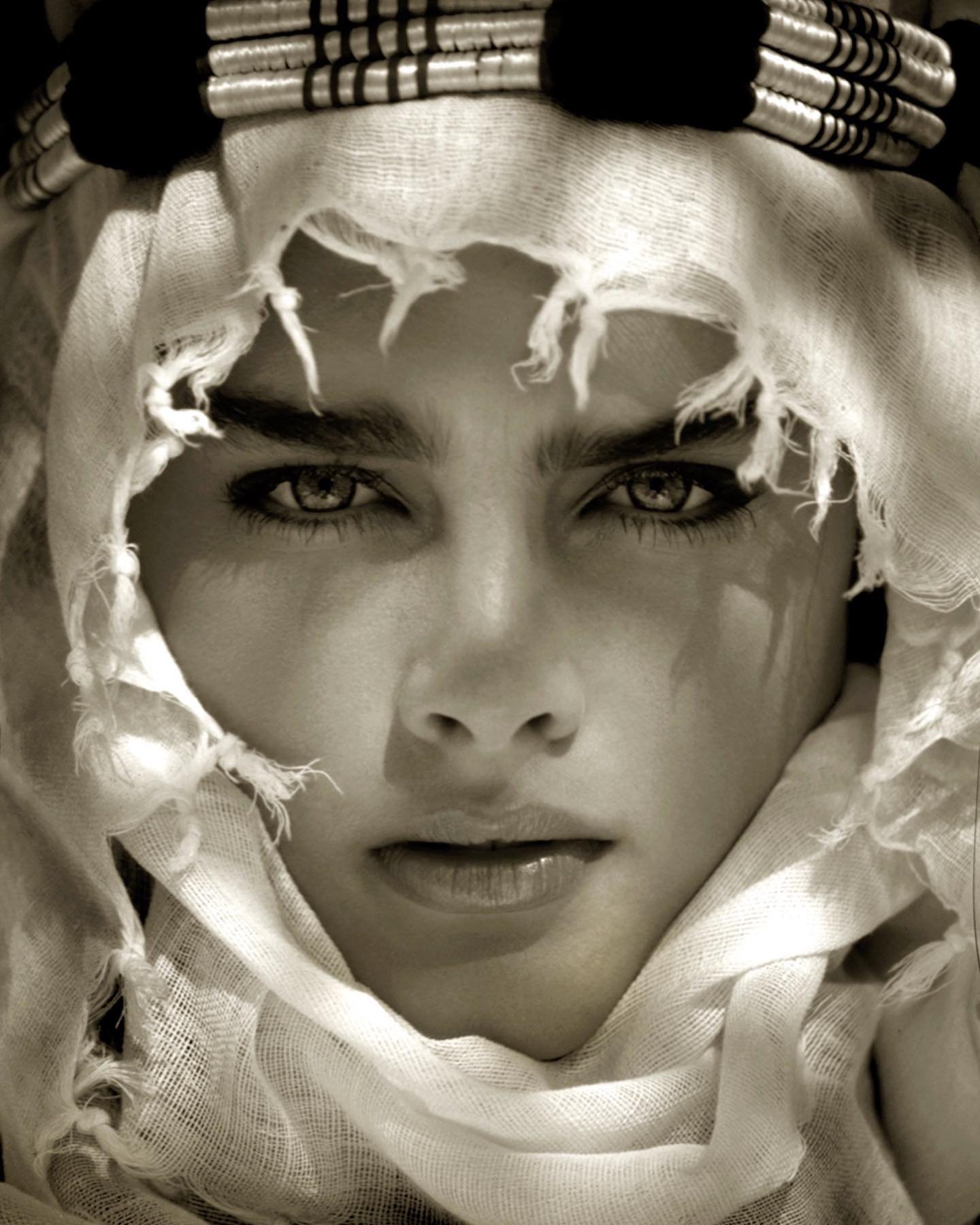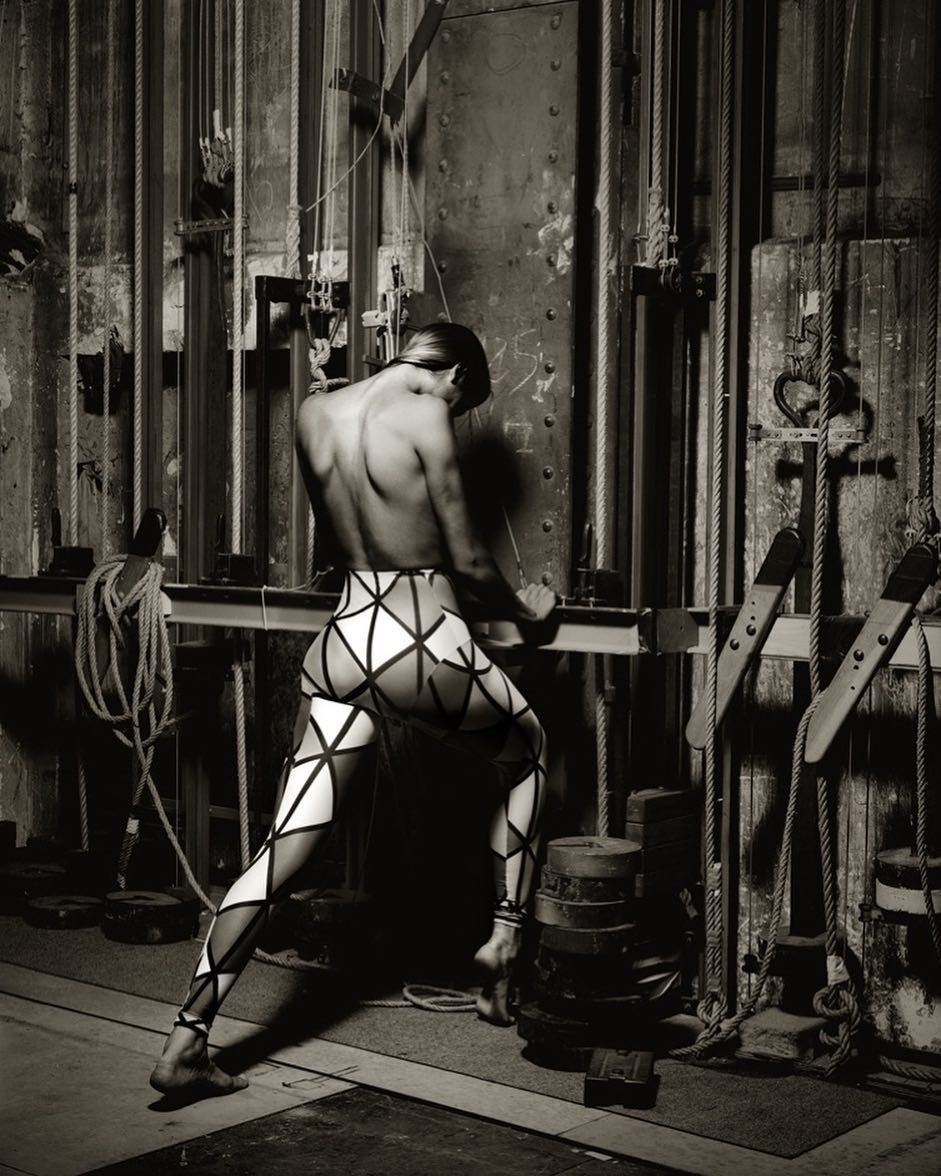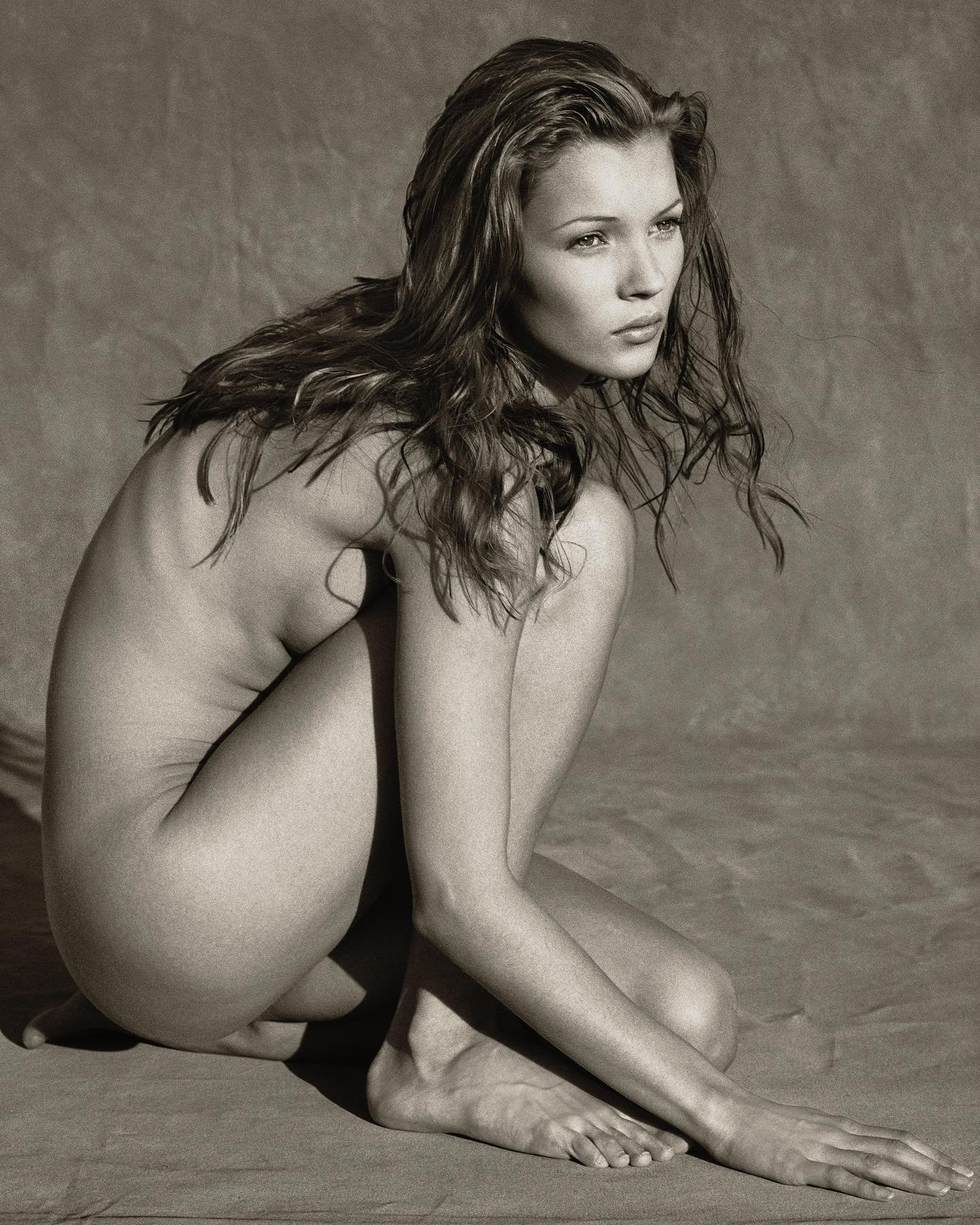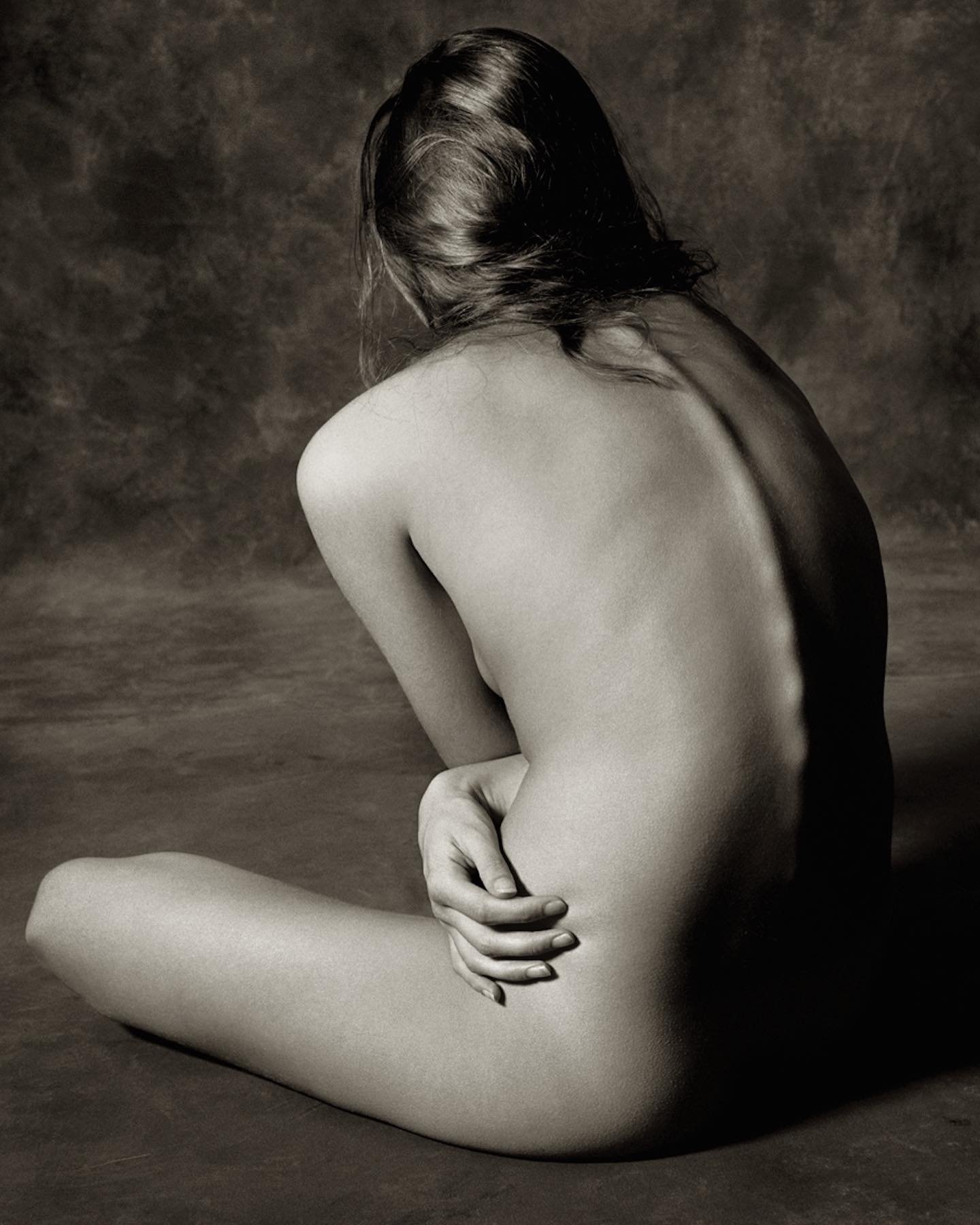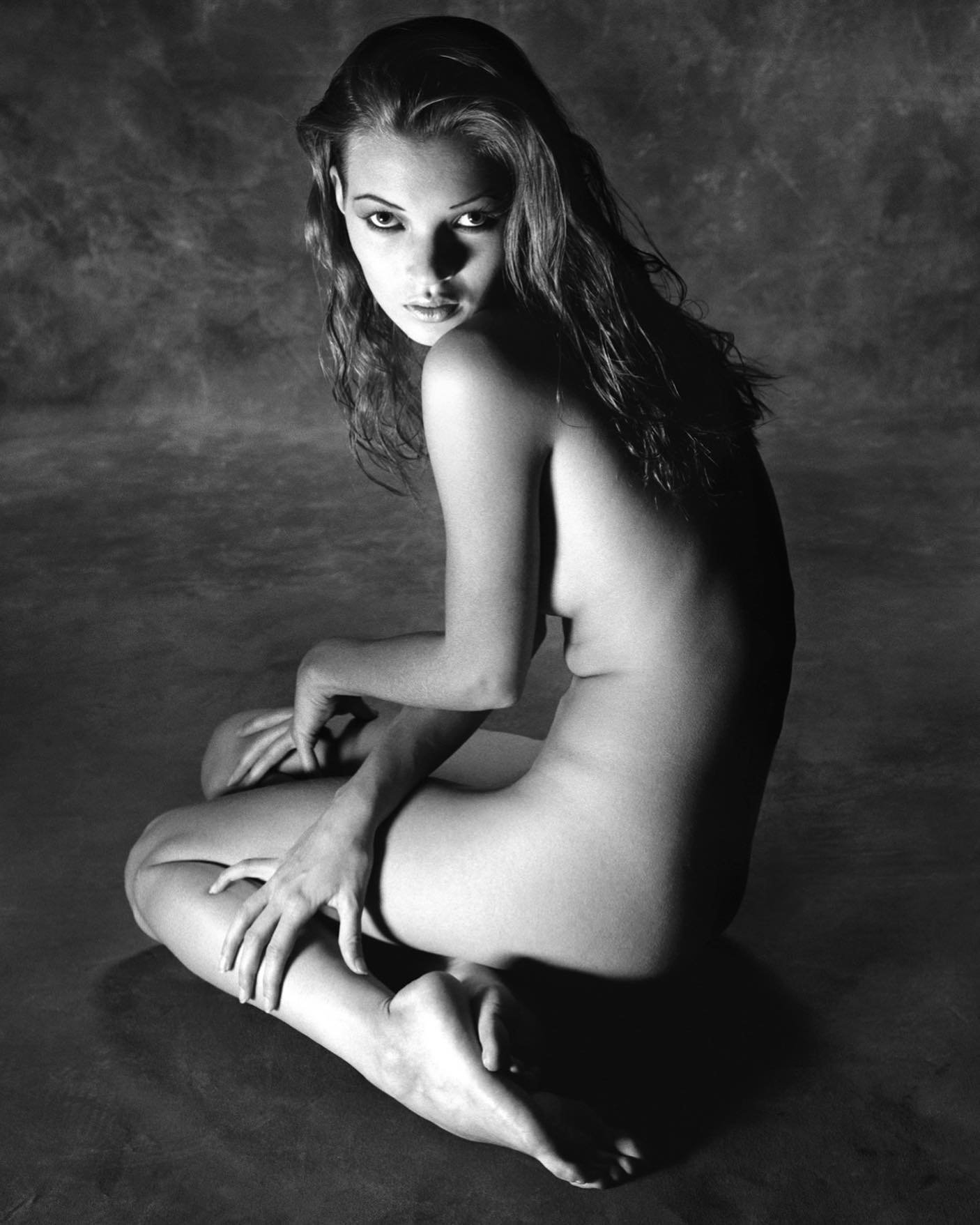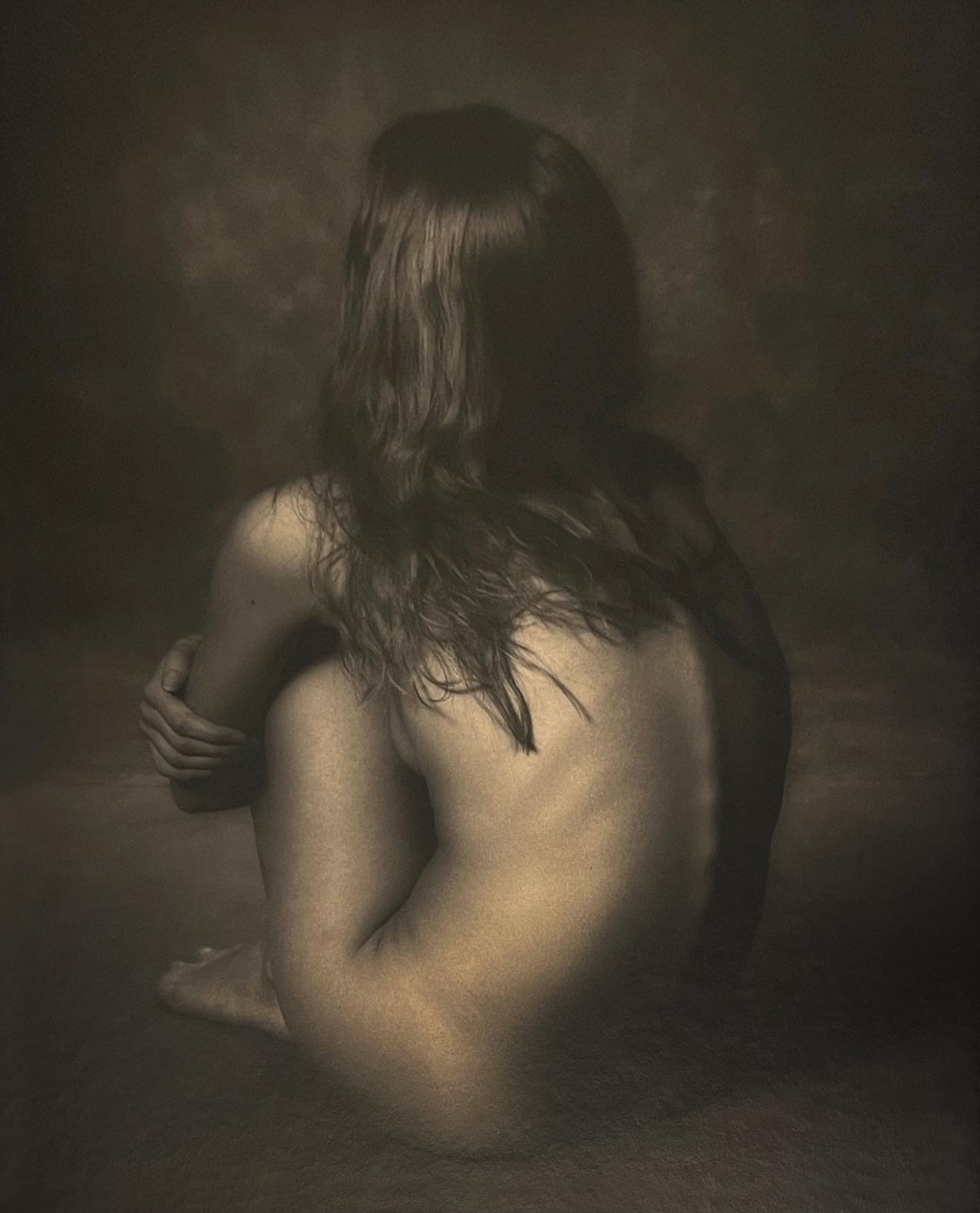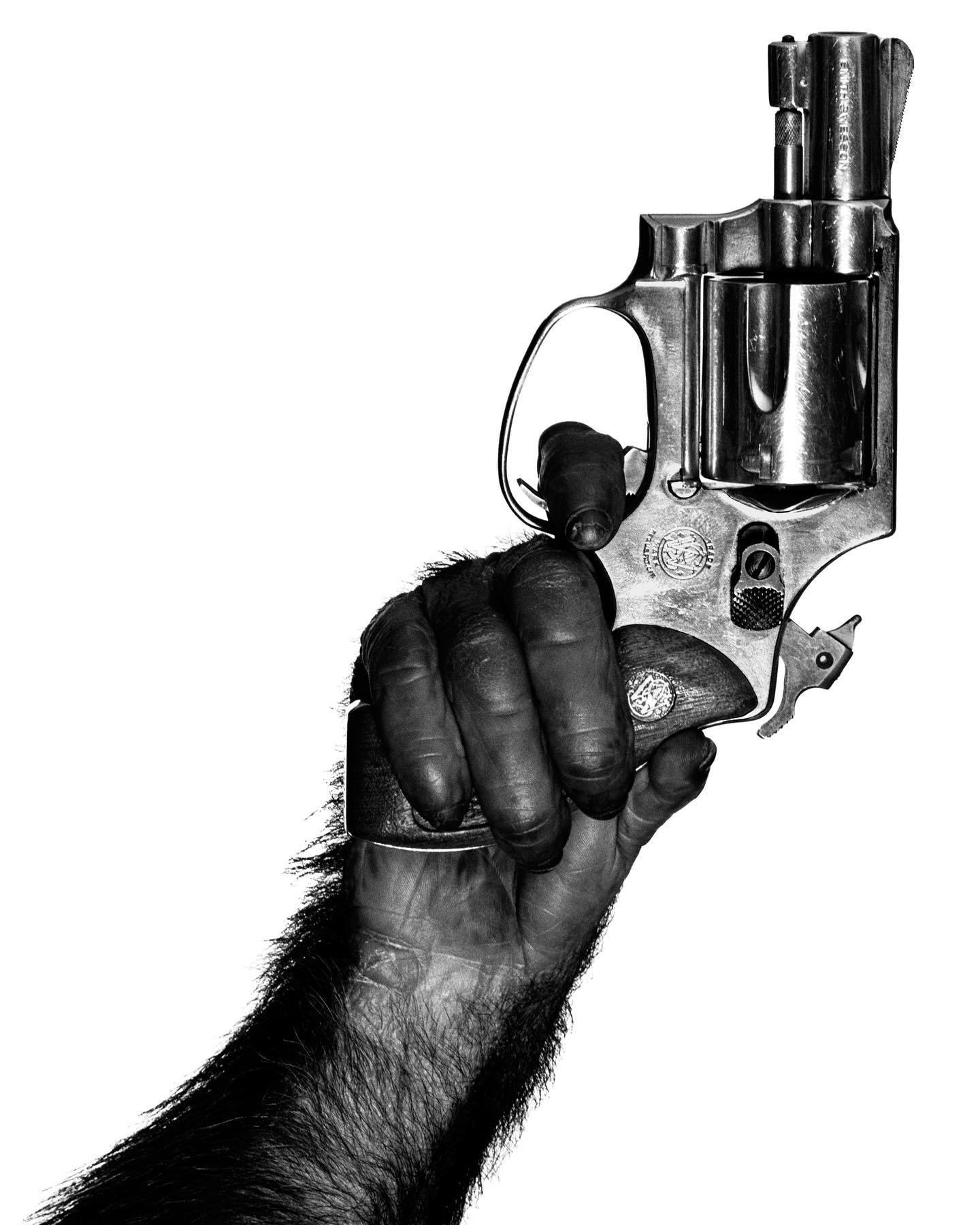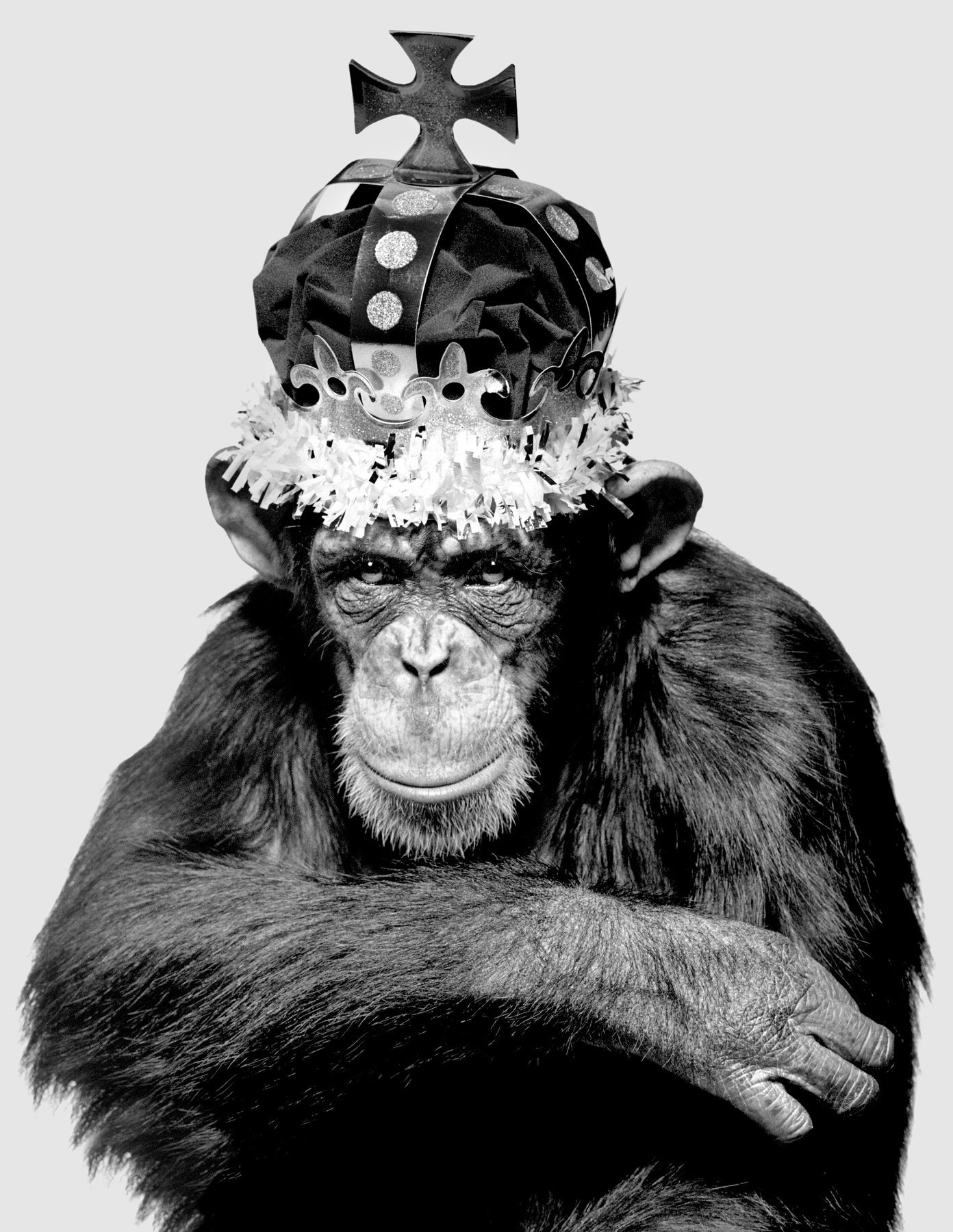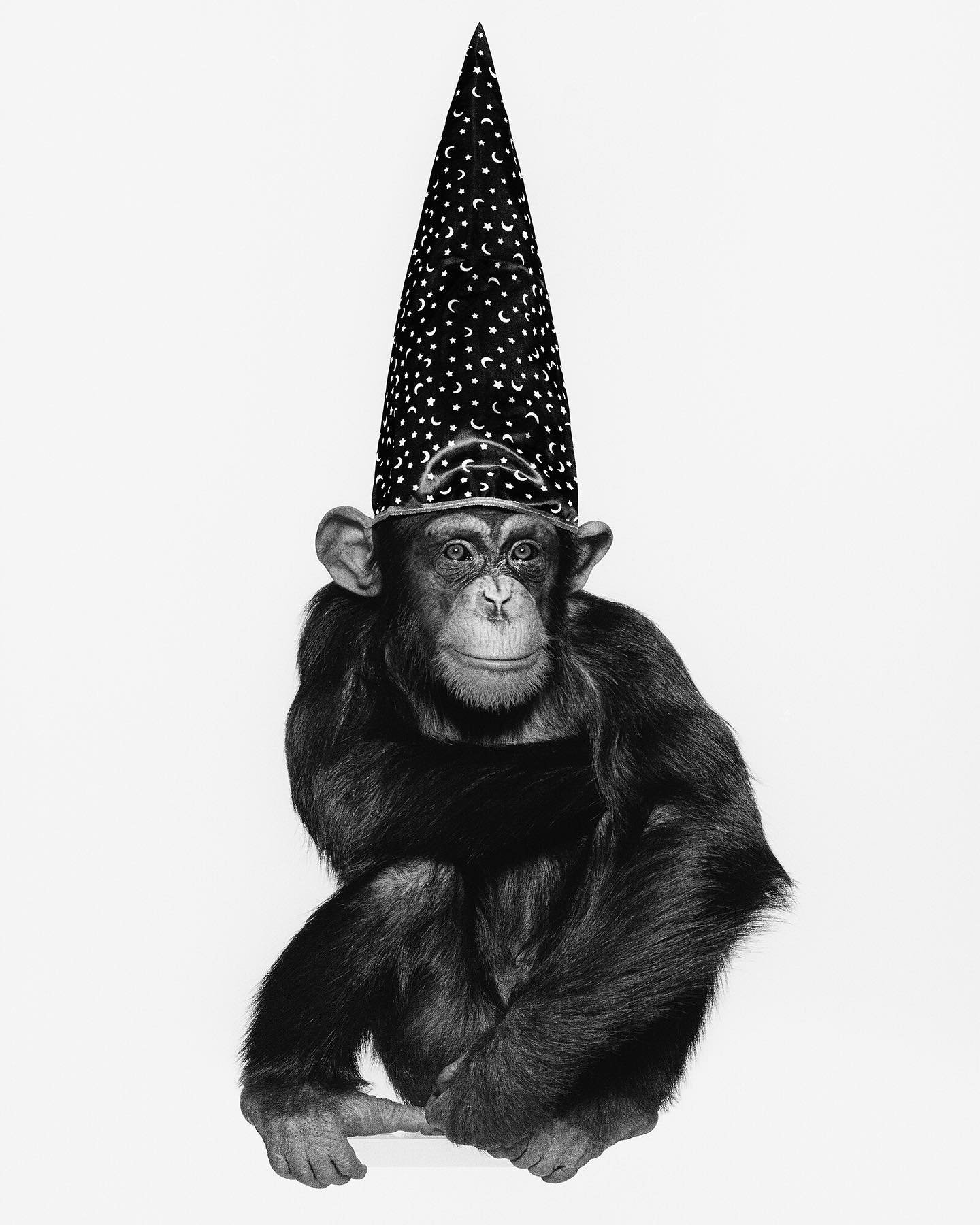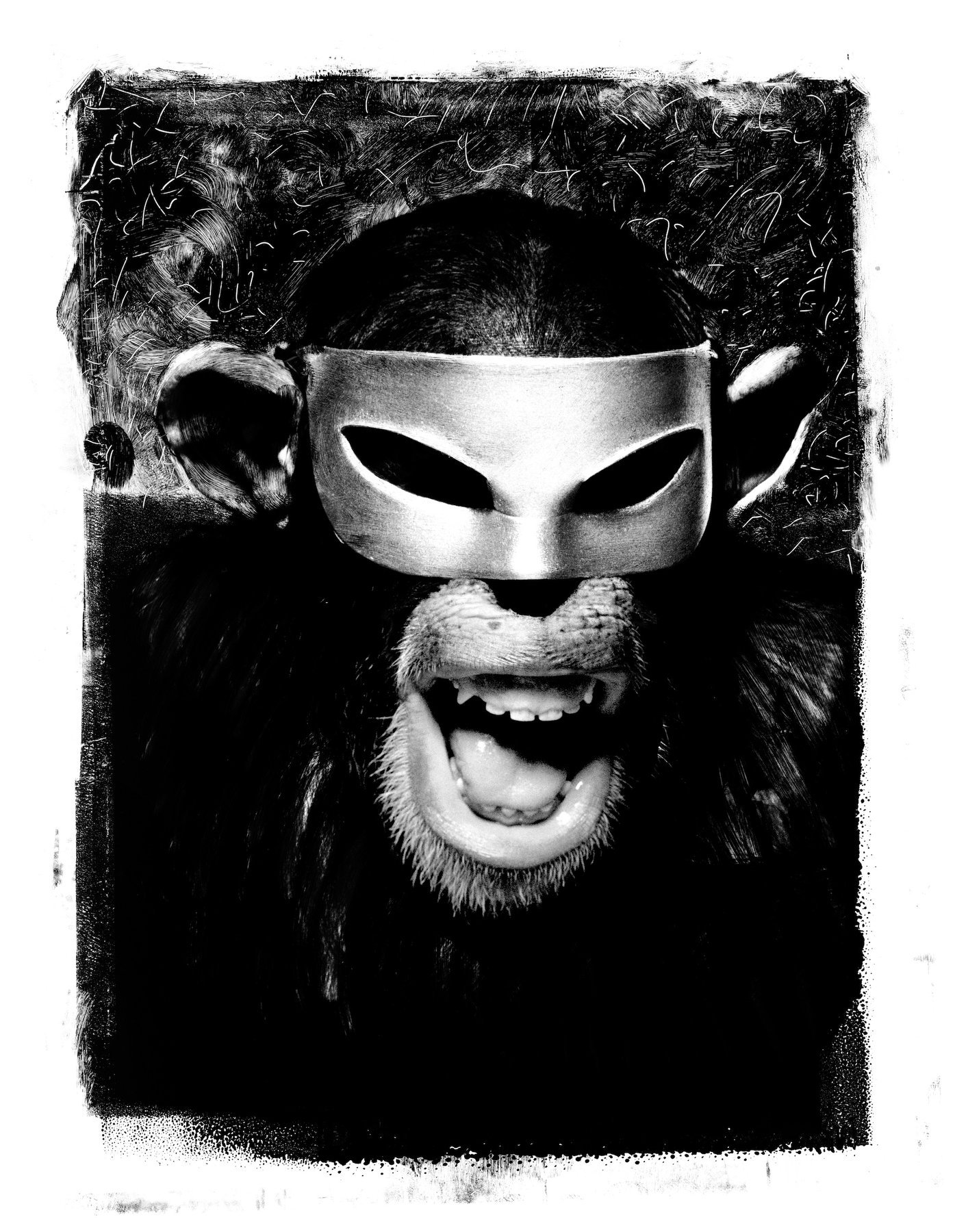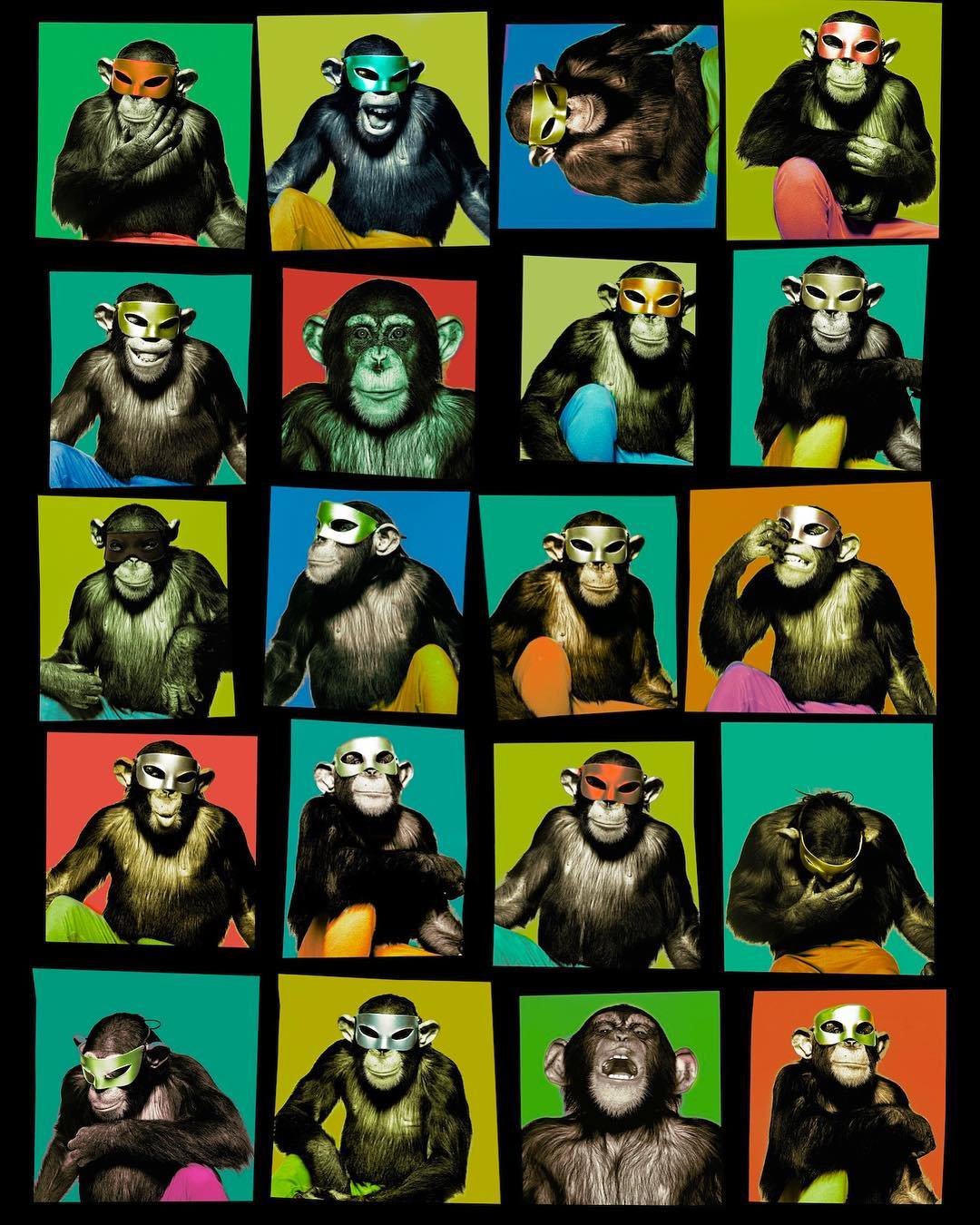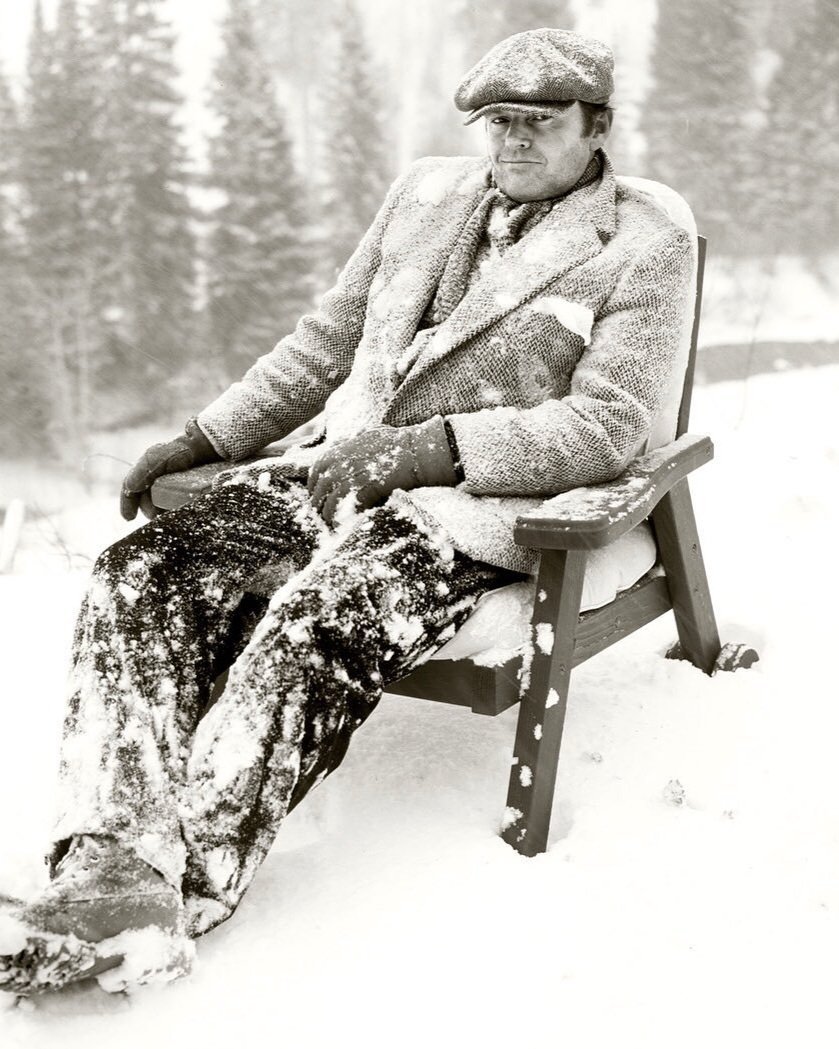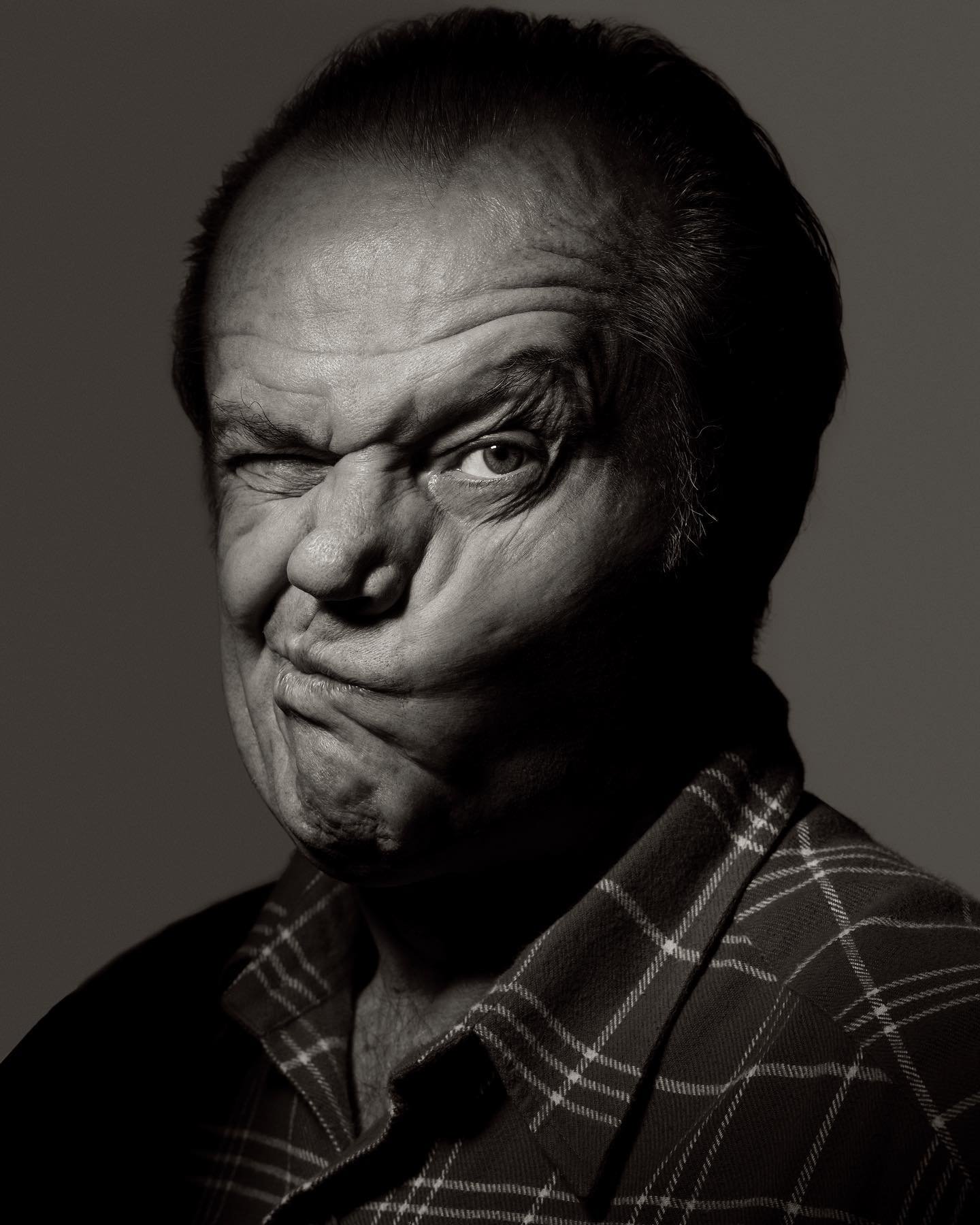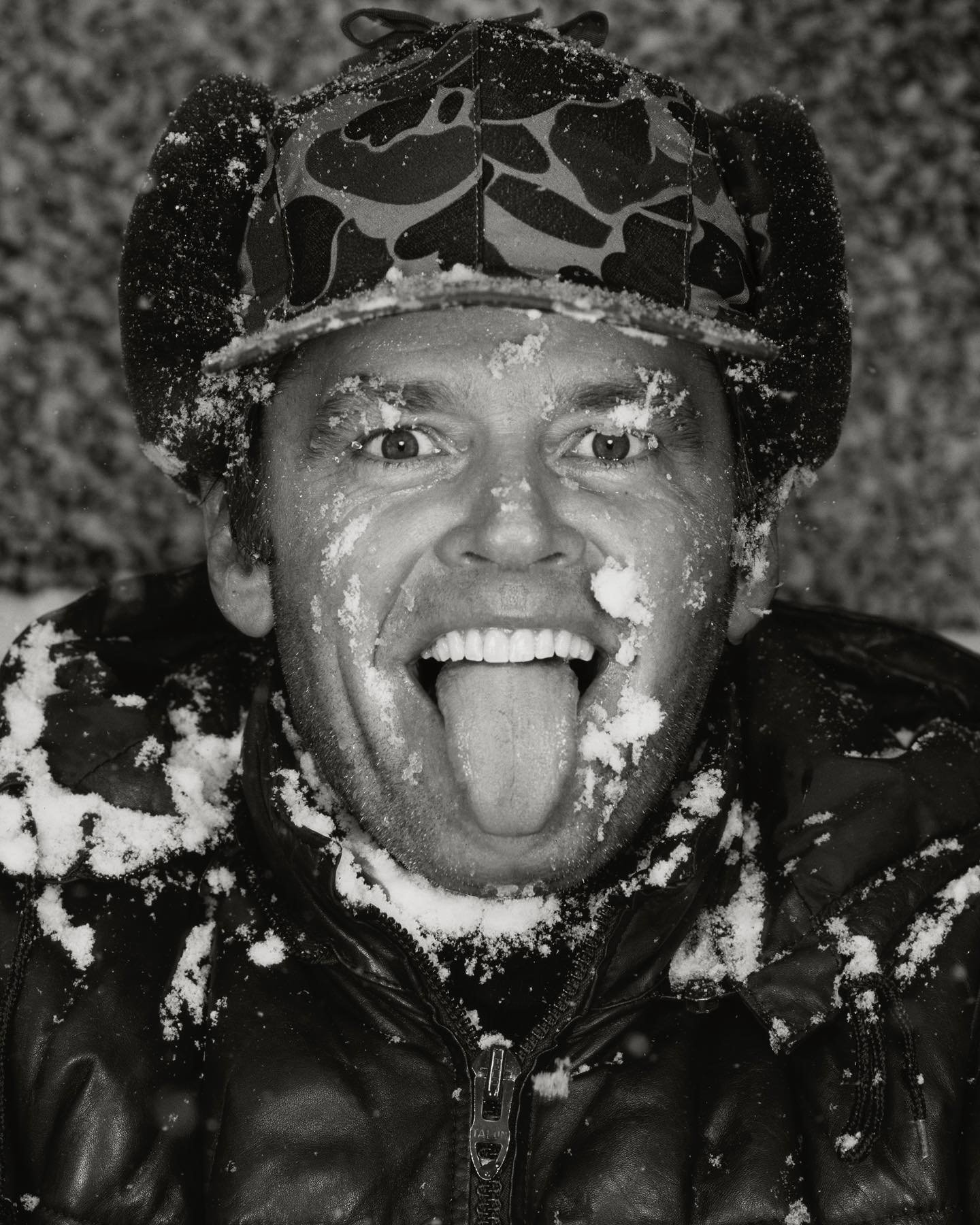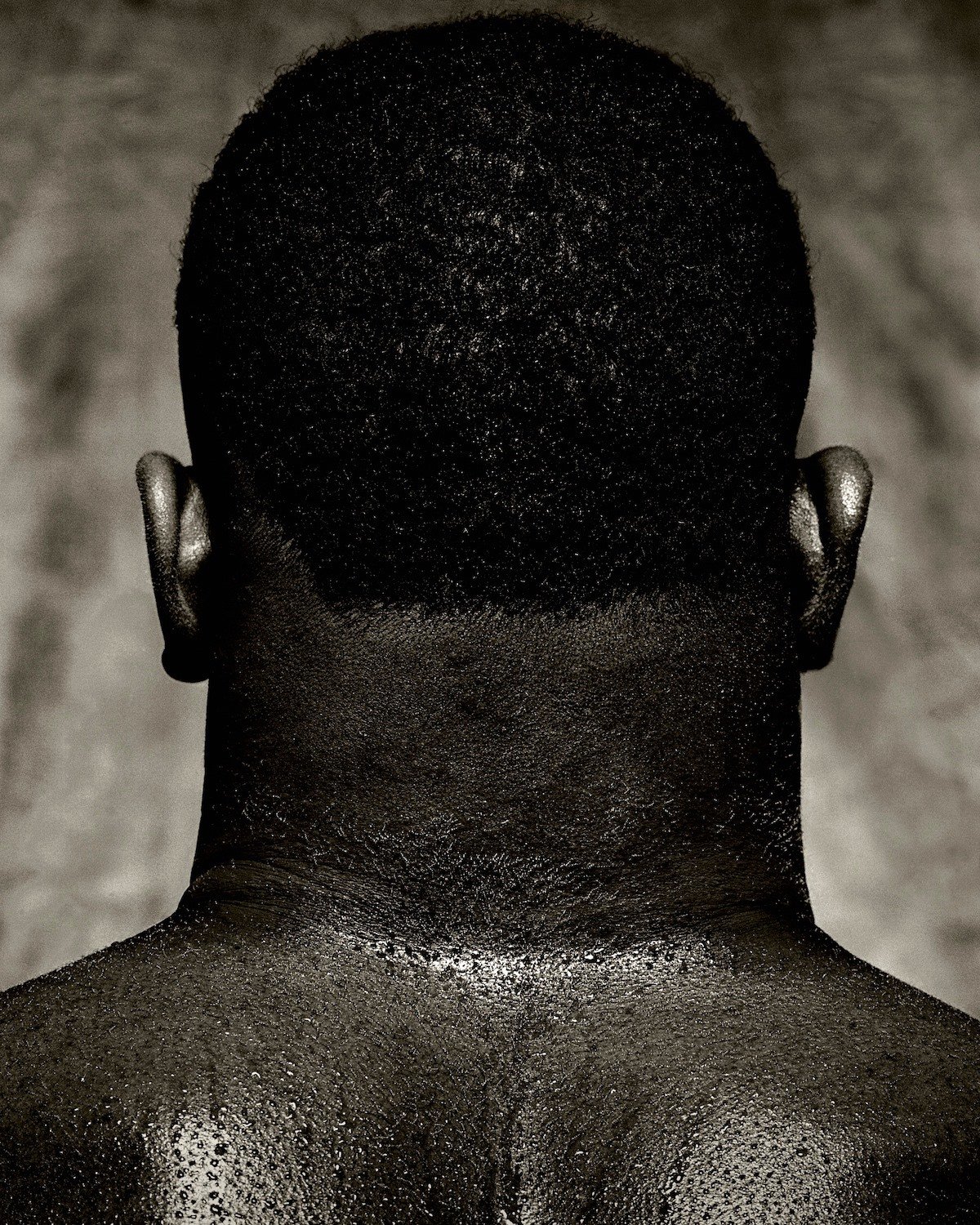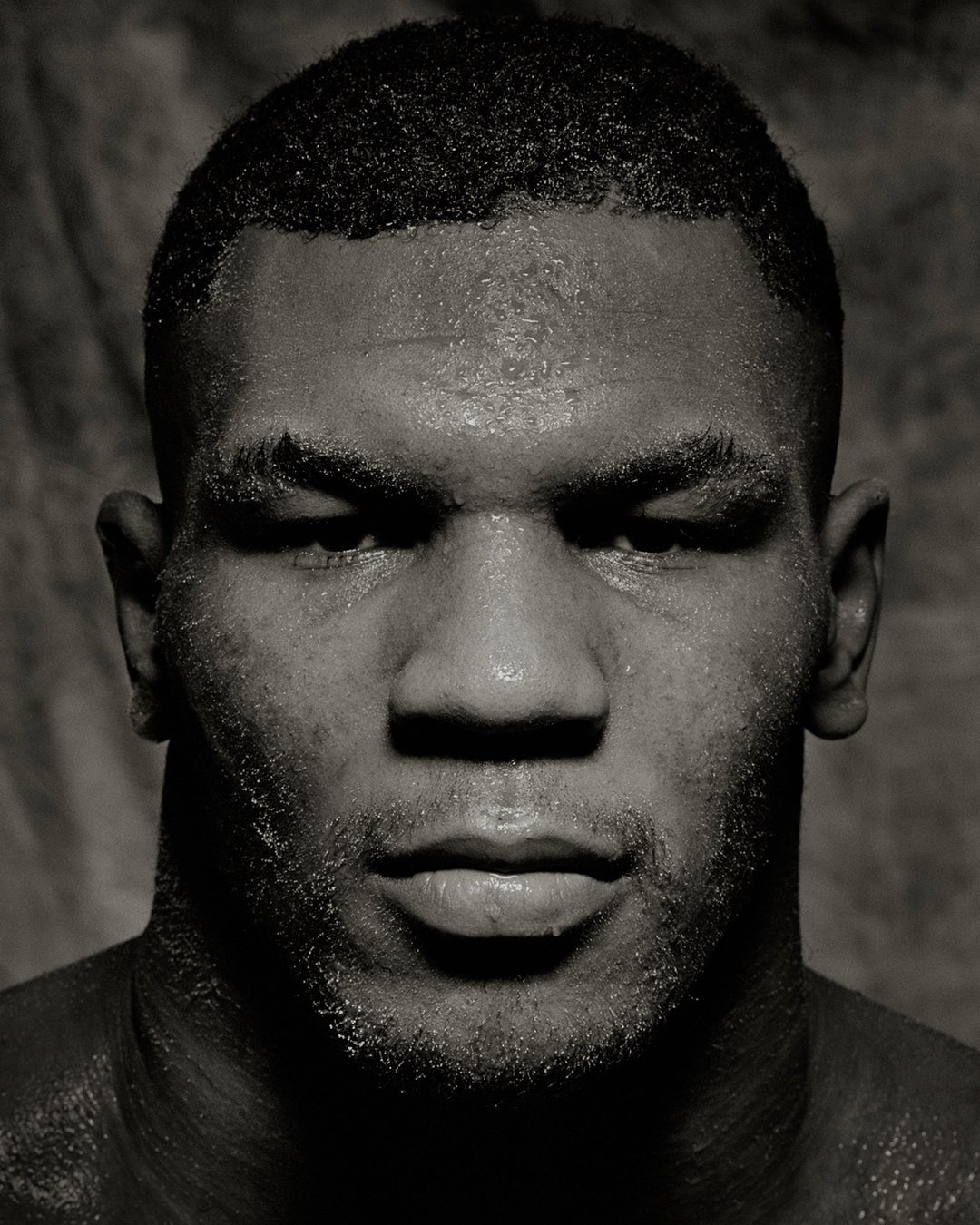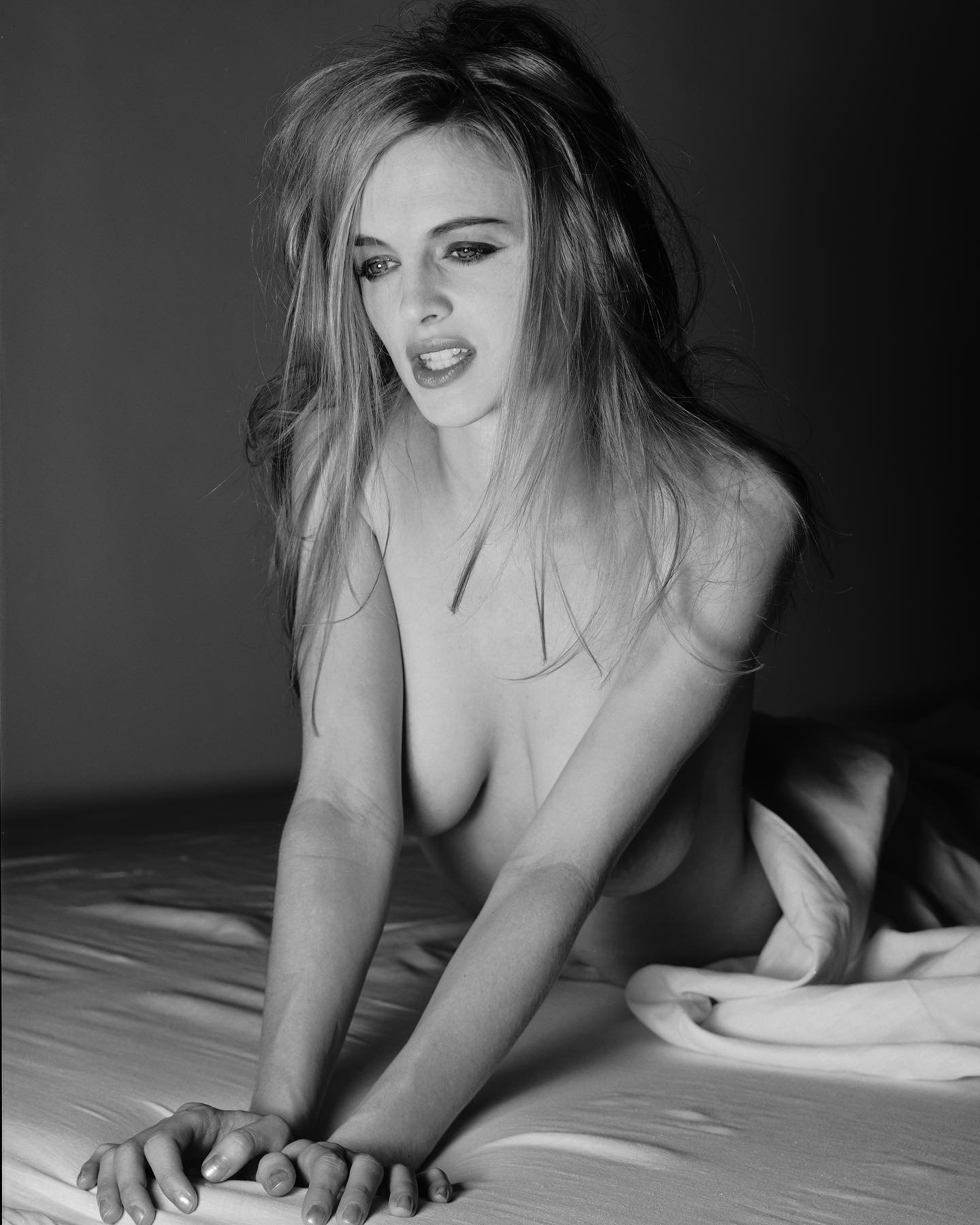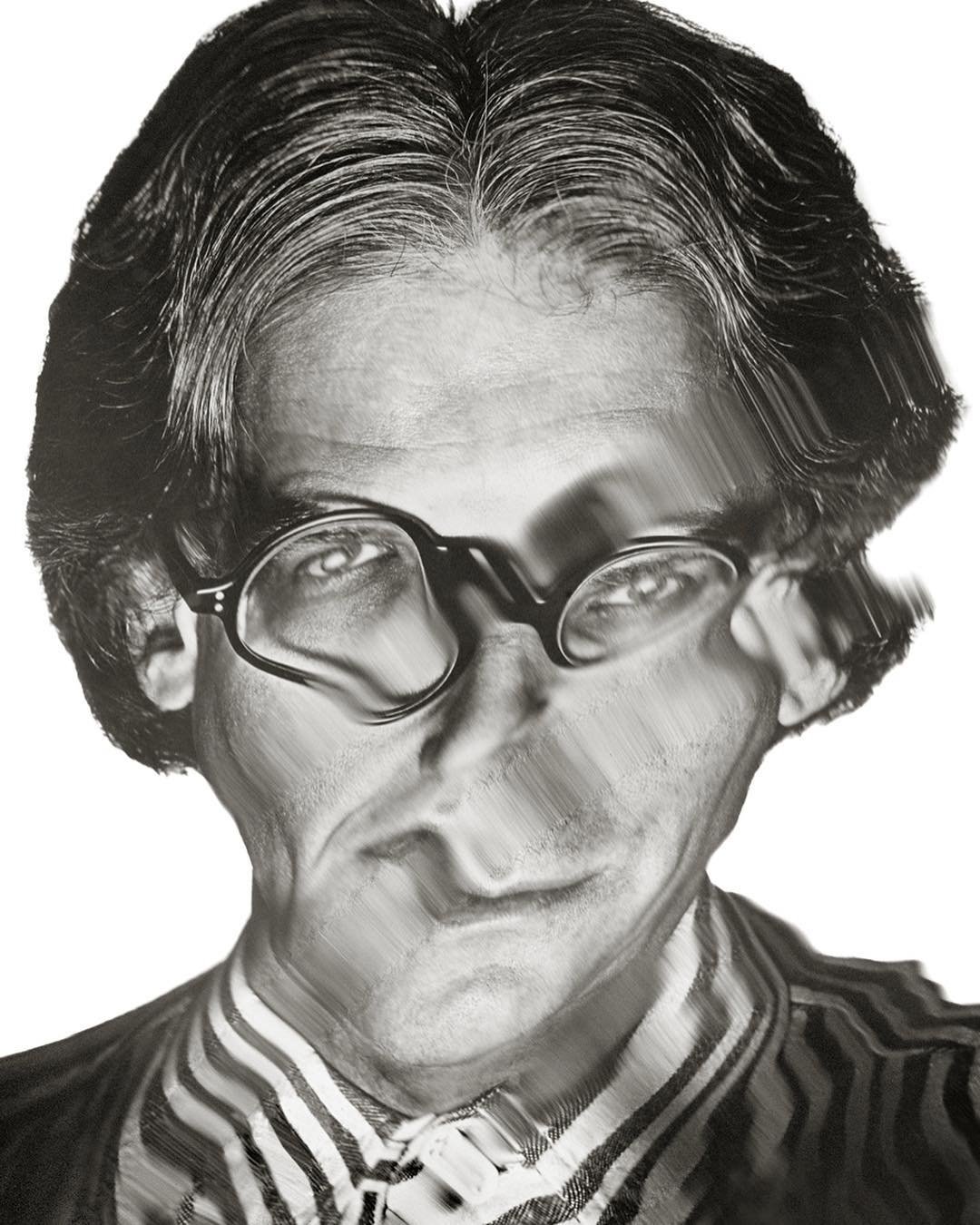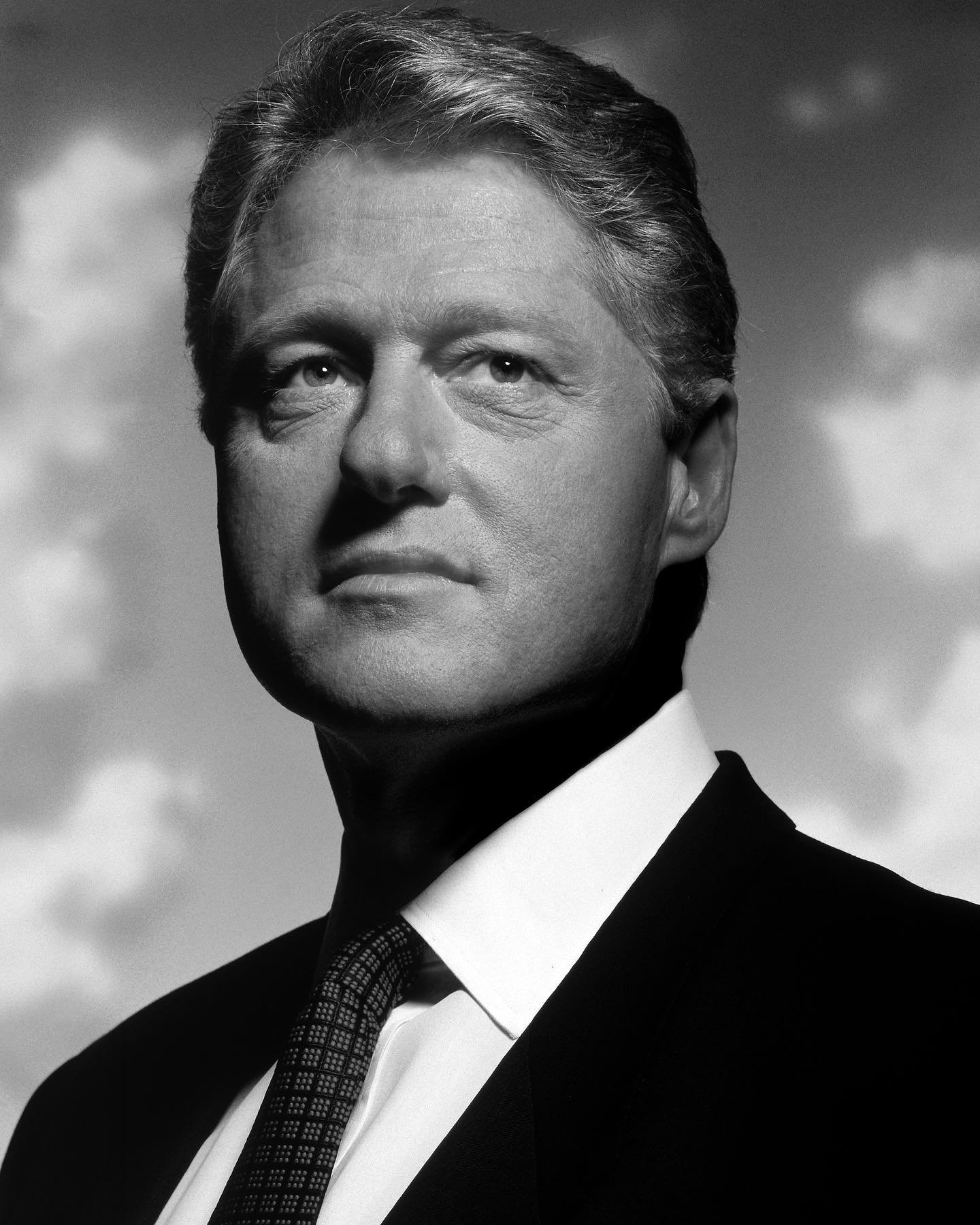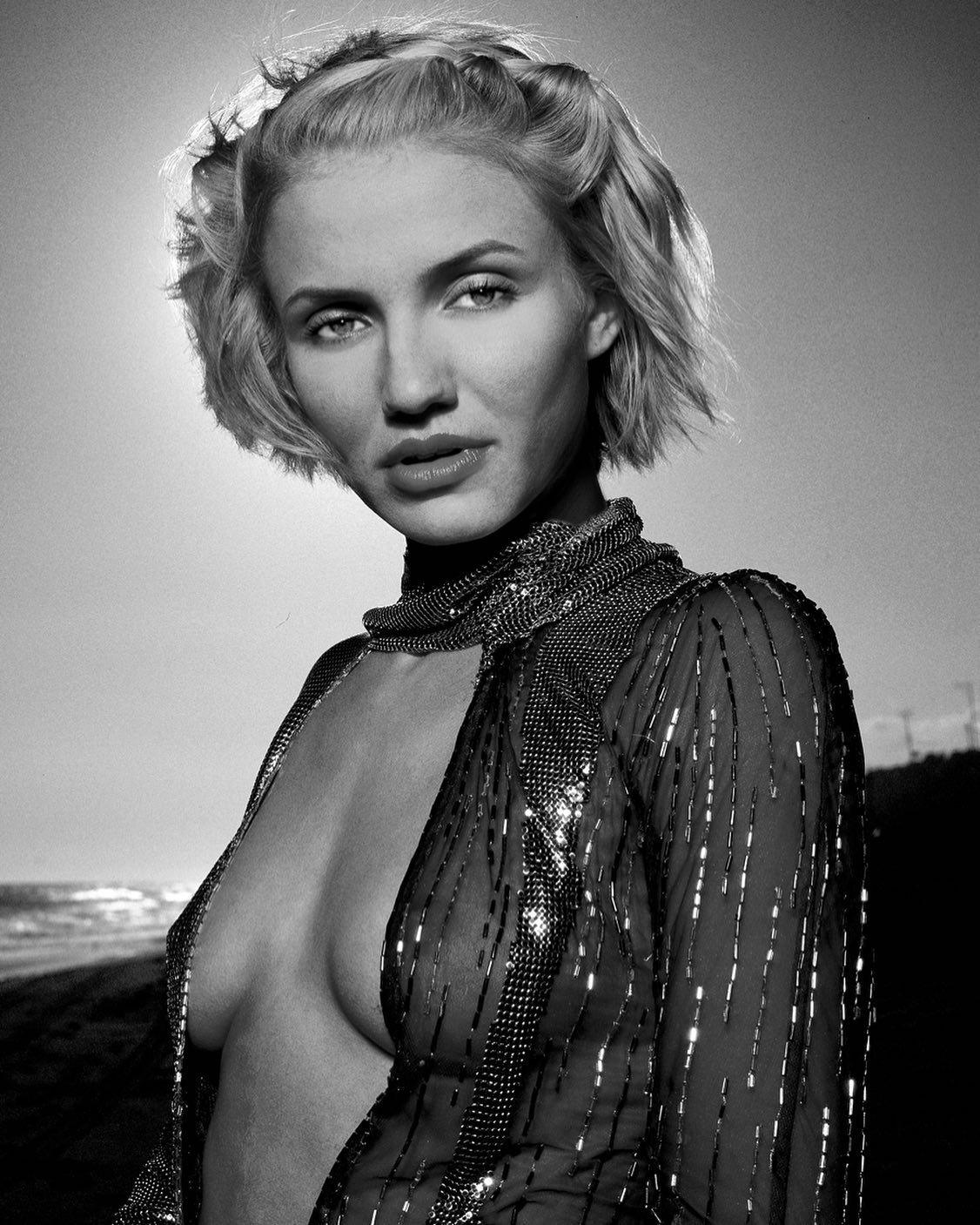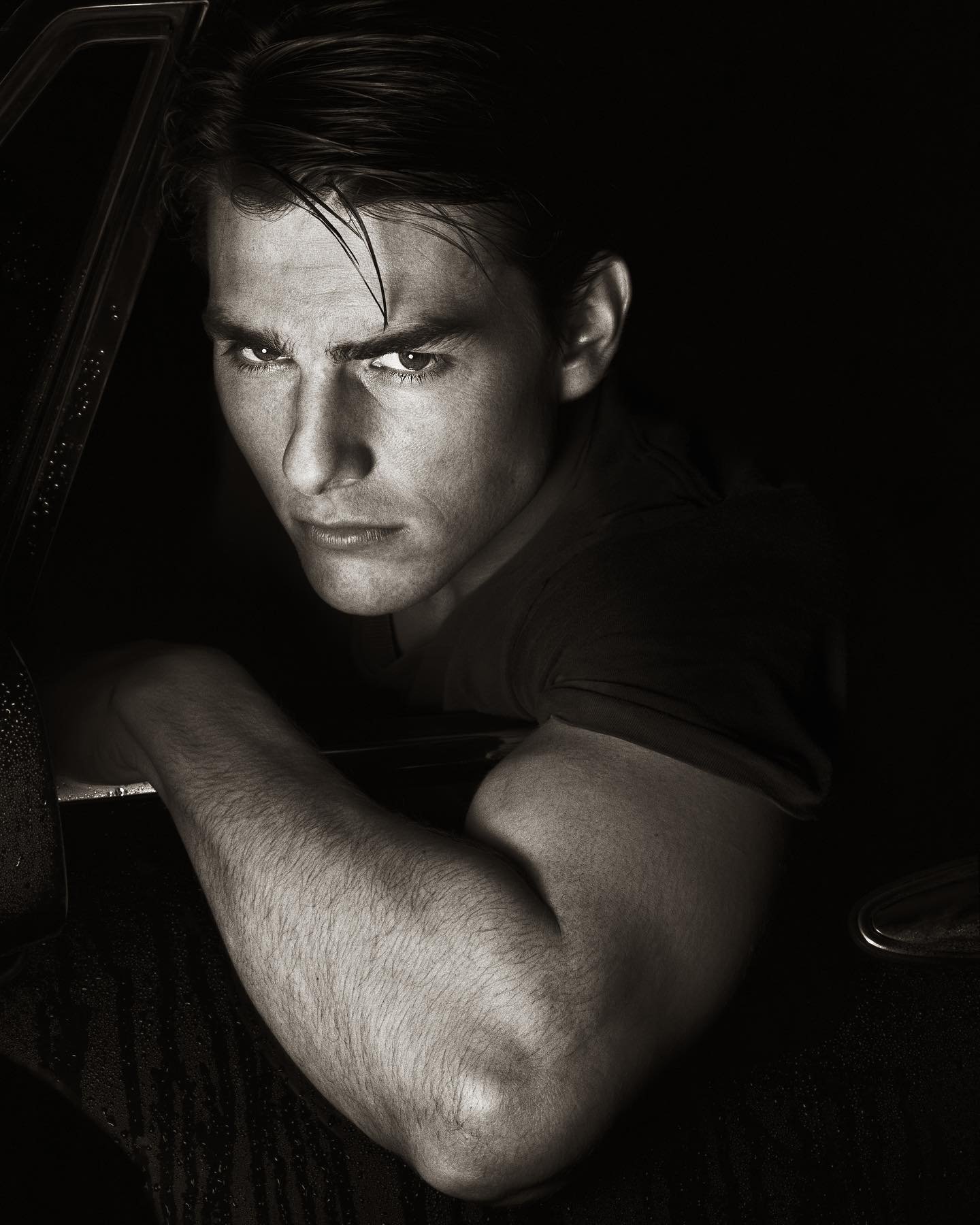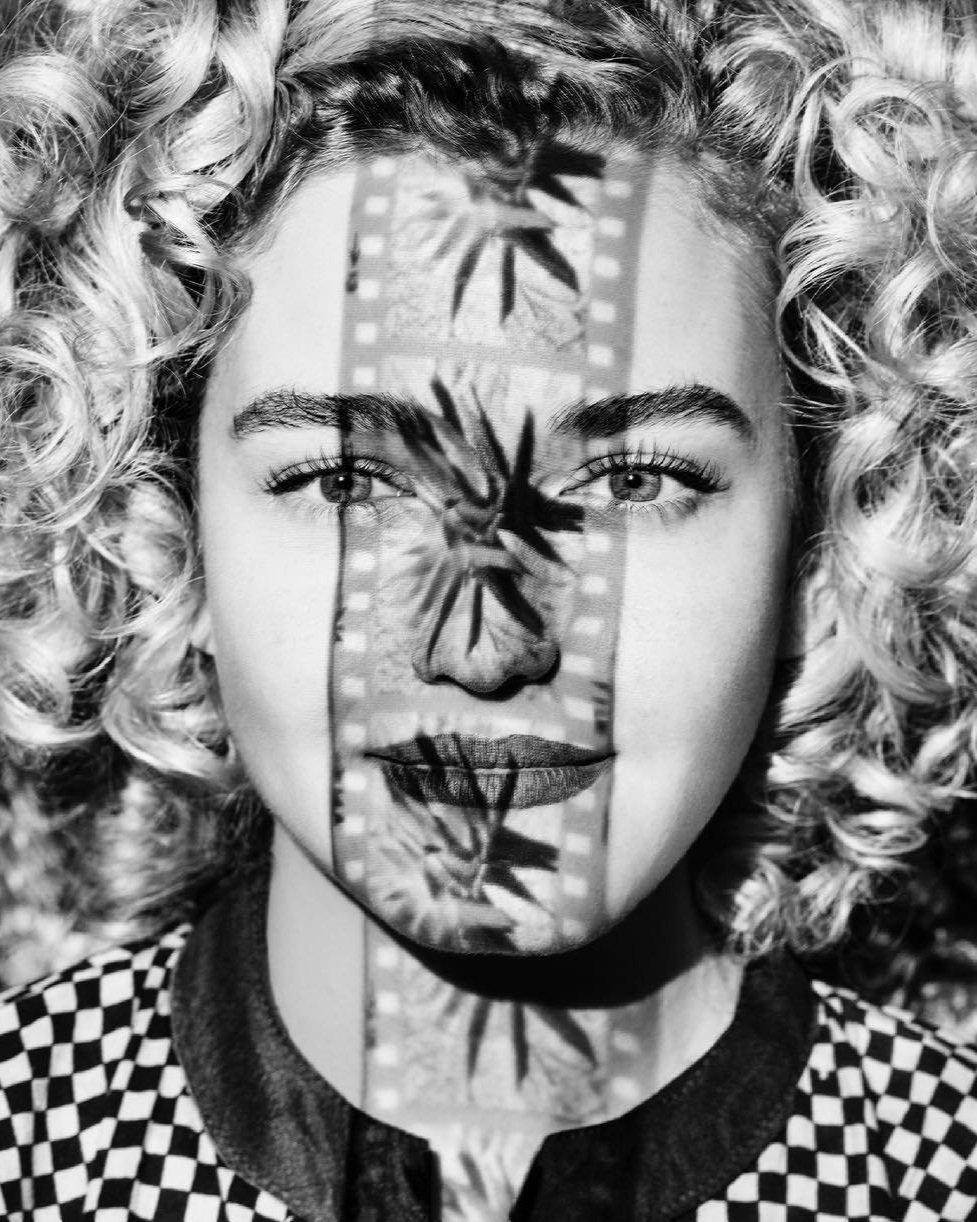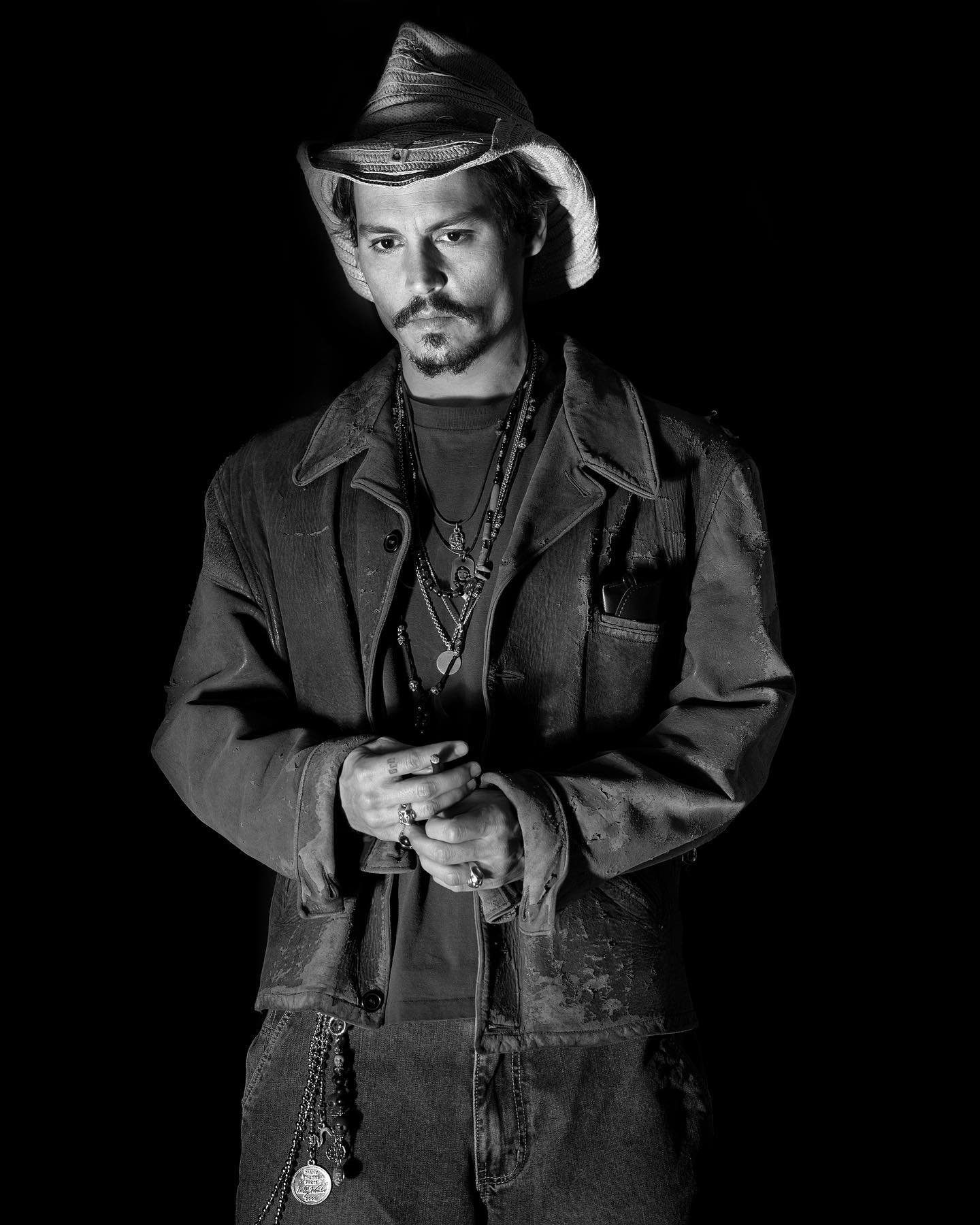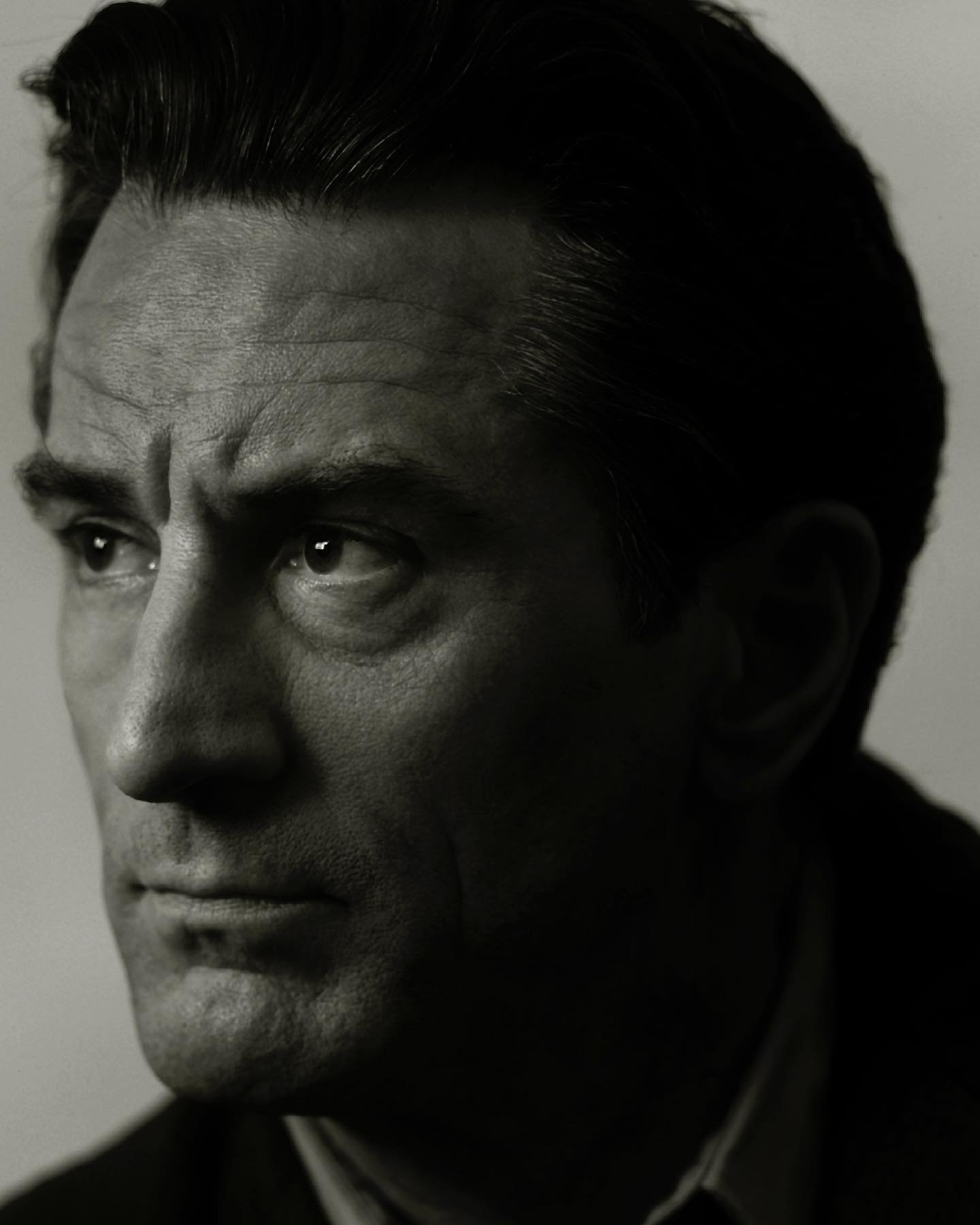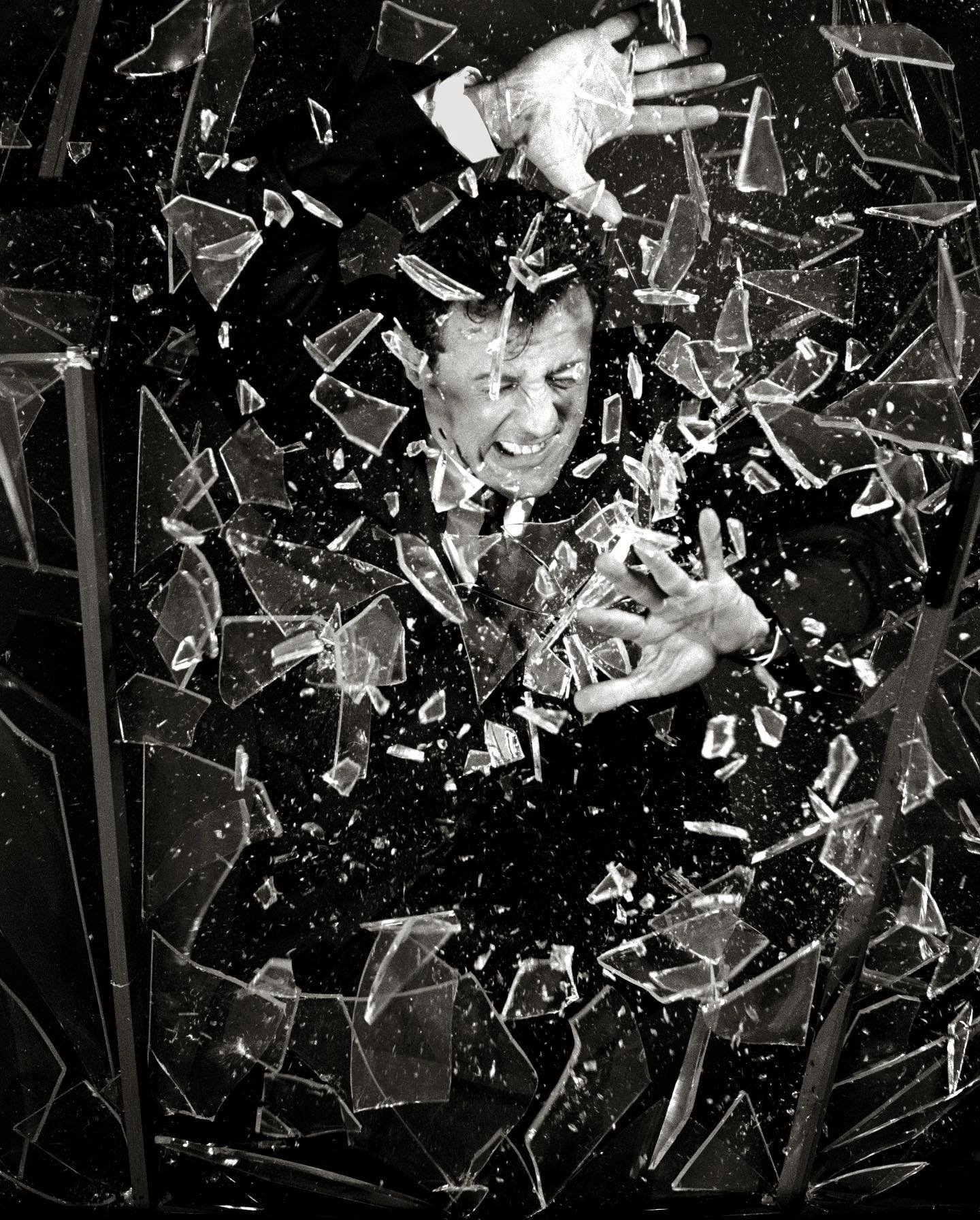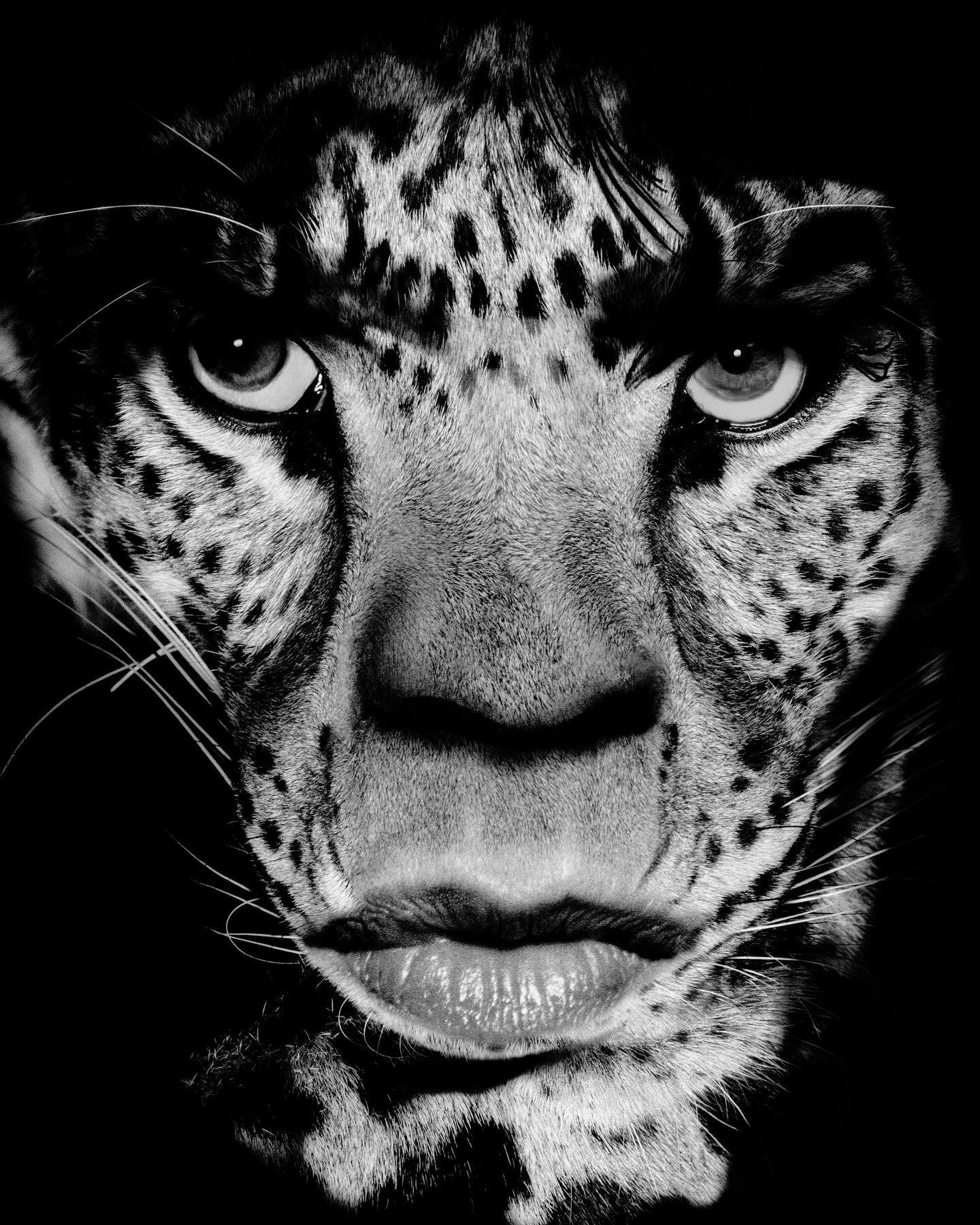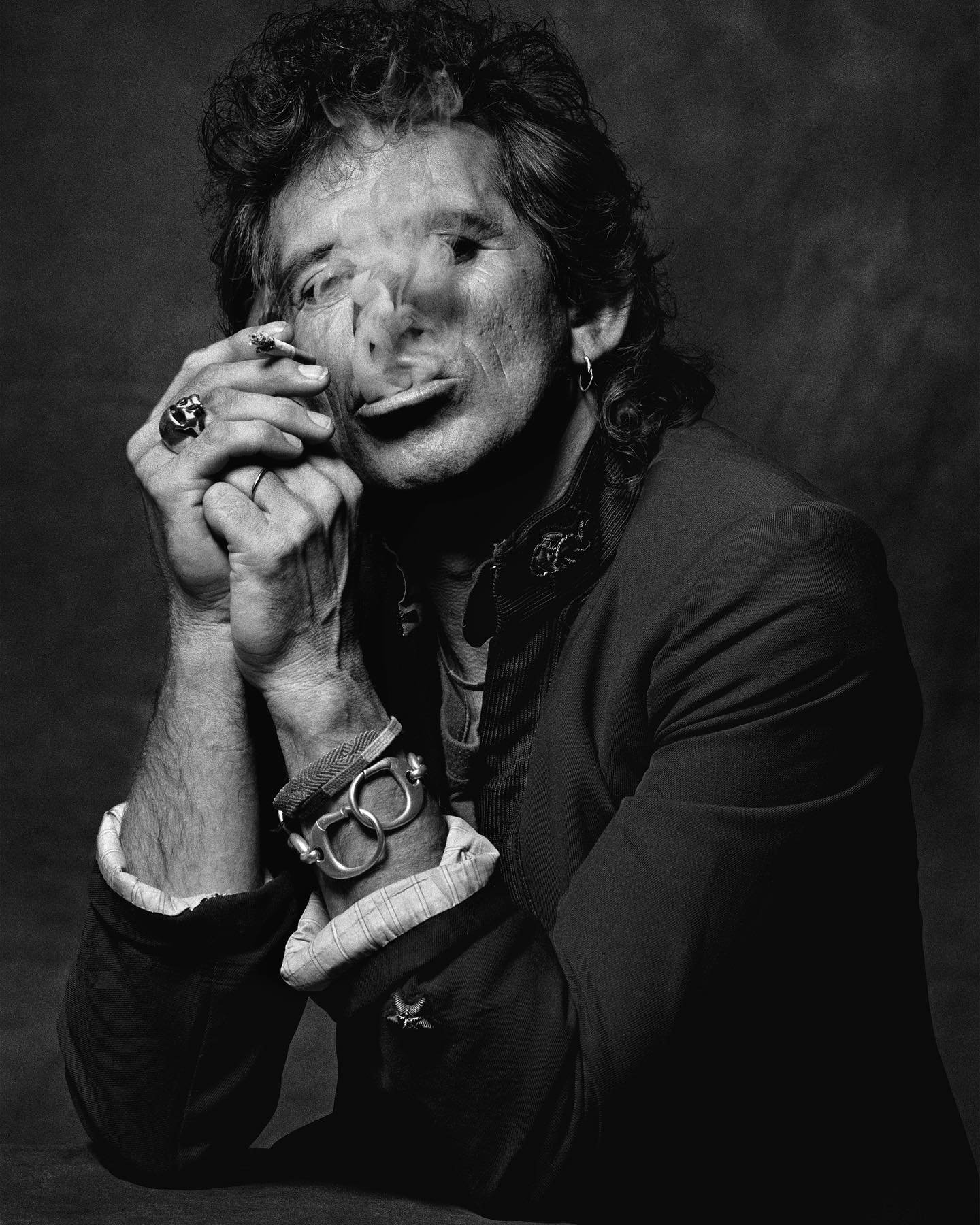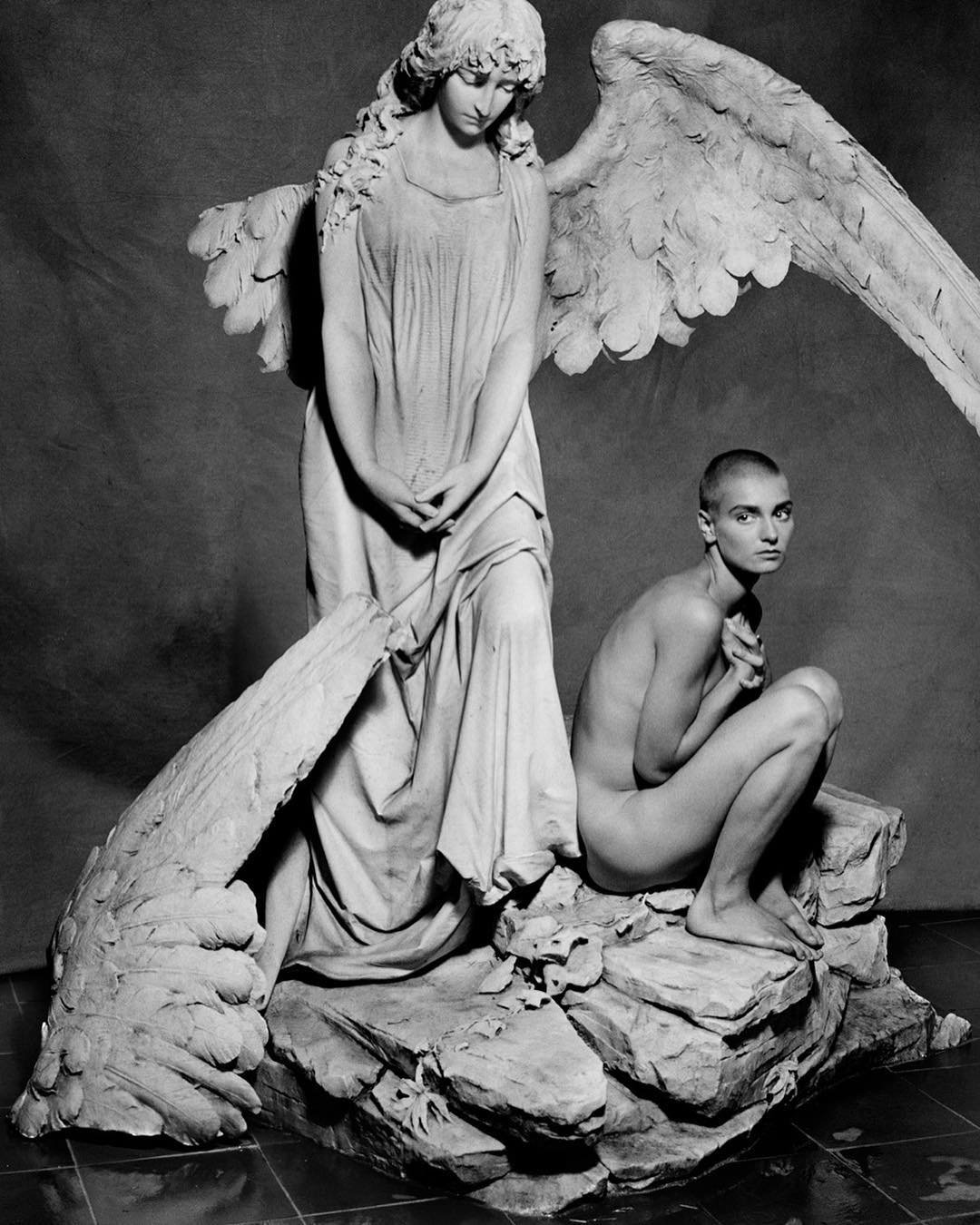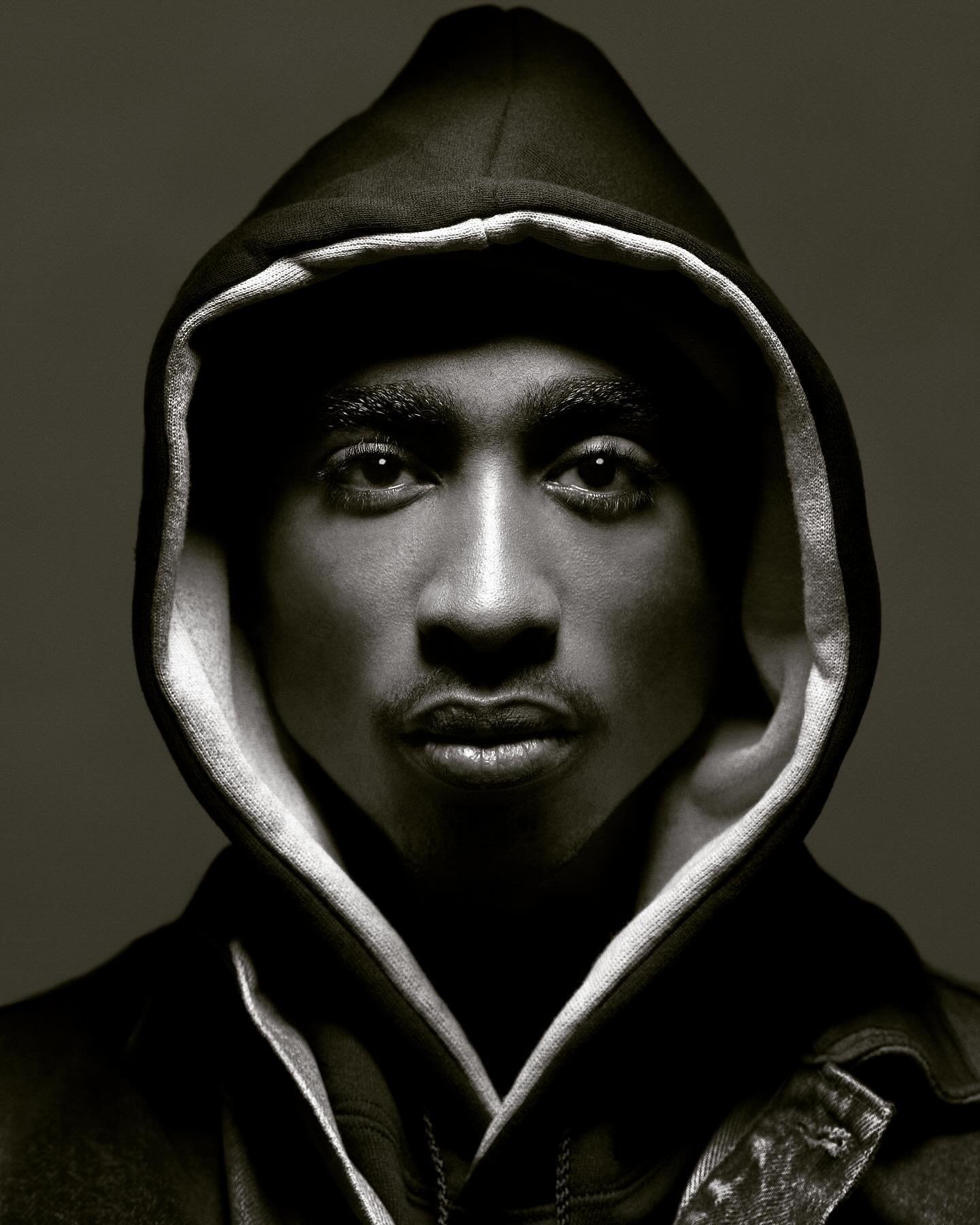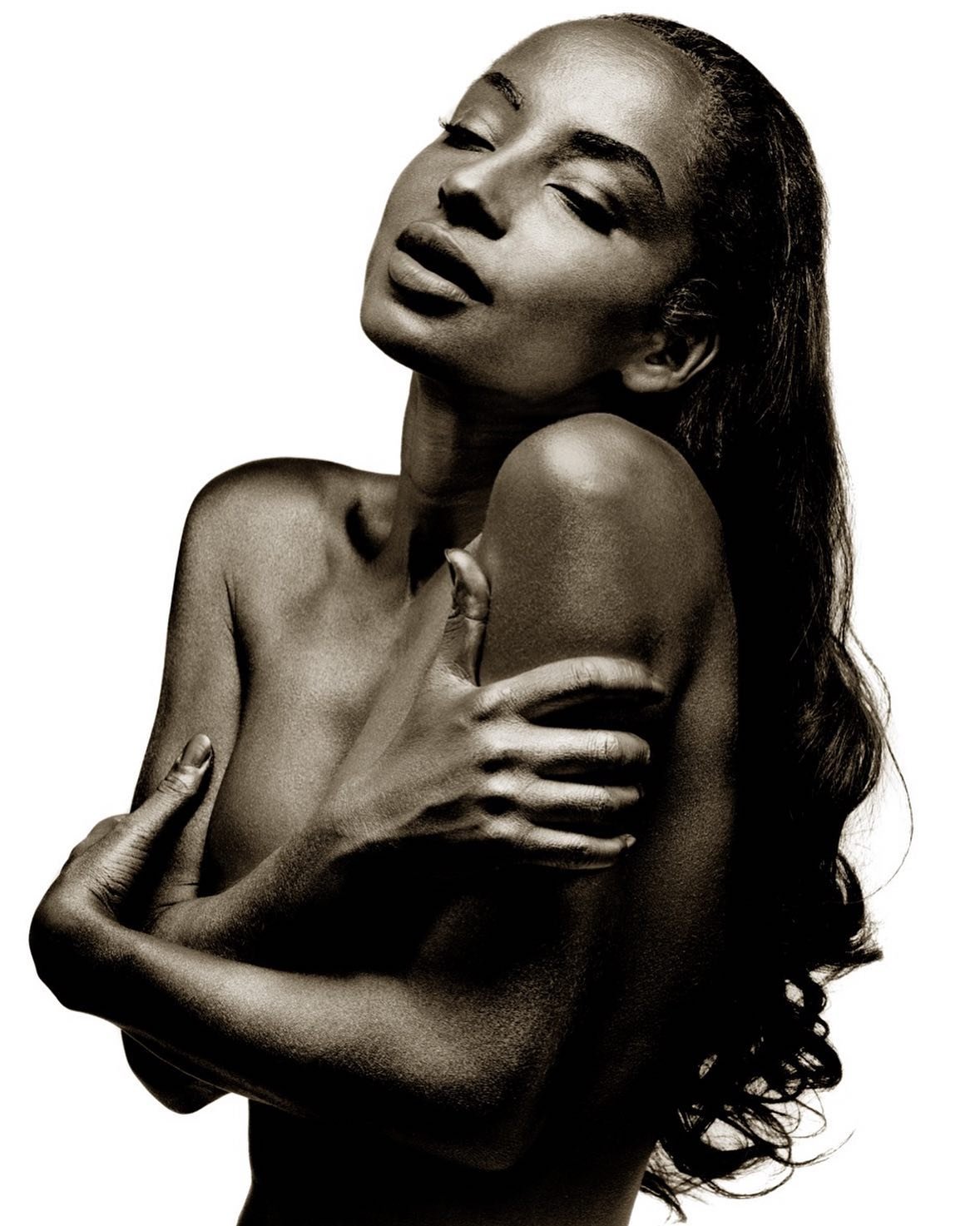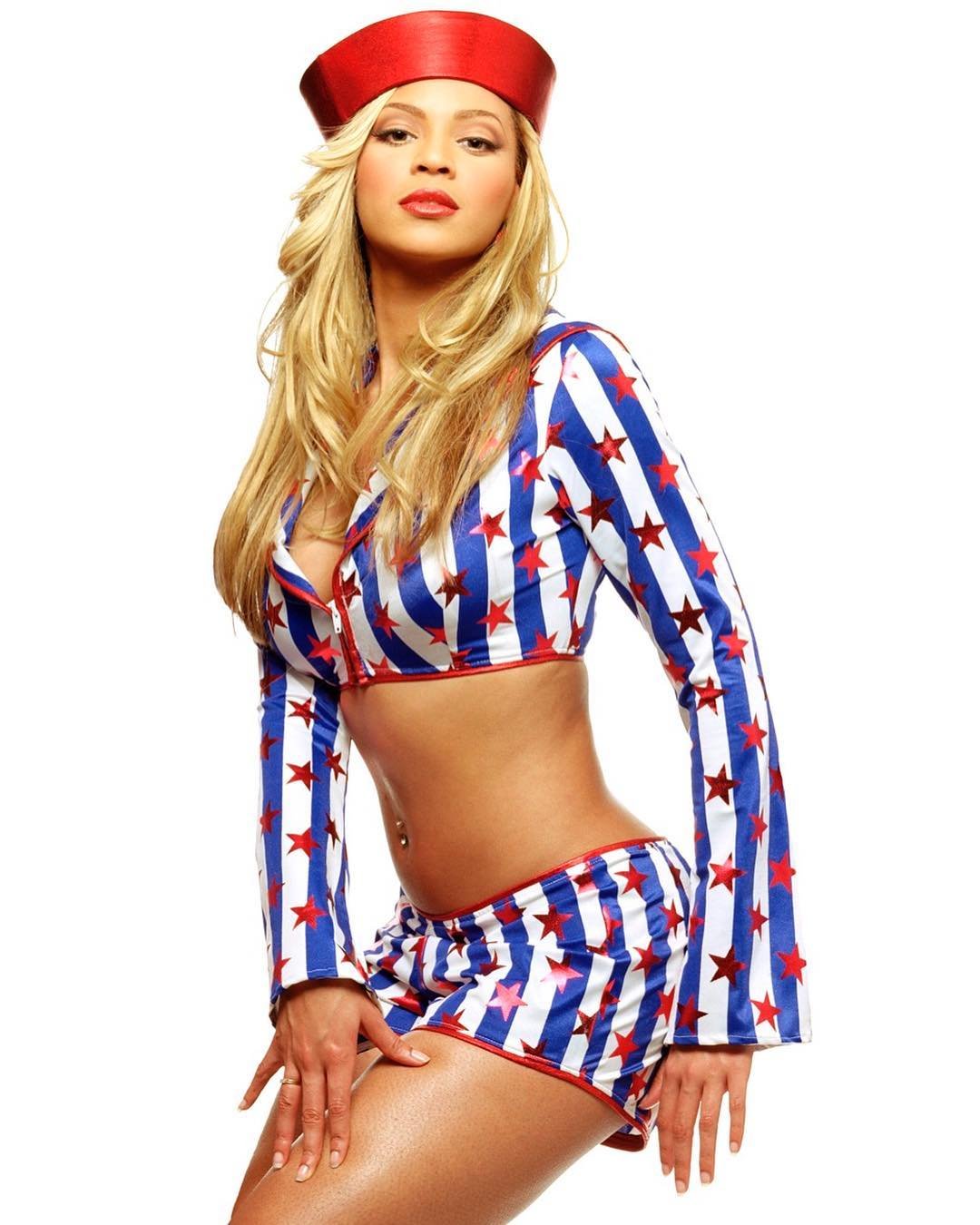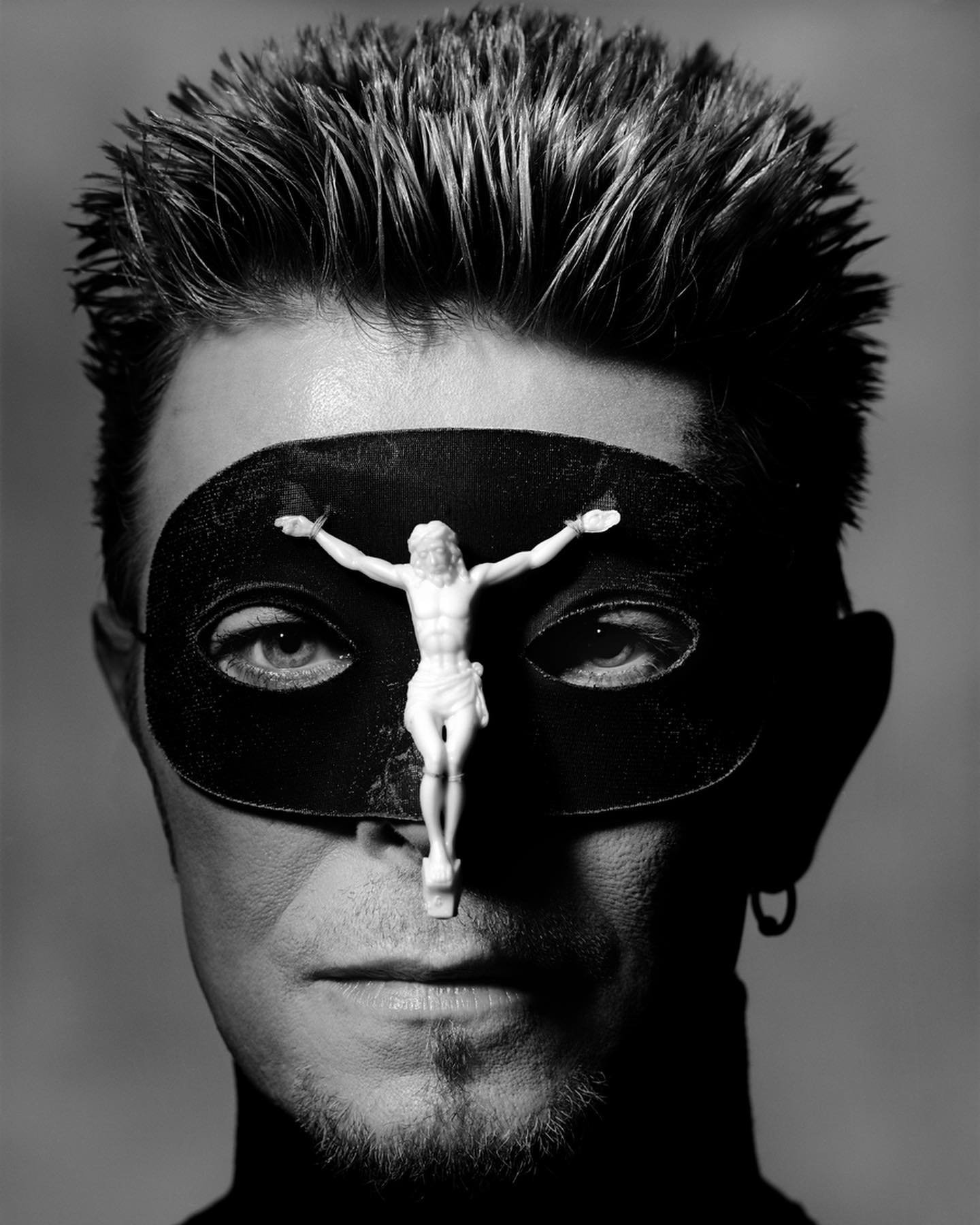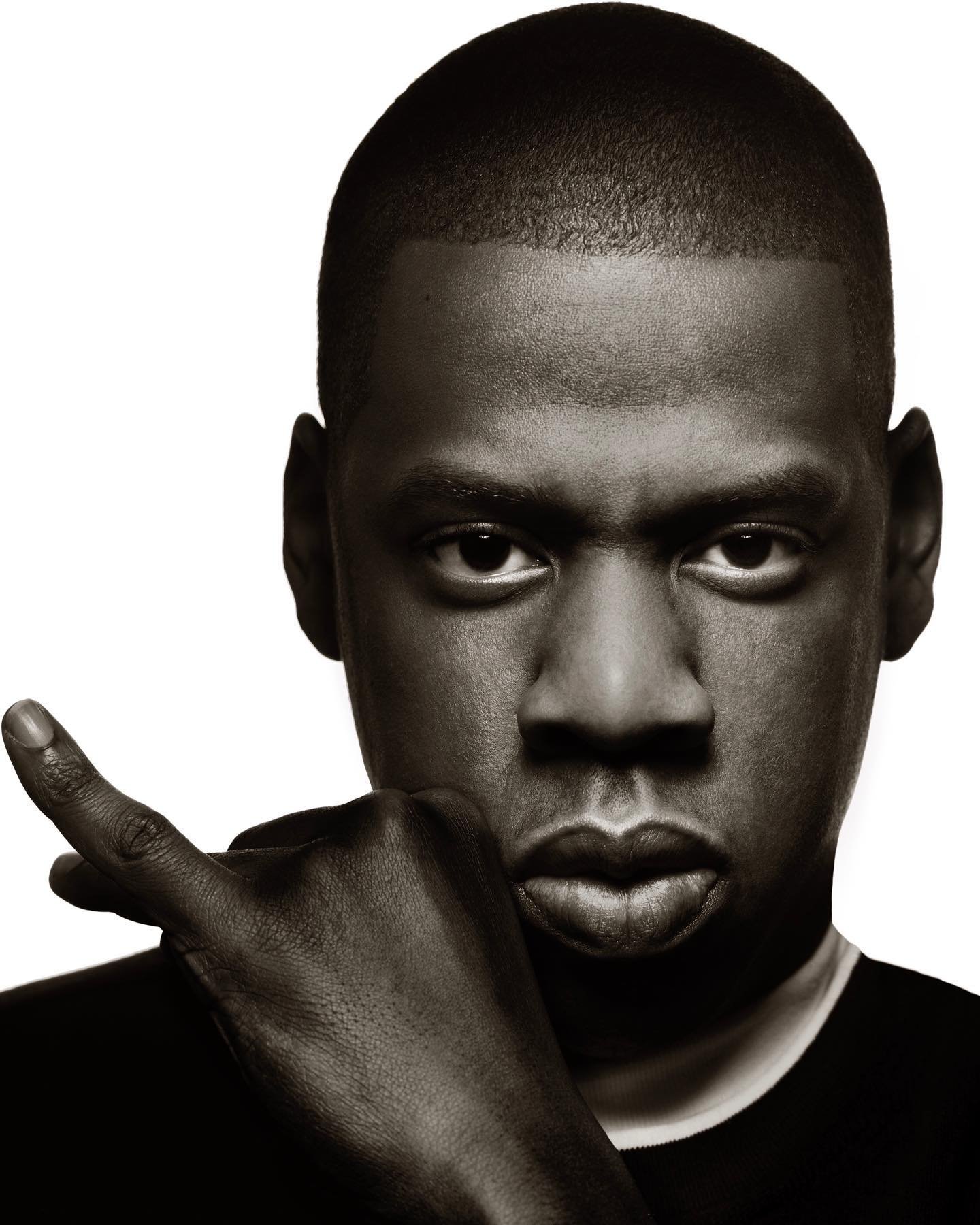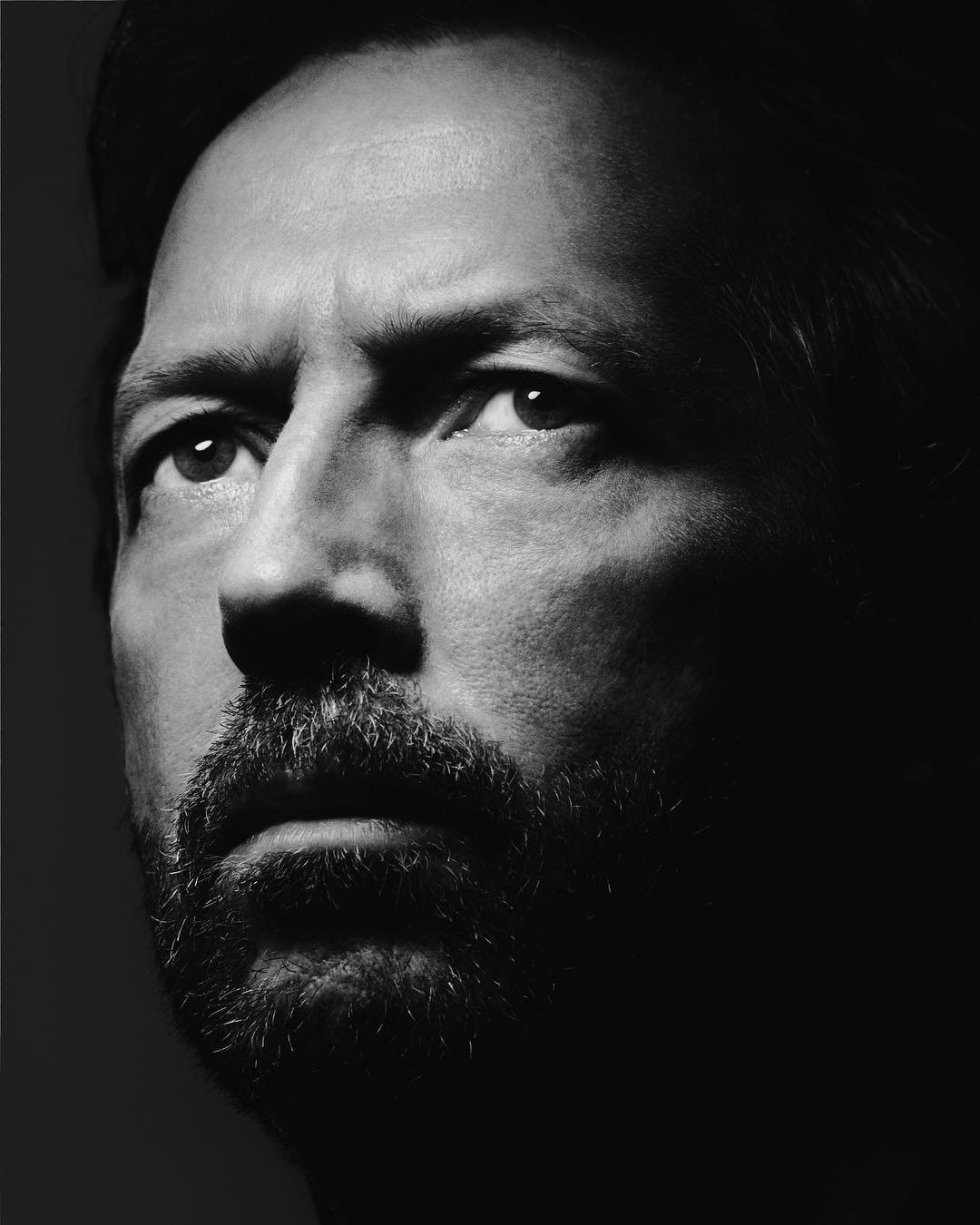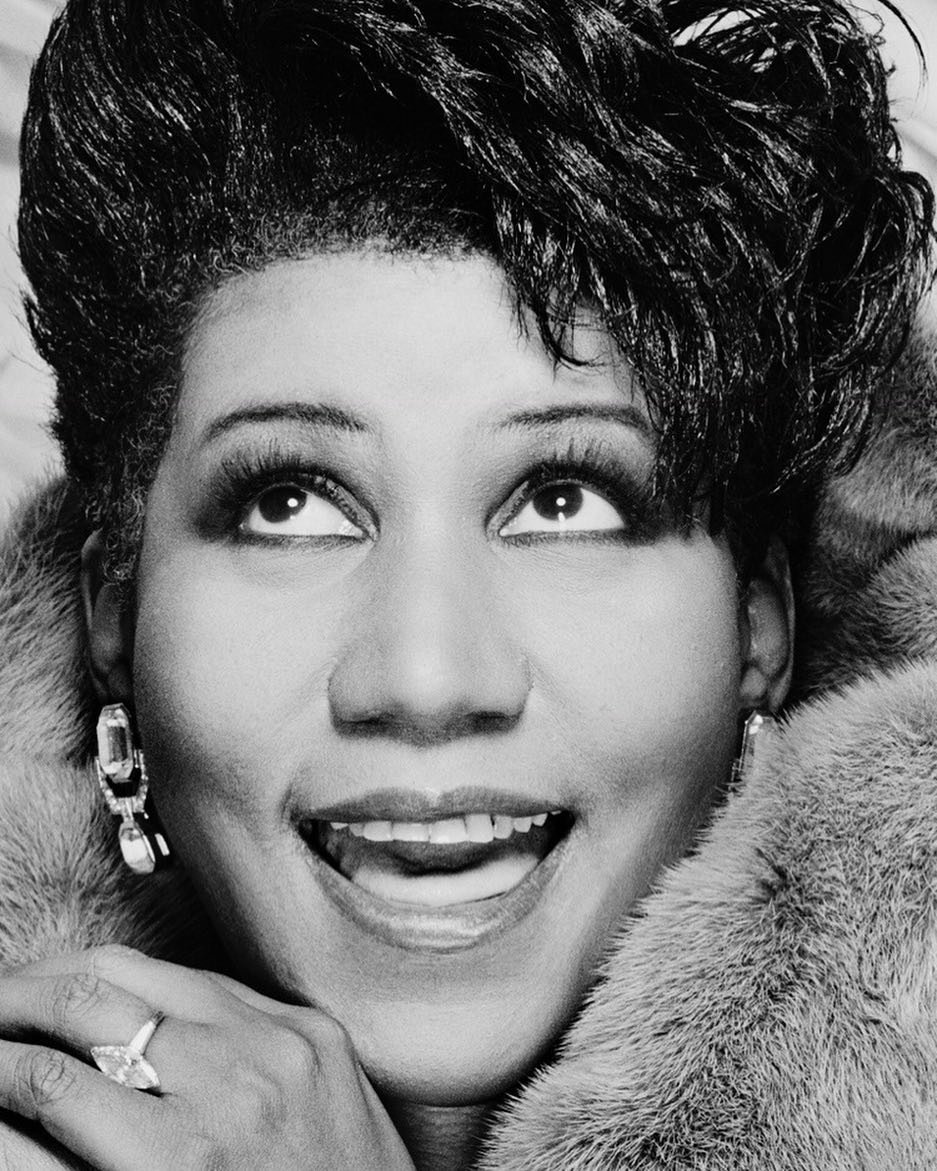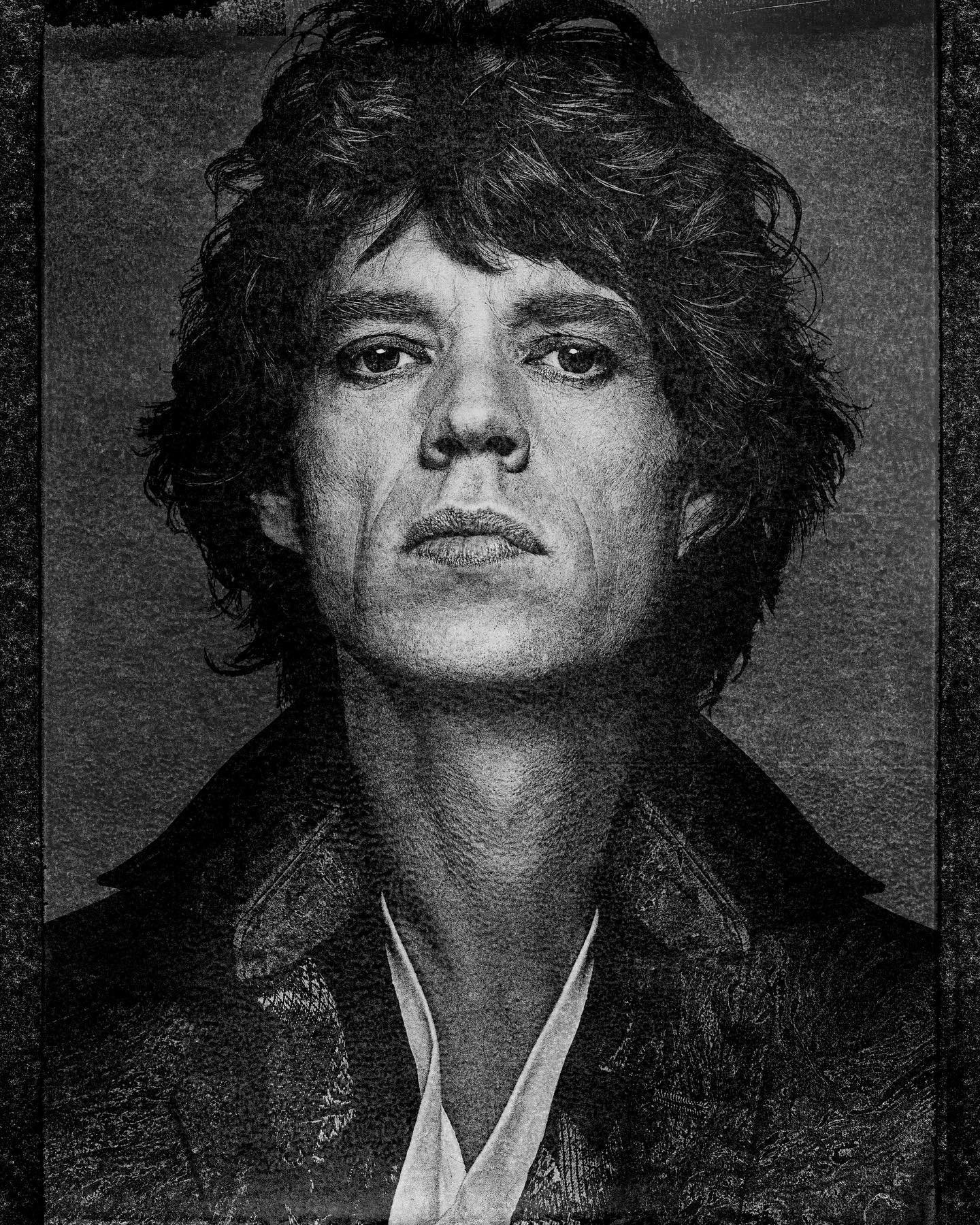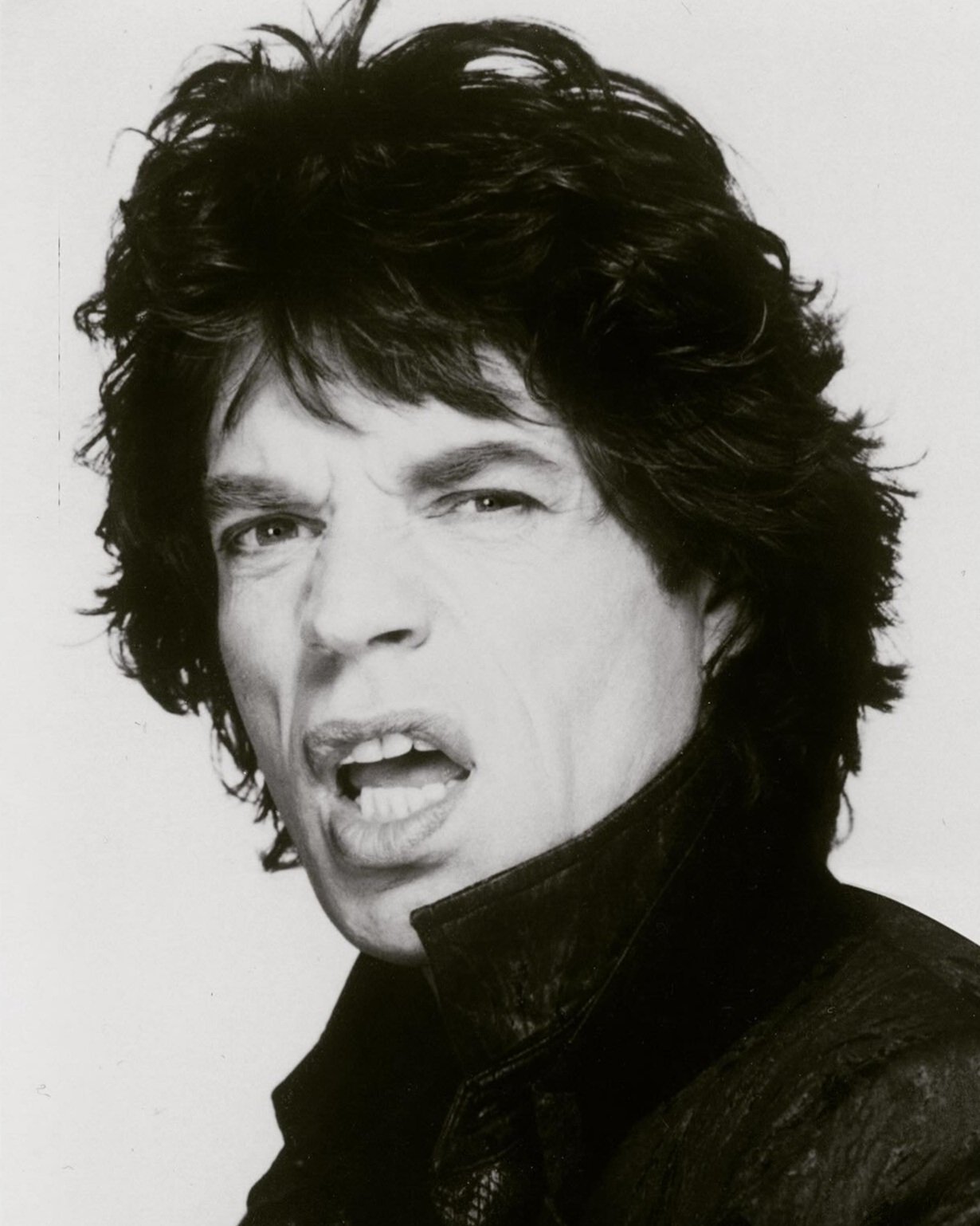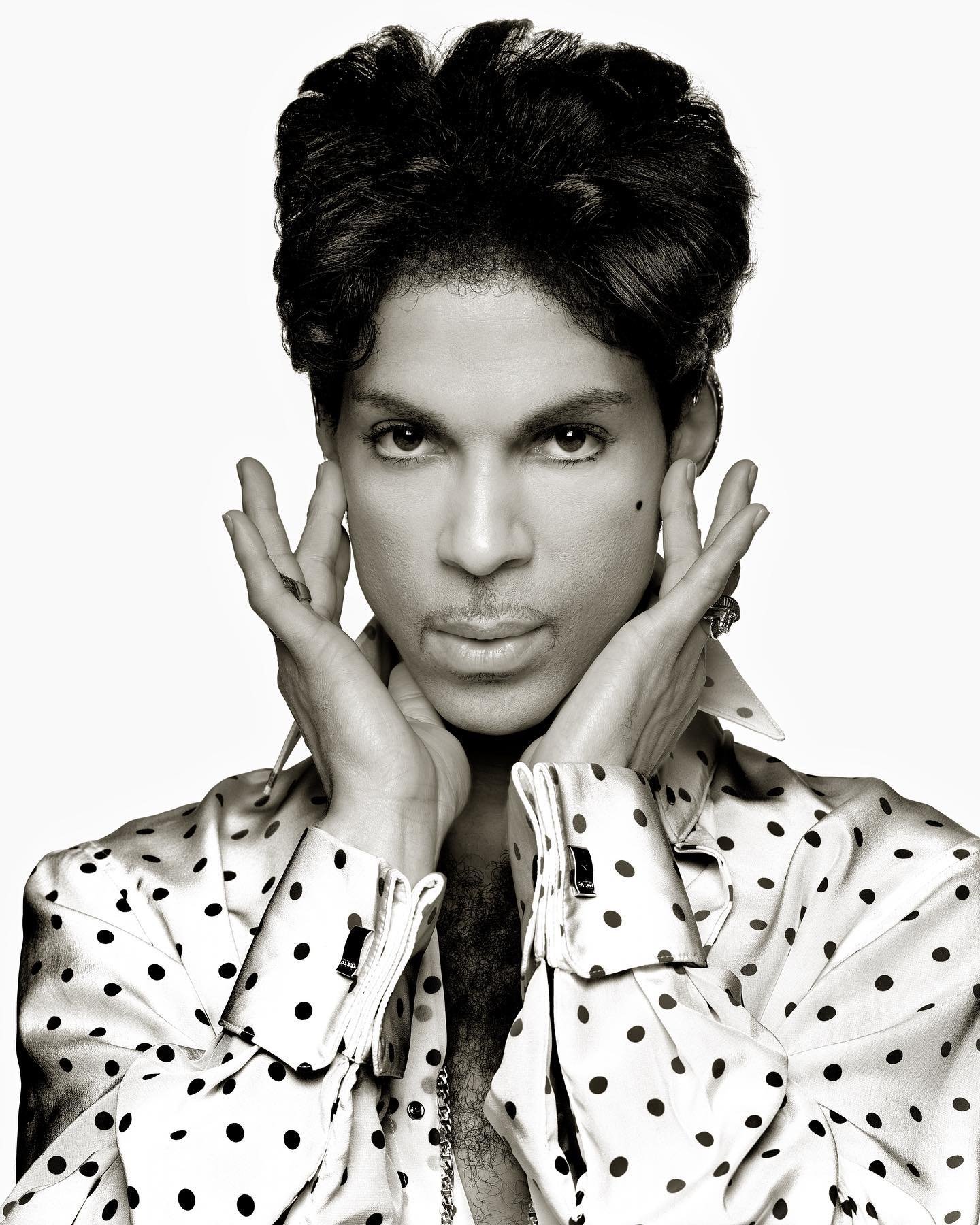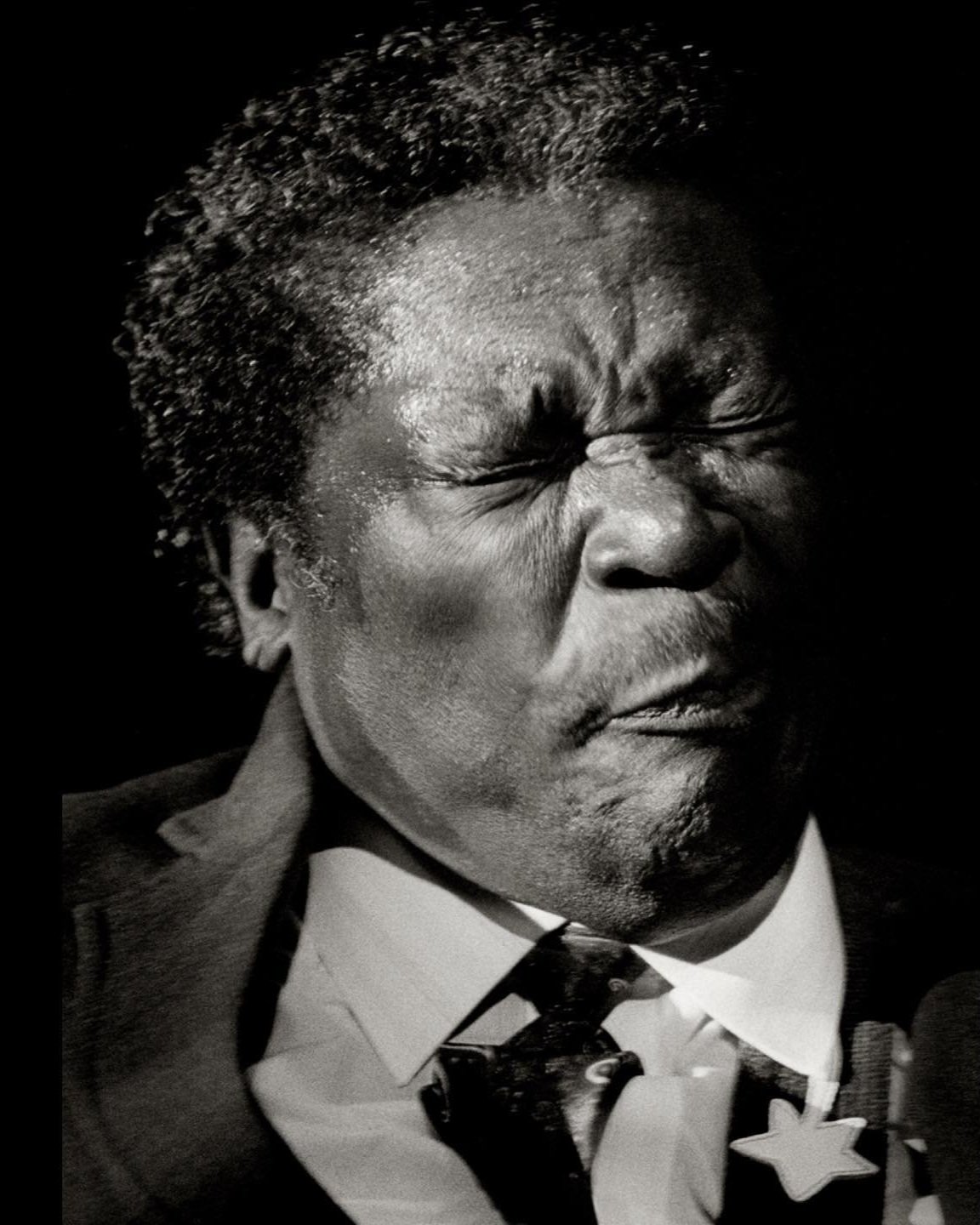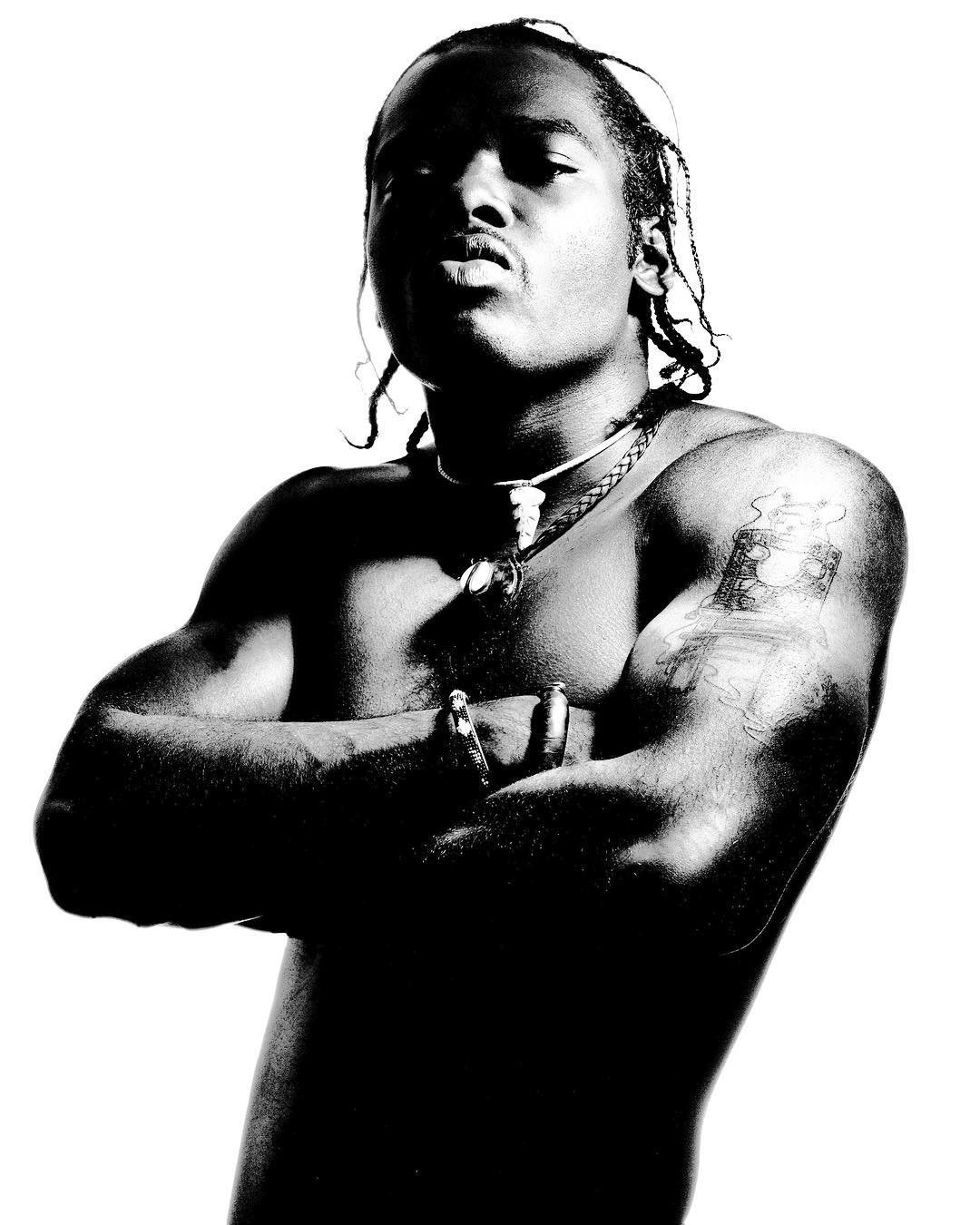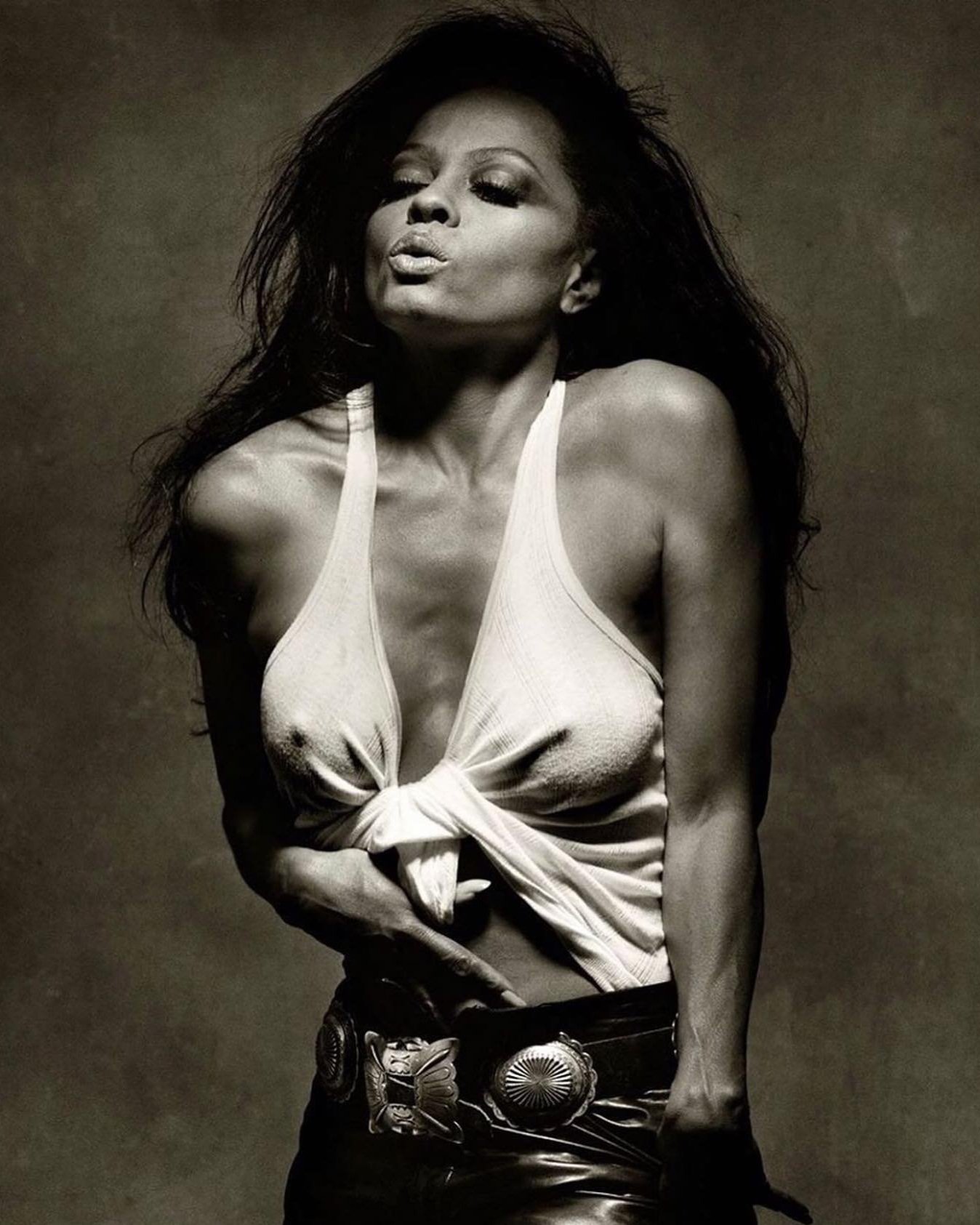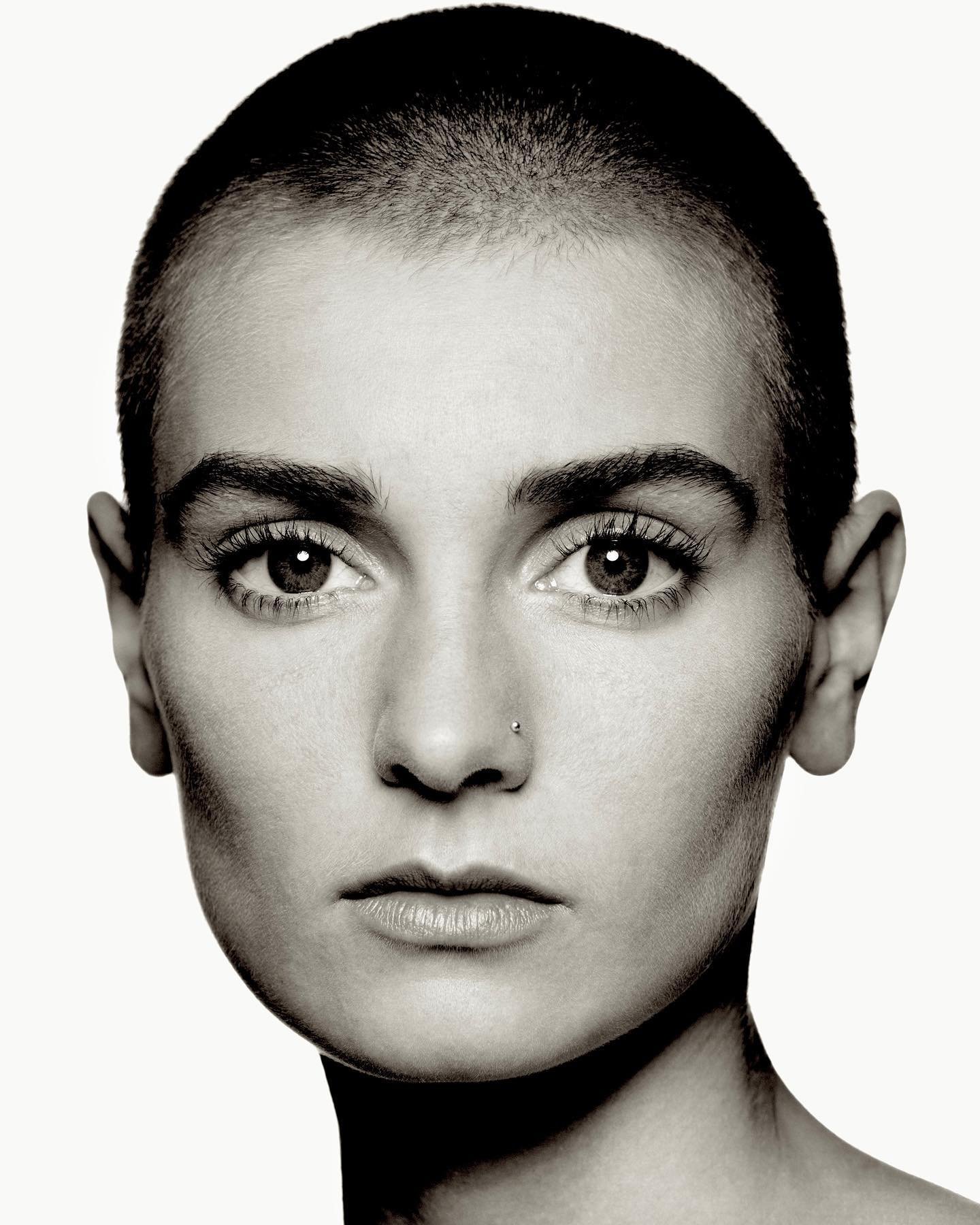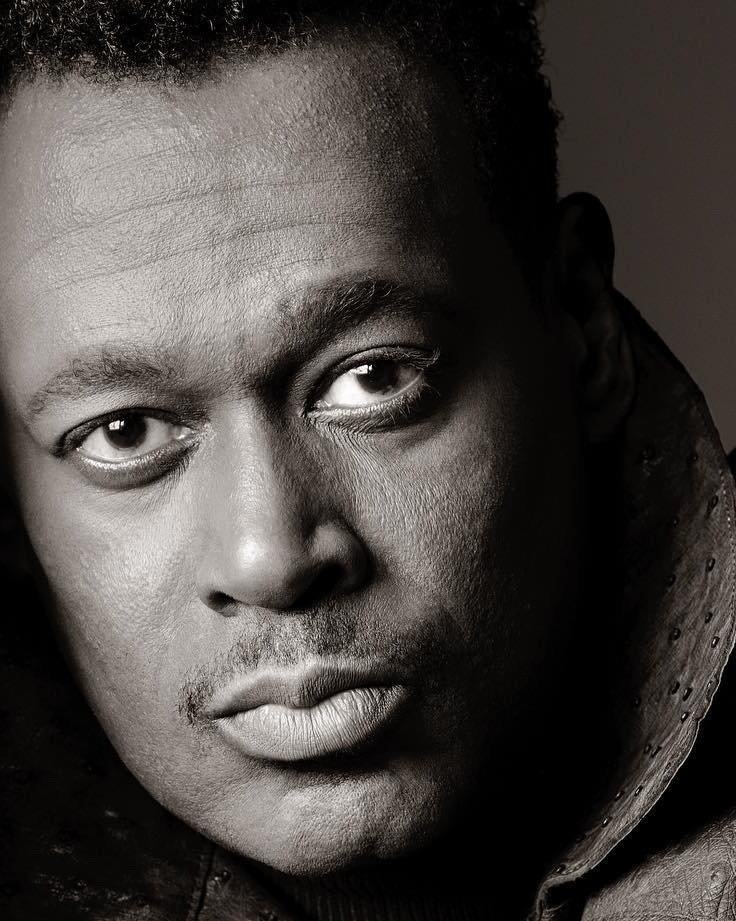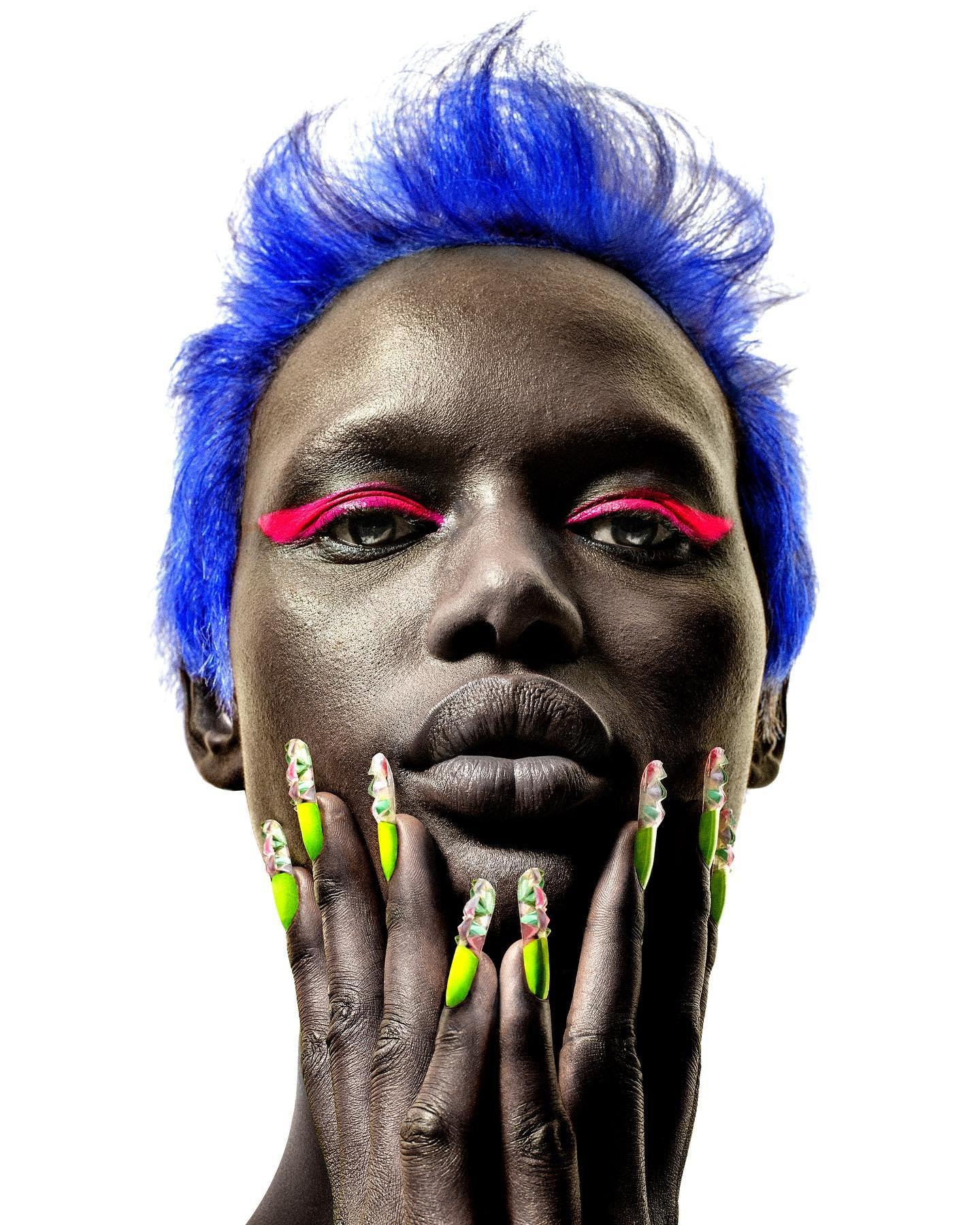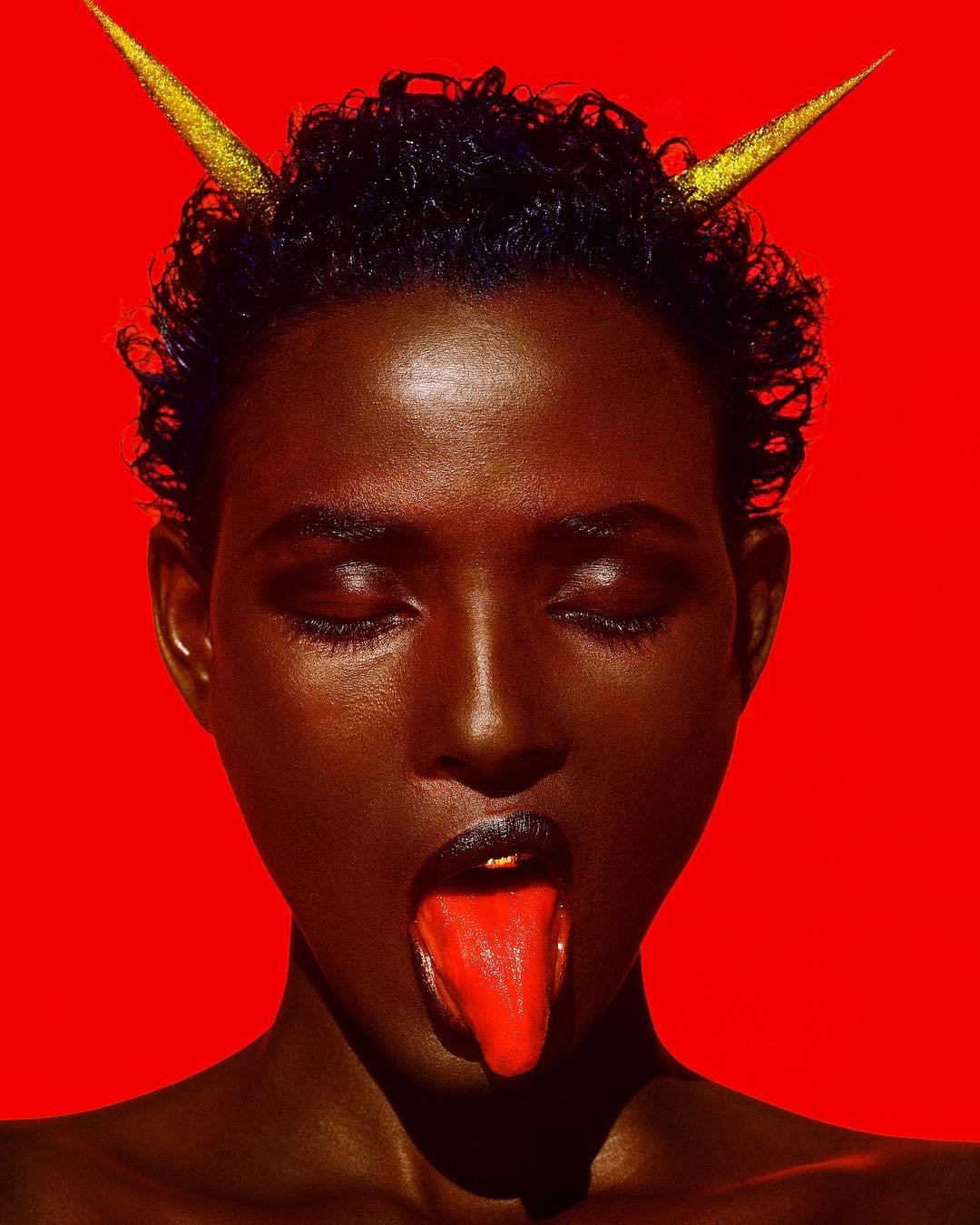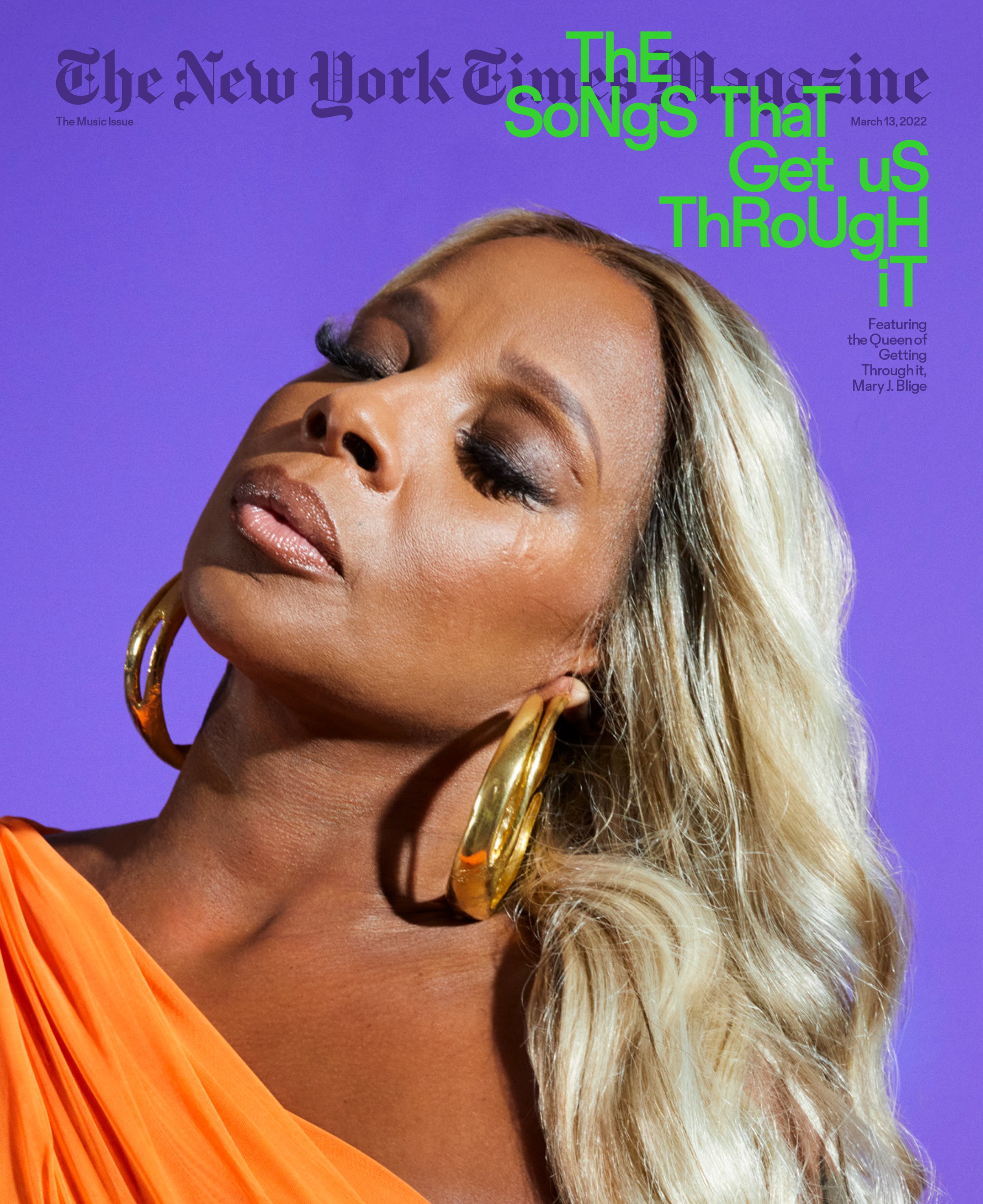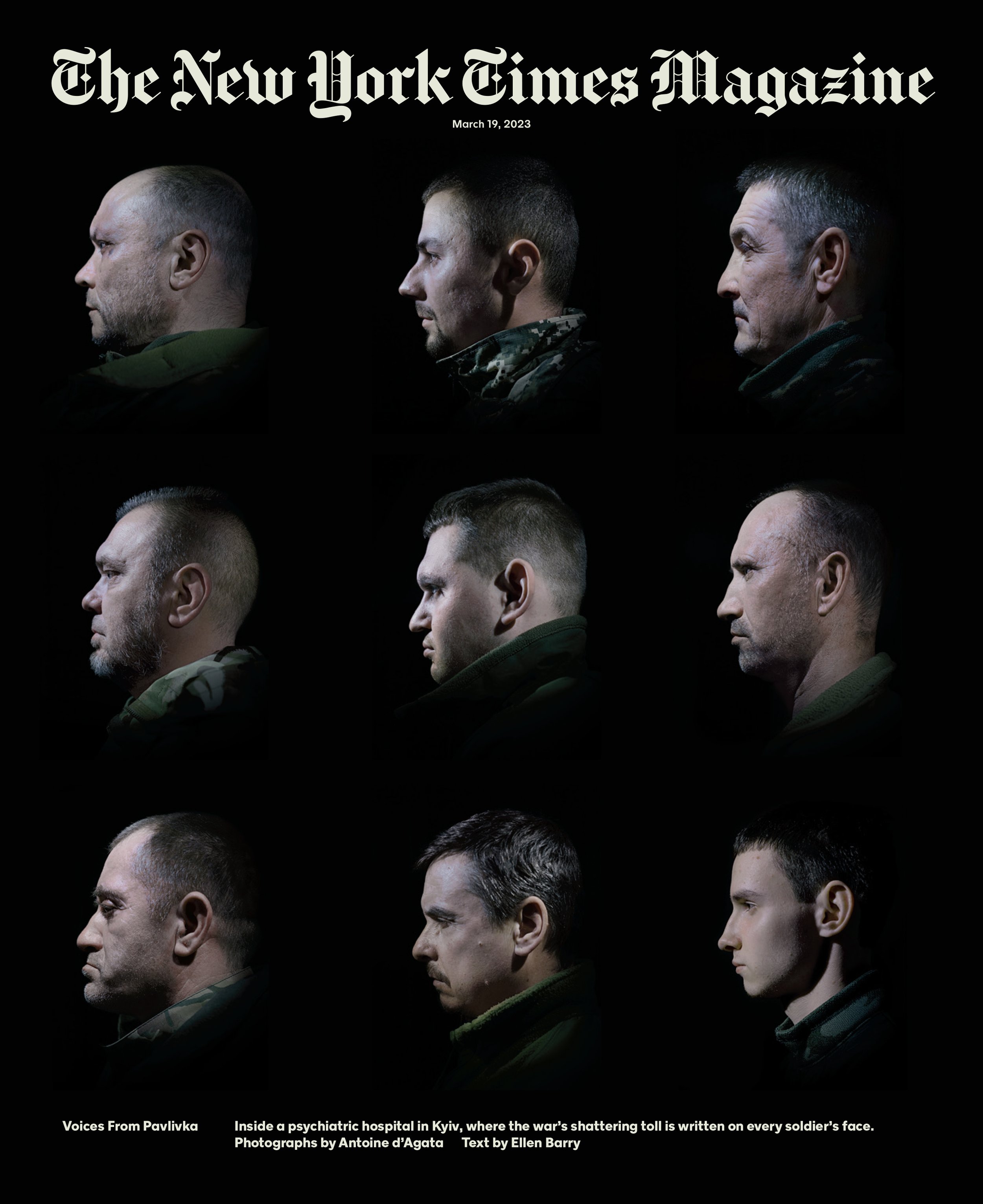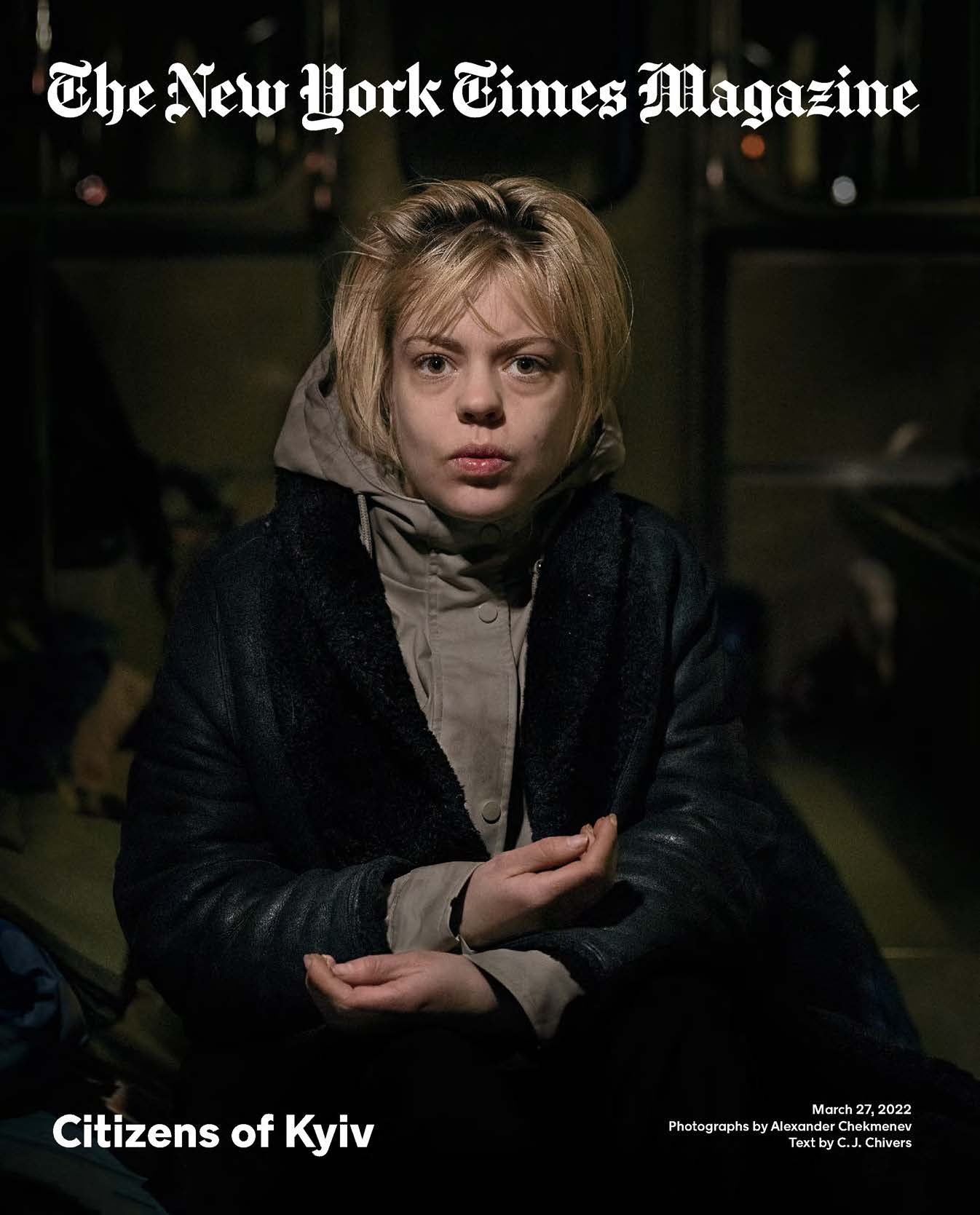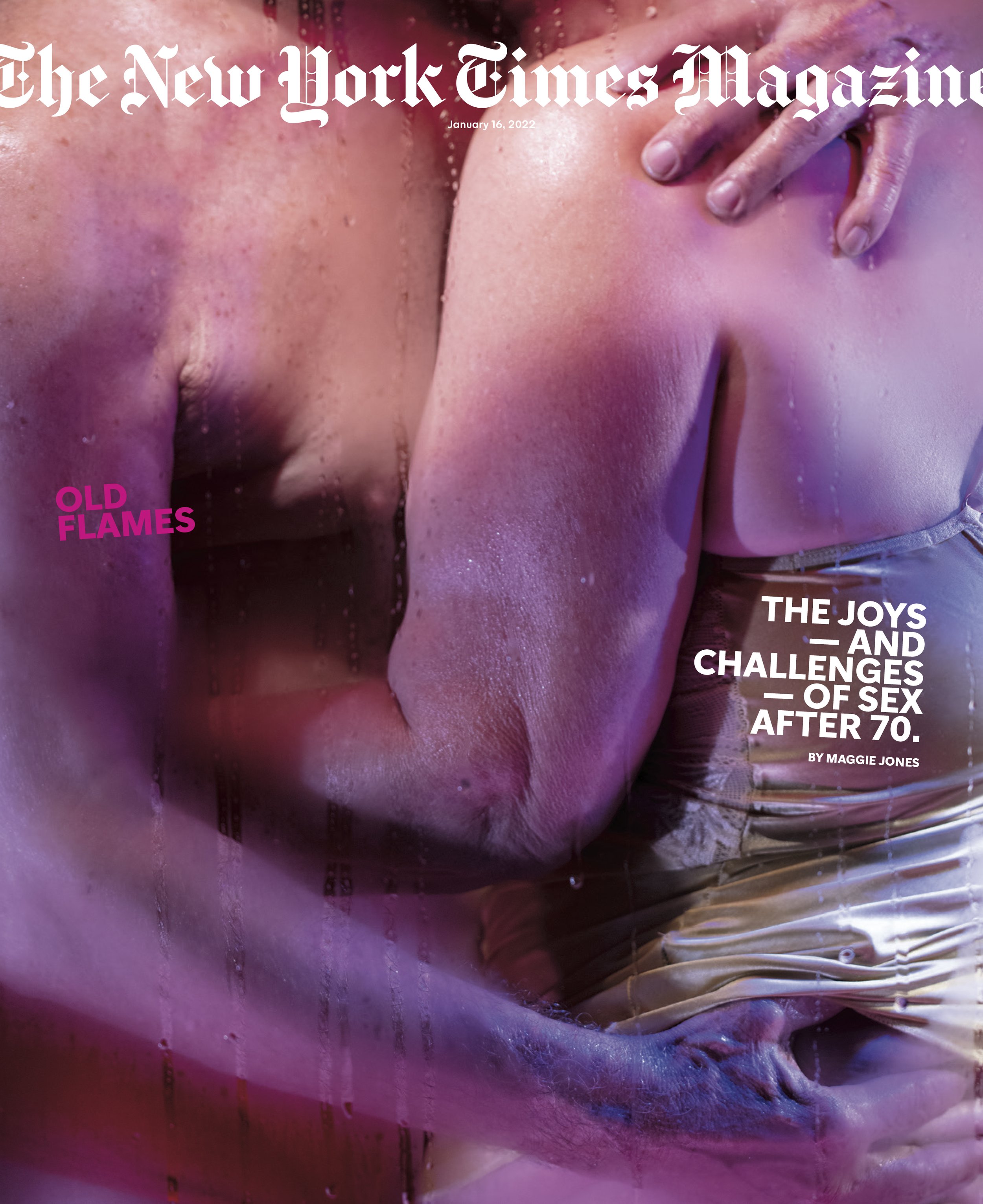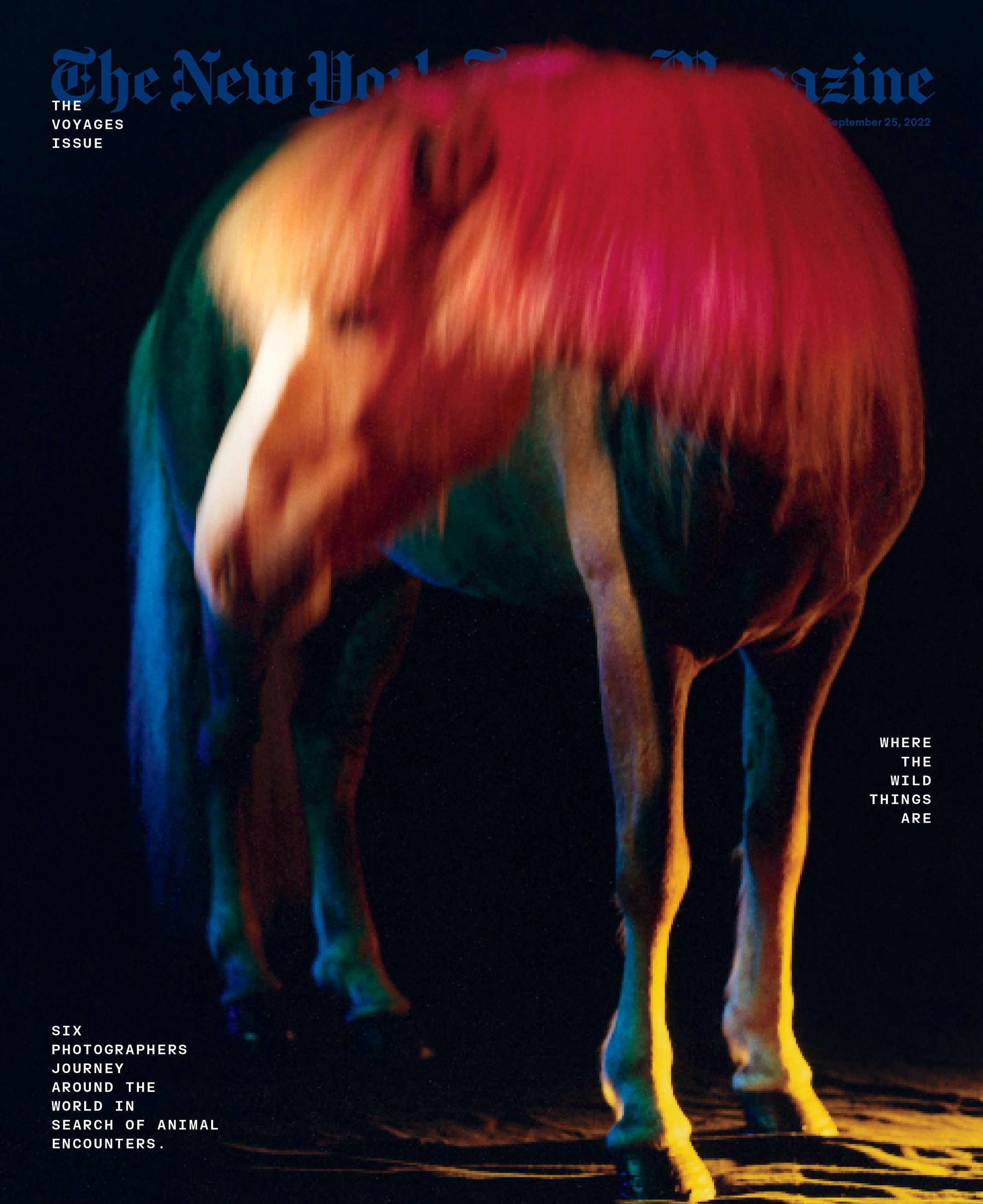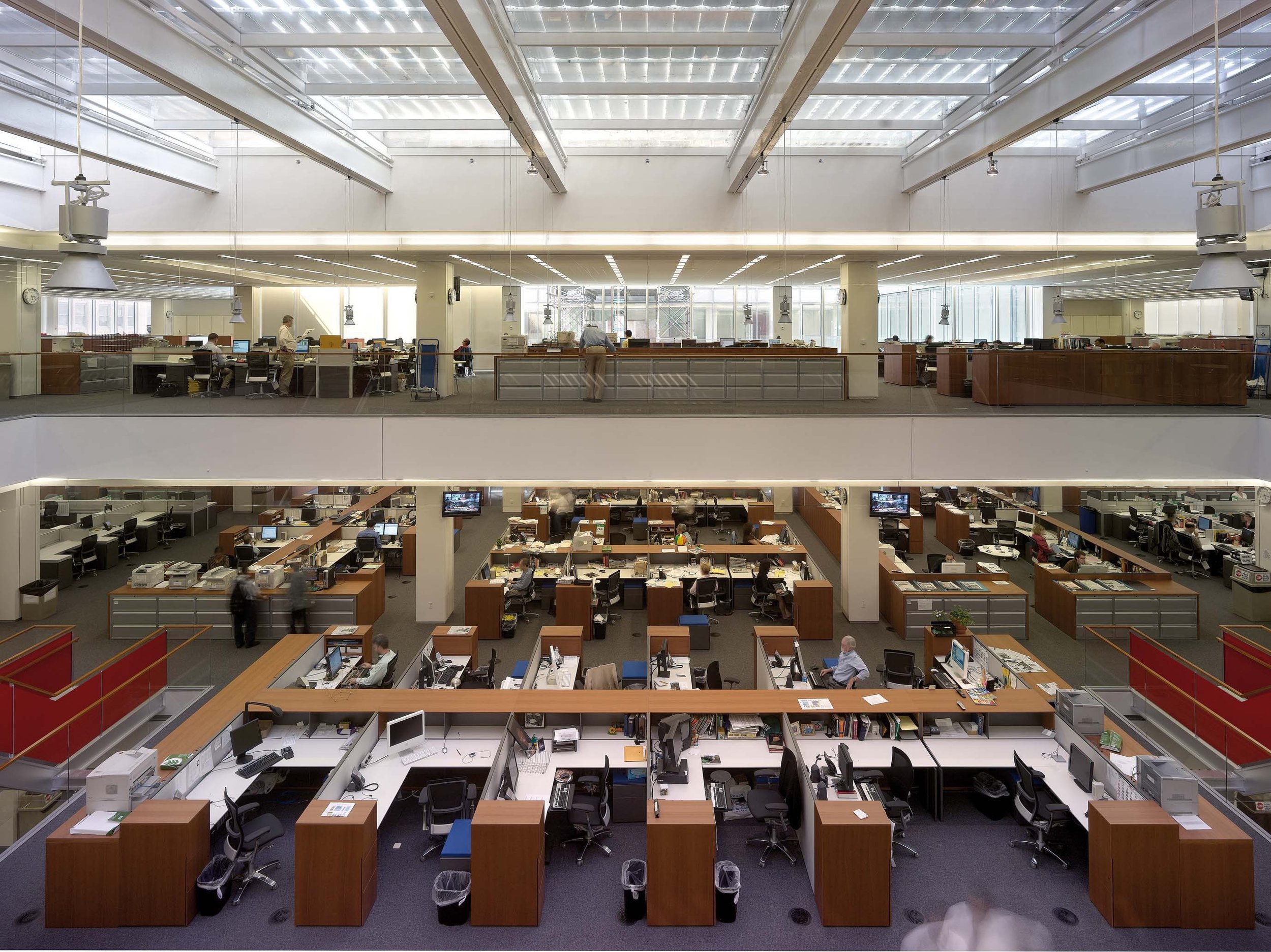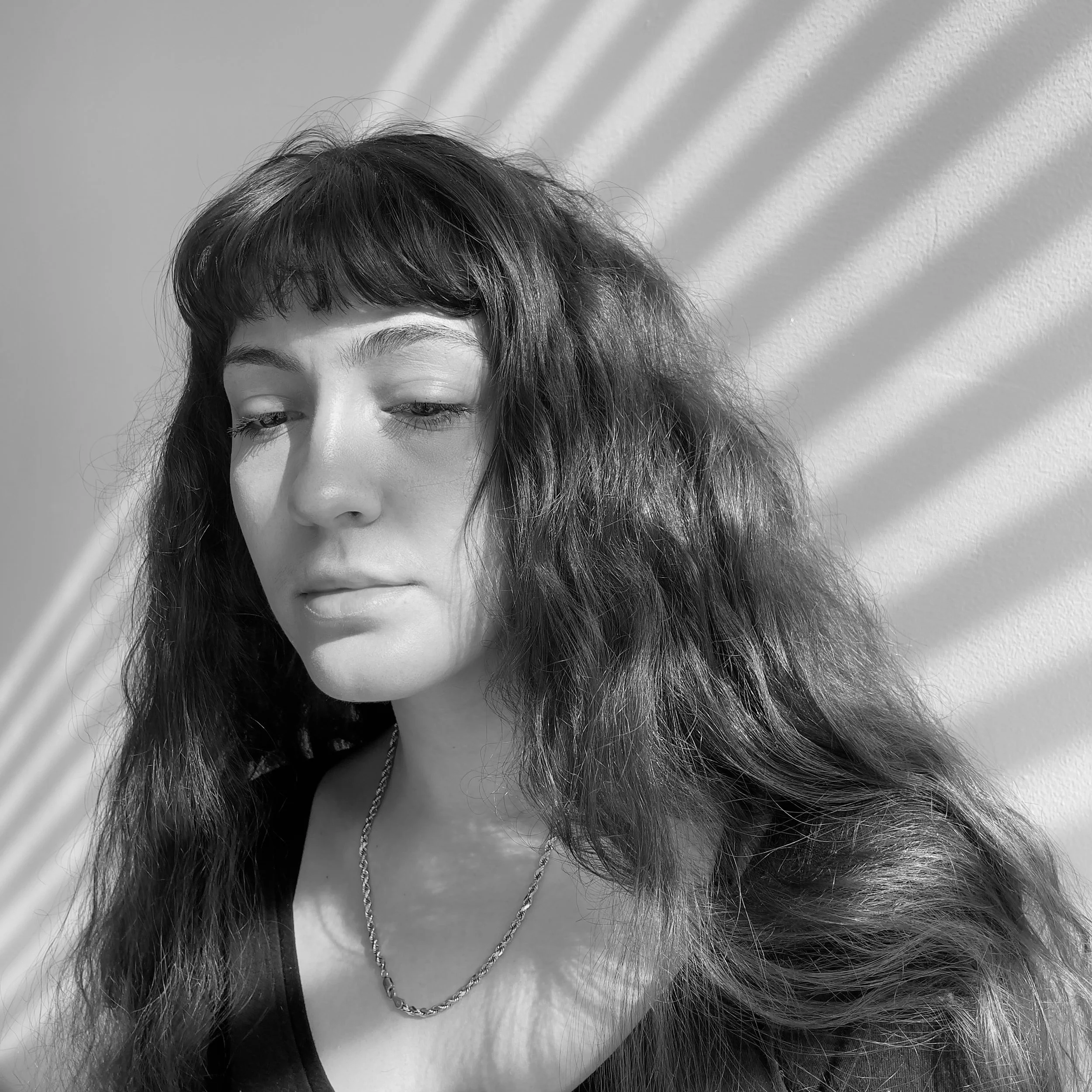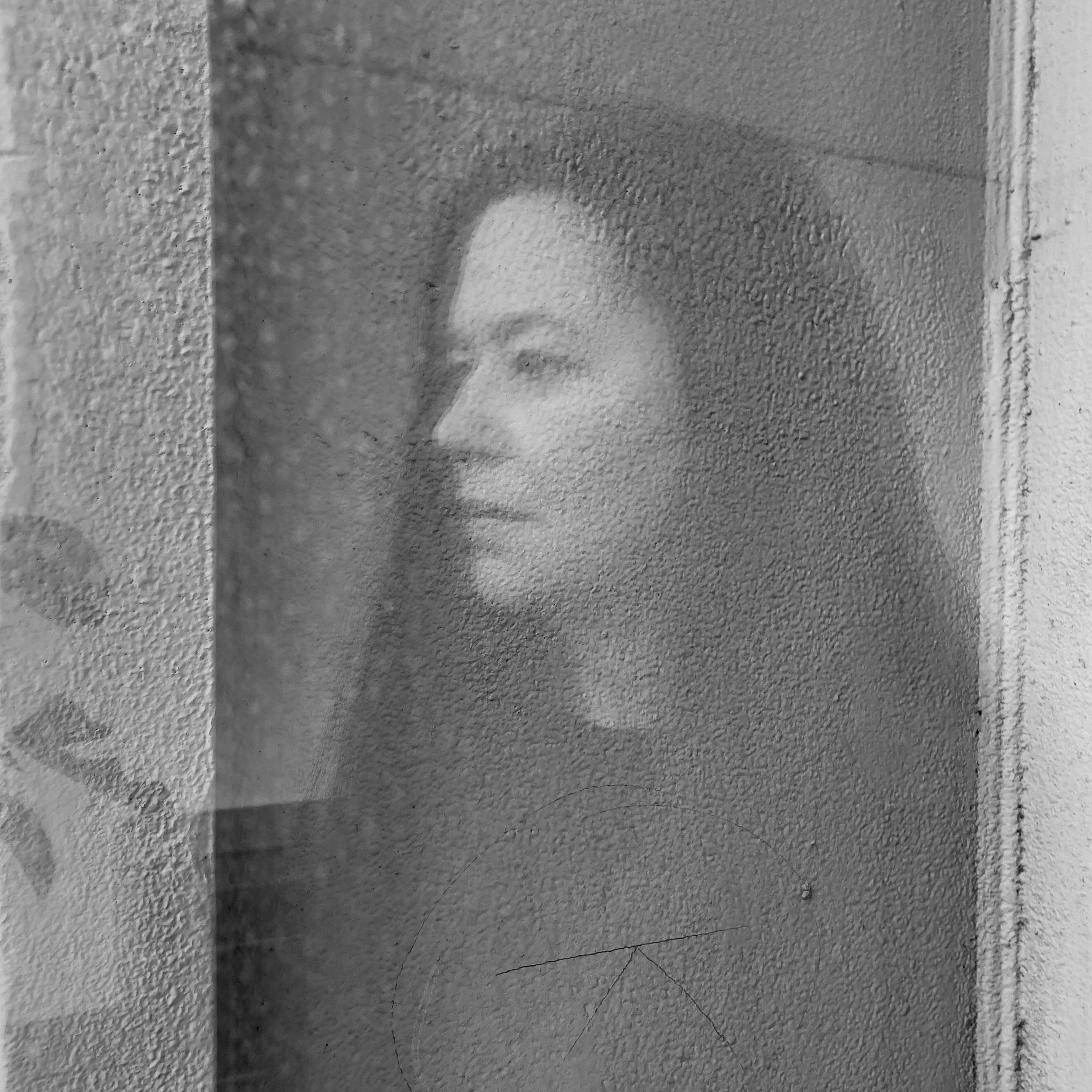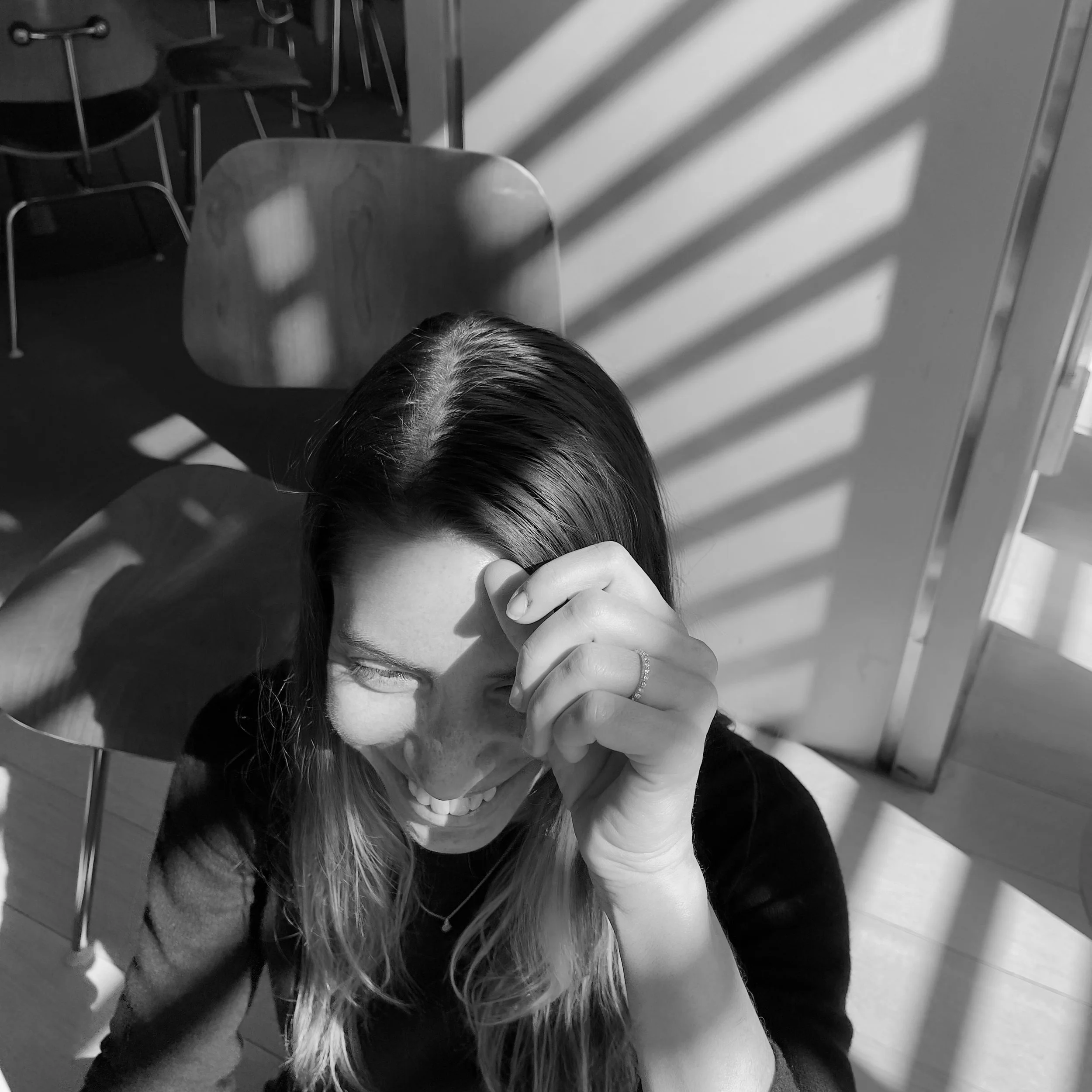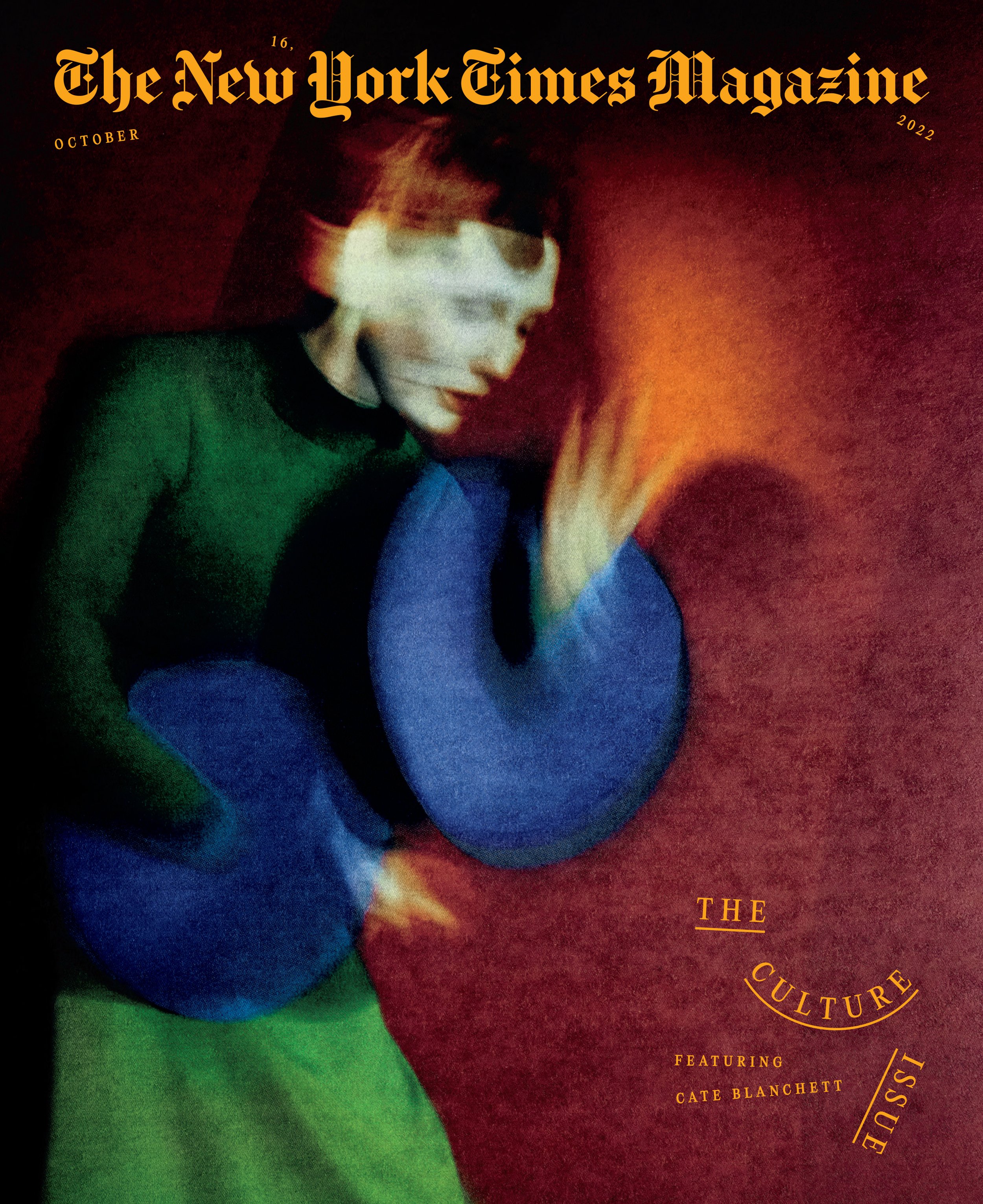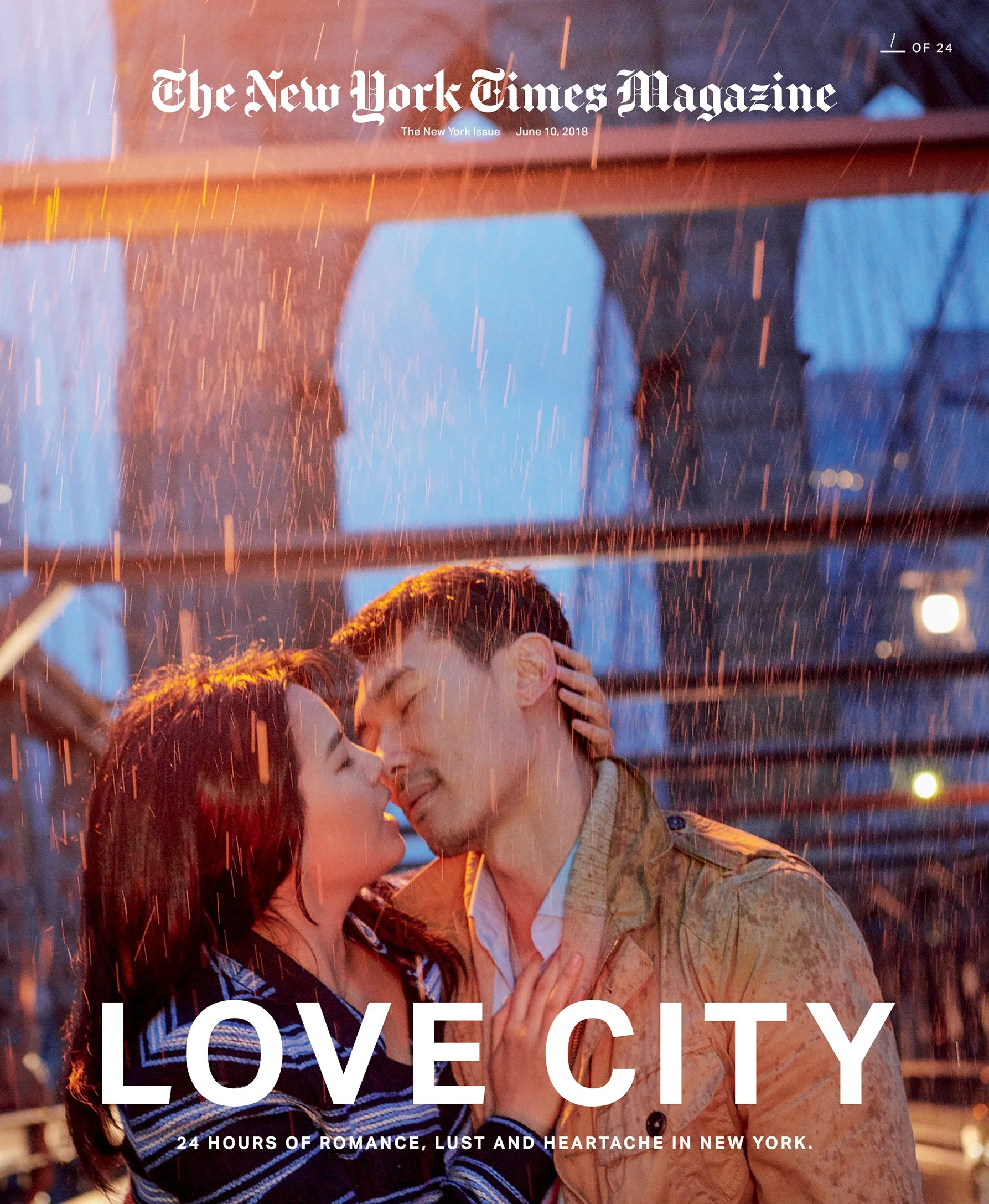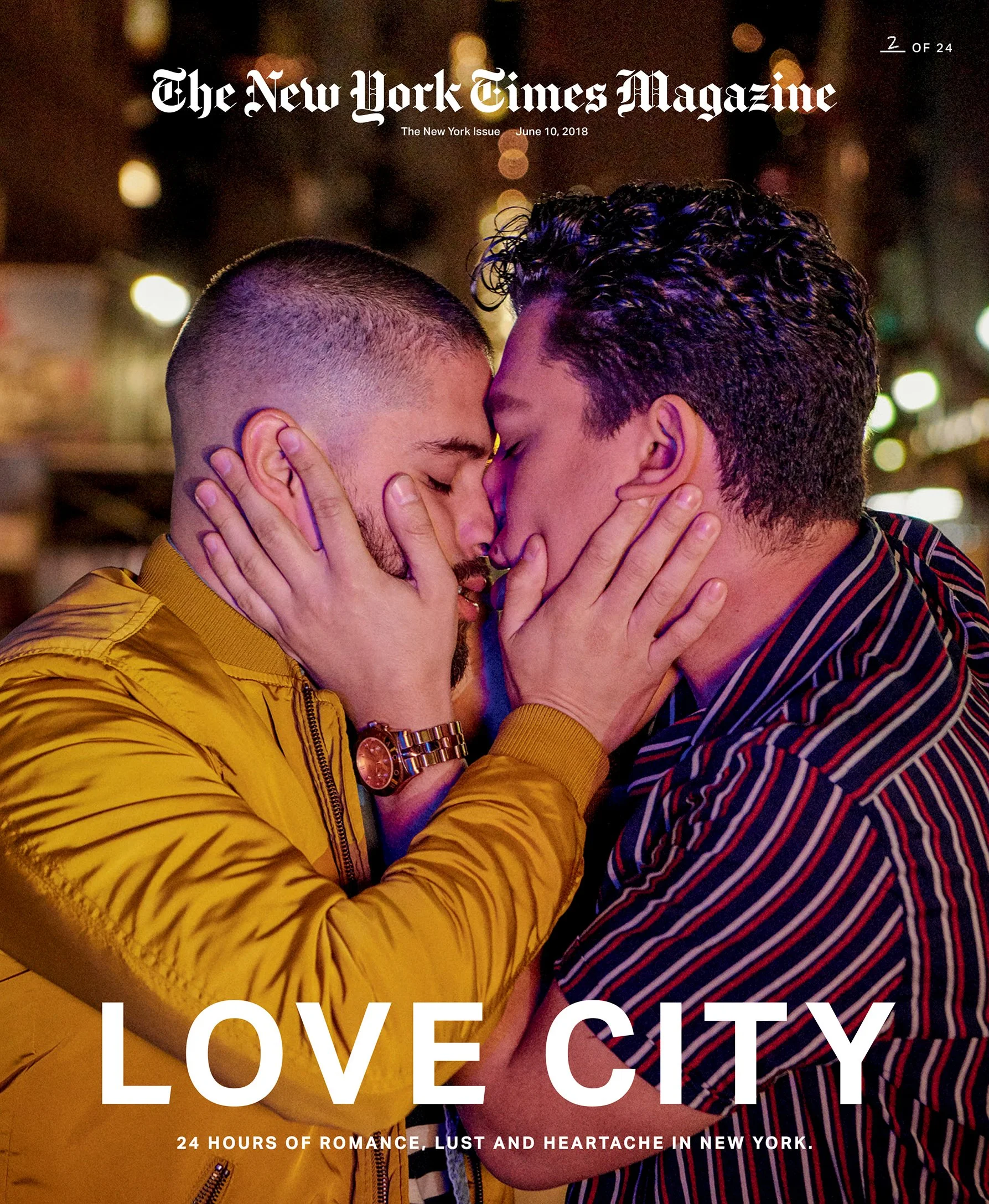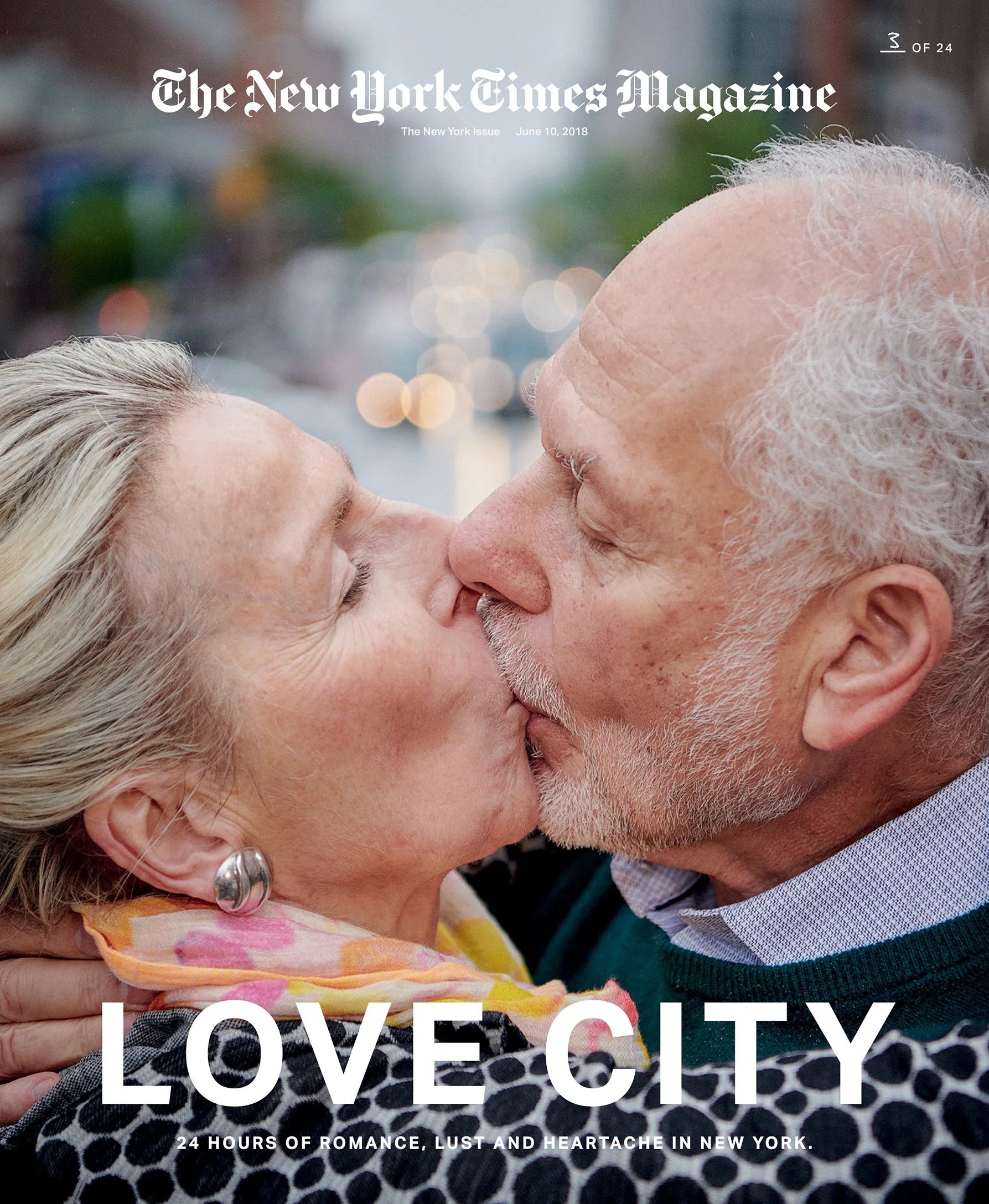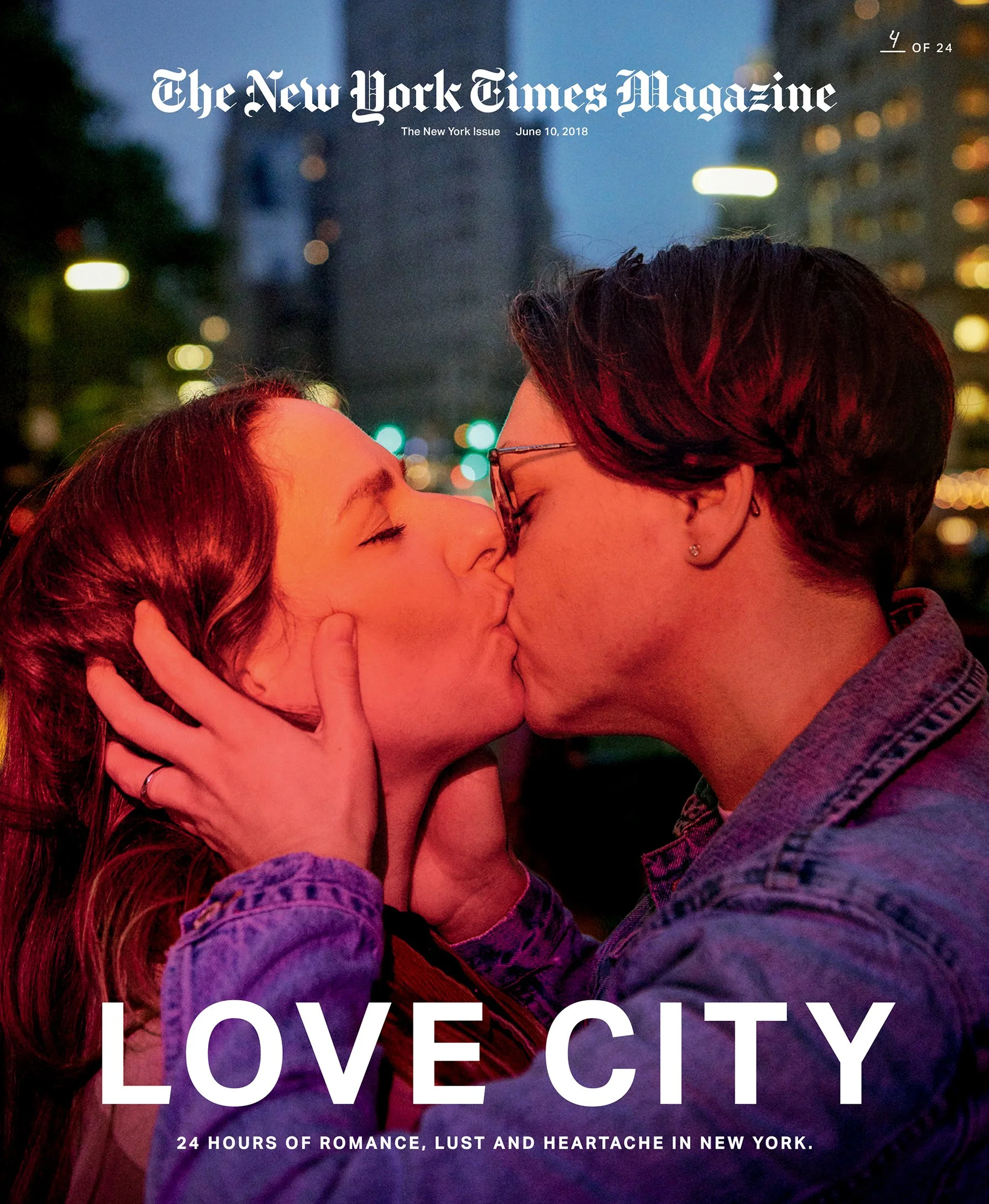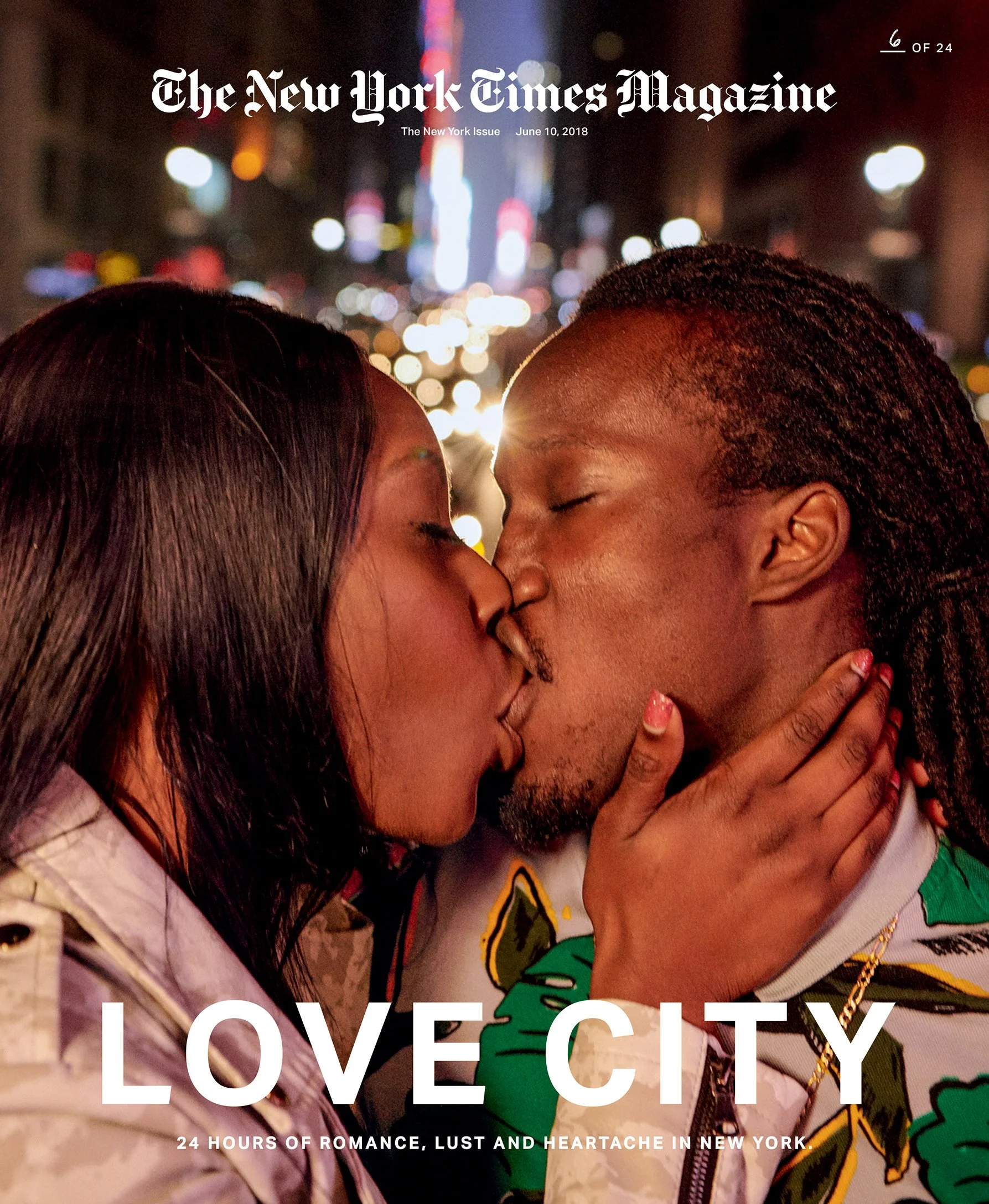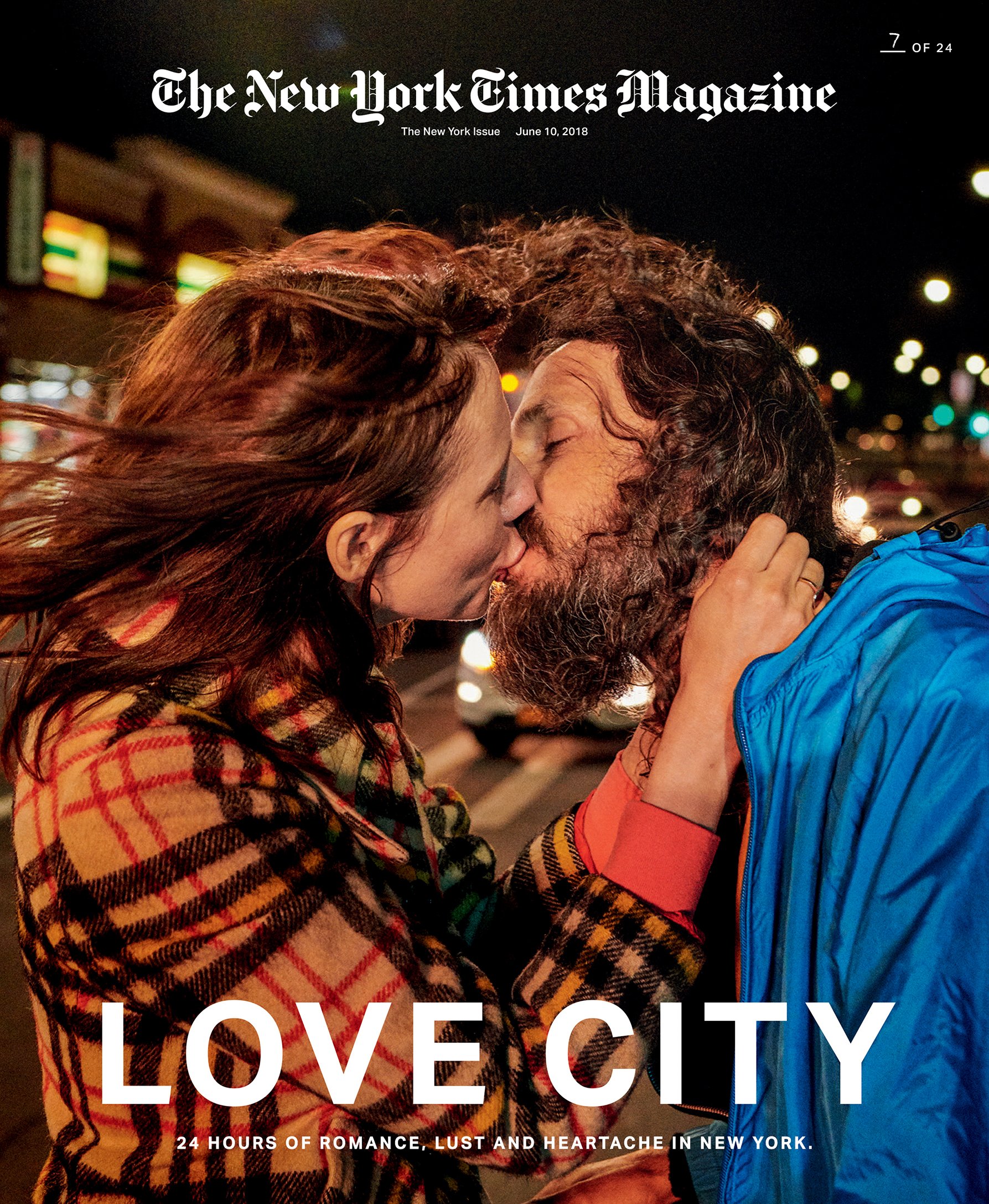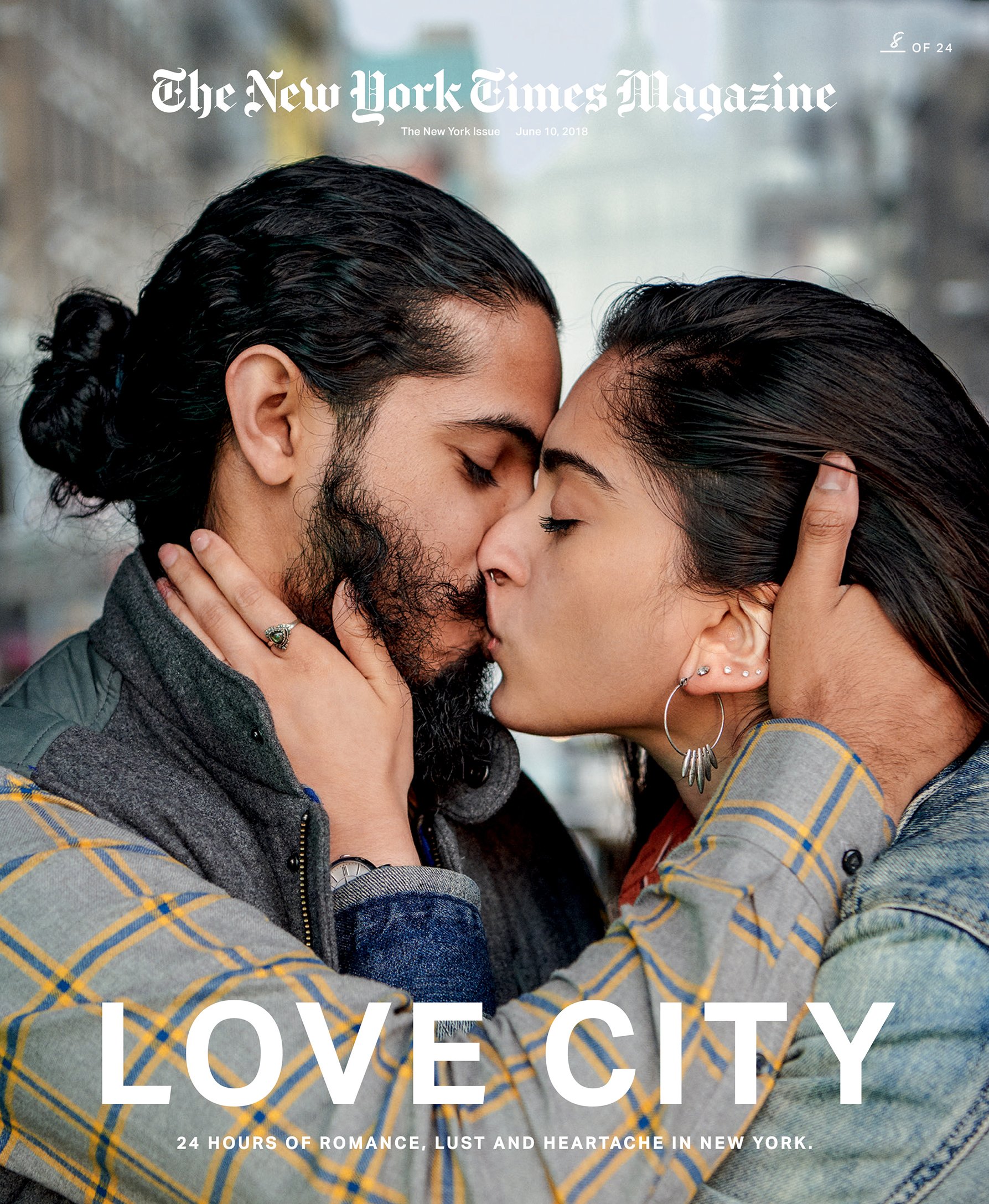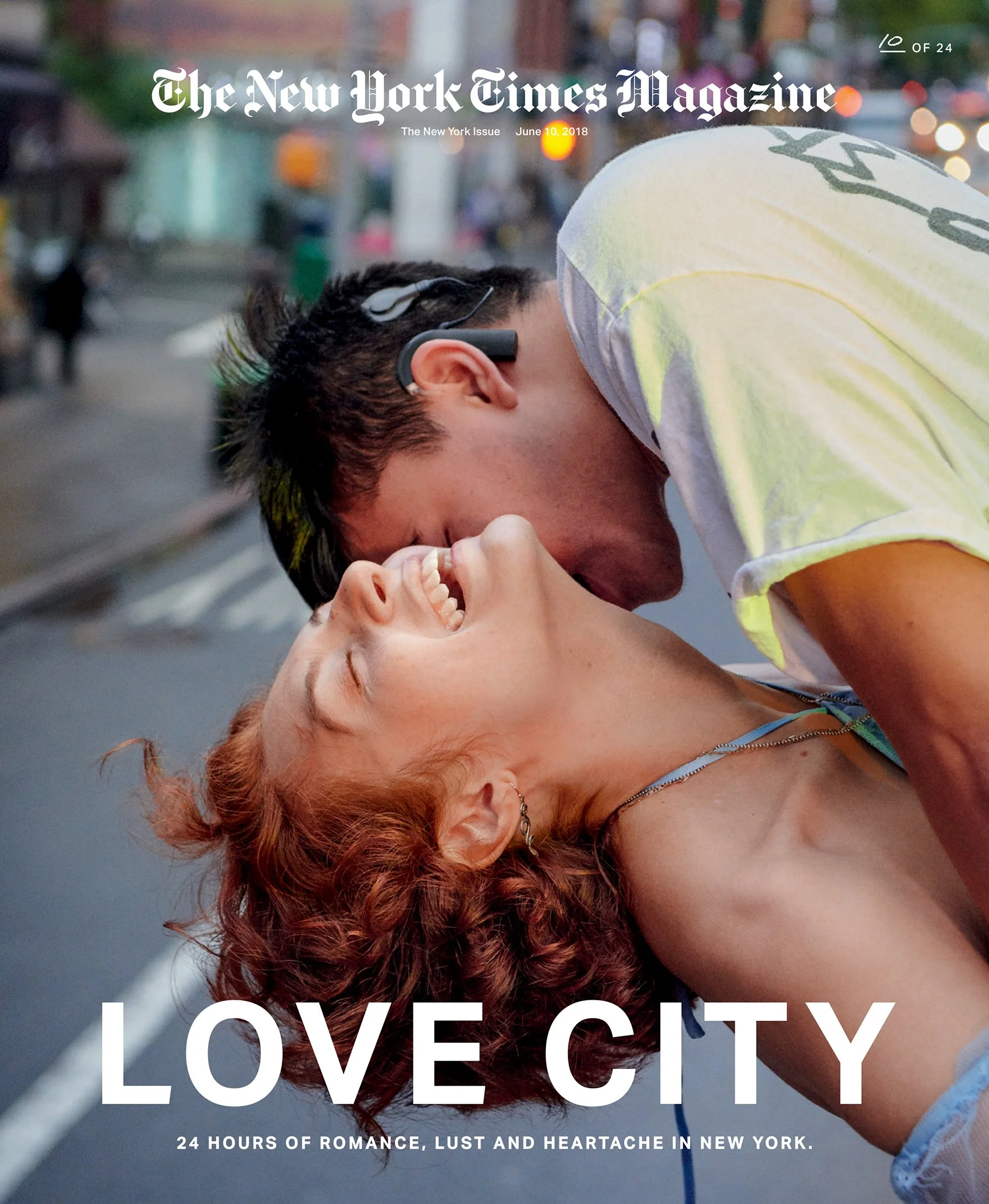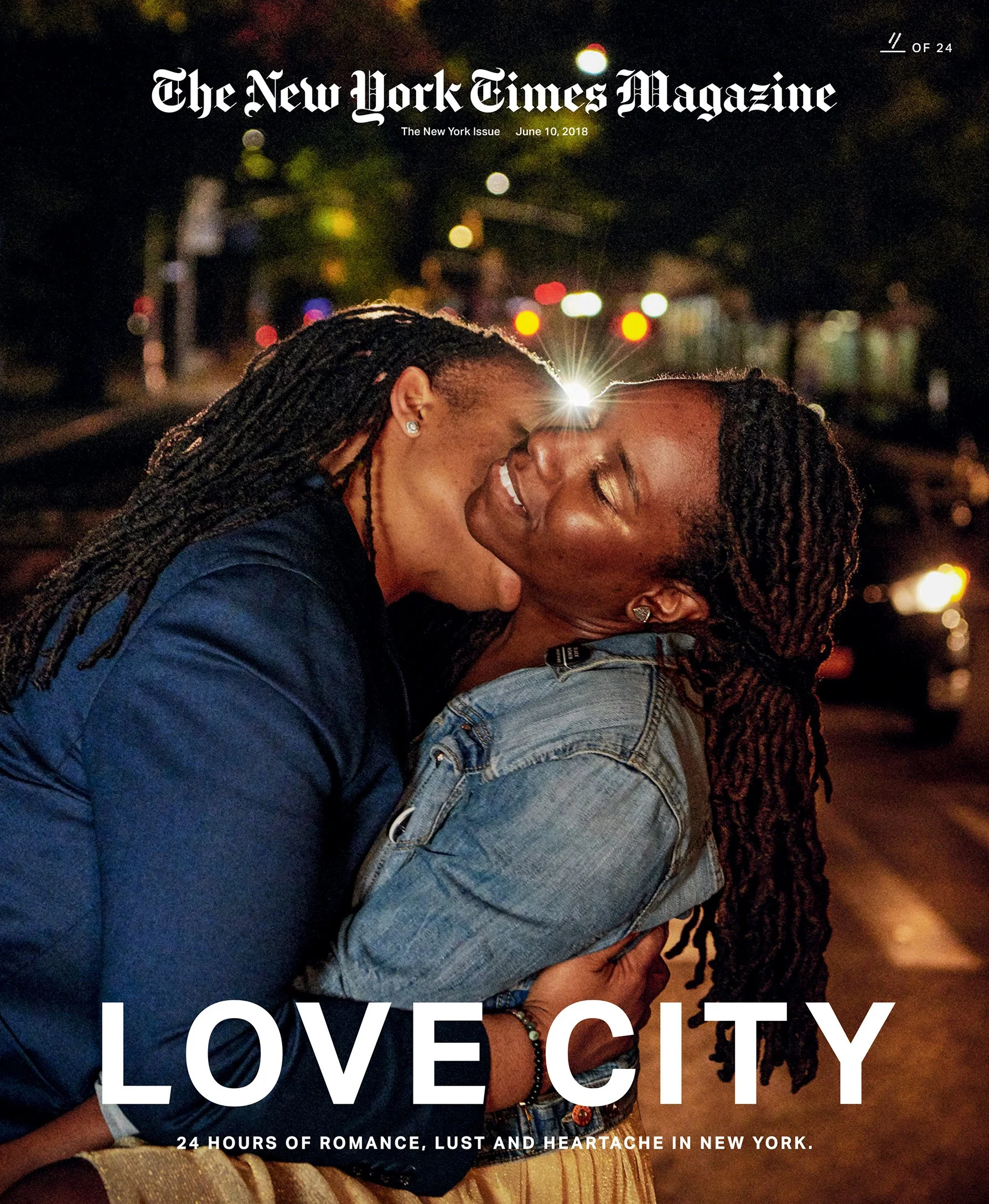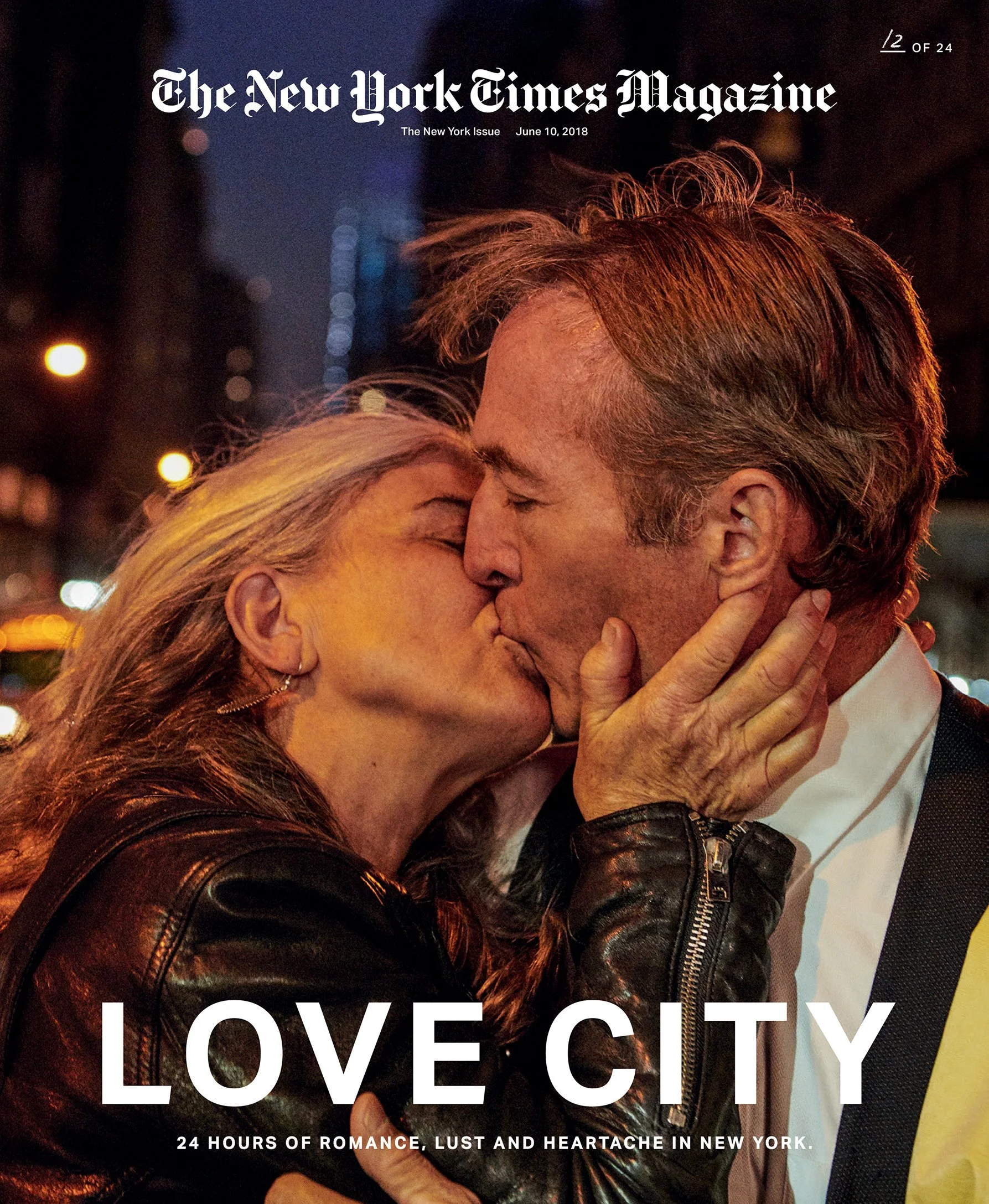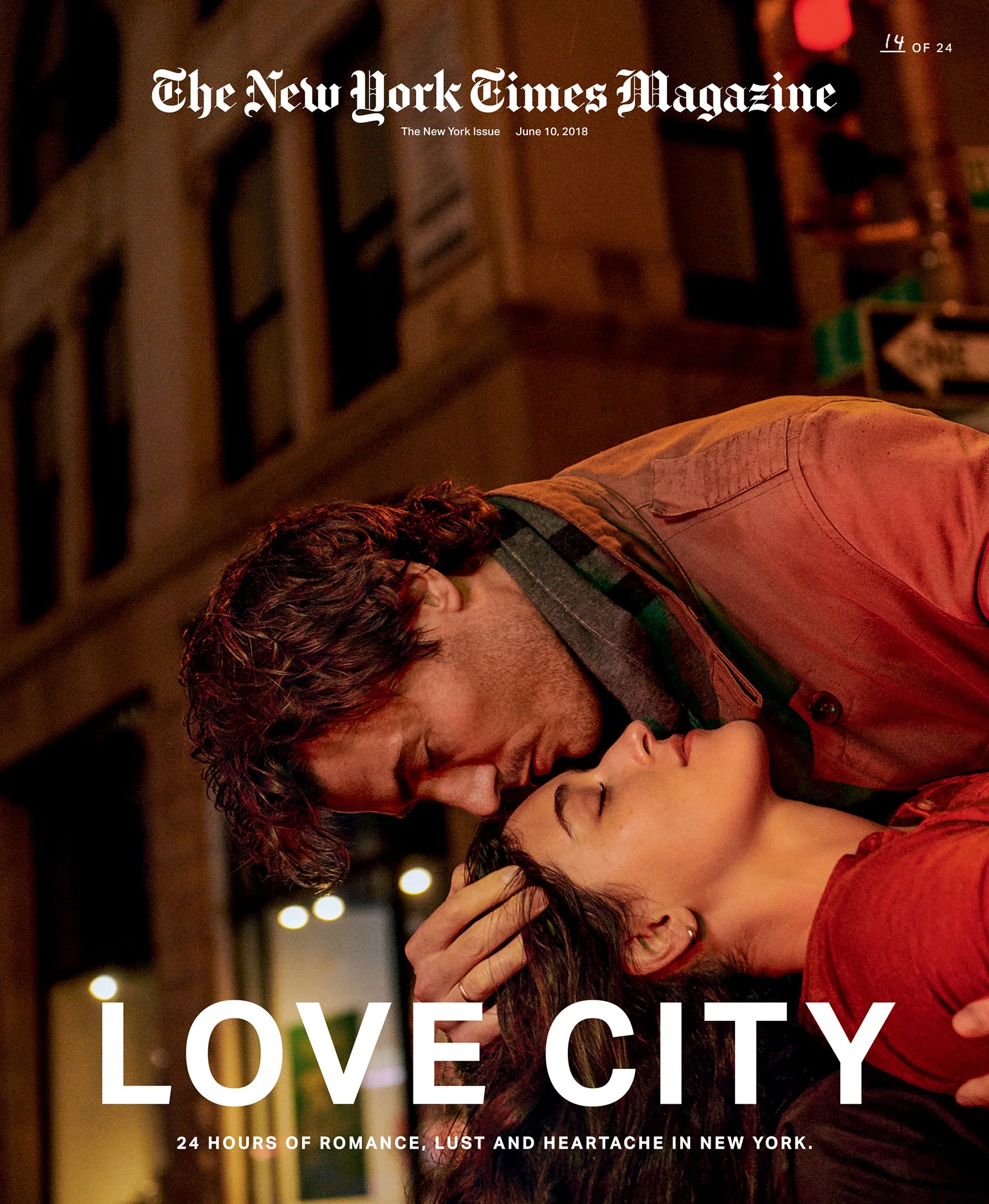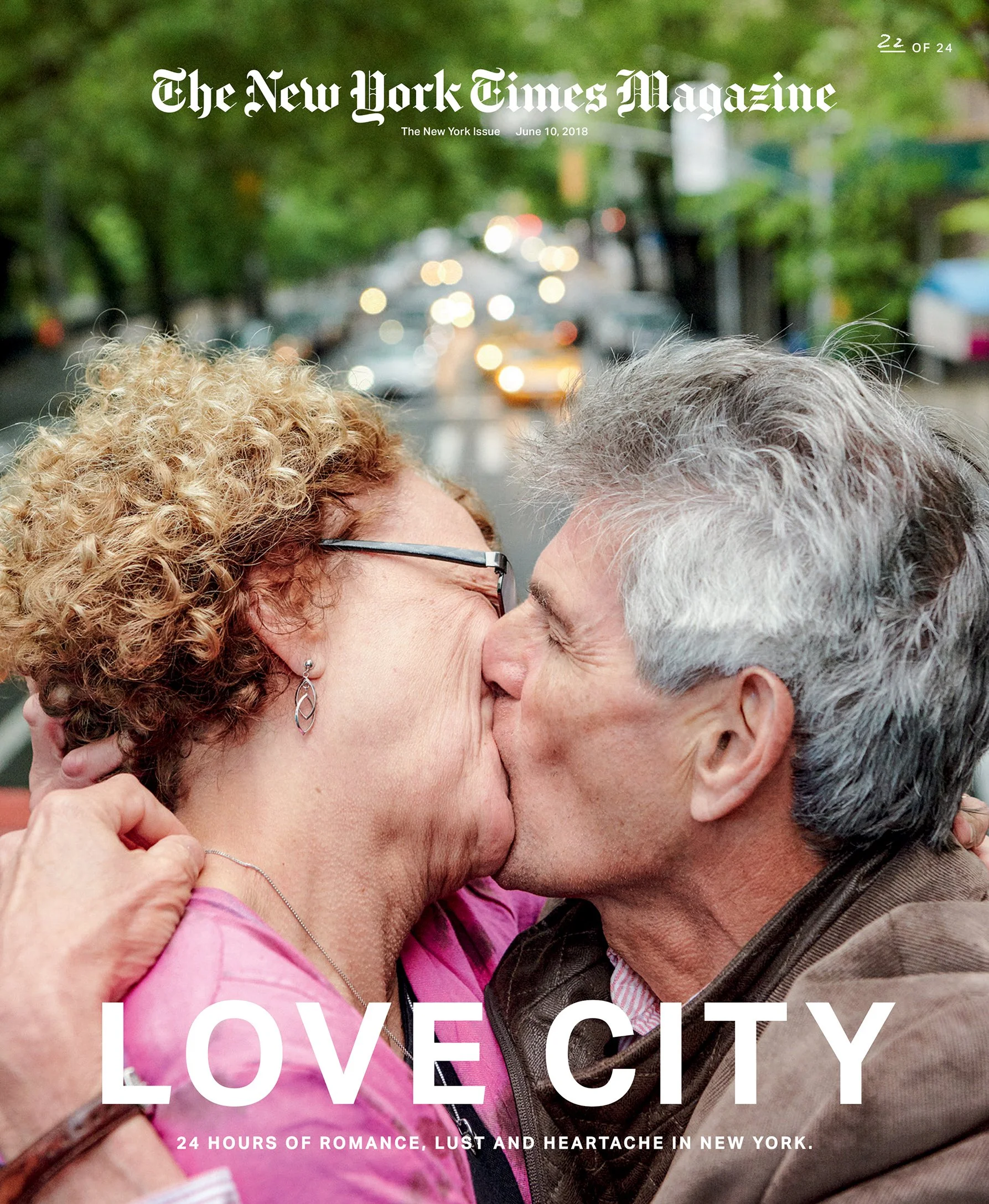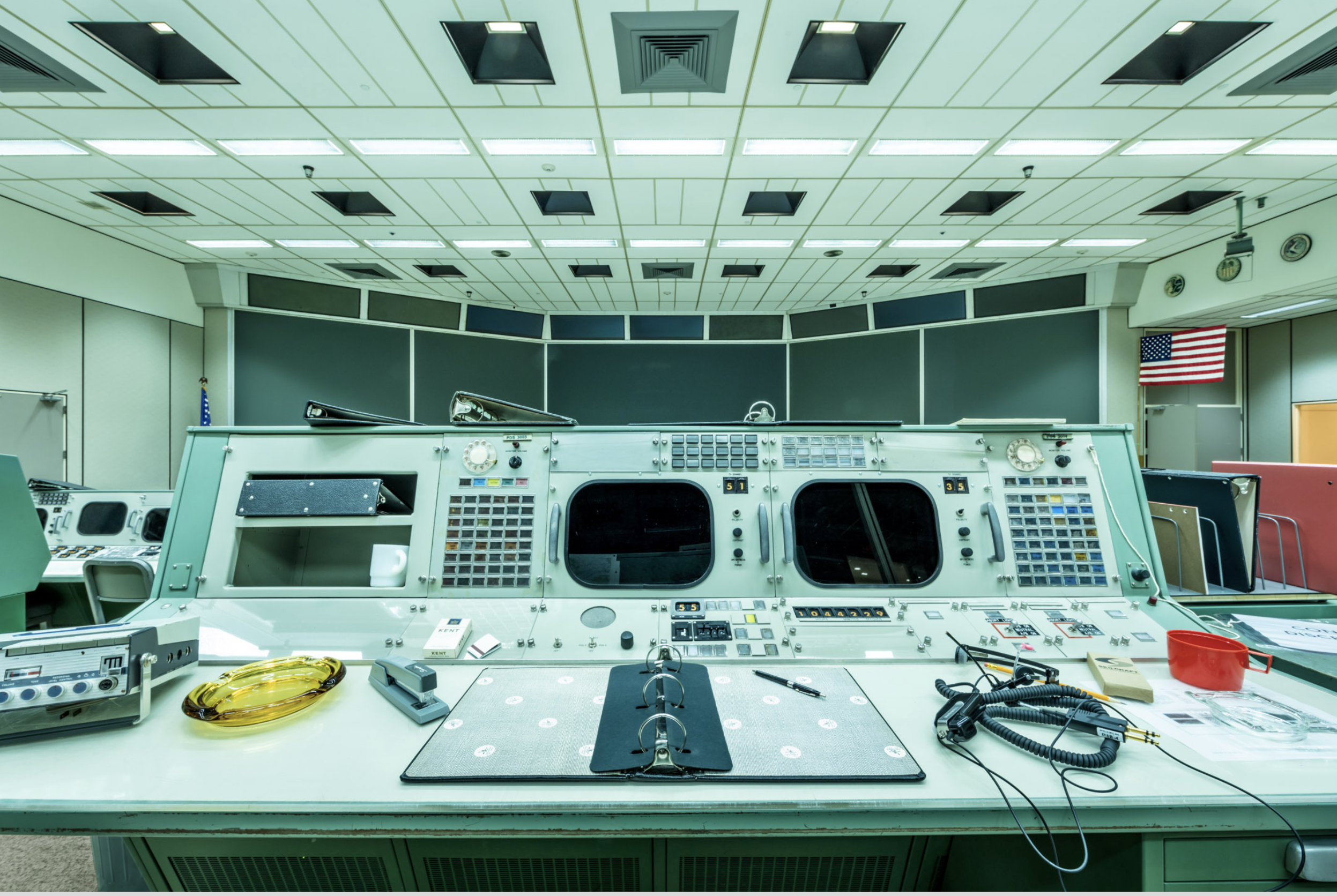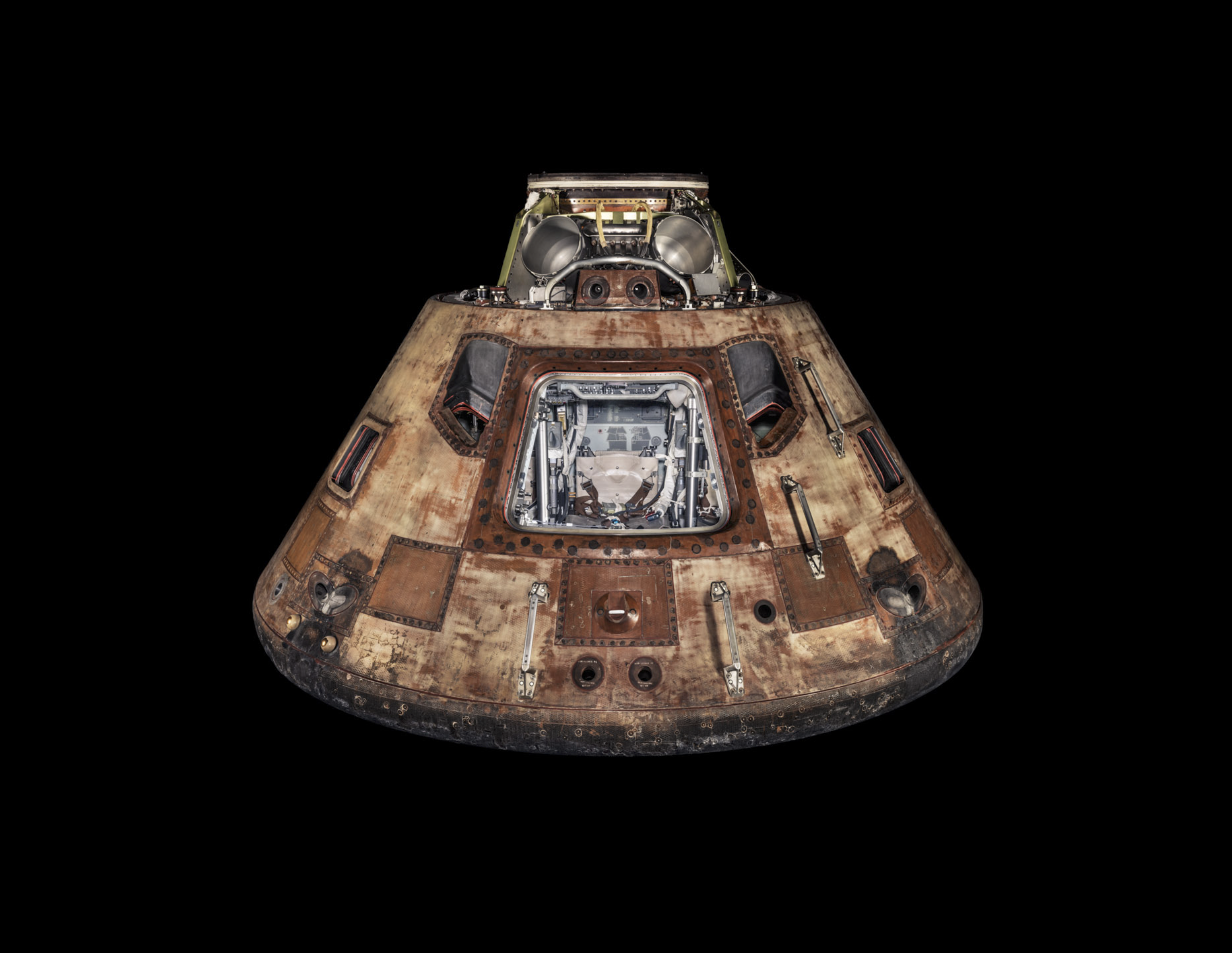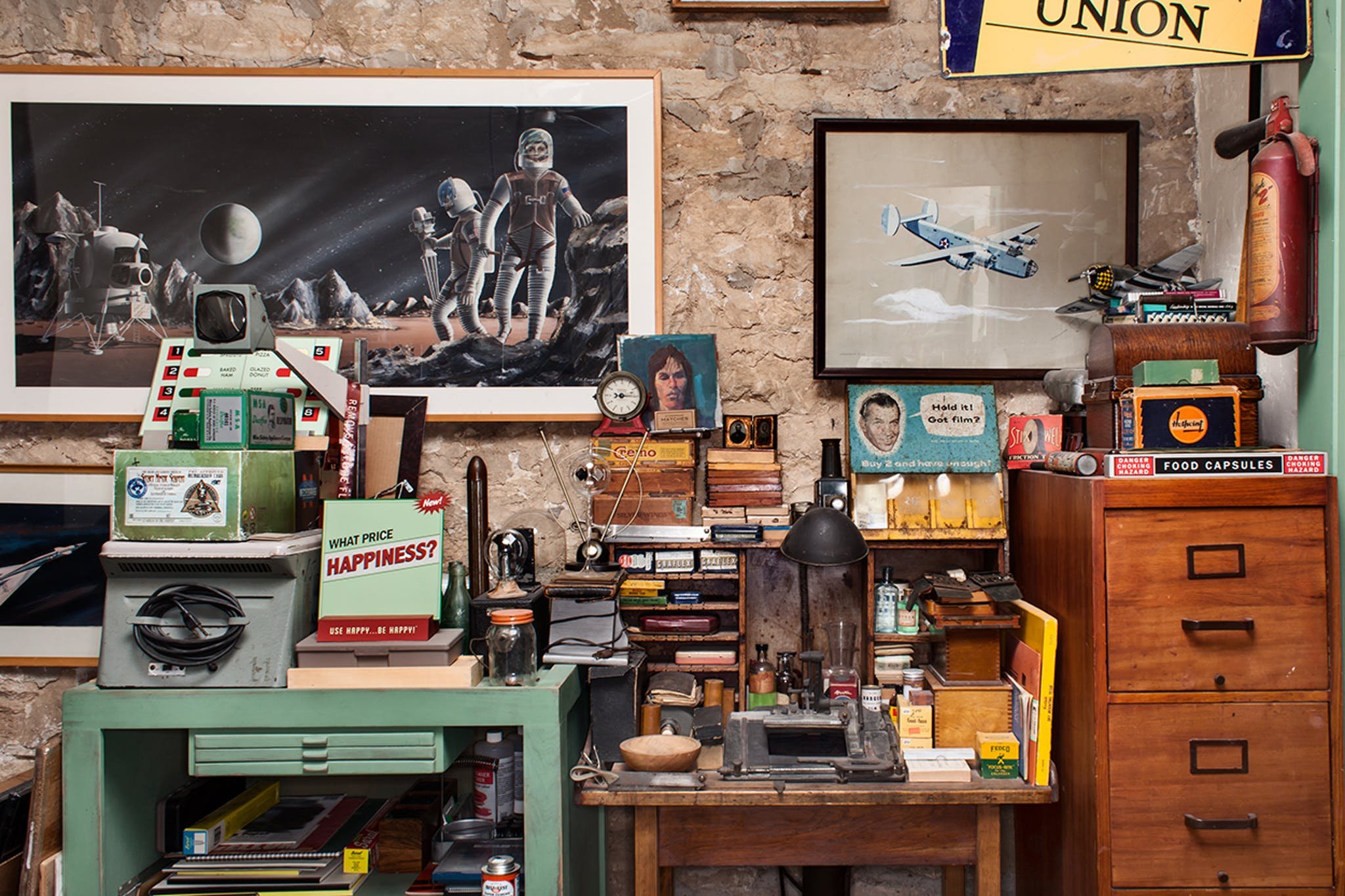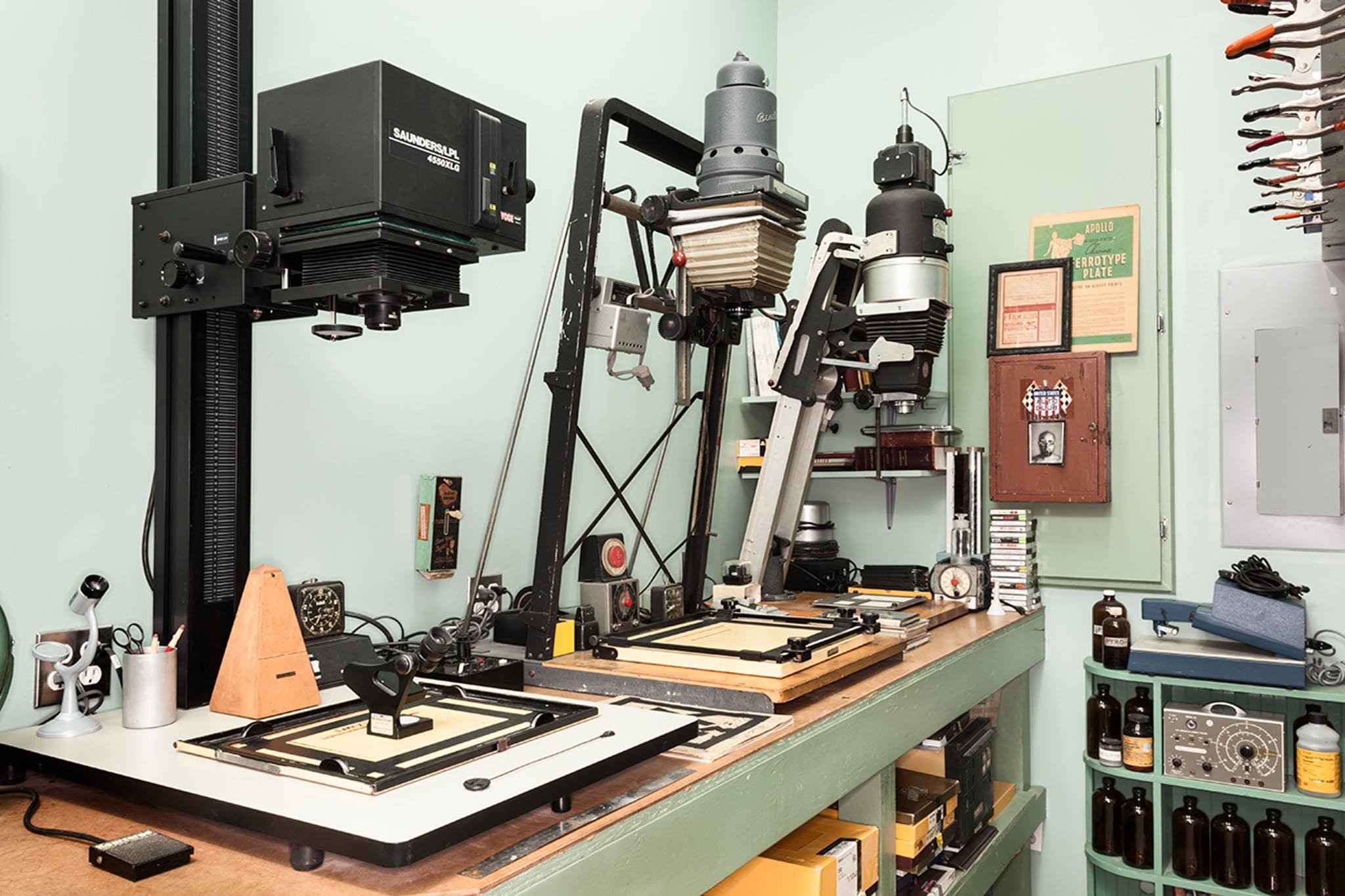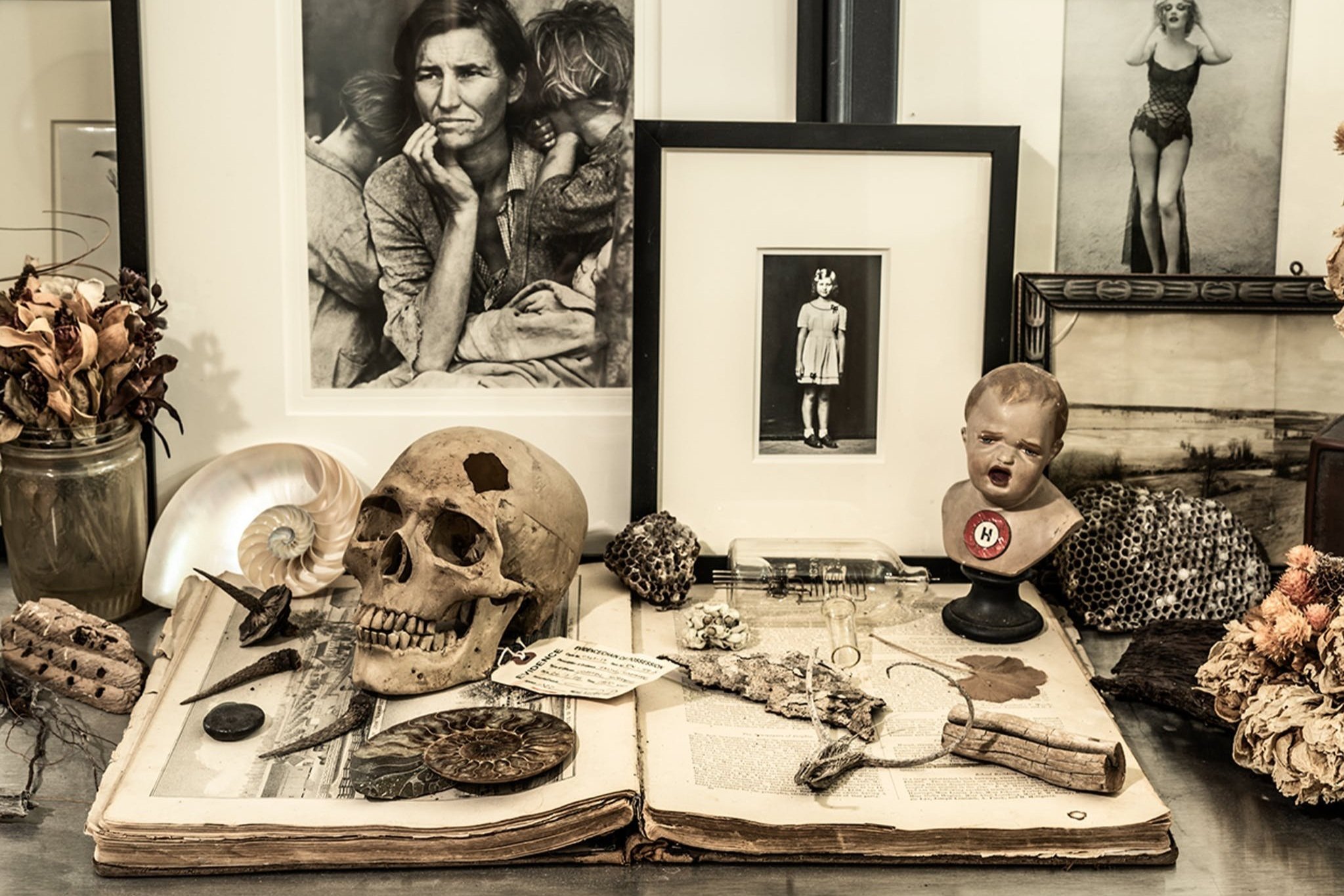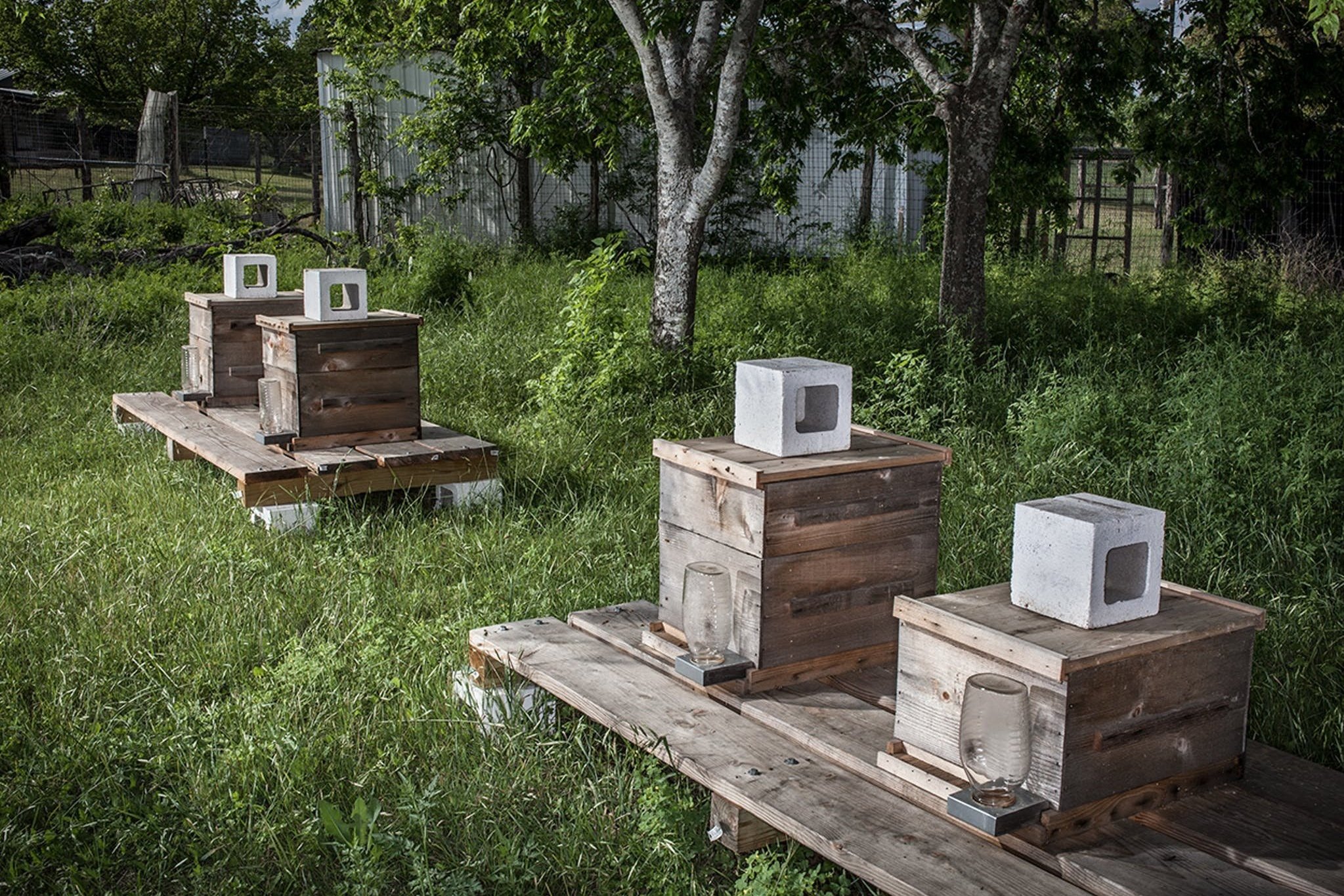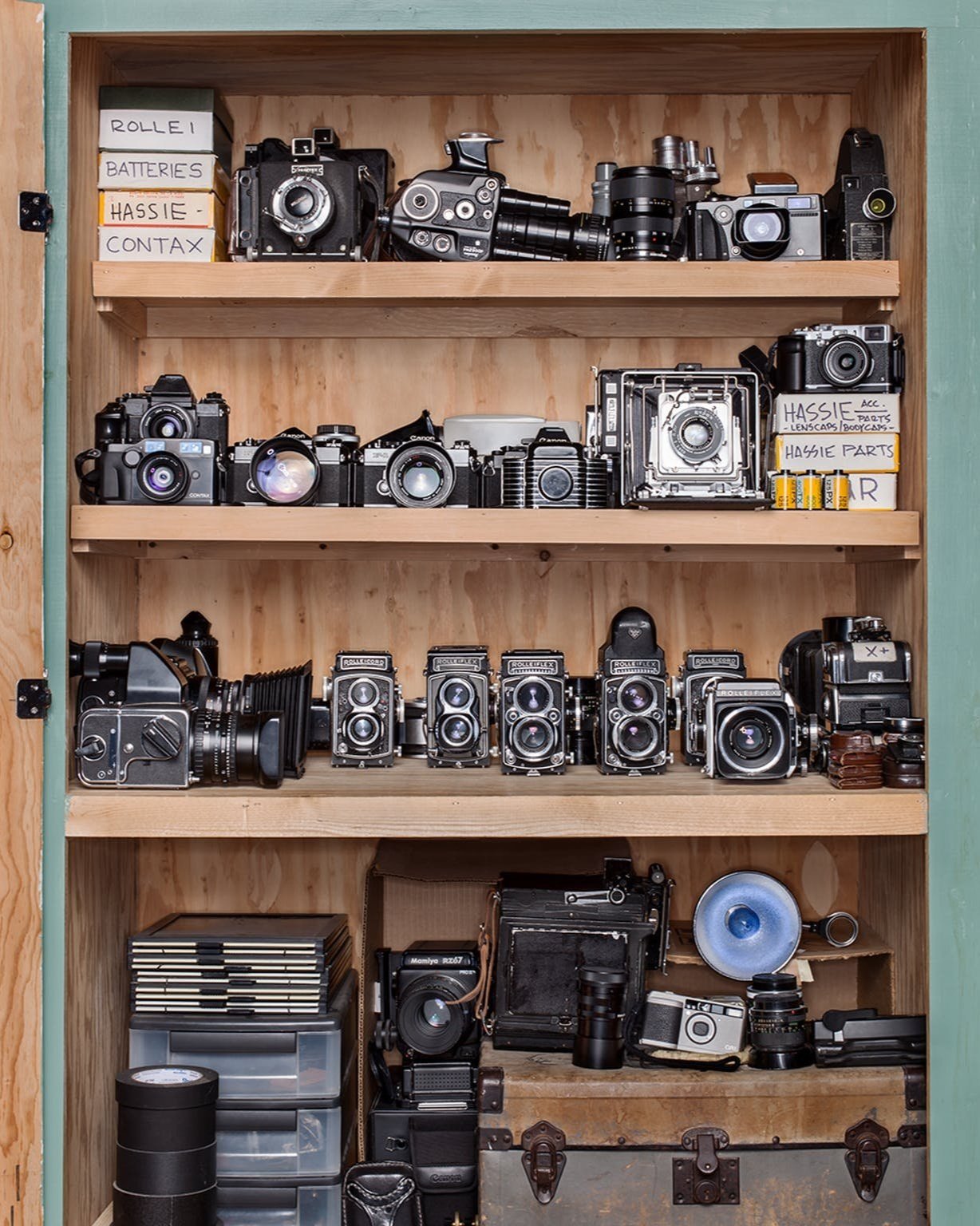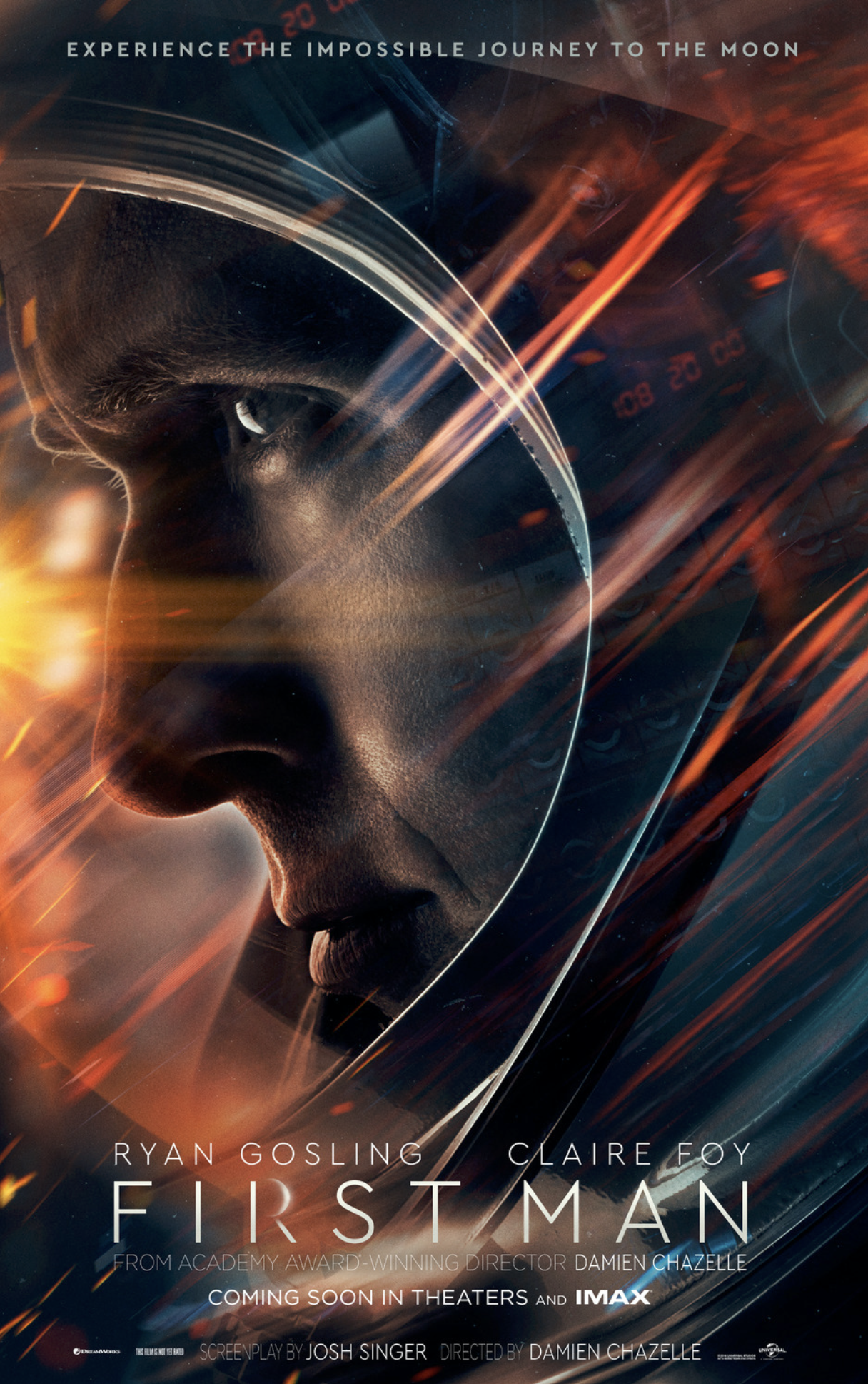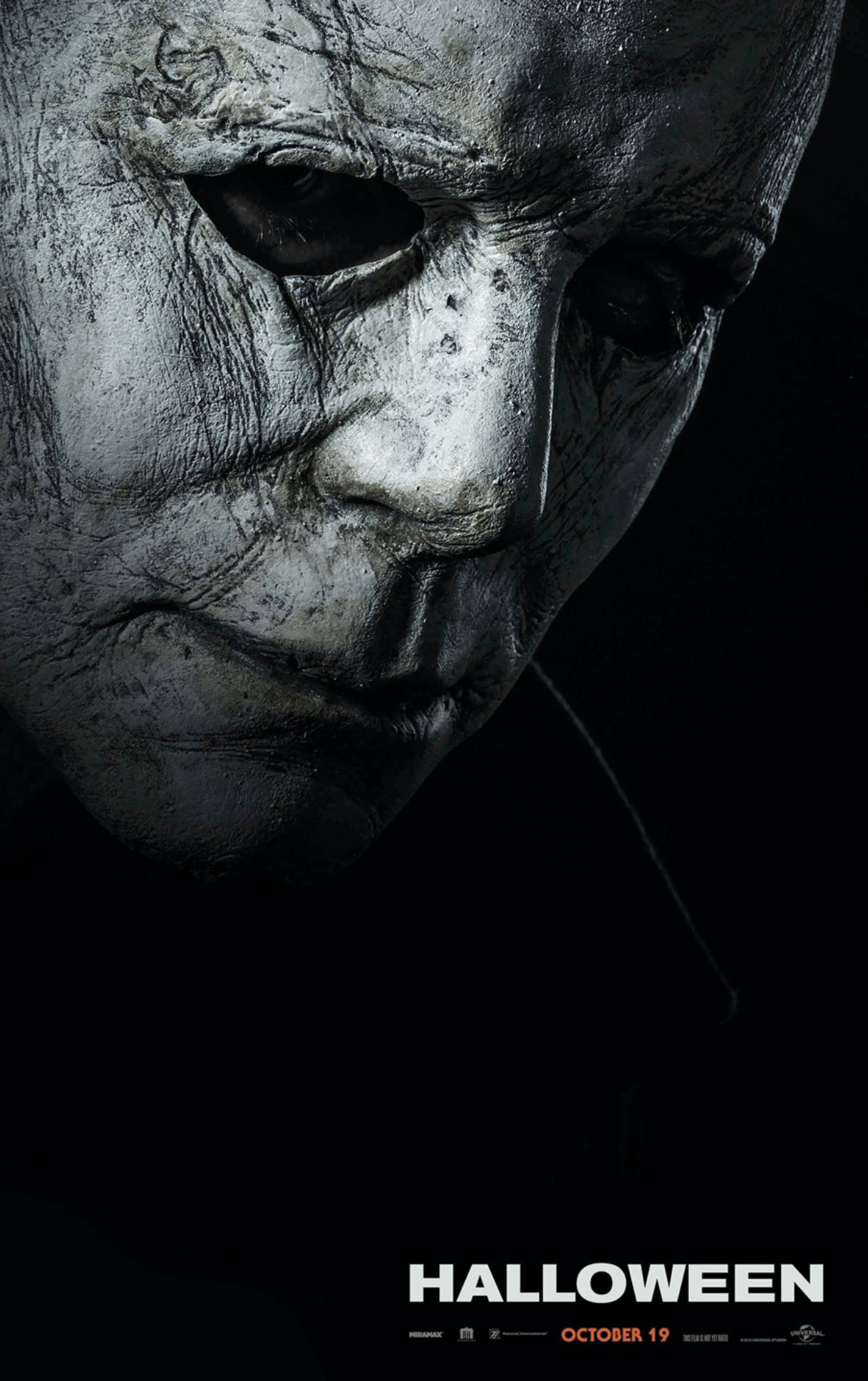It’s the Journey, Not the Destination
A conversation with photographer Albert Watson (Vogue, Rolling Stone, Harper’s Bazaar, more).
A conversation with photographer Albert Watson (Vogue, Rolling Stone, Harper’s Bazaar, more).
—
THIS EPISODE WAS MADE POSSIBLE WITH THE SUPPORT OF MAGCULTURE
Today’s guest, the celebrated photographer Albert Watson, OBE, is a man on the move.
This is not a recent development. Watson’s professional journey began in Scotland in 1959, where he studied mathematics at night. His day job? Working for the Ministry of Defense plotting courses—speed, altitude, distance, payload—for British missiles pointed towards Cold War Russia.
Watson’s affinity for the mathematical gave way to his interest in the arts when, in school, he dove head-first into all of them: drawing, painting, textiles, pottery, silversmithing, and graphic design.
Later, on his 21st birthday his wife bought him a small camera. He became obsessed:
“All I know is that I clicked the shutter, and suddenly, magically, I got negatives back, that I could learn to process myself. And then, even better, I got into a dark room with a piece of white paper under an enlarger, and you put it in some chemistry, and lo and behold, up comes an image. Magic! Black magic! I called it. Amazing, insane, beautiful.”
Then came the magazines: Harper’s Bazaar, Rolling Stone, GQ, Mademoiselle, Entertainment Weekly, Details, and Vogue. All of the Vogues. And the ad campaigns: Prada, Chanel, Revlon, and Levis.
And yet, after all that, talk to the man about his work, any facet of his career, and the conversation invariably comes back to the print—the math, the chemistry, the graphic design involved—and about the journey the print takes, from camera to magazine, from magazine to gallery and, sometimes, from gallery to museum, as so many of his have.
Our editor-at-large George Gendron talks to Watson about all of it—day rates, social media, and that stunning apartment in TriBeCa.
George Gendron: I want to go back to a conversation you and I were having just yesterday. And I said to you I think there are a lot of people, even veterans of the magazine industry, who look around and think that if you had to sum up the effects of the internet and technological change on the magazine industry, you’d say, “Oh, well, magazines, the ones that are still around, have fewer ad pages, and therefore their budgets are smaller.” But you were telling me about the fashion magazines, and you did a great job of comparing a shoot that you might have done for a fashion magazine, let’s say back in 2000, and what the economics of that might have been, compared to how that works today. Could you do that for us here?
Albert Watson: Sure. Basically, I would get a call—different times of the year—and of course, it related to collections. And we are speaking about fashion magazines. I would get a call from a magazine and they would say, “Where do you want to go this winter?” Now, what they mean by that is, “Where do you want to go where there’s some sun?” And that you can get up in the morning at 7:30–8:00, and then work until, you know, 4:30 in the afternoon. And you do summer clothes, and it’s somewhere where you can work outside. So they end up with outside pictures, you know? And sometimes we’d go to the desert Southwest. You might go to New Mexico or Arizona. You go to White Sands or to Death Valley. You go to Palm Springs, perhaps.
And you would go to these locations, and, basically, what would happen is a model would be flown in from Paris, maybe New York, could be London. Makeup artists could come from Paris or New York. Once in a while there’d be somebody in LA, and you fly them all into, let’s say, Death Valley. And we arrived there on a Sunday. And then on Monday we’d do try-ons. And in the olden days we did Polaroids—or nowadays you do a digital file—and you try on all the clothes to see where you’re going, what you’re doing. You would have a heads up about that.
So now, going to the economics of that, of course, there’s a hotel, there’s food, there’s road transportation, there’s the hiring of a vehicle that we would be in. Sometimes it was better for us to be in a van, not, you know, a Winnebago-type, large vehicle but more flexible. But there was a large budget and in the end, I’m sure it cost the magazine thousands of dollars to do that.
George Gendron: What was your day rate back then, Albert?
Albert Watson: The day rate for a magazine could vary gigantically. Back then you would probably be looking at, maybe $750/page, and then maybe $1,500 for a cover or something like that. And you might do 18–20 pages. So in the end, of course, it was nothing like an advertising rate.
The important thing was it didn’t cost me anything. Nobody ever said, “Oh, by the way, you have to pay for this shoot.” And, although we’re now laughing, that, unfortunately, is where we are now. Magazines don’t have any money at all. Because the advertising is down. Magazine numbers are down. Things are at a critical state right now where magazines have a very hard time.
And there are small groups that do independent magazines, that do art magazines. And they might do them with quite nice printing. And sometimes they do four magazines a year, sometimes two a year. They’re underground magazines. And you have a lot of freedom. But, of course, for them also, you have to pay for the shooting. And that’s one thing that’s changed. So sometimes a young photographer has to save up, and he has to beg favors, and ask assistants to work for nothing, and models to work for nothing, and hairdressers to work for nothing. And you’re certainly not flying to Palm Springs and staying in a hotel. So, that’s changed.
Now, another side issue of all of this, we’re discussing Print Is Dead, and magazines, and so on—magazines are failing now all the time. And their numbers are catastrophically low. But another slight issue is that the fashion business in general is on life support. There’s a problem right now because a lot of the fashion business is dying and a lot of it is dying because young people in general are not so interested in fashion. They’re a little bit more interested in styling.
And I think I mentioned to you that I photographed in a high school 20 years ago, and there’s a high school near me right now. And when you look at what the kids were wearing 20 years ago—I still have the pictures—and you see what they’re wearing now, guess what? It’s pretty much the same thing. And now, the vast majority of the girls in the school, of course, wear jeans. And they wear hoodies. Or an anorak, because it’s obviously warmer than a hoodie.
Basically, fashion is slowly but surely grinding to a halt. And what you’re seeing right now in fashion is recycling is going on a lot, but the overall mass change of fashion doesn’t happen anymore. So if you start looking at the way kids dressed in 1952, and look at the way they dressed in 1963, and then 1968, and ’69, there is a vast difference between the overall style of young kids and what they’re into and what happened with the change in music and so on.
So, going back to everything, print is dying for different reasons, you know? And the internet is sometimes amazing and doing amazing things. Other times it’s very strange to me—and sometimes things like Instagram. Someone that I’ve worked with quite a few times, like Gigi Hadid, is very famous. She has, whatever it is, 80 million followers. And when she posts what I would consider not a great shot of herself trying on a new pair of sneakers, you get 3.8 million people saying, “Fabulous! Amazing! Incredible! You’re a goddess! You’re amazing! Incredible! Wow!”
Watson in Manhattan Beach, Calif., c. 1971
George Gendron: Well, the point’s well-taken. To go back to what you were saying about the fashion industry, which is, it’s not just the fashion magazines being impacted by magazine trends. The whole industry is changing. And, of course, the same thing is true in music.
Albert Watson: It’s stuck in a weird kind of rap, hip hop, disco-influenced dance kind of thing. You look back at my generation right now, which looks old-fashioned, of course, you look at a performance by Led Zeppelin, or the Rolling Stones, basically they came out on stage and they sang and that’s what they did. They played their guitars and sang.
Now, if you get Rihanna at a Super Bowl, there are not 20 dancers—my God!—but 260 dancers, all dancing the same routine. And all of this, of course, is fluff, and adding, and so on. And, of course, people realize that. If you just stick Rihanna out there on top of a platform, nowadays that isn’t going to cut it. Especially since she was five months pregnant. That’s not going to cut it at all. She’s not going to be able to dance much. And, therefore, there’s a lot of stuff right now that’s covered up with fluff and decoration, a bit like a Christmas tree, you know?
George Gendron: So, when you step back and think about this, from your point of view as a photographer—as I would dare say a fine artist—what impact does this have on you creatively?
Albert Watson: Well, many photographers are different—there are different types of photographer. And the fashion business very often attracts two types. It attracted people who really wanted to be fashion photographers. I mean, they loved fashion. They loved the fashion business. They love the buzz of fashion, the glamor of fashion.
Where it all began: Alfred Hitchcock for Harper’s Bazaar, 1973 (above); the world-famous Cheryl Tiegs poster, 1978
“Sometimes a young photographer has to save up, to beg favors, ask assistants to work for nothing, models to work for nothing, and hairdressers to work for nothing.”
George Gendron: What photographer comes to mind that really symbolizes this kind of photographer for you?
Albert Watson: I would say someone who loves fashion, and loves the fashion business, and could easily be a fashion editor, and who is a brilliant fashion photographer, is Stephen Meisel. Because he understands the difference between a bronze eyeliner and a charcoal eyeliner. He would research things very carefully from the fashion perspective.
Now, another type of photographer that worked in the fashion business, a good example of it, would be Richard Avedon. Richard Avedon, strangely enough to me, was not a fashion photographer. But he was a photographer that enjoyed photographing fashion.
What am I saying? Is it not the same thing? It’s actually different. Because in the end, Steven might’ve had a hard job doing the In the American West project that Avedon did. Or Steven might’ve had a hard time photographing New Guinea warriors that Irving Penn did. Irving Penn was another photographer that enjoyed working in the fashion business.
George Gendron: Let’s put you in this category. He would have had a hard time doing Vegas, the Strip.
Albert Watson: I was somebody who enjoyed photographing women and the fashion business was an obvious entree to that. And I did a lot of homework with fashion to understand fabrics, the light on fabrics, and the obvious difference between, you know, a silk chiffon and a polyester nylon chiffon and so on. I did do the homework on that.
My photographs in fashion were always based on pure photography. And sometimes I had difficulty with fashion editors. Grace Coddington once said to me, “Be careful with your pictures. They’re becoming, sometimes, too strong.” I’m a big fan of Grace Coddington. She was a brilliant fashion editor. And she was really in touch with fashion and I knew what she meant because there is a certain point where there is a key ingredient that should really be in a fashion picture. Where it should have a sense of “fashionability.” In other words, the photography should have a sense of fashionability.
And maybe the best compliment I ever got, from Franca Sozzani, who was a great editor of Italian Vogue, when I had an exhibition in Milan. I had done so many pictures for her. And she was never a big fan of the pictures—she would always prefer a Steven Meisel picture—but the biggest compliment I ever got from her, she said, “When you did the pictures for me, I was never that crazy about the pictures. But now that I see them in the Museum of Modern Art, I think they look better!” This is a funny thing because at that point, you say, “What is the difference?”
The difference is there’s a journey that a photograph takes from the camera to a print that’s printed in a magazine. You can do a picture for a fashion magazine and it can be totally successful. Everybody loves it. Hairdressers love it. Makeup artists love it. Fashion editors love it. Everybody loves it and it’s successful. And I had done a lot of that work. The work was, at that time, very successful. And it wasn’t so photographic, it was more driven by what a magazine liked. I found out what they liked, and I would do that.
The problem was the journey a photograph takes from the camera to a magazine. And then there’s a big quantum leap. Something can look fabulous in a magazine. And then you say, “Okay, now I’m going to put it in a coffee table book.” Right? What I suddenly realized was that lots of the pictures—when I came to doing my first book, Cyclops, I looked at all these fashion pictures that were so successful, and I suddenly realized that when I put it into a book format, it didn’t look so good.
And I was like, “Why is that?” I did a good job on it, I think. Everybody loved it. But it doesn’t look fabulous. It doesn’t look amazing. Quite honestly, it’s not good enough for a book. And the journey that photograph takes—it then takes another quantum leap and ends up in a frame on a wall in a gallery. That’s another leap it takes. And then it suddenly looks different there.
And then it takes the final leap, you might say, onto a museum wall. And a museum buys it, you know, whether it’s The Getty or the National Portrait Gallery or something like that, that it makes it all the way. So there could be a point that you might say to a fashion photographer that he may not have that interest in a coffee table book, the gallery, and museum.
And if it does make the final journey that way, then he might say, “Well, yeah, that’s pretty good. I’m happy with that.” That it made the journey. Whereas there are other photographers, that was their goal right from the beginning. Every time they picked up a camera to work for a fashion magazine, that was their goal. They were hoping that every damn picture ended up on a museum wall. And so you were always looking for that.
And I made the transition into that in the eighties. So my handheld, snappy “Girl Eating a Banana”-type of picture, that everybody loved, suddenly developed into stronger pictures. Hence the comment by Grace Coddington. And in other words, “Your pictures are looking a bit heavy.”
So the good news is your pictures are getting heavy. The bad news is, your pictures are getting heavy.
George Gendron: So, several times, you talked about “the journey” of a photograph which was really interesting. I’ve never heard it put quite that way before. But now I want to talk about your journey. And I want to start in Scotland. In your book, Creating Photographs, the book opens with a wonderful statement. You said, “I was born in Scotland, and I went to school outside of Edinburgh, and I had a very ordinary childhood, and my mom was a hairdresser…”
Albert Watson: “…my father started as a professional boxer, but then he became a physical education teacher.”
George Gendron: Yeah, well, in the book it just says, “My mom was a hairdresser and my dad was a boxer.” And I thought, “Well, where I come from, that’s not an ordinary upbringing—having a father who was a boxer.”
Albert Watson: Yeah. But then, a little bit later of course, he became a physical education teacher. So that was a little bit more normal.
George Gendron: So you have, if you move on to your education, a very interesting and unusual education, in terms of your background, that you can see manifest in your photographs even today. And so could you talk a little bit about graphic design and filmmaking—your education—and the impact that it has on your photographs?
Albert Watson: Sure. I’ll do this very quickly in less than 60 seconds. The first job I had in leaving school, I worked for what was called the Air Ministry, which is the Ministry of Defense. And I was very good, when I was younger, at mathematics. and I worked with a slide rule and a very primitive computer and I was plotting missile courses between the east coast of England aimed at Russia.
This was 1959. My first job was to plot altitude, distance, speed, time allotments, and the weight of the payload, the war load, the bomb load, and things like that for something called the Blue Streak missile. I had two scientific officers above me and I worked with them doing lengthy complications, equations, and things like that.
Albert Watson x Supermodels
George Gendron: Is that where all great photographers get their start?
Albert Watson: Yeah! I think so. And I did that for a year and then decided to go back—I got married when I was 18—I decided to go back to Scotland. And I got a job working in a laboratory in a chocolate factory, doing chemical analysis of chocolates. And I did that for a year.
But during that year, I went and I took three night classes, two night classes were in mathematics. And I qualified then to have the opportunity to go to Edinburgh University and do math. I spent one night a week for some obscure reason, I can’t even remember why, to do painting classes and drawing classes at the Edinburgh Art College in the evening, for students that were outside of the normal curriculum.
And I got into Dundee College of Art, it was part of St. Andrews University. And I went up there to begin a four year course with my wife, and by that time I had a child. I started there in 1962 and I had a very disciplined education in different aspects of art, which involved drawing, painting, textile design, graphic design, and pottery and silversmithing. And at the end of two years, you had an opportunity to specialize. I loved graphic design and I chose graphic design.
That was my third year. And at the same time, for the first time ever, they had a class in photography that was available to you as your craft subject. So here, I had a disciplined beginning. I then continued the studies with graphic design, specializing. And as a craft subject, one day a week, I had photography.
That was my first real connection with photography. And my wife bought me for my 21st birthday a small camera, and the minute I got that camera, I became really obsessed with photography.
George Gendron: What was it about that camera, Albert? Can you try to go back?
Albert Watson: I’ve got no idea. All I know is that I clicked the shutter and suddenly, magically, I got negatives back that I could learn to process myself. And then, even better, I got into a dark room with a piece of white paper under an enlarger, and you put it in some chemistry, and lo and behold, up comes an image. Magic! “Black magic,” I called it. Amazing, insane, beautiful. The control that you had over it—you give it too much exposure, it went black. Too little, it was white.
And I was heavily involved with graphic design. I was still getting a heavy education in that. I did that for two years, and then I got into the Royal College of Art to do a master’s degree, and they put me in the film school. So now I’d had three years’ education in film…
George Gendron: …So you didn’t select film school?
Albert Watson: I selected graphic design school and the head of the school requested that I consider film school because he felt that, due to the photographic nature of my graphic design, that I would enjoy film school more and that I could make a very interesting filmmaker.
And during that period of time, between 1966 and 1969, I studied film and television. And to this day, if you look at all of the work that I’ve done, you can see those seven years stamped on everything. There’s art (we hope) and there’s photography, there’s graphics, and there’s film. And that should be a connecting factor because that was my education, what I loved, and what I held on to.
George Gendron: Now, shortly after this, you, Elizabeth, and your first son, you pick up and you go to LA.
Albert Watson: She got a teaching job in LA, and I went in as her dependent.
George Gendron: So that answers my question. I was going to say, “Why LA? Why not Paris or London or New York?”
Albert Watson: Because that was what was offered. And one thing I didn’t mention, that was an important part of my life, in 1966, between finishing at the Art College and going to the Royal College of Art, I won a traveling scholarship to come to America.
That was by IBM. And I flew into New York for the first time in my life, of course. And I met a lot of interesting people in New York: Push Pin Studios, Milton Glaser, a lot of graphic design people. Interesting people. I flew from there to the design conference in Aspen.
And then I went from Aspen to LA, and met people like Charles Eames. I met John Cage. And I met a lot of industrial designers, famous ones—Henry Dreyfus, the industrial designer. So it was very informative.
Then I went to San Francisco, then to Chicago, then to Washington DC, then back to Scotland. And then I packed up my bags and went down to the Royal College of Art.
Model Kate Moss, photographed in Marrakech, Morocco (c. 1993) for German Vogue. Prints from this session can found at auction for upwards of $35,000 US.
George Gendron: What’s interesting about what you just said is that every time I’ve seen you talking to a group of designers, and presumably, it seems as if you’re really addressing in particular young designers, you emphasize the importance of go to galleries, go to museums, go to the opera, listen to music, listen to jazz go to the movies all the time. The importance of having kind of a liberal education, if you will, when it comes to culture.
Albert Watson: Yeah, I’m actually shocked these days, that I meet a lot of hip people that are sadly lacking, unfortunately, in a historical education. They don’t have a great knowledge of painting. They don’t have a great knowledge of music from the past. They know famous things from the past like the Beatles, of course.
Going back further than that, they have no idea, really. You can mention to a young person now Tchaikovsky and they have no idea who Tchaikovsky is. They have no idea who that is. They’ve never heard the name. Nobody’s said to them the word Tchaikovsky.
And people listening to this podcast would say, “Well, that’s ridiculous.” I can tell you it’s true. That’s a true story. And then they can say things like, “I’ve never heard of Fred Astaire and Ginger Rogers.” And then they say to me, “Ah, well, that was before my time.” Well, I can say, I’ve got a shock for you. It was before my damn time. Yeah. It was way before my time.
“I was kind of astonished that every year Peter Lindbergh took six weeks off. Six weeks! That’s 42 days!”
George Gendron: Kids look at you and I and think there was nothing before our time.
Albert Watson: So, you know, everything is available to you. Everything. If you don’t know what impressionism is, you can hit a button and you can get 2.8 million pieces of information on Impressionism. At seven o’clock in the evening, you can switch on your computer, and if you want to study for five hours, you can cram quite a lot of information on Impressionism, and that can help you in your own work.
George Gendron: Now let’s go back to you, Elizabeth, your son. You moved to LA. You moved because she has a teaching job there. It sounds as if, from the way you describe it, you had one significant introduction when you got to LA, and that was to somebody at Max Factor.
Albert Watson: I had a connection at an advertising agency and that person knew the head of the international division of Max Factor. And he gave me that introduction.
George Gendron: Okay. Now you’re with this guy, and tell the story about what led, basically, to the first work you had ever done and gotten a US dollar for.
Albert Watson: I went in and I had a little portfolio of slides and things. And he said, “I love these pictures, but there’s one problem.”
I said, “What’s that?”
He said, “You don’t really have any beauty shots here, and this is Max Factor and we sell cosmetics. But I like your pictures.” And he said, “I’ll tell you what I’ll do. I’ll pay for a model for you for an hour. And there’s a lot of dresses in the closet there. You can take a dozen dresses if you want. And book a model for an hour. And let’s see what you can do.”
So he said, “Go to the advertising agency.”
And I picked a model, a blonde, and I said, “I’d like to meet her.” So the following day I went back and I met her and I said to her, “Is there any chance we could work a whole day and I’ll give you some pictures for your portfolio?”
So she said, “What time do you want to start?”
I said, “Eight o’clock.”
So I was there with my camera—no assistant, no lights, nothing, except a model who did her own makeup. So I had dresses, a model and my camera and invested all of the money that we had available, which bought 60 rolls of film. And I had a car. And I had done a little bit of location driving around because I’d only been there for a couple of months, and I came across a beautiful field of yellow grass. And I started off there.
And I did close up shots. I did wide shots. And I went down to the beach and I did these shots with her in a dress in the ocean. I shot all 60 rolls of film in about 10 hours. And two days later, I went into Max Factor with the 60 rolls. And of course the obvious silly question was, “How did you manage to do 60 rolls of film in an hour?”
And I said, “Why, to be honest, I didn’t. She’s just charging you for an hour, no more. And I talked her into [shooting for] the whole day.”
And he looked at the pictures, and he said, “Just sit down now, I’ll be right back.” And he left for a long time. And all I was concerned about was if he was going to pay for the 60 rolls of film and the processing, which was all the money we had.
And he came back, he said, “I have good news for you, we will buy three and the national division is buying two of these shots because we have a new product coming out called “California Blonde.” And we can use these pictures. Then he said, “I’ll give you a PO for the pictures and your expenses. And any gas receipts that you have, we’ll pay for.”
But he didn’t tell me how much, and I left there with a piece of paper, and I opened it up, and when I looked at it quickly, I saw that it was expenses, plus $150 per shot, times five—$750. Which I was very happy with. I thought that was great. I was very excited.
I got home and I asked Liz, my wife, if she could borrow a typewriter and type the bill out. And when she was typing the bill out, she said, “Wait a minute. It’s not $150, it’s $1,500! And at this point, her salary a year was about $3,500 a year. So therefore, doing the math on that, you’ll see it was $7,500. And that was a fortune.
And at that point, we said, “Well, we can’t charge him that. It’s obviously a mistake. Nobody would pay that much money.” And I said, “We don’t want to be deported. So I’ll go in and speak to him.”
So I went the next day and asked for an appointment, and I waited for him for half an hour. I saw him and I said, “I just want to talk to you about the money that you paid me.” And then he said to me, “$1,500 a shot is all I have at the moment. But next time I can pay you more.”
George Gendron: Welcome to advertising, Albert!
Albert Watson: So in other words, that was the beginning of my financial career. And that was shocking, of course. When I got back to tell my wife, and by that time we had two kids, we went out and went to McDonald’s as a celebration.
George Gendron: So you go on to become a pretty big deal. You have, I think, one of the largest studios in LA. But no sooner have you done that, then you, Elizabeth, and your two sons, you pick up and you move to New York.
Albert Watson: Yeah, but the story I just told you is approximately 1971. And in 1973, I did the shot that’s quite well known of Alfred Hitchcock holding the plucked goose. That began to change my direction and fortune. And we were running this huge studio in Los Angeles, and in 1974, I got an agent in New York. And I had a small studio in New York and a large studio in LA. And I would say 5 percent of my work in 1974 was New York, the rest was LA. By the time it got to 1976, about 85 percent of my work was New York, and only 15 percent was LA.
George Gendron: Was that intentional on your part?
Albert Watson: Yes. And then what happened was we decided to sell the LA studio and we moved to New York. And then we bought a townhouse on the Upper East Side and converted the townhouse into a two-floor studio and a two-floor apartment. And by the end of 1977, we were 100 percent in New York.
Casey the chimp, photographed in New York, c. 1992
George Gendron: Now, given the theme of this podcast, Print is Dead, we have to go back and point out that in the mid-seventies, you’re in the middle of one of the real heydays, if not the heyday, of magazine publishing in the United States.
Albert Watson: Well, there was money everywhere.
George Gendron: There was money everywhere. People were starting new ventures constantly. I’d love to hear you talk a little bit about the work you did, for not so much the fashion magazines, but the mainstream magazines, general interest magazines, the Rolling Stones of the world, for example, and some of the art directors and photo editors that you worked with.
Albert Watson: There was—starting with Alfred Hitchcock—I’d always held on to portraiture. I was interested in portraiture. At that time I was doing about 80 percent fashion. I was doing lots of different things. I was doing still lifes for Clinique, photographing perfume bottles. I was photographing a drop of water exploding on top of a lipstick, which was not easy in those days. Now it would be a piece of cake. But in those days you were putting it on one piece of film. Nowadays you just shoot a water explosion and stick it on top. They were different times.
So I was doing that, plus I was doing lots of portraiture, and the portraiture led to Rolling Stone magazine. And I began working heavily with them and doing a lot of covers for them. I was working with Laurie Kratochvil, who was the photo editor there, and Fred Woodward was the art director. He was a brilliant art director and typographer. Very smart guy. He won award after award for the design of the magazine.
And in parallel, I was working for Vogues all over Europe. And then I got a contract for three years to shoot every single cover of French Vogue. To do every one. I was the only one that was shooting cover after cover for them. And I was working in Paris and the kind of people I was working right alongside were Helmut Newton, Guy Bourdin, and guest photographers like Cecil Beaton.
George Gendron: Let’s go back for one second to Rolling Stone and Fred Woodward. I’m curious, what was your ideal relationship when you were out doing an editorial assignment—which is very different from working commercially?
Albert Watson: The editorial assignment: “We’d like you to photograph Mike Tyson, up and coming boxer. He’s 18, but he’s slated to become a big name in boxing. And we’d like you to photograph him, and he’s in the Catskills. You have to drive up there and photograph him.”
George Gendron: Who is this for?
Albert Watson: Rolling Stone.
George Gendron: Rolling Stone, okay.
Albert Watson: So, that’s how the commissions are done. I shot for that issue, which was the 25th anniversary issue, which we did the cover for called the “Heroes of Rock and Roll.” And every photographer was allocated a certain number of people to photograph. I got Mick Jagger, Chuck Berry, and BB King. They asked me to photograph Graceland. And I photographed Elvis Presley’s gold lamé suit, which is the one they put on the cover.
And a lot of these things were different kinds of commissions. You had great freedom. They just expected a great shot of Mick Jagger, or something interesting of Mike Tyson, or BB King. And I suggested to them that I photograph him in concert. So I went up to Connecticut where he was playing and I did concert footage.
George Gendron: Albert, for younger listeners who never saw the Mike Tyson cover, explain that shoot, because that was brilliant.
Albert Watson: I don’t think they used it on the cover because at that point, Mike Tyson was a big-ish name—he was an up and coming name. So the Mike Tyson shot, basically, he had an amazing physique, and he was easy to photograph. I did a portrait of him, and just towards the end, I got the idea—because my father, who was a boxer, had once said, “A really good boxer has a really good, strong neck. And if you have a good strong neck, there’s less chance that you’ll get knocked out.”
So I asked Mike to turn around and I photographed the back of his head with his neck. And he’d been working out, there were water droplets in his hair and sweat on his neck, and I did it as a silhouette from behind. And it went on to become a well-known shot because, strangely enough, you recognized it as Mike Tyson from the back.
George Gendron: Yes, I remember that.
Albert Watson: And as time went on, European magazines picked up that shot and began to run it. And they ran it as a cover. So at that point the shot became very famous.
George Gendron: That comes back to your emphasis on the concept.
Albert Watson: Yes, sure. An idea. In the same way that Harper’s Bazaar, when they asked me to photograph Alfred Hitchcock, they asked me to photograph a goose. Because he was giving a recipe for a goose for the Christmas issue of Harper’s Bazaar to the magazine because he was a gourmet chef.
And they asked me to photograph him holding a plate with a roast goose on it. And that’s when I said to them, “Isn’t it better that we take a plucked goose and he’s holding it by the neck like he strangled it himself? It seems more Hitchcock. And I can also put some Christmas decorations around the neck of the goose to make that a little bit more interesting because it’s a Christmas issue.”
And the magazine loved that idea. But that’s “concept.” Also, for a young photographer you’re just happy to get a damn job. So in the case of Alfred Hitchcock holding the plate, in the end I would have tried to get it together to have the plucked goose with the head and all of that, as well as the plate, if they’d insisted on it.
But luckily enough, they said, “We just love the plucked goose! Forget the plate.” So I was able to concentrate on that. Graphic design training was part of what that was. In other words, it’s concept training. And I’m not saying that every single damn thing has to have a brilliant concept behind it. It comes in handy once in a while.
George Gendron: But a lot of your shots—one of the most-photographed actors in Hollywood is Jack Nicholson. And I think my favorite photograph of Nicholson ever taken was a Rolling Stone cover you did—it might have been your first Rolling Stone cover—and you photographed him up in Aspen. It’s snowing. He’s sitting outside covered with snow. And you captured that Jack Nicholson shit-eating-grin that he gets, that little boy grin.
Albert Watson: It was taken in the garden of his house in Aspen. I turned up in the morning at the time that we were given and he answered the door and he was like in kind of a rumpled t shirt with shorts with his hair all over the place.
And he said, “Who the hell are you?”
And I was there with my assistant and I said, “Well, we’re here from Rolling Stone.”
And he said, “What for?”
I said, “To photograph you.”
And then he was like, “Really?” And he said, “God, that’s right. That’s today?”
I said, “Yeah, it’s today. We came from New York.”
And then he said, “Oh, you’d better come in. Do you want a coffee?”
So it was nice. And then just as we came in, we arrived, he looked out the window and he said, “Oh my God, thank God.”
And it started to snow. Aspen had a problem because they didn’t have enough snow. And Aspen without snow was not good. And it just started to snow heavily and he was just jumping up and down. He was like a kid with the snow. And we then went out in the garden, he put on a jacket and a scarf, and his hat, and he went out in the garden and he was sitting there.
And I said, “I need a little bit more snow to make sense of it.”
He said, “Sure.”
Then he went into the house, and his housekeeper had arrived. And he said to the housekeeper, “Cook these two boys some bacon and eggs and give them some coffee”—which they’d already given me—“and I’ll go out and sit in the snow.”
So I actually sat in his kitchen, having breakfast, while he’s outside sitting in that chair, just quite still. And I went out a couple of times and said, “I’m almost finished!”
He said, “Don’t worry about it. It’s fine.”
And then I went out. And of course, by that time he had quite a lot of snow on him and the snow was lying in the ground a lot and so on. And I did that shot. That was the scenario behind it.
Albert Watson x Hollywood
George Gendron: That was a great photograph.
Albert Watson: I’ve photographed him several times. And I did the multiple-mirror shot—which is, I think, equally well-known—where you see him blowing a smoke ring. And that was a “concept” shot.
When you set up eight mirrors like that, and Jack Nicholson’s face suddenly appears on eight mirrors in your camera at the one time—the concept—you can do that shot and he can come in and you can get them out of there in five minutes, and you have the shot. In other words, when you have a concept like that, then. It helps you create a powerful image that’s original.
George Gendron: That came in very handy with somebody that we were very close to at Inc. Magazine, Steve Jobs, who notoriously hated seeing images of himself and hated being photographed. He detested it. And you ended up with an iconic image of him that was everywhere when it was announced that Steve had died.
Albert Watson: They used that as the obituary picture, Apple did. And he loved that picture. He told me he loved it. And of course, I thought he was just being nice, you know, like, “Oh, I’m glad you like it.”
But then, apparently, he kept that Polaroid on his desk and he said, “When I go, use that picture.” And then they called us the day he died for the picture and then later that night it popped up in my phone that he had died.
George Gendron: When I mentioned to people that I was going to be having a conversation with you for the podcast, everybody said, “Man, if you have never been to his studio, when you go, you have to ask him to see his diaries. You will not believe them. You’ll think they’re fiction.” And I said, “Why?” And they said, “Because nobody alive can get that amount of work done.” And when you and I were talking, you said, “Well, this is not a typical day, but let me tell you about one day that started in Paris and ended in LA.” You started with a shoot with Catherine Deneuve. Can you tell that story?
Albert Watson: It started in Paris, ended in LA, but by the way, there was an advertising job in New York in between.
George Gendron: So how do you pull that off?
Albert Watson: I think if I did it now, that might be the last job of my life. I wouldn’t be able to do it now. And how did I pull it off? I slept on the plane. That’s how I pulled it off. Because the flight from Paris into New York was a Concorde flight. Three hours I slept on the plane. And then there was a flight, six-and-a-half hours from New York to LA. And I slept on that flight. So I did it by sleeping. That was the secret behind it.
No, but it was a lot of stress. And to do an advertising job after, you know, getting up in Paris at six o’clock in the morning to set up the studio for Catherine Deneuve, and then do an advertising job in New York, and then get to LA and so on to do that is not...
George Gendron: So you go from Catherine Deneuve to, I believe, your LA shoot was with Frank Zappa and Beefheart?
Albert Watson: Yes. Captain Beefheart.
George Gendron: Captain Beafheart. Yes.
Albert Watson: Who I photographed a couple of times.
George Gendron: You and I were talking about your studio and you use that as a vehicle to talk about how your business—the business of being Albert Watson—has really changed, thanks to your son. Thanks to your photography and your son. But that’s an astonishing story. Can you tell the story about your son coming to you, after he comes to work for you, and hiring you for two days?
Albert Watson: Well, I think the idea was that people, over the years, were asking, “Can we buy a shot from you?”
And I would say, “Sure.”
And then they’d call me three months later and say, “What happened to the shot?” Sometimes a month later, sometimes six weeks, and sometimes three months.
And they said, “I never got that shot. I’m happy to pay you for it.”
And basically, I was shooting all the time. I love printing in the dark room, but just to get to that print in an evening to print a series of orders for prints, it took me forever. And I did do it. It wasn’t well organized, particularly. And my son came on board. He was already a very successful journalist. He was the head editor at Associated Press for sports. And I offered him a job and I was so happy he took it. And he realized early on that there had to be an idea of booking me to get into the dark room and say, “Right, you have a job. Here’s the money. Get into the dark room and print.”
George Gendron: So he was paying you to print your own images.
Albert Watson: He wanted me to allocate the time to make a transition from working commercially and editorially. To make a transition that I was happy about. I was not forced. I wanted it. That’s why I brought him in.
And to make that transition into getting into the darkroom to print, making prints, and selling prints. So, at that point I would say that was 5 percent of our business, because everything was geared towards shootings and making money from shootings.
George Gendron: And you had a huge studio back then, right?
Albert Watson: Huge studio. We had 14 people working for us. It was a big operation. I loved it. We were shooting all the time. We had a really beautiful studio. We had a building that was 26,000 square feet. The apartment was 13,000 square feet and the studio was 13,000 square feet. So I could work until 10 o’clock at night. I just had to go up the stairs and I was in my apartment. It was a workhorse of a place.
George Gendron: So, fast forward to today, you downsize your studio, and what percentage of your revenue today comes from prints?
Albert Watson: It’s probably closer to what I said the other way around. I think now it’s about 70/30 now. I don’t have exact figures on that. But, obviously, from time to time we still do some big jobs. Big jobs come in—it can be a big project with the city of Rome, or it can be a Pirelli calendar—a big job comes in so, therefore, the income is still very good from photography.
“You say you don’t want to put all your eggs in one basket. To do what I did, all the eggs were in one basket. And that was the photography basket.”
George Gendron: You’re also legendary for personal projects. Las Vegas, which becomes the book, Strip Search. Morocco, an astonishing story, if you want to tell that.
Albert Watson: They wanted to do a book on Morocco. They wanted to call it Morocco. I talked them into calling it Maroc, which is the French name for Morocco. It just made it a little bit more interesting than just putting Morocco on it.
And it’s a very tricky thing—let’s say you were asked to do a book in Paris. Then you’ve got to photograph the Eiffel Tower. If you do a book in London, then you’ve got to do Big Ben. If you do a book on Rome, you’ve got to do the Colosseum, and so on. So you’ve got to do Morocco, then you’ve got to do camels or something. So to do an intellectual book on something like that, you have to be very careful. You have to have a plan. You have to do a lot of research.
That was the last big job I did on film. You know, a big job. I did lots of jobs on film after that, but this was a bigger job. And it was sponsored by the then-Prince, who was shortly to become the king of Morocco. And he was involved in the project and very supportive. And it was great fun to do. He said, “I have two jets. If you need one, why don’t you just fly all over Morocco in my jet? It’s much quicker for you to do that.” So the project was well-financed and well put-together. We organized it well, and we had very good support. So it was kind of a dream project.
And the interesting thing that happened at the end of it, they had done a book the previous year, a photographer had done Cuba and this was meant to be part of the series. And when I was working on the post production, the Cuba book came out and I thought it was terrible. Not the photographs, but I thought the production on it was horrendous. It was a kind of a cheap paperback, and it was not good quality. The printing was not good quality. I was shocked.
And fees had already been allocated for me to do the project, so the only way that we could get out of it was we took our fee and put it into the book itself. So we turned it around. And instead of this being printed on a cheap lithographic system, it went on a 10-color press. It went on a press that had a 4-color black and white, it had the four colors, and it also had two plates of varnish.
So we put the money back into the project, didn’t make any money from the project at all, but we ended up with a very well done project. Even the cover was what they call a French-fold cover, which is folded back on itself so that it doesn’t tear at all. It was actually a beautifully printed book, beautifully put-together. I did a lot of the design, but I didn’t do the typography. I had a very good typographer come in and do that.
George Gendron: Given the span of the kind of work that you’ve done, in almost every category of photography, you look at your career and how can you not ask the question, what advice do you have for a young person today who has discovered that “black magic” that you talked about the first time he or she picked up a camera, and wants to pursue a career in photography. Editorial. Commercial. What advice do you have for them?
Albert Watson: Well, that’s quite a difficult question, really, because are you prepared to give up just about everything? You say, you know, you don’t want to put all your eggs in one basket. To do what I did, all the eggs were in one basket. And that was the photography basket. So there’s a basket there labeled “photography” and all the eggs went in that basket.
I remember speaking with Peter Lindbergh once and he said, “What are you doing this summer?”
I said, “Oh, I’m doing this job, that job. And then I have to go to LA and do a movie poster.”
And he said, “But what are you doing for your holidays?”
And I said, “Oh, I don’t do holidays very much. I take a week off at Christmas. And sometimes if I’m lucky the first week in January.”
And he said, “You don’t take six weeks off in August? September? July?”
“Six weeks?” I said, “I’ve never done that in my life.”
And he said, “Oh, I can’t do without that. I need those six weeks to do no photography.”
And of course, I’d never done that in my life. I was kind of astonished that every year he took six weeks off. Six weeks! And you say six weeks—six times seven, that’s 42 days!
Albert Watson x Music
George Gendron: Where did this come from? You hardwired this way?
Albert Watson: I think part of your life, you’re pretty destitute and poor and worried about food for the family. When you’re destitute and worried about money year in, year out, year in, year out. And that goes on for 11 years. 365 times 11 equals a lot of stress.
So therefore, I almost never turned down a job. And someone would say, “Well, your son graduates from university tomorrow, are you going?”
And I said, “Well, I’d like to, but I’m busy.” You know?
As far as my kids were concerned, the bad news is your father’s not going to be there. But the good news is you won’t have a student loan program. You know? That’s the good news.
George Gendron: How did Elizabeth handle all this?
Albert Watson: I could never have done it without her. And I could never have done it out with the support of the whole family. But especially Elizabeth. She was the one that was always encouraging, and working, and loved it when I was busy, and helped me, and did the casting, and she was the agent, and booked in jobs, took care of all of the difficult stuff. And without Liz it would never have happened. It would never have happened. I might have been an art teacher back in Scotland or something without my wife.
George Gendron: Now, speaking of you and Elizabeth, I mentioned yesterday that I was absolutely enamored of your home on Warren Street, which I’ve never been to—I’ll just repeat one more time, Albert, you’ve never invited me—but I saw it in the pages of The New York Times real estate section when you put it up for sale in, I don’t know, 2016 or something like that. And what I loved about it was not—you know, there are a lot of lavish places in places like New York—but it looked as if every square inch of that home you and Elizabeth intentionally designed. And then I was ecstatic to hear yesterday when we were talking, you said, “Oh, we didn’t sell it. We took it off the market.”
Albert Watson: Yeah, well we didn’t because, you know, it’s 650 feet off the ground, and from it I can see the Hudson. I can see the East River, the Empire State Building, and the new Freedom Tower. I can see the Brooklyn Bridge and there’s a huge, 2000-square-foot terrace. And the problem was we couldn’t find anything that was as fabulous as that, really. That was the problem.
And, eventually, you come to the point where you say, “Why are you moving at all?”
And you say, “Well, I want to move to a bigger place, a better place.”
But it was already a big place. It was already 4,000 square feet, you know? With a terrace that was 2,000 square feet on top of that. It was enough. Enough was enough. We just didn’t sell it. We’re very happy we didn’t sell it. And right now, I’m just redoing it, actually. It’s going to be redone for the first time since we did it the first time. So it’s now going to be done again.
George Gendron: I can’t wait to see it in person [laughs].
Albert Watson: It’ll be spectacular. Very beautiful. A little bit more zen and Japanese looking.
George Gendron: What images of yours hang on the wall in your place?
Albert Watson: There’s only actually three shots. I never pushed to put anything up on the wall. But there were three that my wife liked, which is a comic-strip series that I did of monkeys. And it looks like a comic strip of monkeys. And there’s a big print of that. There’s another monkey in a mask. Where I persuaded the monkey to shout at me, you know, to scream at me.
George Gendron: Oh, I know that image.
Albert Watson: The combination of the monkey screaming at me with a gold mask on, I did a graphic treatment on that, an ink treatment. I’ve done a lot of work with inks and paint and so on, and combined the two. And that’s up at the end of a corridor as a big print.
And then in our bedroom, which is next to the Warhols that I have, there's a large print of something called the Tod Motel in Las Vegas. In color at night. And that’s large in the bedroom. And if you remember the pictures below it is a Bugatti couch.
George Gendron: At one point, if I recall The New York Times article, you also had another photo from your book, Strip Search, which was the car in the junkyard. Remember that one? Oh, yes.
Albert Watson: Yeah. I think that at one point it was kind of pinned in the wall. We never had it there permanently like the other ones. And there’s a beautiful Chinese painting, which I just adore, of a street scene in China at nighttime. An oil painting. And I love that, it’s beautiful. And then I have a couple by Cortez on the wall. Beautiful. There’s the tulip in Mondrian’s apartment. That’s beautiful. I have that. And I also have a Eugene Smith. So I have some photography, but not a lot.
George Gendron: So here’s my final question: When I was getting ready for the podcast. I revisited The New York Times piece about your co-op and there was that photo from the junkyard, kind of a beautiful, dark maroon color, and it reminded me a little bit—don’t be offended by this—of a Hockney. And it made me wonder, what photographers do you love? What photographers have you been influenced by?
Albert Watson: I was always fascinated and impressed by Richard Avedon and Irving Penn, like most photographers. I was very impressed by them. But after that, there’s about 320 photographers that are my favorites. There’s so many photographers, historically, when you go back, you know? I mean, I always liked Guy Bourdin, because he was so unique. I always liked him in Paris, and some of these guys became the victim when there was that transition.
Irving Penn was the only one that they held on to. But if you remember, there was a period there where Vogue didn’t use Richard Avedon and Guy Bourdin’s contract with French Vogue was not renewed. And that, of course, that instruction came from New York and they said, “We don’t want these kinds of pictures in there anymore.”
And the big thing that was beginning to happen was the cult of the celebrity. And that’s something that we didn’t speak about, but then you understand, you look back at Vogue covers, from the seventies and a lot of them were models. You know, it would be this model, that model, and so on.
But bit by bit, the cult of the celebrity began to creep in there more and more until celebrities began taking over. That might be a supermodel, but it was never an up-and-coming model that nobody had ever heard of. It would have to be Beyonce or something like that.
And it began as I was doing the contract I had with French Vogue. It began to come into that. And then it began to be me photographing Isabelle Adjani, or photographing Catherine Deneuve, and so on. The cult of the celebrity began to creep in everywhere. To every magazine.
And, as a piece of trivia for you, Alexander Liberman was so excited he told me about Vanity Fair, and he said, “Vanity Fair is going to be “The Bible of the Arts.” It’s going to be stories of every museum in America and every important gallery. And it’s going to be about artists and the life of artists.” And he said, “Of course we’ll also do musicians and opera singers and things like that.”
And they brought the magazine out, it was a reissue, of course, but when they brought it out, it was thick, and then next month it was thinner, and then next month it was thinner still, and it was going nowhere. And of course they realized at that point that People magazine was selling, whatever it was, four million a week.
And so they decided to turn Vanity Fair into a celebrity, sophisticated gossip—with good writers—but there had to be something gossipy. And it ceased to be “The Bible of the Arts.” It became “The Bible of Gossip.”
George Gendron: Yeah, that’s pervasive. The last vestiges were business magazines. You had to have a “business celebrity.” You know? It’s everywhere now.
Albert Watson: Yeah. It had to be Musk or Steve jobs. Listen, I did a project for Fortune, it was fascinating, where I did the most powerful people in America. And Steve Jobs was one of those people. I did Bill Gates, and Warren Buffet, and Bernanke at Treasury, Condoleezza Rice. I did portraits of them. It was The Power Issue. So yeah, it was all about celebrity.
South Sudanese model Ajak Deng for Paper Magazine, (white background) 2017; Somali model Waris Dirie in Morocco, 1993
For more information visit Albert Watson’s website, or follow @albertwatsonphotography on Instagram.
More Like This…
Back to the Interviews
A Little Romance
A conversation with photo editor and author Kathy Ryan (The New York Times Magazine, Office Romance).
A conversation with photo editor and author Kathy Ryan (The New York Times Magazine, Office Romance).
—
THIS EPISODE IS MADE POSSIBLE WITH THE SUPPORT OF ISSUES MAGAZINE SHOP
Photograph by Philip Montgomery
Kathy Ryan’s career journey began in Bound Brook, New Jersey, at St Joseph’s Catholic School. Her third grade teacher, Sister Mary William, had a thing for great works of art. And, as it turns out, so did Ryan.
“I got it. I so got it. Looking at the pictures and just understanding. It was like, ‘Wow, I get it.’”
That understanding of the power of the visual led Ryan to a focus on art in college—on lithography and printmaking. But the solemn life of an artist wasn’t for her. She hated being alone all day. She loved working with people. She wanted to be part of a team.
Kathy Ryan was made for magazines.
After starting her career at Sygma, the renowned French photo agency, Ryan was hired away by The New York Times Magazine in 1985. She had found her team.
In her tenure at the Times, she has collaborated with all the bold-face names: Jake Silverstein and Gail Bichler (the current editor-in-chief and creative director) as well as Adam Moss, Rem Duplessis, Janet Froelich, Peter Howe, Diana Laguardia, Gerald Marzorati, Ken Kendrick, and Jack Rosenthal. And between and among them they’ve won all the awards—and created one of the world’s truly great magazines.
Recently, Ryan’s work at the Times took a new turn. Inspired by her collaborations with the most gifted photographers in the business, Ryan started making a few pictures of her own.
She had always been mesmerized by the way the light hit the Renzo Piano-designed Times headquarters. But on this particularly sunny morning, Ryan pulled out her phone and snapped a picture. Then she took another. And another. She started seeing pictures everywhere. Portraits, abstracts—whatever caught her eye. Encouraged by friends and colleagues, she posted them on Instagram with the hashtag #officeromance.
After a career of looking at pictures, she is now making them. And that led to her glorious book, Office Romance, published by Aperture in 2014.
We talked to Ryan about her passion for the art of work, about the thrill of discovering incredible talent in unexpected places, and about the responsibility that comes with sending photojournalists into harm’s way.
A collection of Ryan’s favorite covers spanning her 38-year career at The New York Times Magazine.
“When I started out, you turned to magazines and papers and books for the photos. That was it. And now it’s just completely different. People see hundreds and hundreds of pictures every day. So where is our place in that?”
The New York Times Magazine braintrust (from left): editor Jake Silverstein, creative director Gail Bichler, and Ryan. (Photograph by David La Spina/Esto)
George Gendron: I’m going to dive right in here with a question that I shared with you before, and that is that the vast majority of people involved in, certainly in print media, never really understand or understood what a photo editor really does. And I think people really don’t understand, especially in this day and age, what the job really entails. And so I’m wondering if you were standing up in front of, let’s say, a class of young, would-be photojournalists and videographers, how would you answer the question, What does the director of photography for The New York Times Magazine—what do you do?
Kathy Ryan: Well, I work with a team of photo editors. We’re a small team and the job is basically to conceptualize and figure out the photographic approach for each of the stories coming up. So we do, you know, coming up with ideas and assigning photography to accompany text-driven pieces. And that’s the majority of what we do at The New York Times Magazine.
But we also initiate ideas for photo essays, where it comes from either a photo editor or a photographer, and we pitch those ideas in the same way a story editor would. So the photo editor’s job is basically—the director of photography, my job—is to work with a team, look at the stories that are coming up, and as fast as they’re going onto the schedule or being assigned to writers or being assigned to photographers, we make it happen. So in some cases that might mean, it’s a writer driven piece, and the main thing I do is with the team, figure out what’s the best approach.
Do we want to approach it in a documentary fashion? Send a photojournalist? Do we want to approach it as studio portraiture? Is this a story that calls for conceptual photography where we come up with an idea and create it in-studio, whether that’s still life or something where we build sets? There’s all different ways to commission the photography.
So first thing is meeting with Gail Bichler, the creative director, Jake Silverstein, the editor-in-chief, and some of the other top editors, depending on the story. And we have a weekly art direction meeting with the team, where we’ll meet and talk about what’s coming up. Jake will give us an idea and what this photography or art—sometimes it’s illustration—needs to accomplish.
Most of the time we are making the photography happen at the same time the piece is being written. Sometimes we have the manuscript first, but we’re often simultaneously figuring out what we’ll do for the photography.
Voices from Pavlika Photographs by Antoine d’Agata/Magnum & Citizens of Kyiv Photographs by Alexander Chekmenev
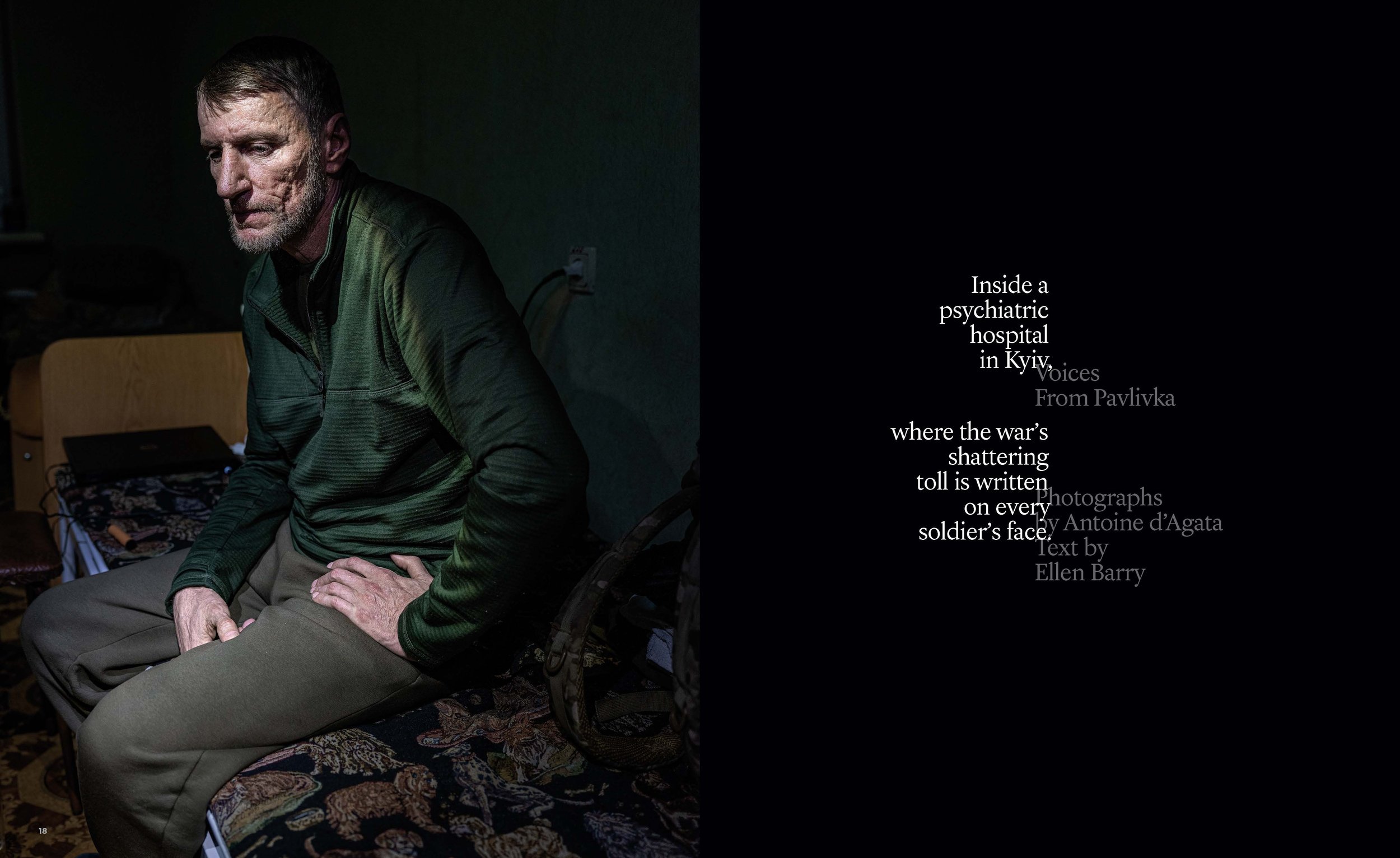
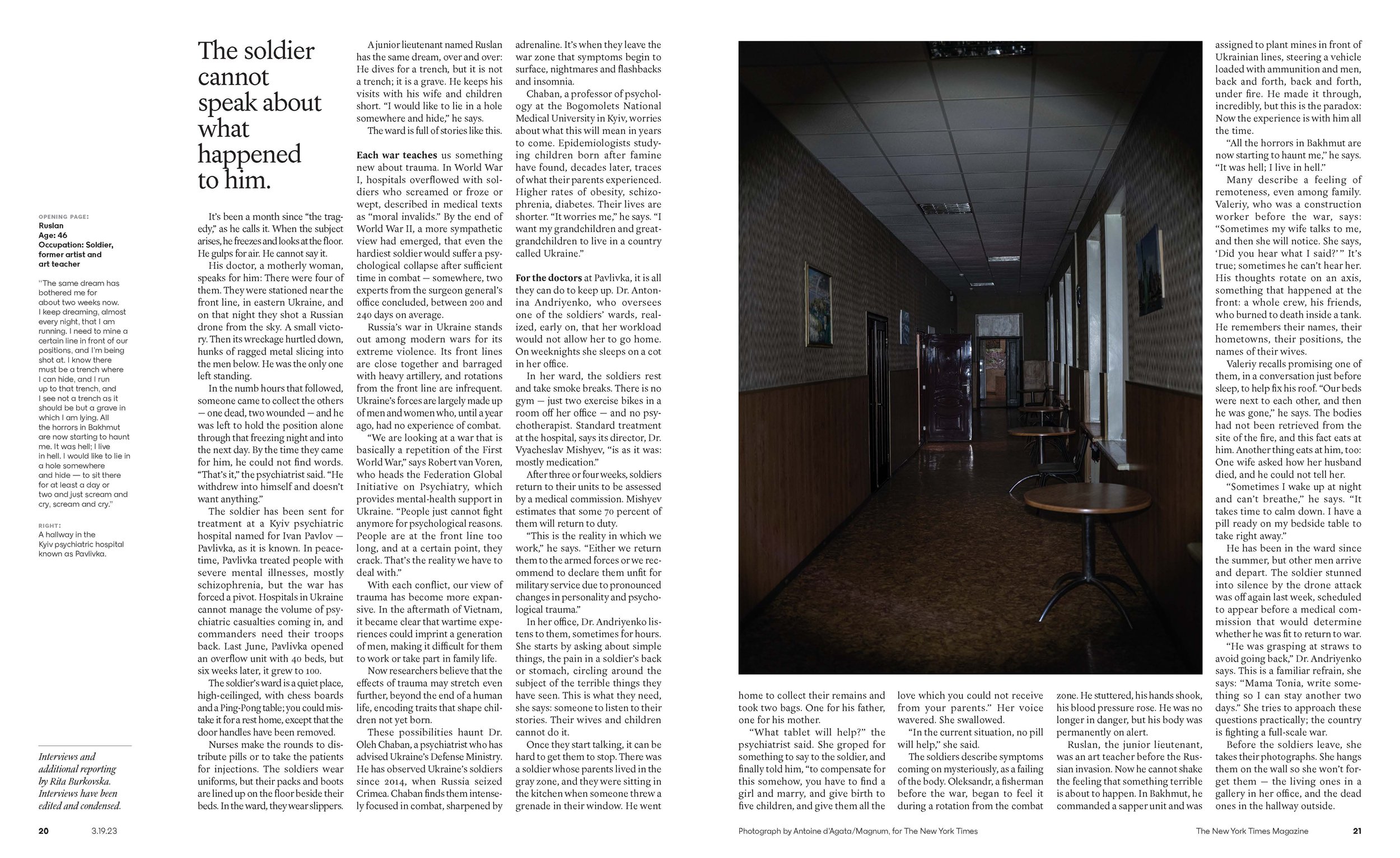

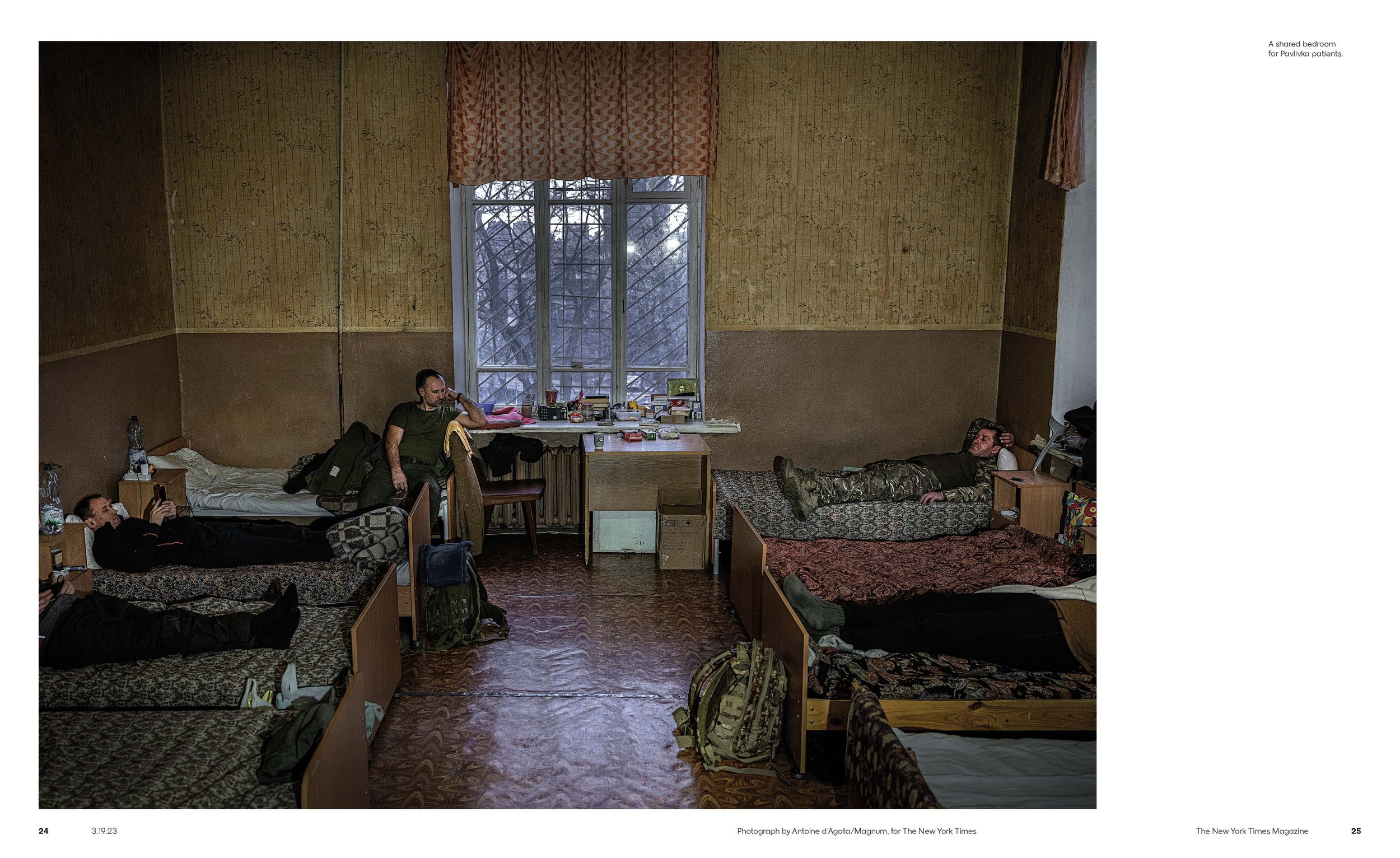
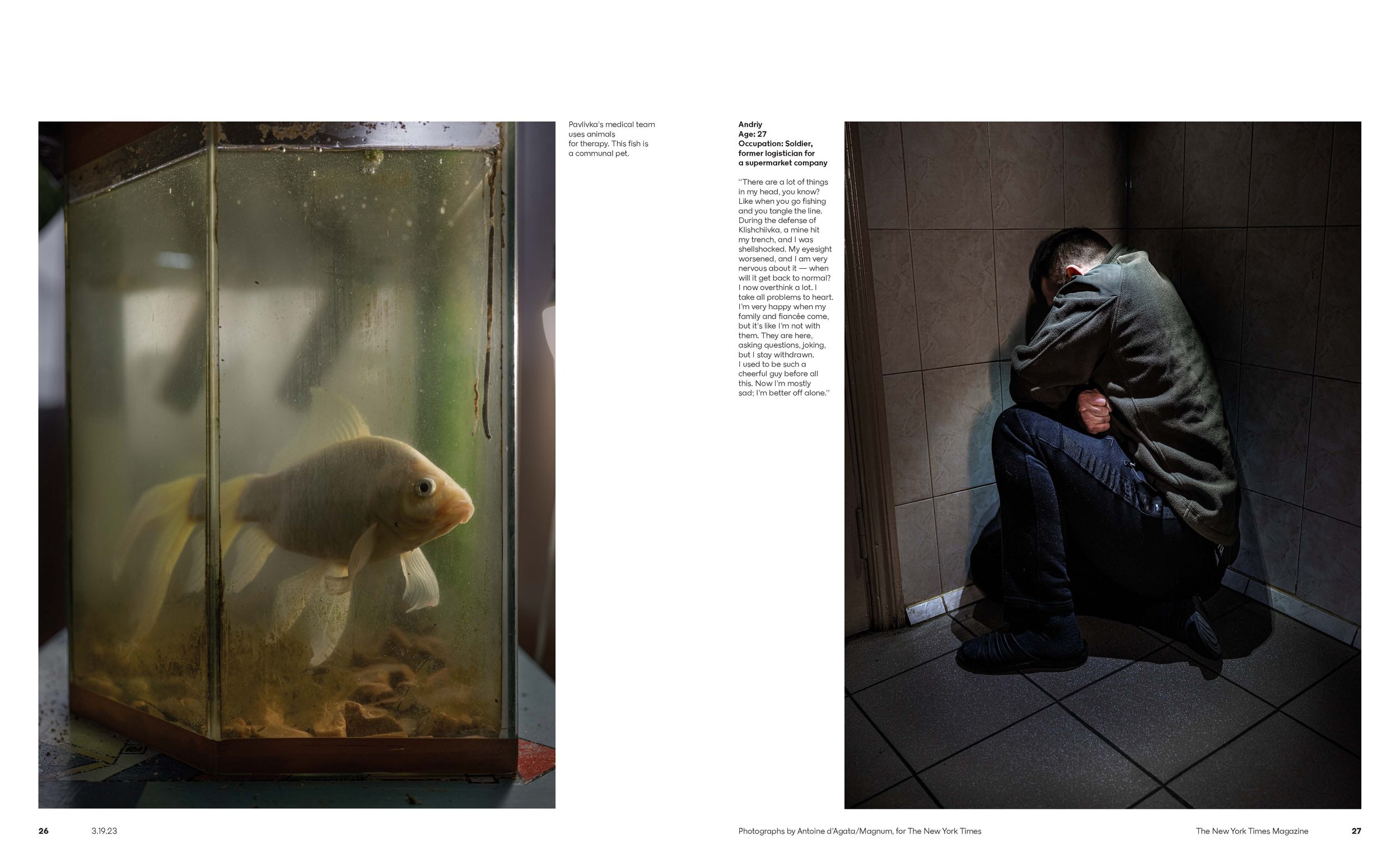

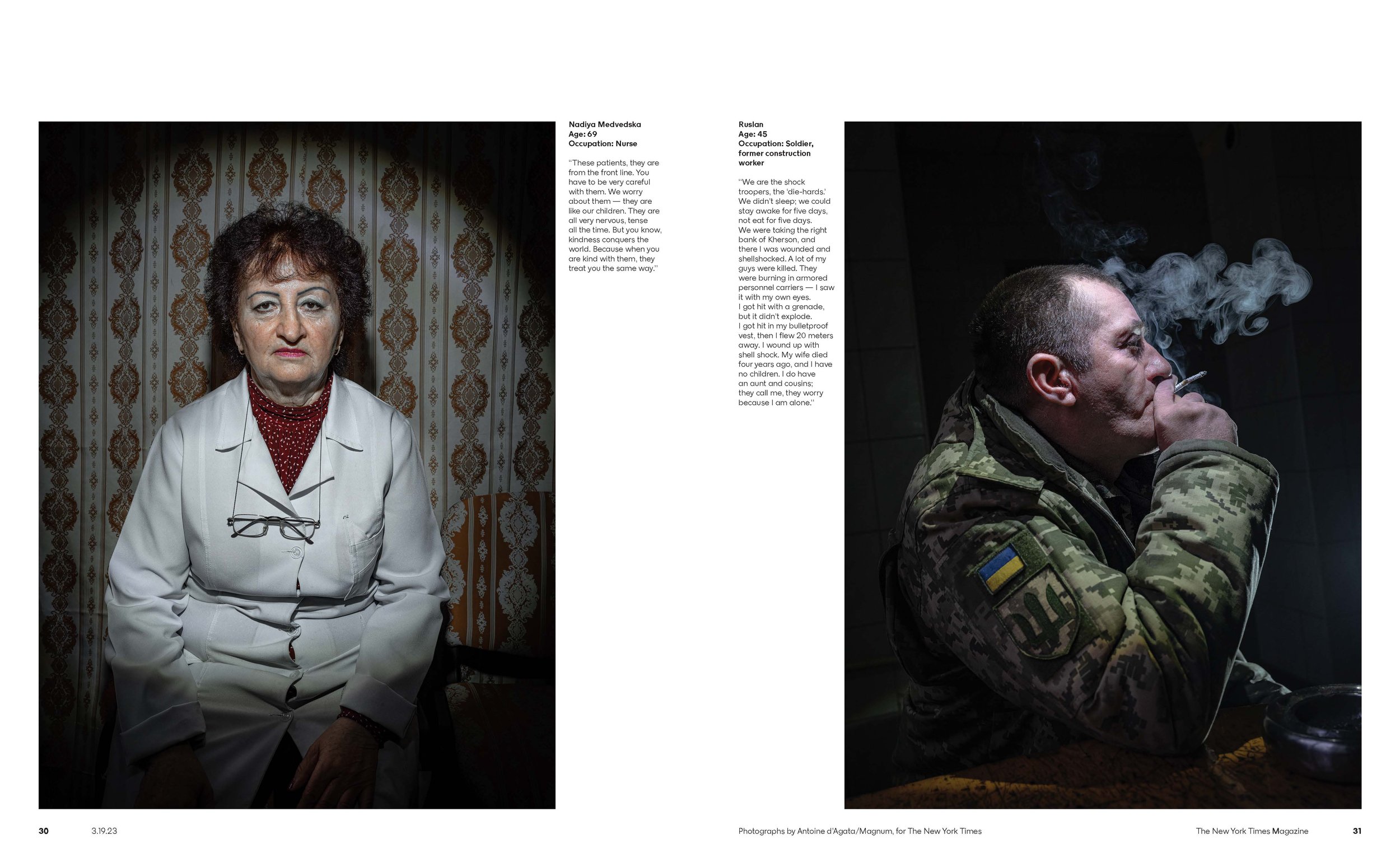
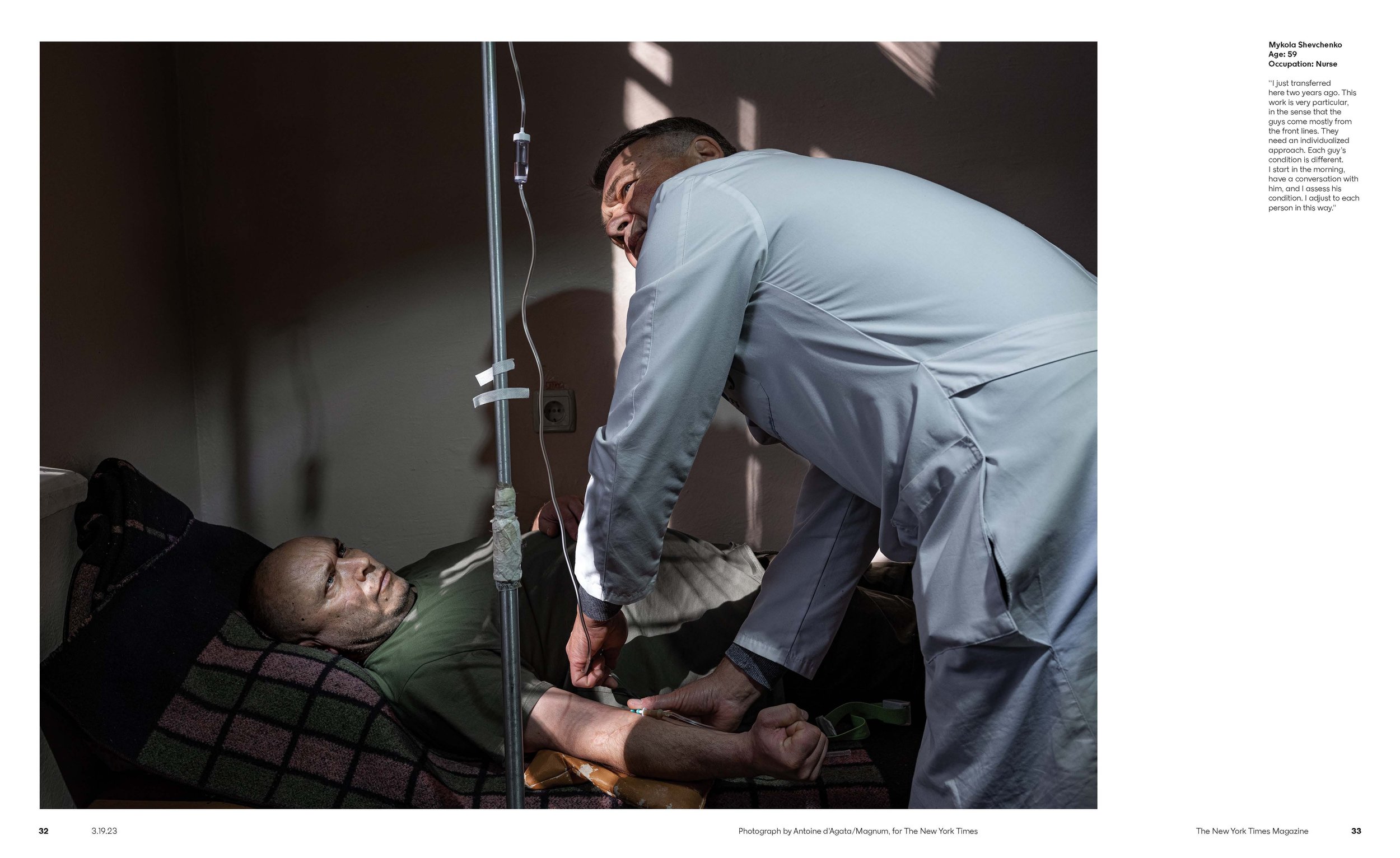
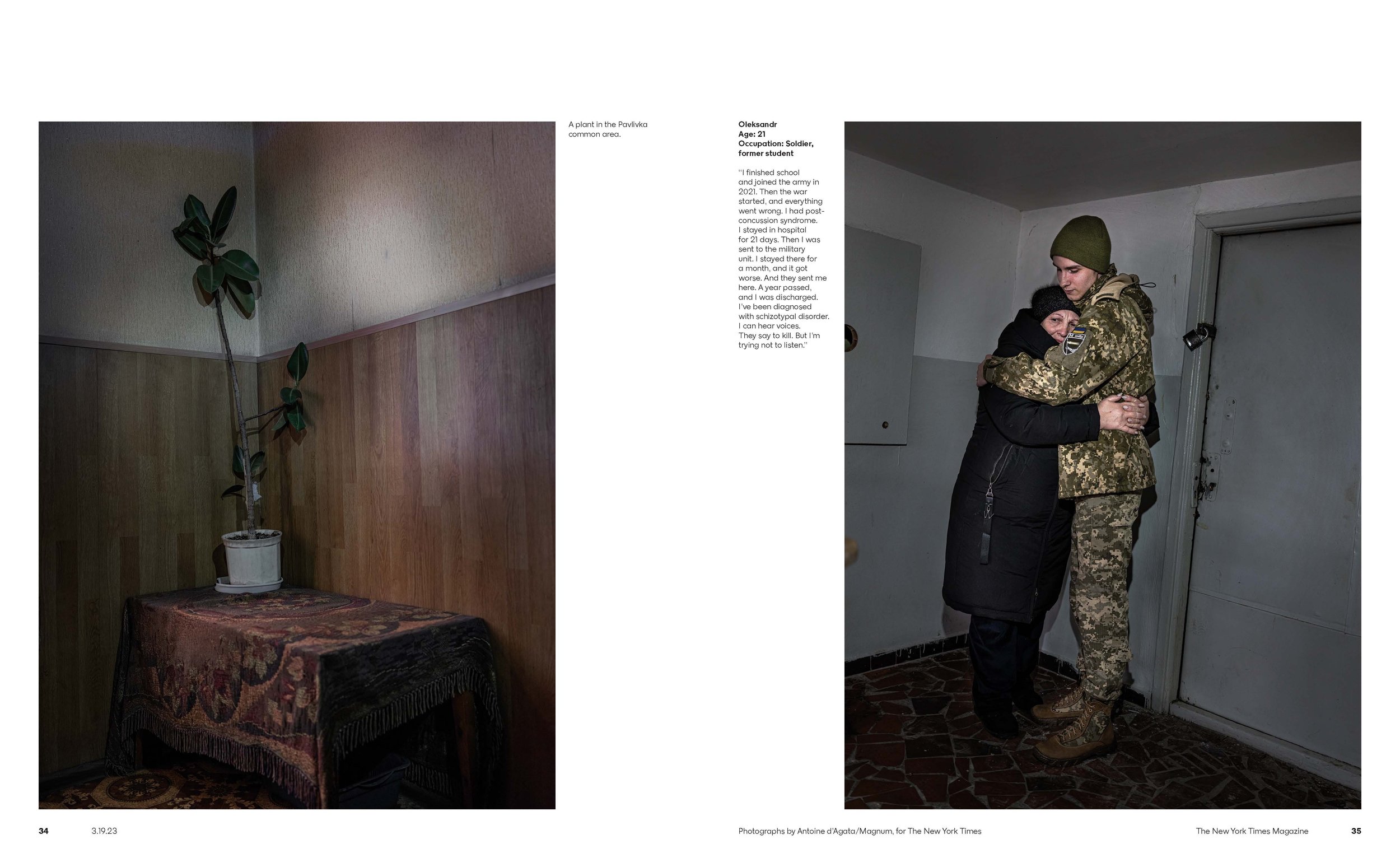
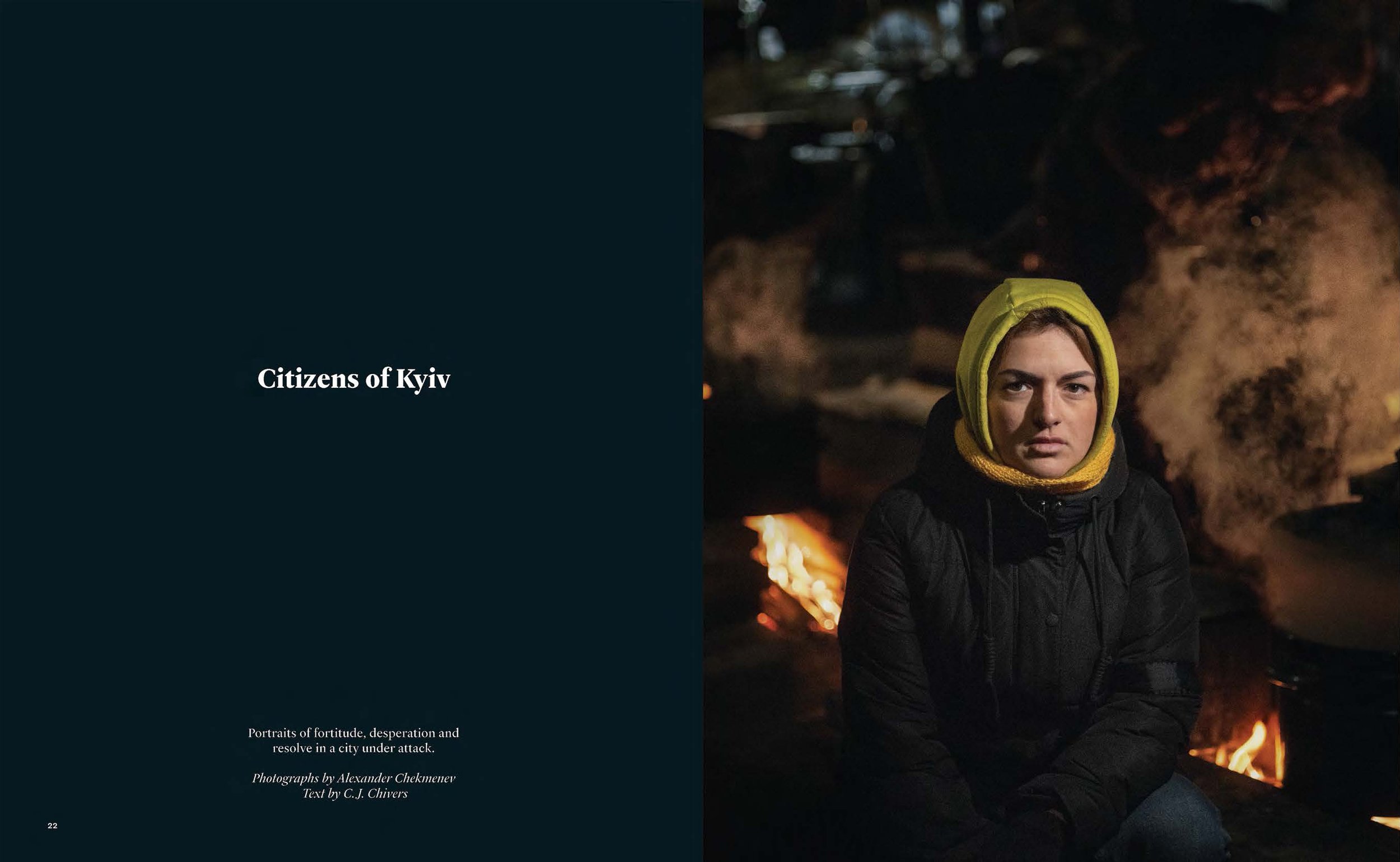
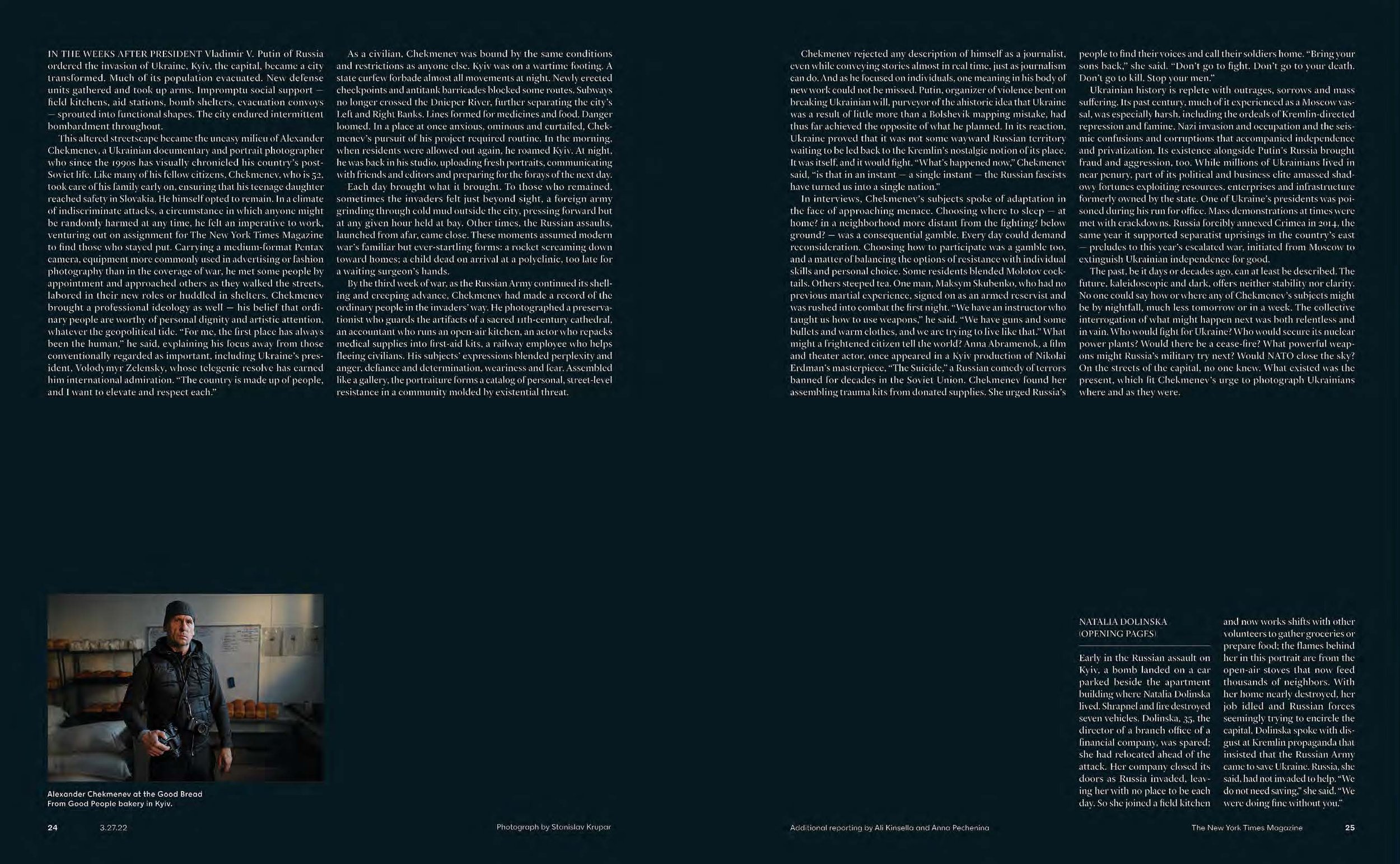

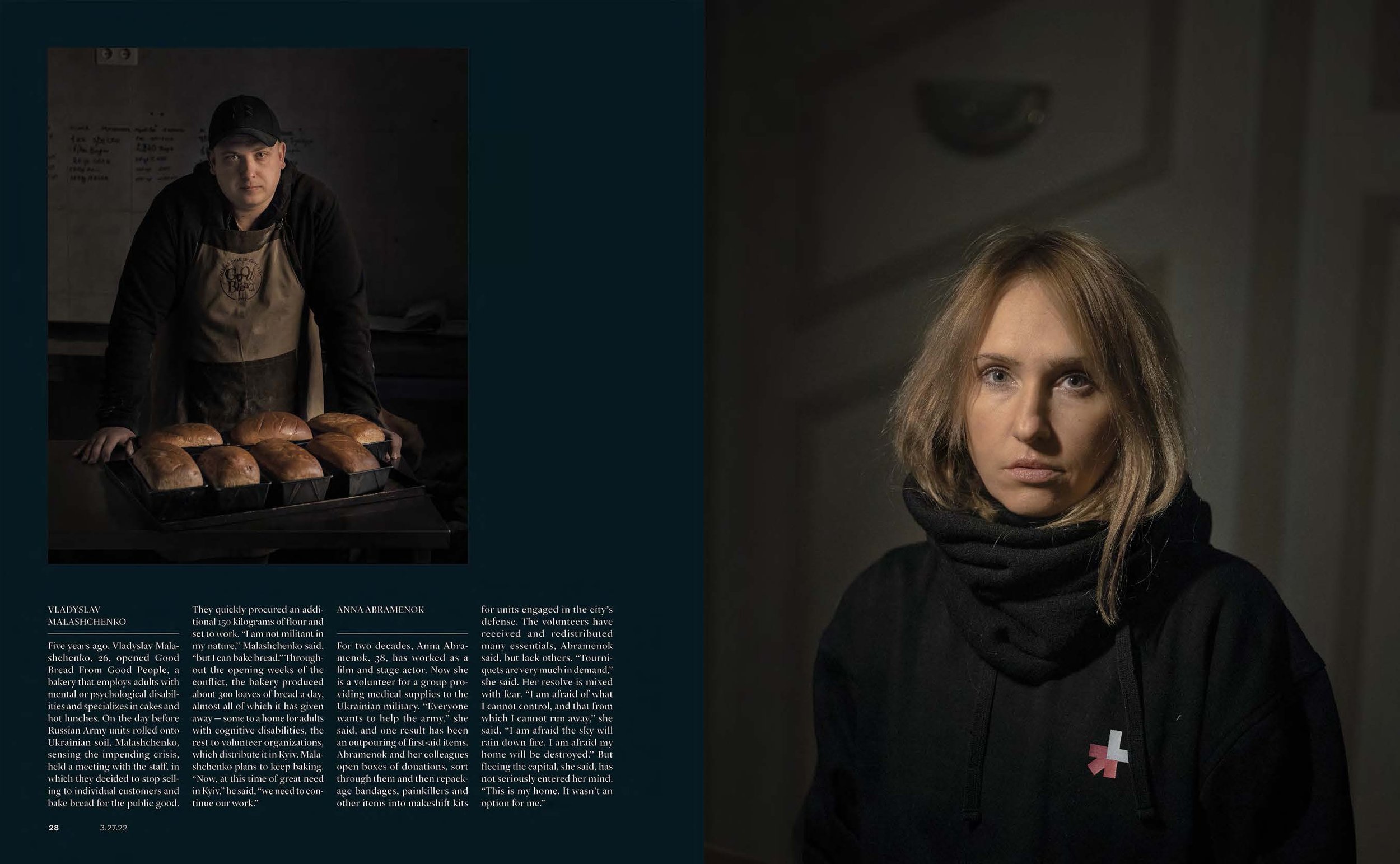
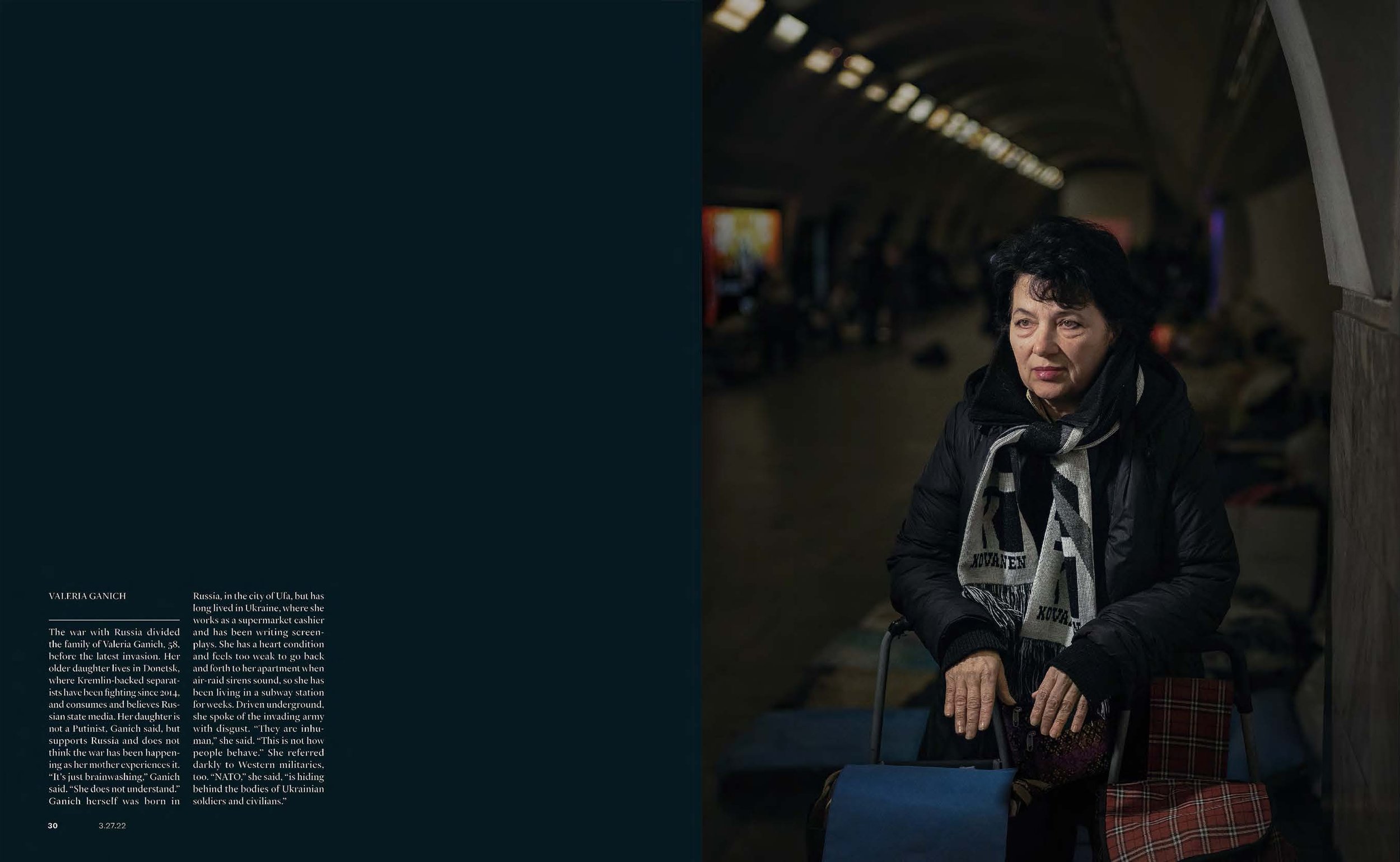
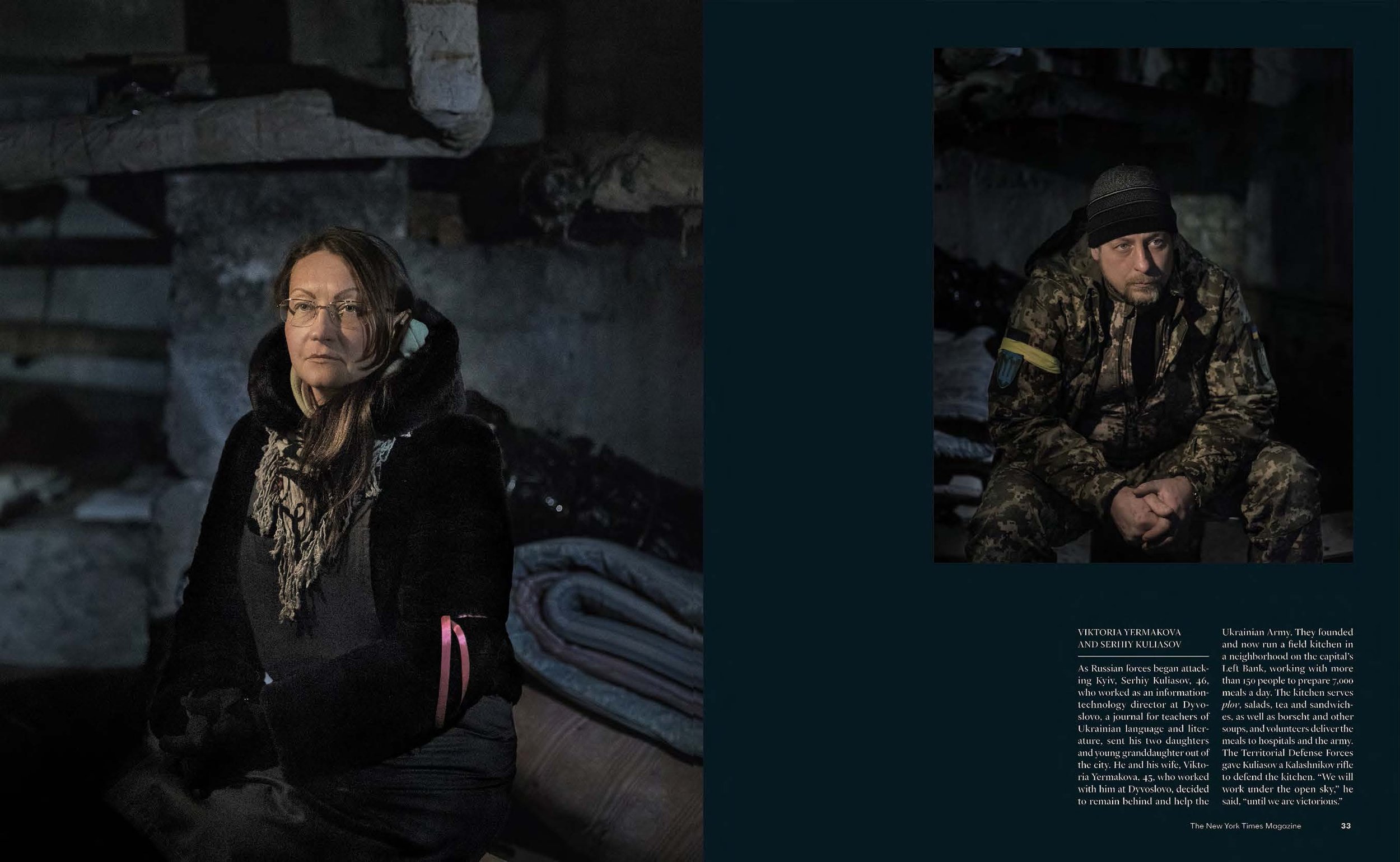
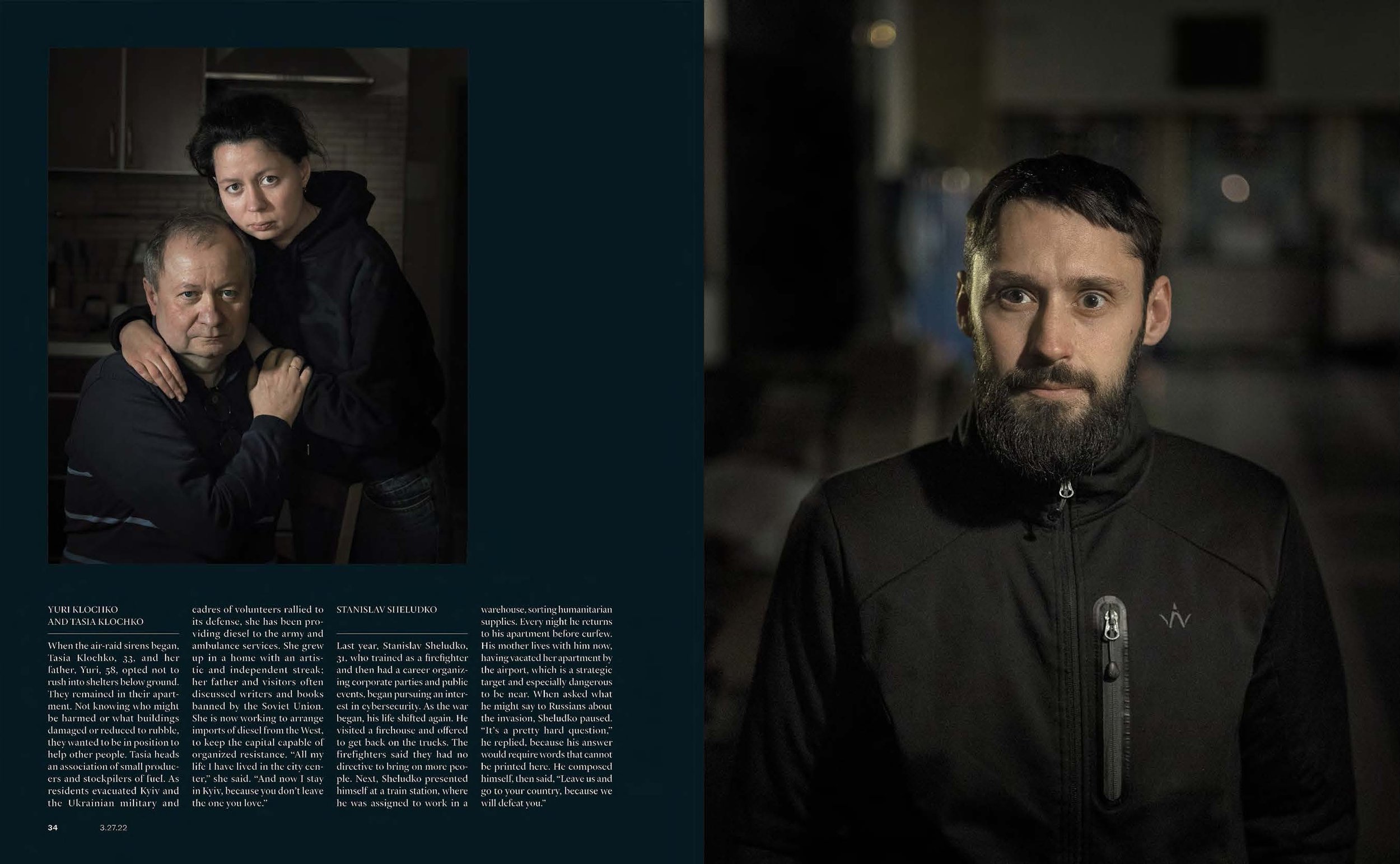


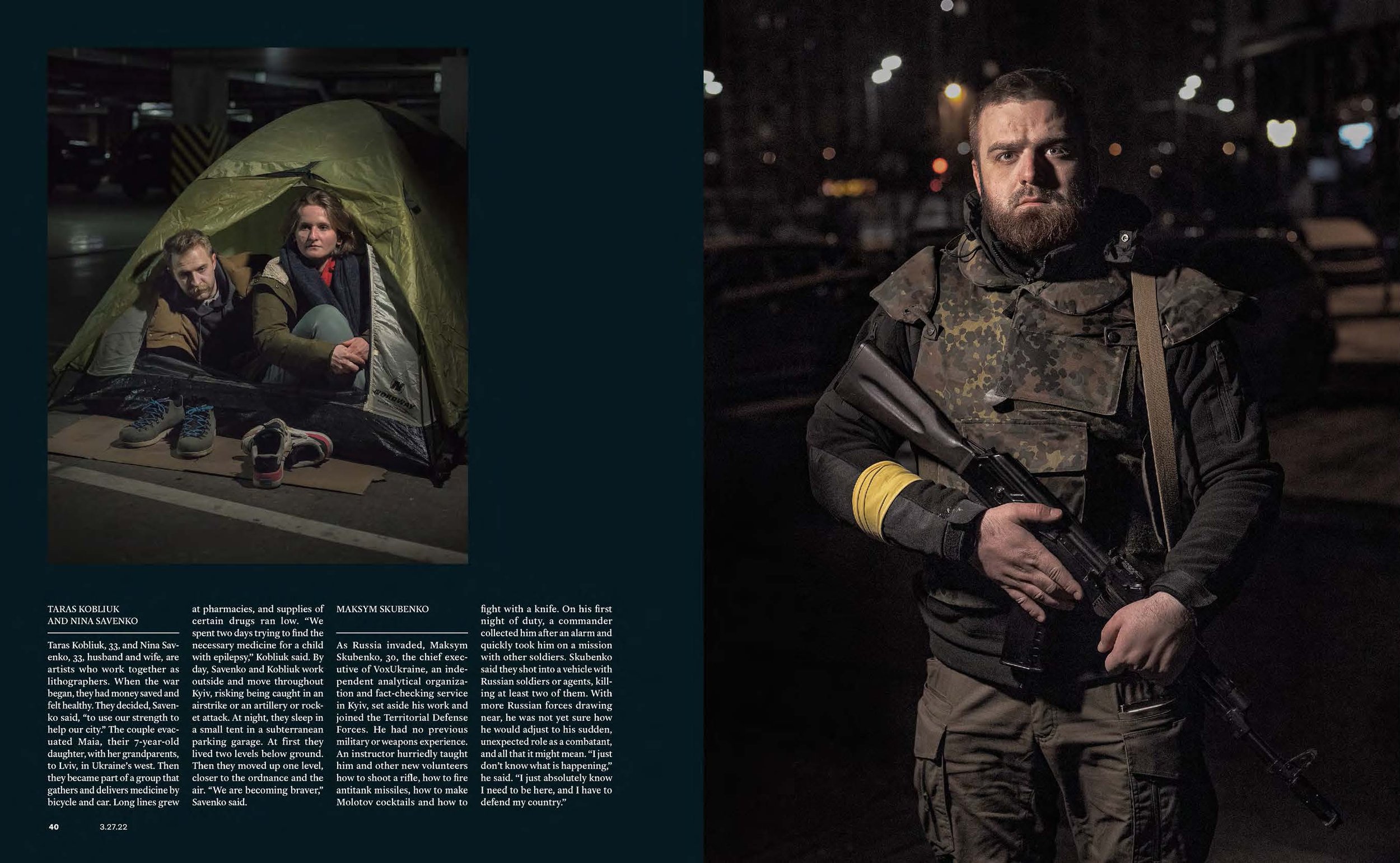



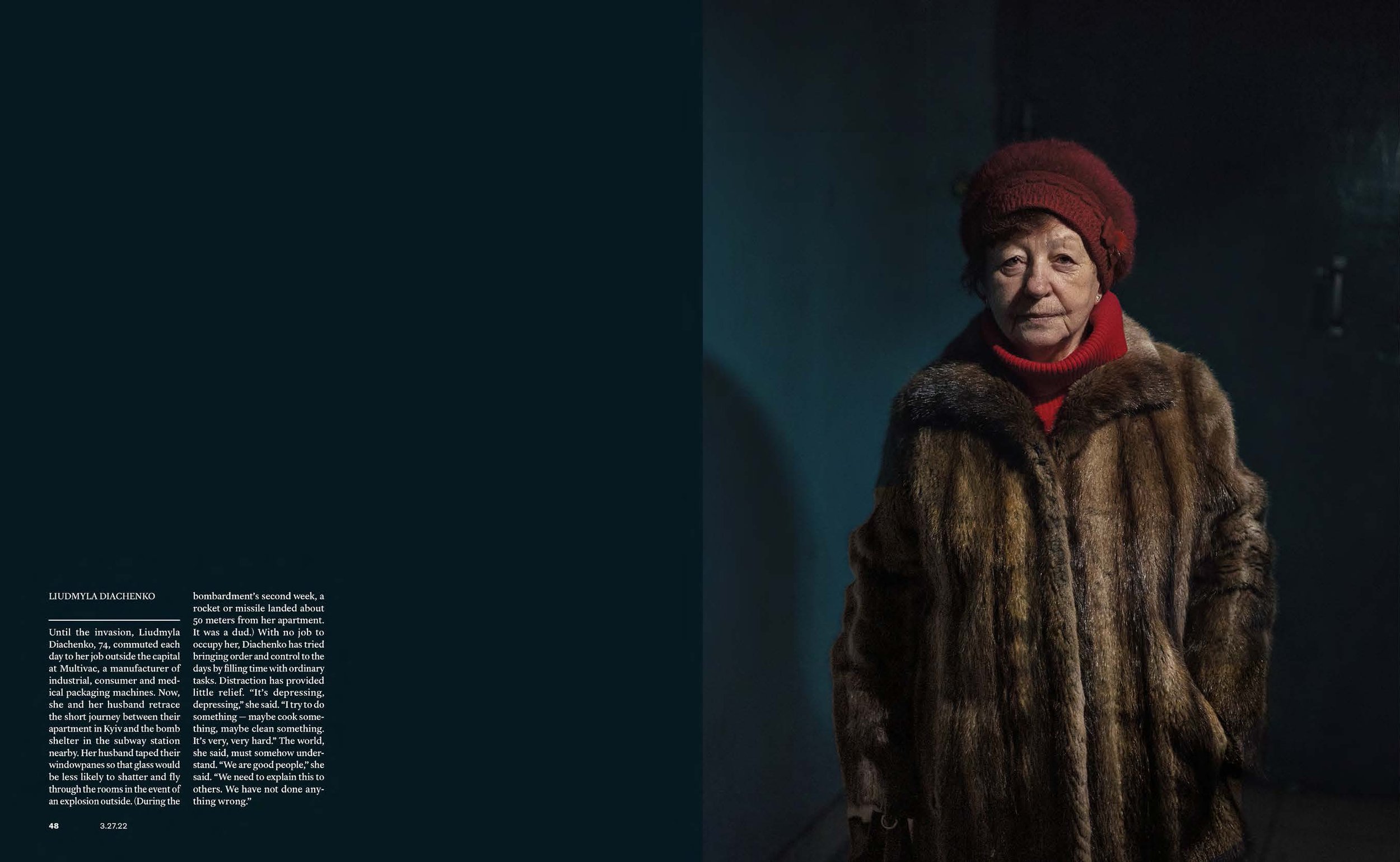
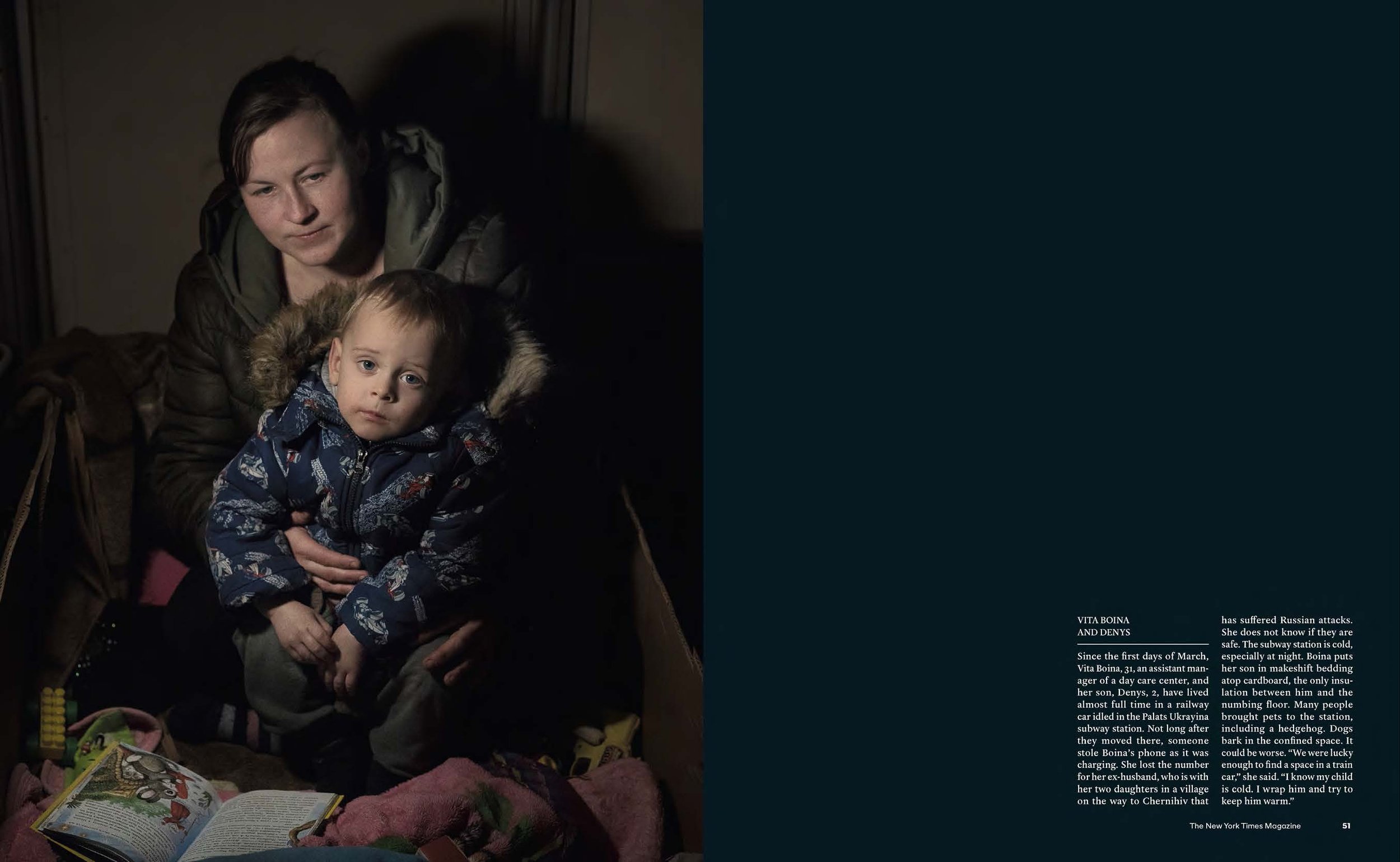
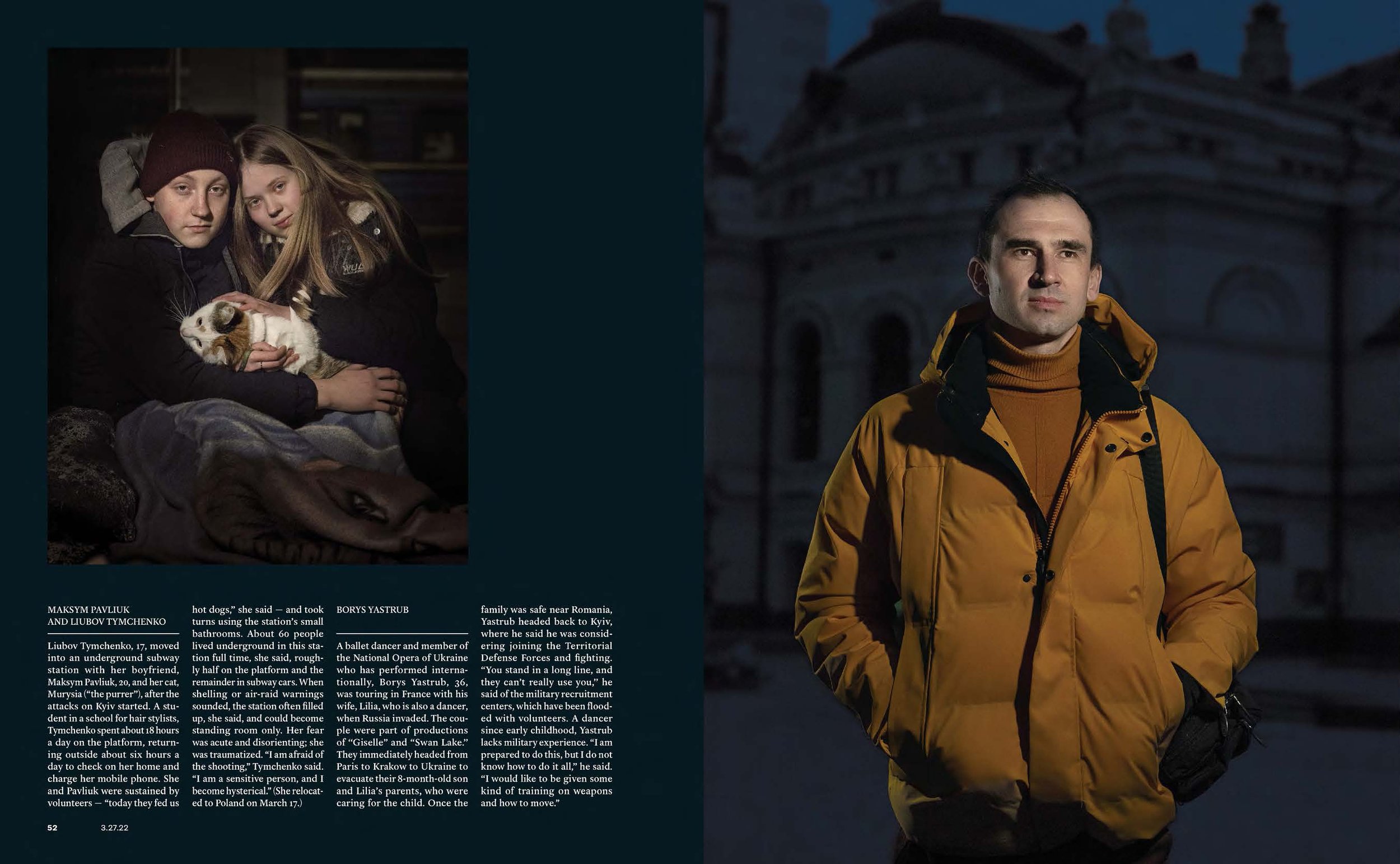
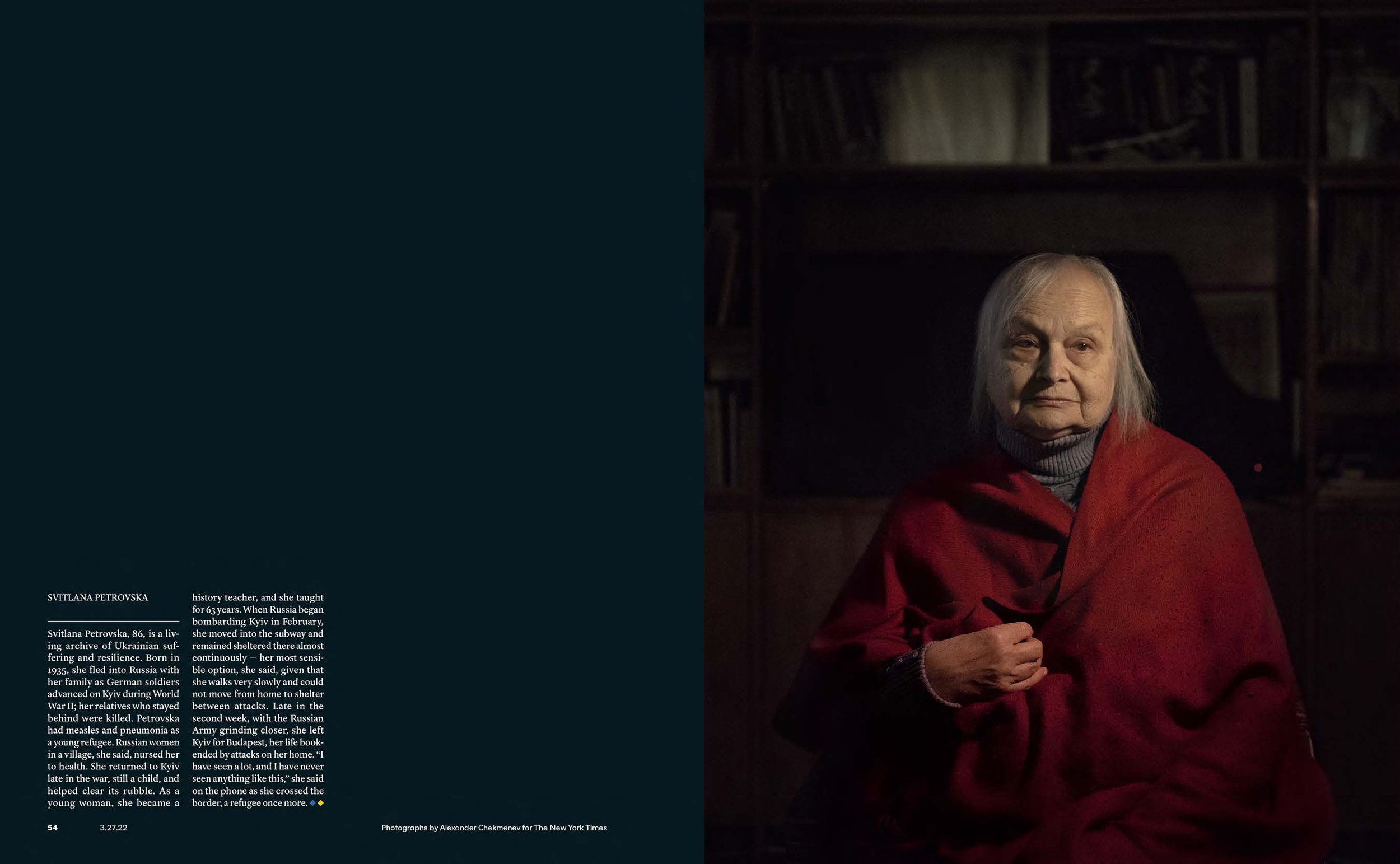
We cover all sorts of subjects. More so than almost any magazine. Our range is very broad—from the big, internationally reported pieces to The Way We Live Now features to the cultural stories. So we kind of cover it all, which, of course, makes it the most exciting job on the planet. Because one minute we’re producing a big shindig in Hollywood, and the next minute we’re doing something far more serious—figuring out how to cover the invasion in Ukraine. But then, of course, the most important decision you make is who’s the best photographer for the assignment.
And then figuring out the cover is its own thing. So a lot of my time, and Gail’s, and Jake’s, and our team’s, is spent figuring out what we should try to do for the cover. And right away: Is it photography? Is it illustration? Is it a photo illustration? Do we think this is a story that we want to go documentary? So that gives you some idea.
The other day I was talking with Jake and he said something I thought really made sense. He said, “Basically we do three things. One is artistic, obviously. One is the expression of ideas. And then the third is deadlines.” You know, it’s a weekly and I cannot stress enough that it’s always at an accelerated pace.
Just about everything we do is full throttle, meaning as fast as we’re assigning one thing, we’re thinking about the next one. We’re trying to get it lined up.
George Gendron: I’m curious, you talked about the cover. You have one luxury that the rest of us in the mainstream magazine industry have never had, which is you don’t have to worry about newsstand sales. And I think that’s really liberating. And I’m curious about your response to that. So how do you think about the cover? What’s the role of the cover within the Sunday paper?
Kathy Ryan: I think the role of the cover is to stand out. So when somebody opens up their Sunday paper, their bundle, you want the cover to call attention to the stories inside. So I think of it, first and foremost, to get people into the magazine. We’re very aware of how fortunate we are that we don’t have to compete on the newsstand. That has always been a gift because it just means there’s a freedom—the decisions can be made in terms of what’s the best artistic approach.
And Jake is a big believer in that. What does that mean? Maybe it means we can do something a little bit more obscure, less direct. Sometimes we have a chance to play around with more poetic imagery that wouldn’t stand out on a newsstand, but it’s a really thoughtful, beautiful picture.
Many of the conversations that we have, between me and Gail and our design and photo teams, have a lot to do with that. What works as a cover image is often different. But then again, our covers vary widely. There’s not a look to them because one week it’s our Great Performers portfolio that we do once a year, pegged to the Oscars. And then another week it might be pure documentary photojournalism. So we have a tremendous variety and we try to shift according to the needs of a particular story.
The Joys and Challenges of Sex After 70 Photographs by Marilyn Minter
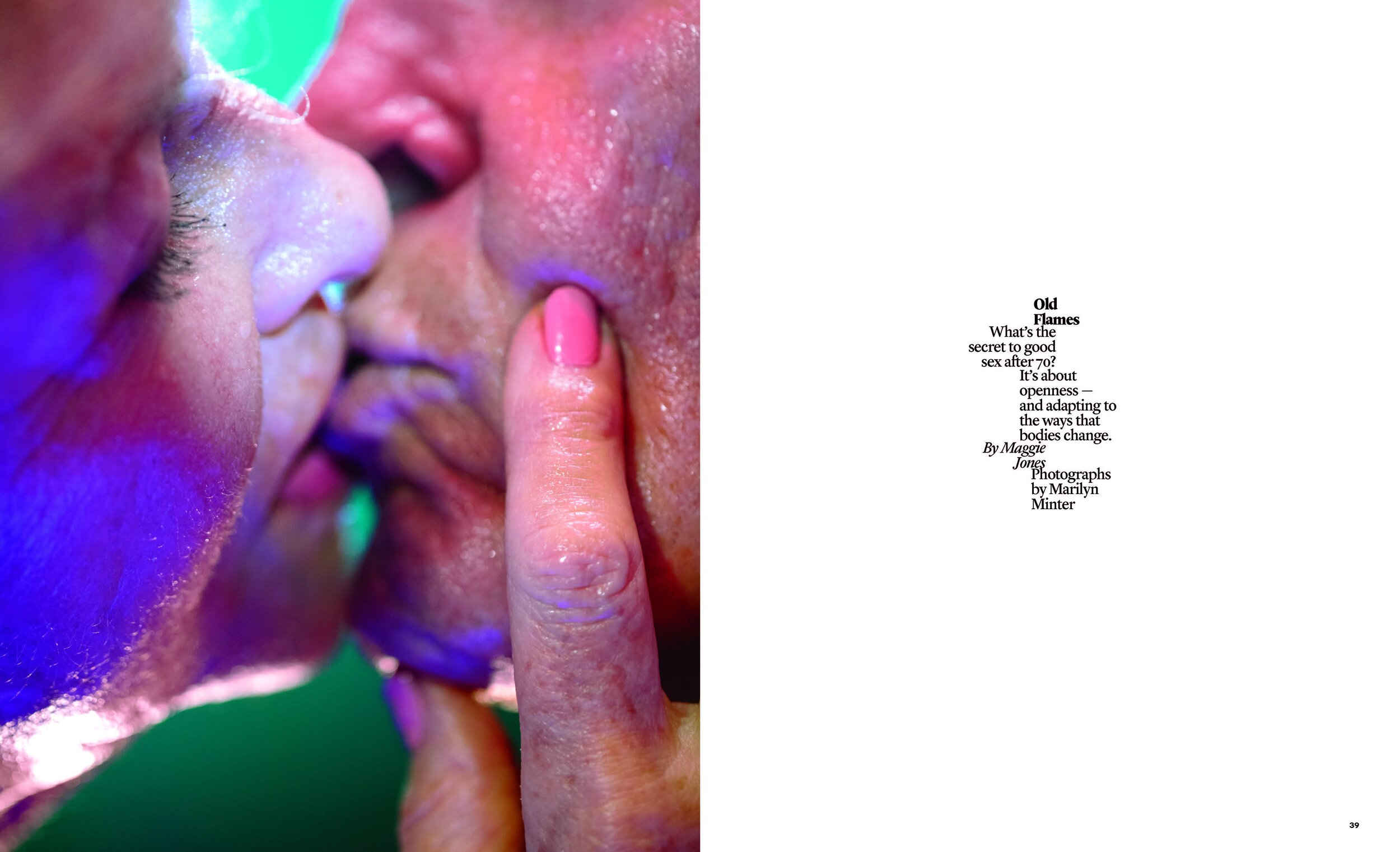
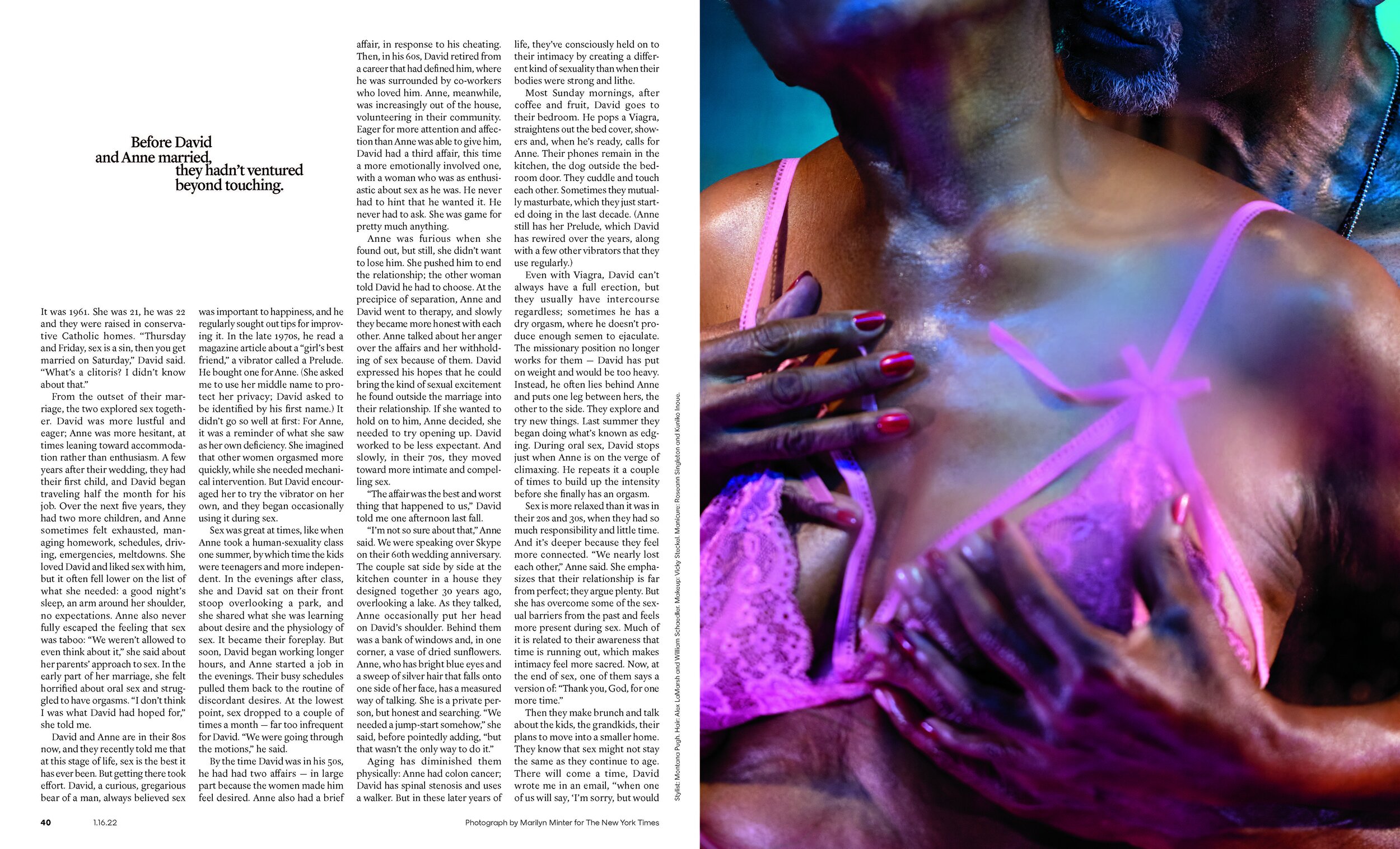
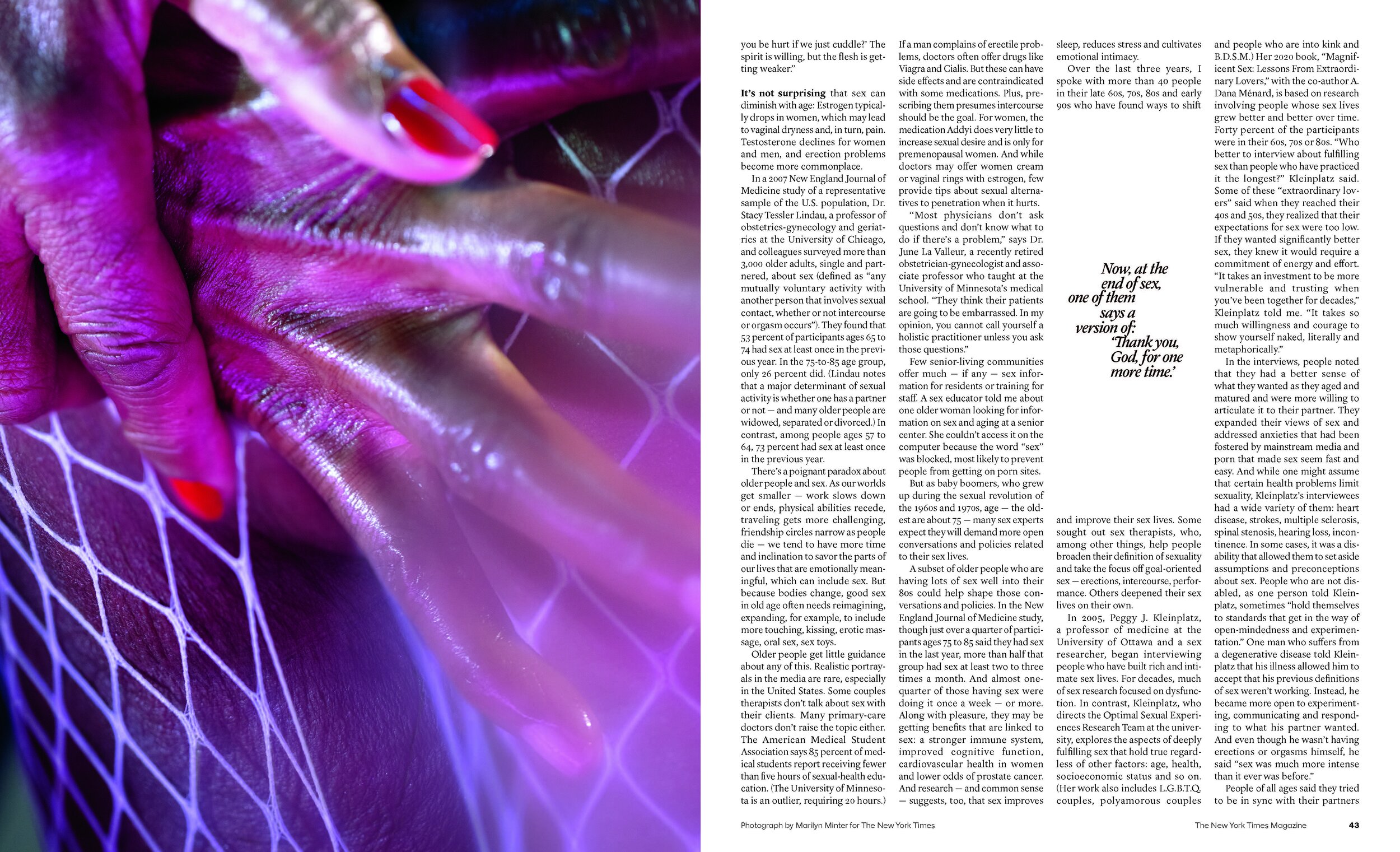
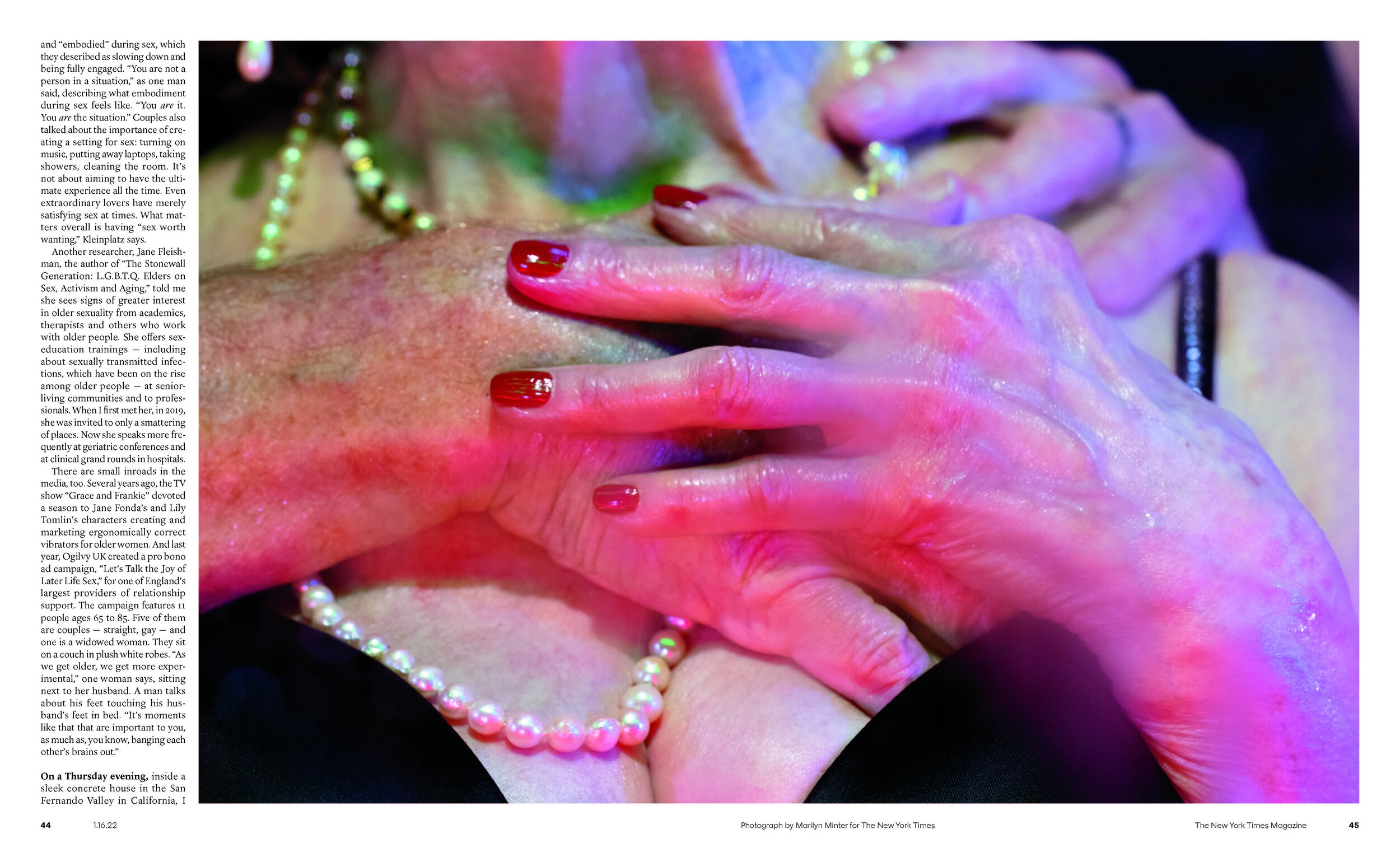
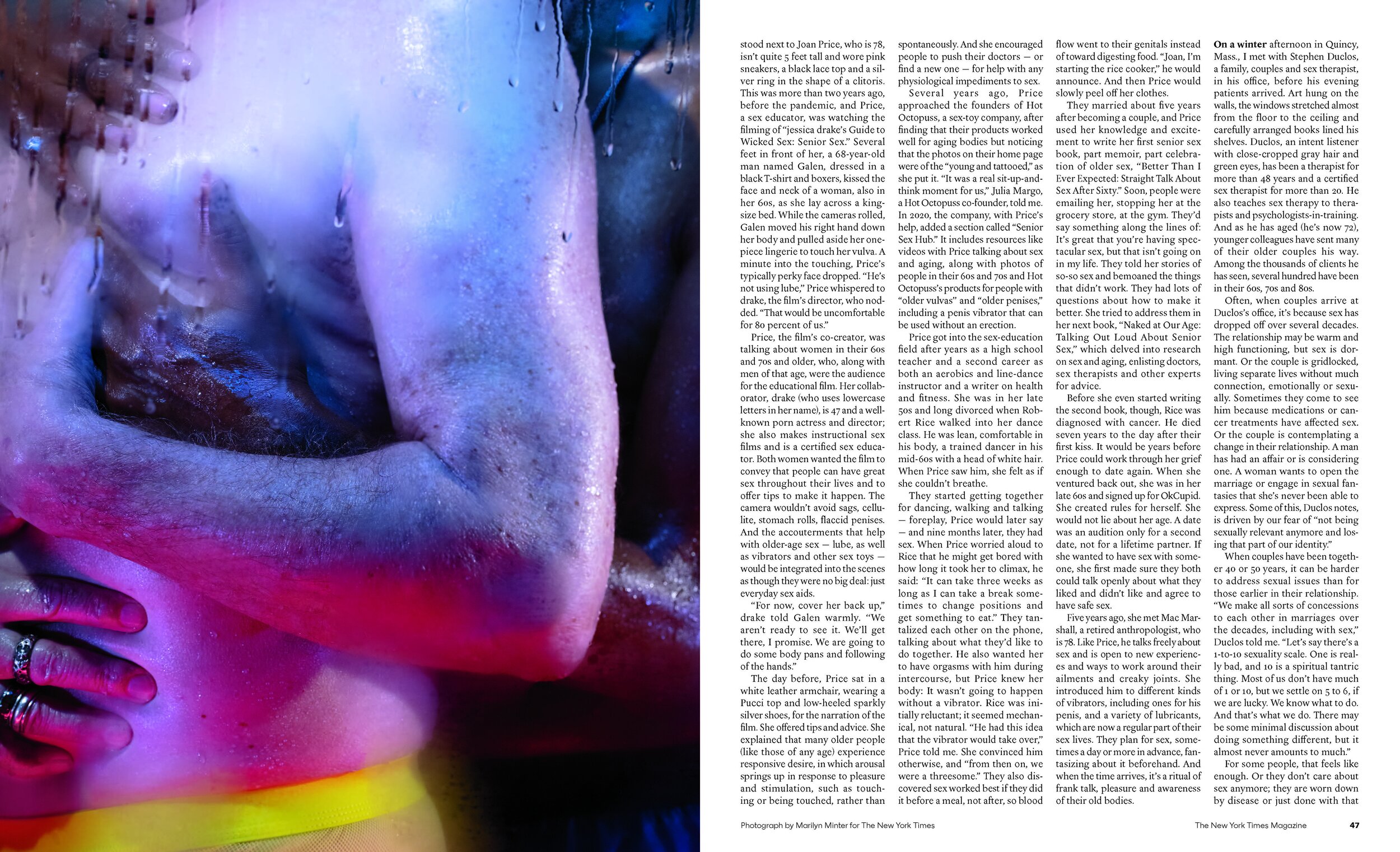
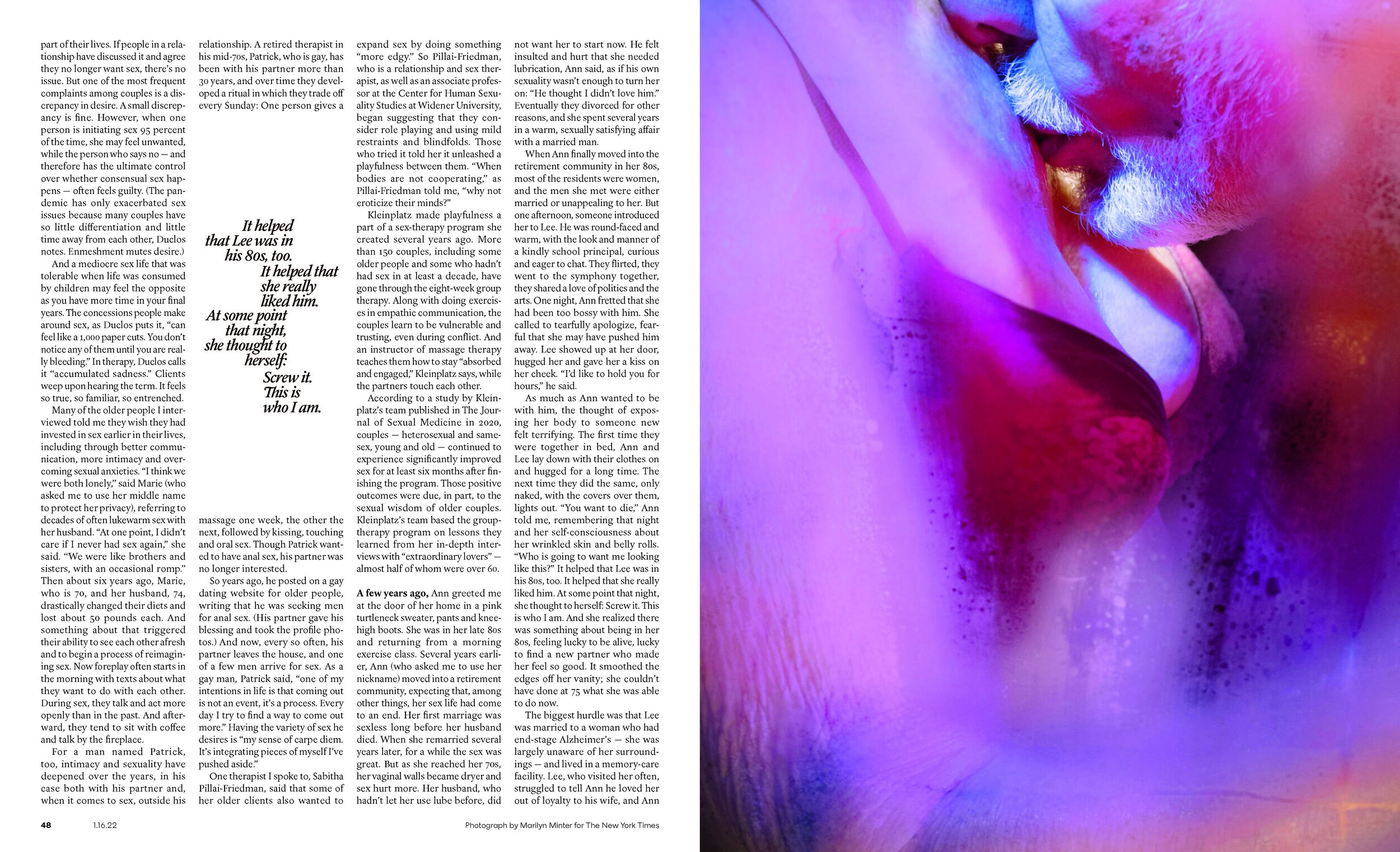
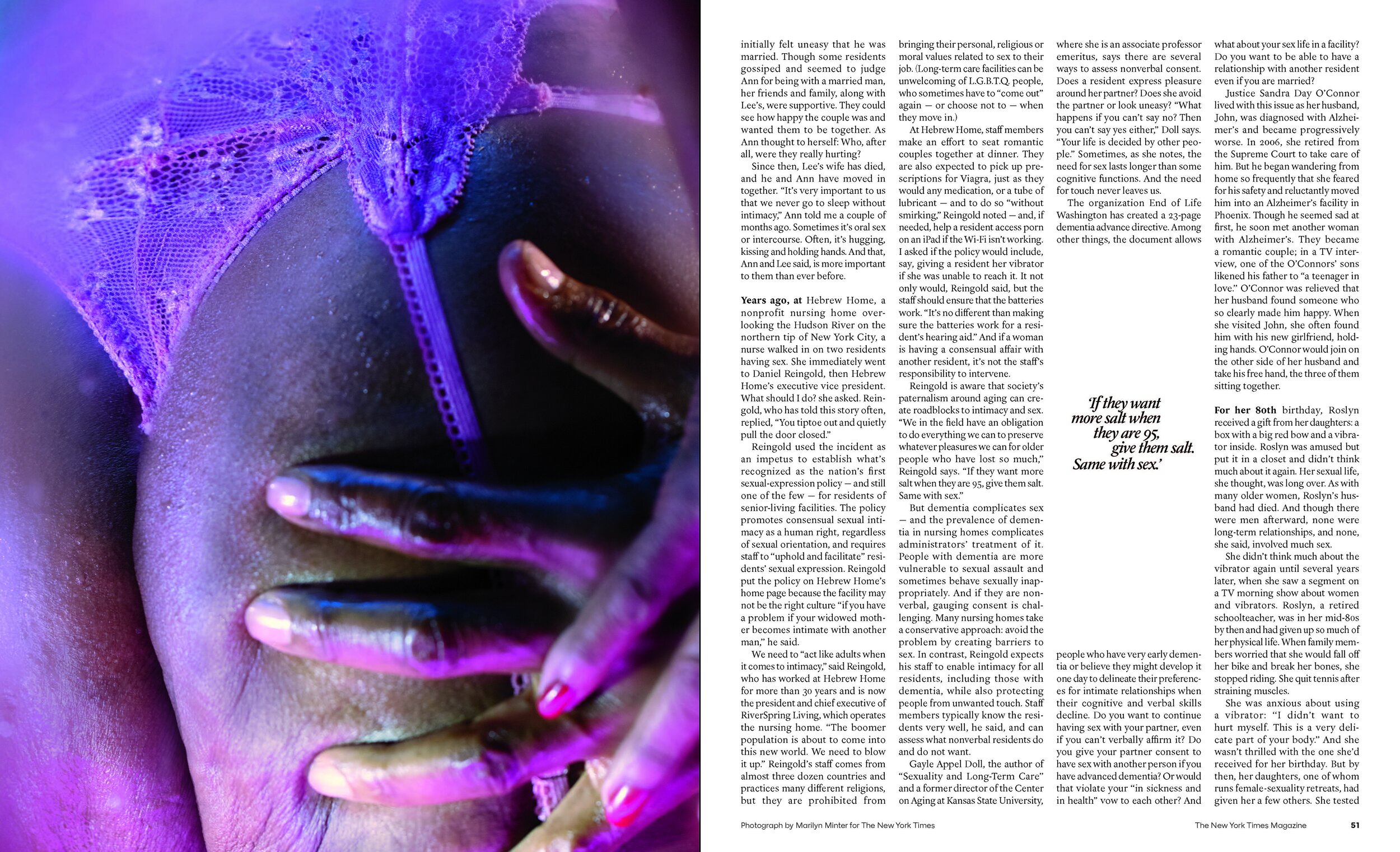
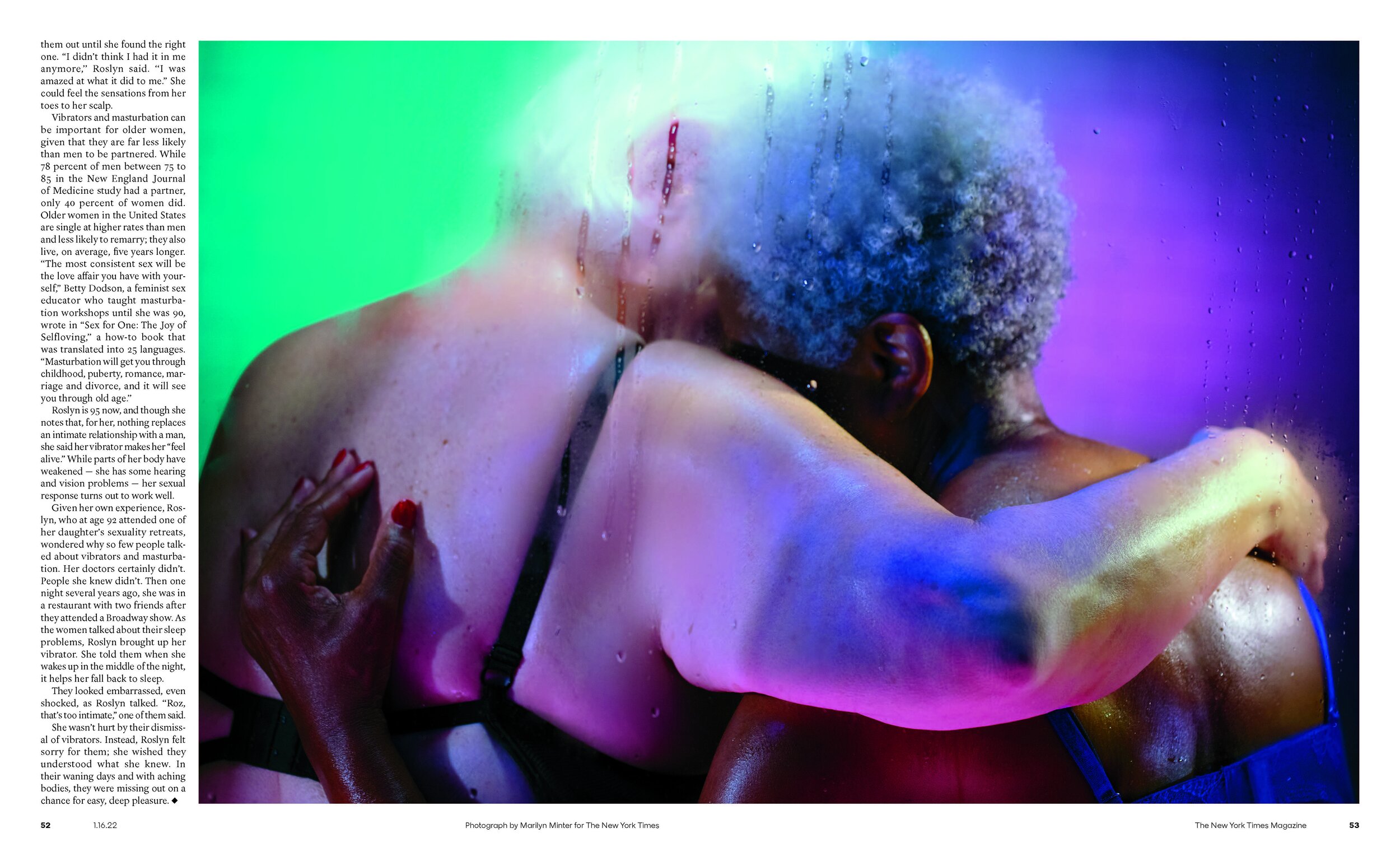
George Gendron: I’m assuming that you must be willing to take certain kinds of risks with your cover. Can you think of a recent one where you and your team felt, “Okay, this is a risk, but this is a risk worth taking”?
Kathy Ryan: Yes. And you have to take risks, otherwise you won’t do something memorable, right? So often it’s when you take a risk that you make something that’s memorable.
I would say this year when we commissioned Marilyn Minter to do our cover story on sex after 70, there was a risk in that. And it was exciting. It was thrilling. Who knows what’s going to happen? Anytime you assign an artist—somebody like Marilyn Minter, who spends her time making her own artwork, marching to her own beat, coming up with her own thing she wants to do—it’s a little bit of a different thing than when you’re working with a magazine photographer who completely understands the rhythms.
But it was such a risk worth taking. Why? The subject itself is interesting. I think the headline was “The Joys and Challenges of Sex After 70.” And she’s a terrific artist who—it’s her territory. For years she’s been making work—early on feminists thought it was pornographic—but she always believed in a very liberated, free-spirited approach to sexuality and her artwork.
And I knew already from having worked with her before that she could rise to the occasion. She totally would. She’s just, she’s both the free-spirited, no-holds-barred, do-her-own-thing, artist. The rebel, as it were. And she also understands The New York Times. Like, going into it, that was the feeling.
And we had a lot of fun. David Carthas was the photo editor on the project and he produced the whole thing, which basically meant casting. We worked doing the casting of the people of a certain age, which was its own challenge. And then it was a couple days in the studio in New York with Marilyn and there was a risk. Who knows? Not only are we working with this artist, we’re working with people who are semi-nude. They’re in lingerie and, on the other hand, it was a high-impact cover. And I got a kick out of it because, when you look at the comments, there were people who loved it, loved it, and people who hated it.
And that’s an interesting place to be. How often do you do that with a magazine cover? It got a strong response. That’s the best. That’s the best, right? You know that from what you were just talking about—if you can take a risk like that, but of course you have to, especially at The New York Times, you have to do it in an intelligent way.
With this subject, it seemed like we could take that kind of risk. If we’re covering an extremely important, of-the-moment political story, that’s not a moment when you’re going to go and do something artsy, highly creative, risky, right? Because there’s certain other criteria we have to meet. That the cover needs to accomplish. And journalistically it goes into a different zone. But, we’re lucky enough that sometimes, after years of doing this, I have a sense of where there’s some latitude. And obviously, working with Jake and Gail and the team, Is this one where we can do something fun?
Every year we do a voyages photo issue, usually in the fall. And this year the theme for it was animals. And it was an idea that Amy Kellner, one of our picture editors had. She had been pitching doing animals for years.
And this was the year it got the green light. And this is always, for us, particularly exciting because the photo team gets to drive it to a large extent. And we started figuring out ideas along with story editors.
And one of the ideas that Sam Anderson, one of the writers, pitched was the Icelandic ponies. They have these funny small horses in Iceland that people love, and so that was one of the five or six photo essays that we commissioned. And I was thinking right away, Okay, if we’re going to do animals, we have to do something different.
“It all starts with somebody having the ability to compose the chaos of the world within the frame, the ability to see light. Because photography is always about light.”
So brainstorming with Amy, she said something like, “Maybe we should show them like they’re, like, My Little Pony Rainbow Ponies.” I was like, “Yes!” And then I thought of Gareth McConnell. A brilliant Irish photographer who does these fabulous—his pictures have an “otherness.” They breathe and shimmer with something else. Like he’s often doing still lives of flowers, his own personal work. They’re magnificent and there’s a shimmer to it, and the color comes out of darkness. Anyway, I could just imagine if we took him to those horses, he would do something magical.
In other words, it’s a way of saying his vision sees the magical and transcendent in the world. And we lined it all up. Rory Walsh on our staff and Jessica Dimson found the best horses in Iceland, worked the access to that, and then we worked with them to black out the whole stable.
So anyway, Gareth did brilliant pictures and one of his photos was ultimately the cover. And it was this fabulous multi-colored horse, slightly out of focus, coming out of darkness. That’s when I think we’re at our best, where it’s unexpected because instead of just seeing the beautiful, natural horse, we had a wonderful back and forth. And I just felt like, “Hey, this is a chance we can transform it into something.” So we love to do that, if we can.
George Gendron: It’s interesting listening to you talk because one of the things that people have said about the magazine, and you in particular, is that you seem to challenge the boundary between photojournalism and fine art in a way that I’m not sure magazines have very often.
Kathy Ryan: I think that’s right. It was something I picked up on early in my career. And I got very excited by that because it allows the magazine to look different, to do something unexpected. Artists sometimes tap into something. In portraiture, it’s an undercurrent of what somebody’s psychological being is. They sometimes have what I think of as a sixth sense, as do, sometimes, photojournalists.
Like sometimes an artist has developed a universe of imagery that works for us. And that’s what’s fun about it. Just knowing that. And then sometimes you can do the reverse, where you take someone pure documentary—years ago, I had Paolo Pellegrin do the Great Performers portfolio, all documentary, behind the scenes with the actors.
And that was just great because he would not normally be doing that. So he goes in there with a whole other frame of reference. The tricky thing is there’s certain stories that it works. Like you would not do that with a major conflict story obviously, or a major issue-oriented story.
Those are the moments when we would be talking about something entirely different where you have to work with seasoned pros, who know how to navigate that kind of heart-wrenching, difficult, dangerous story and make quick decisions in the field, and obviously, have vision. It all starts with somebody having the ability to compose the chaos of the world within the frame. The ability to see light. Because photography is always about light.
The Voyages Issue: Iceland Photographs by Gareth McConnell
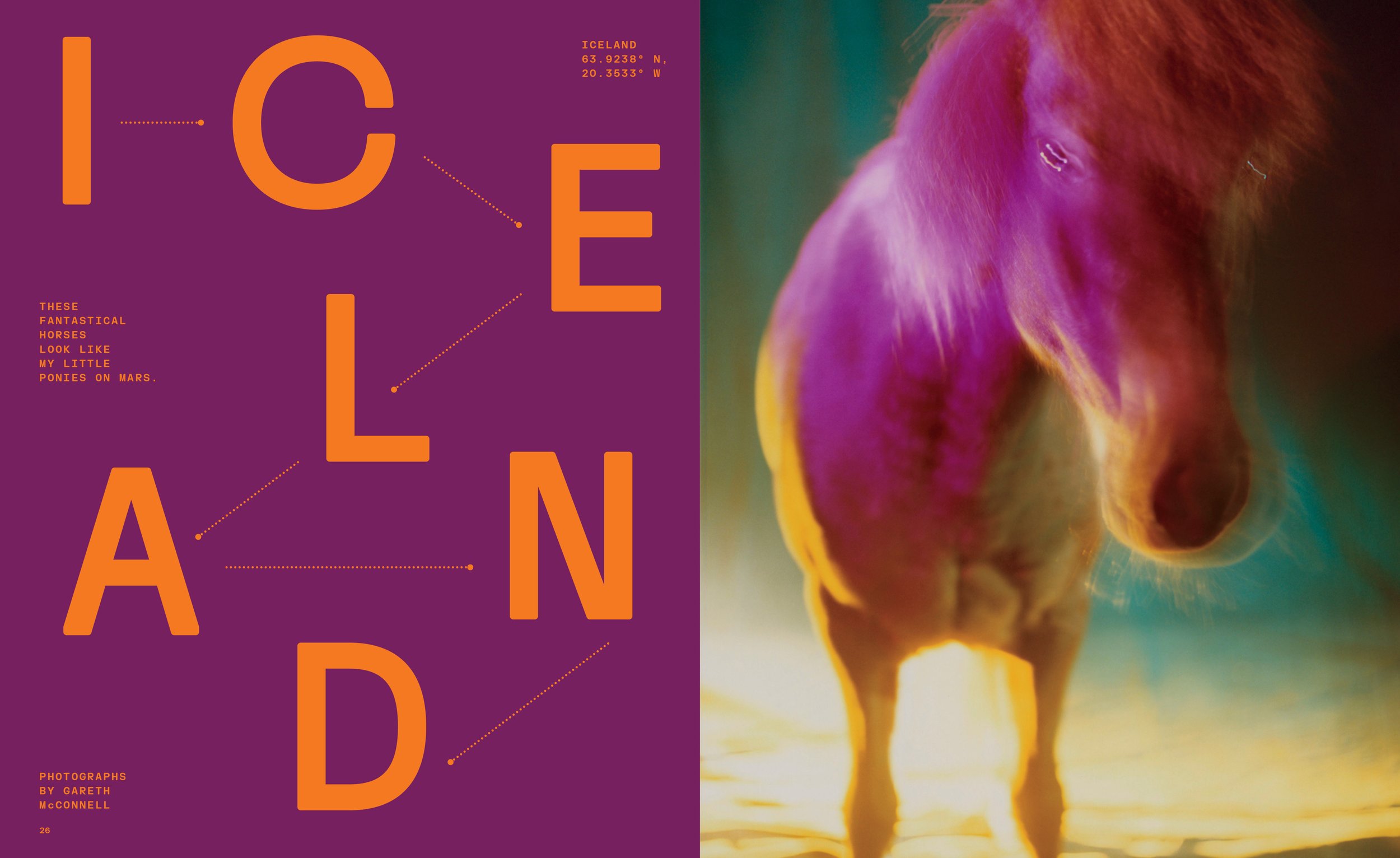
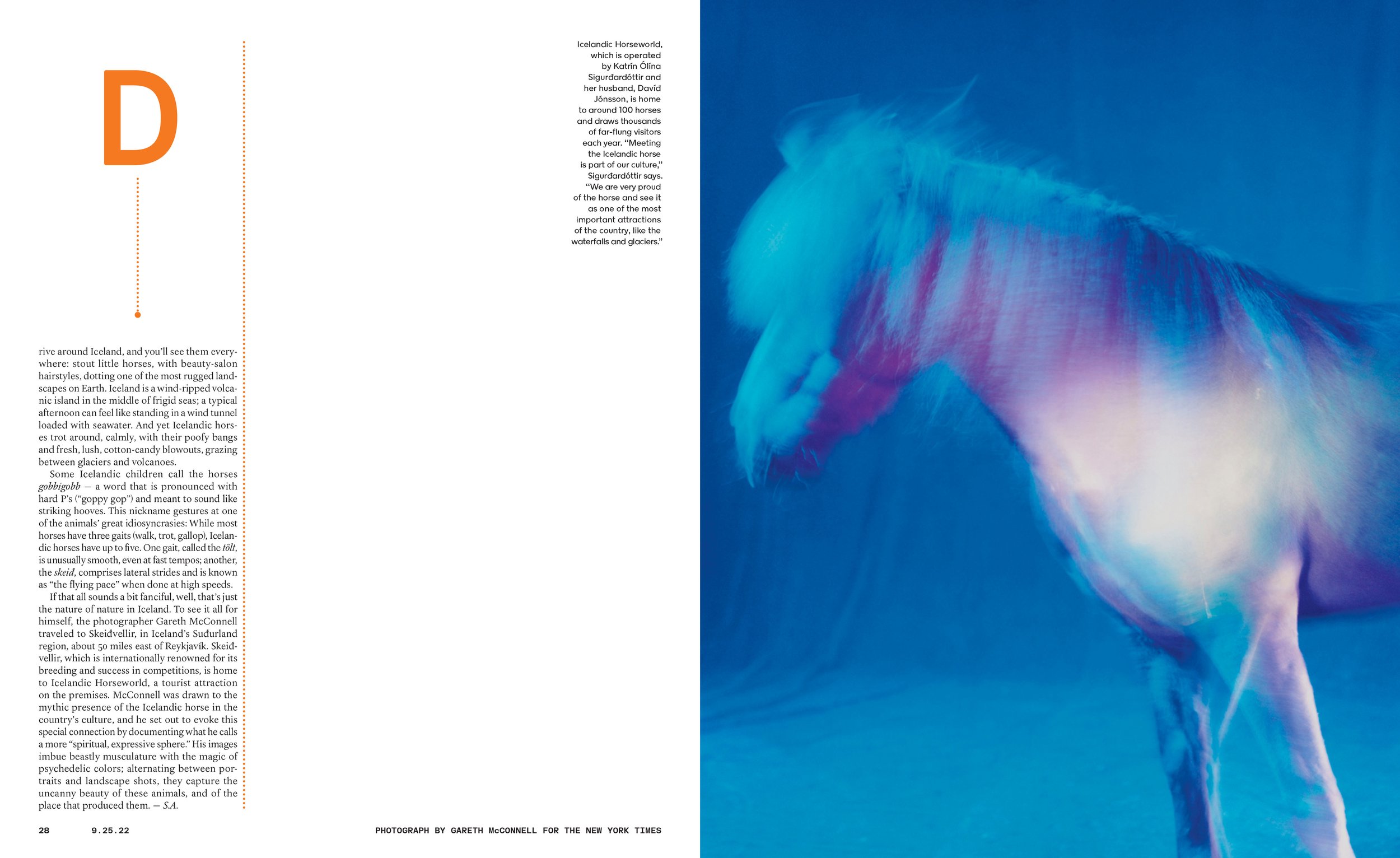
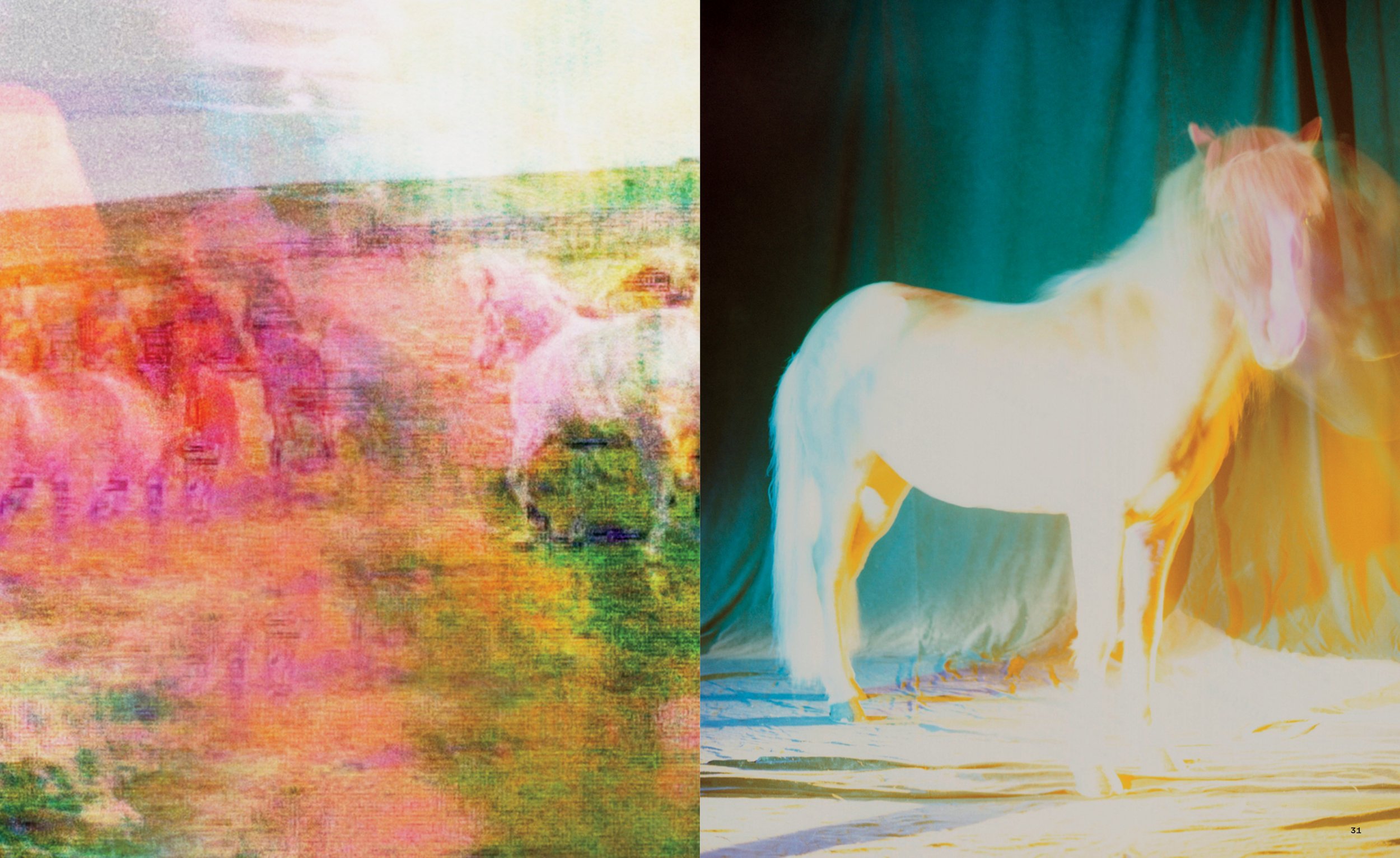
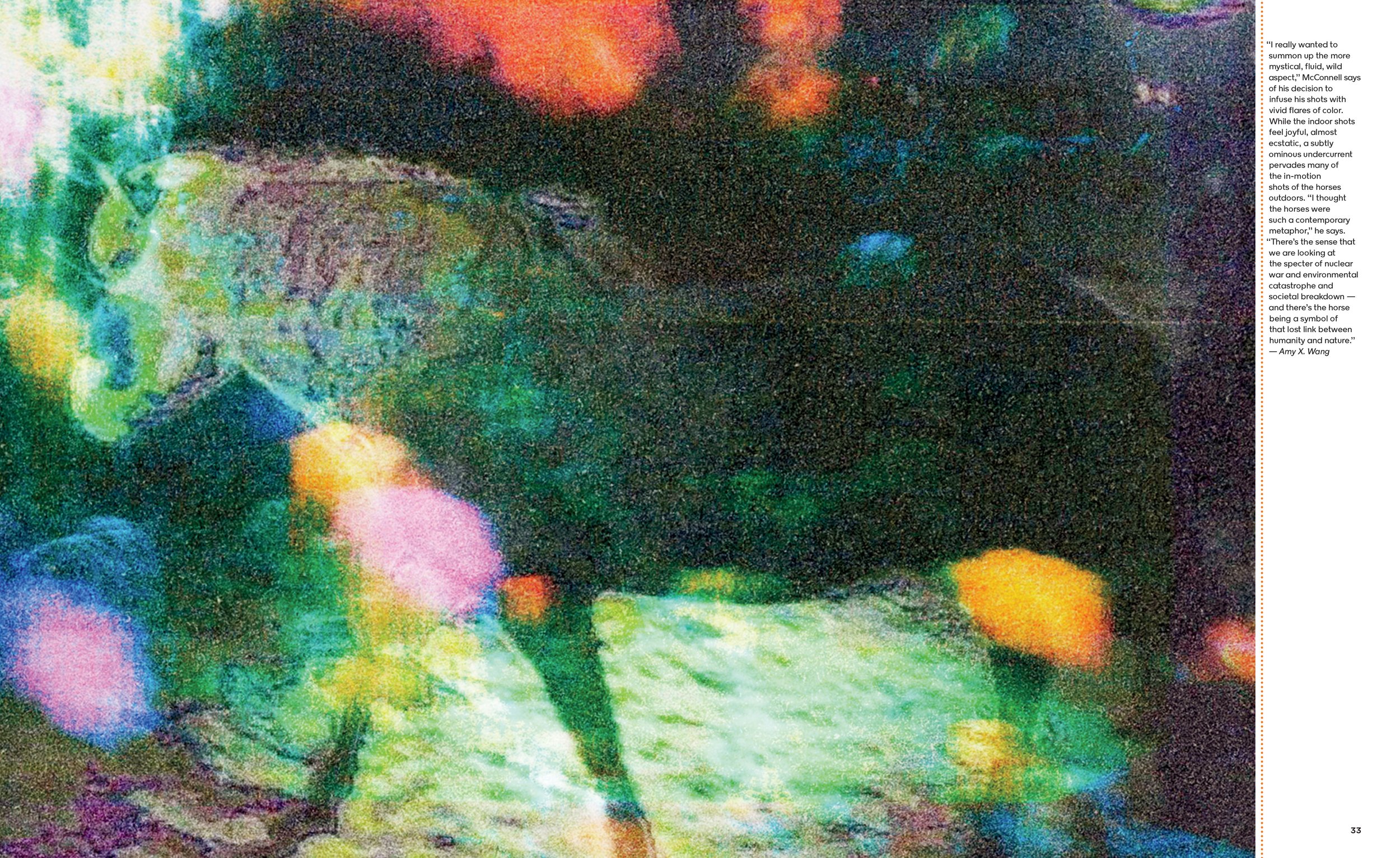
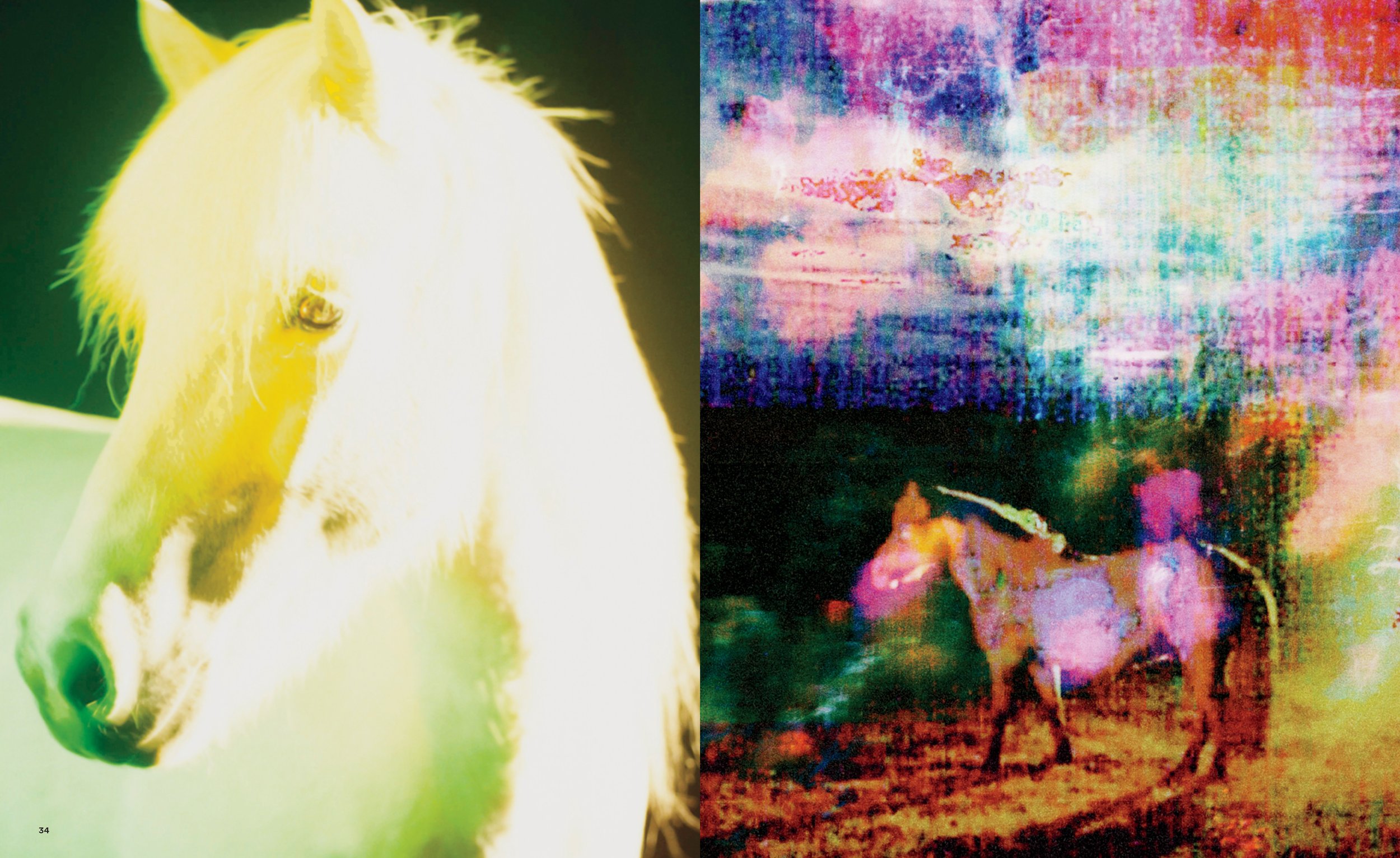
George Gendron: I do have a question that builds right off of what you were just saying, and in fact, I was going to use Paolo as one of several examples. It’s the old Susan Sontag question. There’s work that he’s done—I think in his case it was particularly about immigrants—and work Gary Knight did during the early stages of the Iraq war. And the photos, when you saw them, were beautiful. They looked “renaissance” to use an Adam Moss adverb there. And so much so that—do you know Geoff Dyer, the British writer?
Kathy Ryan: Yes. I met him, but I don’t know him. No.
George Gendron: So in his book, See/Saw, he actually has a little mini-entry about conflict photography, and, under certain circumstances, its relationship with Renaissance painting. And he uses one of Knight’s photos, that can also be very wrenching, of a marine battalion, after one of the Marines has been killed in a mortar attack, as an example of this. And composition and lighting and tone. And so I’m curious about how you personally, as a director of photography, deal with that, because you’ve got these photographers who are just absolutely brilliant, and yet they are covering the horror of war, conflict, revolution. Now of course, the Ukraine invasion.
Kathy Ryan: Yep. Yep. It’s the hardest part of the job. And honestly, it’s harder as I get older. Somehow when I was younger and sending people into the field, of course I worried. Just the risk of it. I don’t actually even after all these years of working with Paolo Pellegrin—20 years we’ve worked together on many stories.
Working with Lynsey Addario. She’s extraordinary. She’s the most courageous person imaginable. She’s just unbelievable. I still don’t quite understand that level of courage, other than they’re driven. They’re both so driven, as are many other great photographers.
So if I can have the inner dialogue with myself that they have to do it, I would never call someone who’s never gone to cover that kind of story and say, “Hey, would you go do this?” I want to know somebody’s made that decision already. So Lynsey’s going to do it anyway. Paolo’s going to do it anyway.
It’s the title of her book, It’s What I Do. I can’t quite fathom it even after all this time. And then all the visual decision making that goes on as chaos is unfolding in front of them. When you speak about “Renaissance-esque,” there’s a picture Lynsey made years ago in Afghanistan on assignment for us, where she was on a patrol with the American soldiers and they were ambushed and one of them, Sergeant Rougle, was killed.
And the picture she made of his comrades, his friends who are just grief-stricken—it’s just happened—are taking his body down the muddy slope there. And she somehow gets into position. It looks like a religious painting. And she doesn’t think like that.
Lynsey’s not someone who’s, I think I can fairly say this, looking at classical art constantly to let that inform her thinking. It just came naturally in the way, I think, a great visual person sees. She’s more of a narrative storyteller. But it’s a haunting picture that went to that next level. It became something else.
And then Paolo—I’m not trying to compare, we're just talking about different approaches—overwhelmingly shoots in black and white. That right there is an abstraction. He has chosen that because black and white emphasizes emotion, eliminating unnecessary color. It gives him more of a chance to focus on composition. Composition becomes more important. And light.
Lynsey has consciously chosen in her career to photograph in color. And in her case, she doesn’t want the abstraction. And I don’t want to make sweeping statements for either of them, but I know them well enough. She wants to see all the reality that color gives you.
George Gendron: But then there’s also the issue for the director of photography about managing a certain tension between the aesthetics of a photo and the fact that the content of the photo is, in fact, conflict. Death and casualty. That’s got to be challenging.
Kathy Ryan: And it’s uncomfortable to talk about because with that kind of coverage the content rules. But still if you want to make a memorable picture, especially today with the abundance of imagery out there, you have to make something that is so well seen, so well composed or understood or framed, that it touches some other nerve. That stops people—making a haunting image. The aesthetics do matter.
“Photojournalists have to be opinionated. They have to take a stand. There has to be something that they care deeply about. And you have to have the courage to go for it.”
George Gendron: That gets into a question that someone who has had the arc of your career—you joined The New York Times in the late ’80s—and so you’ve done your job in an analog world and now you’re doing your job in a digital world. And it must be dramatically different as you try to conceptualize the visual solution to a story. When we’re living in this age of just over abundance of images. My God, you can’t get away from them.
Kathy Ryan: Yeah. It’s unbelievable. I feel like today it’s become way more challenging. When I started out, you turned to magazines and papers and books for the photos. That was it. And it’s just completely different. You know?
People have seen hundreds and hundreds of pictures every day. So where is our place in that? And I wish I had answers to some of that. I find it more and more challenging. And then there’s also the reality that there’s all sorts of creative work being posted on Instagram by non-professionals, like doing some just nifty stuff.
It opened up creativity in a lot of people. They couldn’t necessarily do a commissioned magazine assignment, but I see all sorts of just interesting creative material. And it’s just a different medium.
And that’s the other thing—every year we do an annual, “The Lives They Lived” issue. It’s the last issue of the year. And we do a series of stories about people who’ve died that year. And it’s almost always people of renown—who are known in some way. Sometimes ultra-famous, sometimes not ultra-famous, but known in their field. And this year, a decision was made by Jake to devote the whole issue to children killed by guns. And the reason for that was there’s been a shift.
Within the past year or two—the highest number of child mortality is related to gun deaths. So we’re in a terrible—we all know that. And there’s been just horrendous school shootings. So as we set out to figure out the art for that and the photography, the photo editor working on it, Kristen Geisler started calling all the families, which was a challenge unto itself because, of course, they were deeply grieving.
In some cases, she’s talking to the mother or the aunt or different family members. And we normally, in that issue, come up with a nice idea of something to commission. The year before we did the shoes of the people who died. And it was terrific. We had Eric Carle, the children’s book illustrator’s, paint-splattered shoes. We had the boots that Halyna Hutchins was wearing the day she was shot on the movie set where she was accidentally shot.
And we’ve done the empty rooms left behind by the deceased. But I decided, talking with Gail and Kristen and Jake, everybody, that this was a moment to use vernacular photography. We just illustrate it with the images that the family members themselves had. Which would basically mean smartphone photography, TikTok videos.
So Kristen started pulling in all that material. We were looking at it closely. And it was very challenging. It was emotionally wrenching, as you can imagine. It was one of the most emotionally-wrenching things we’ve done. The subject matter was so sad and we wanted to do right by these kids.
George Gendron: It was emotionally wrenching for readers!
Kathy Ryan: Yes. And we knew that. People are going to be devastated by it. And that is another responsibility for us at the magazine that we discussed a lot.
And then we were also working with tiny digital files. So you also need to figure out, How will this work? Where is our cover image? And then we decided to go right into it. And Gail and Matt Curtis, who was designing the issue with her, decided to do these double-truck [two-page spread] images of the faces blown up. So we were looking at that very closely, trying to figure that out.
And then the image that ultimately was on the cover—as soon as we saw that and it was backlit, everything about it was so pure. A professional wouldn’t have shot the picture that way with the light flooding from behind. But what it did was it gave it just a spiritual look.
And as soon as I saw that one in the cover mat, I felt, “There it is!” And then of course we all came to that conclusion, but we were nervous. It was a very different type of image. But Kristen was getting in these clips from the TikTok videos that she was looking at closely with the digital team. And when we published, the power of the short video clips eclipsed the power of the still photos. And you’re not going to hear me say that often, because I’m a diehard. I mean, I love video, but still photography has such a special place. And this was a case where just seeing the little bit of movement of the child had so much power.
And of course, these pictures were all made for just the most personal, pure, intimate reasons. And the brief for them was to not focus on the death at all, but just focus on a day in the kids’ lives. Something in the kids’ lives that was just about them, alive and happy.
And today, with the new medium that we have, most of our readers, the majority, are seeing us on their phone. That was very powerful on the phone as well as in print.
Lives on the Line: Patients with High-Risk Pregnancies Photographs by Stephanie Sinclair
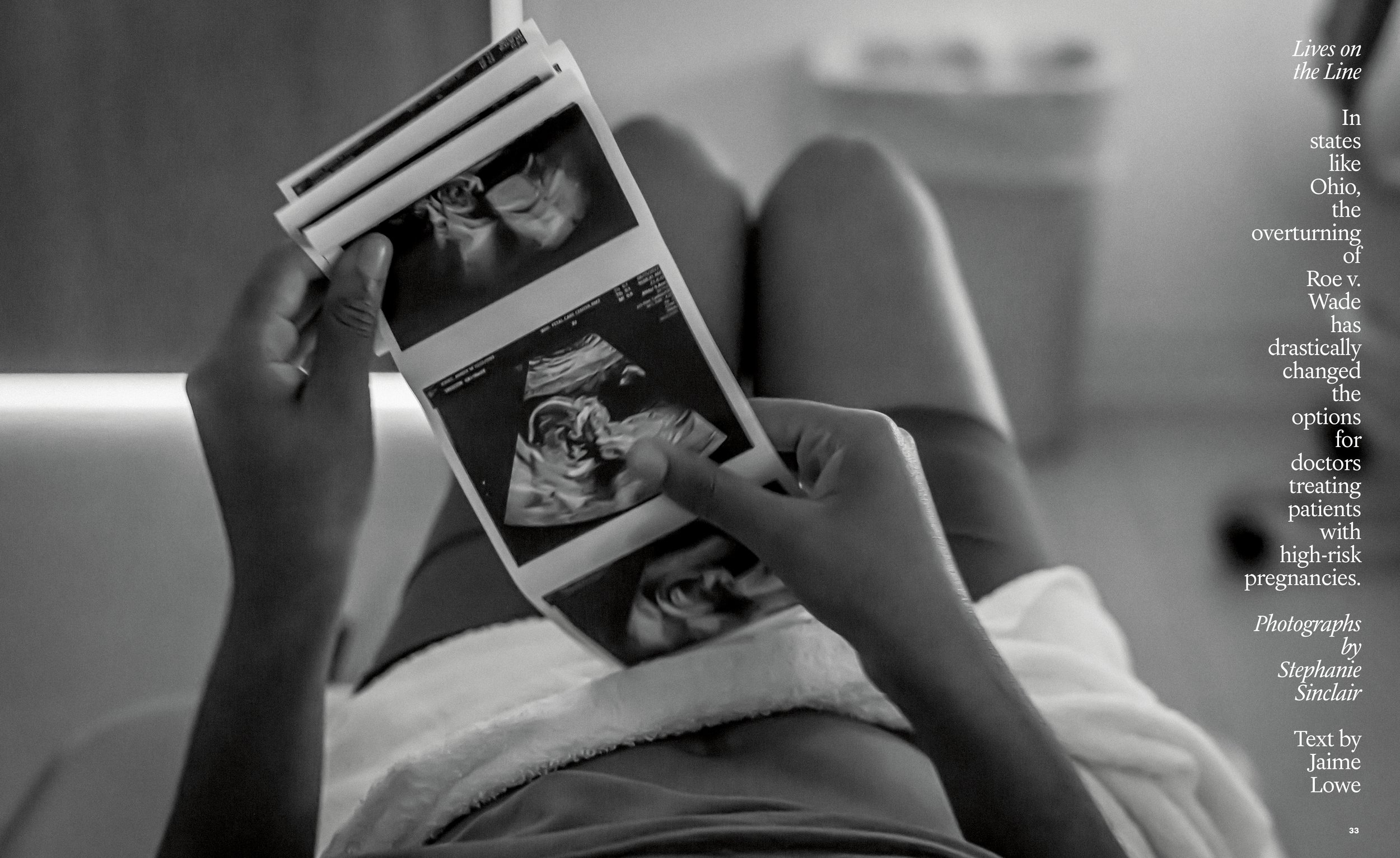
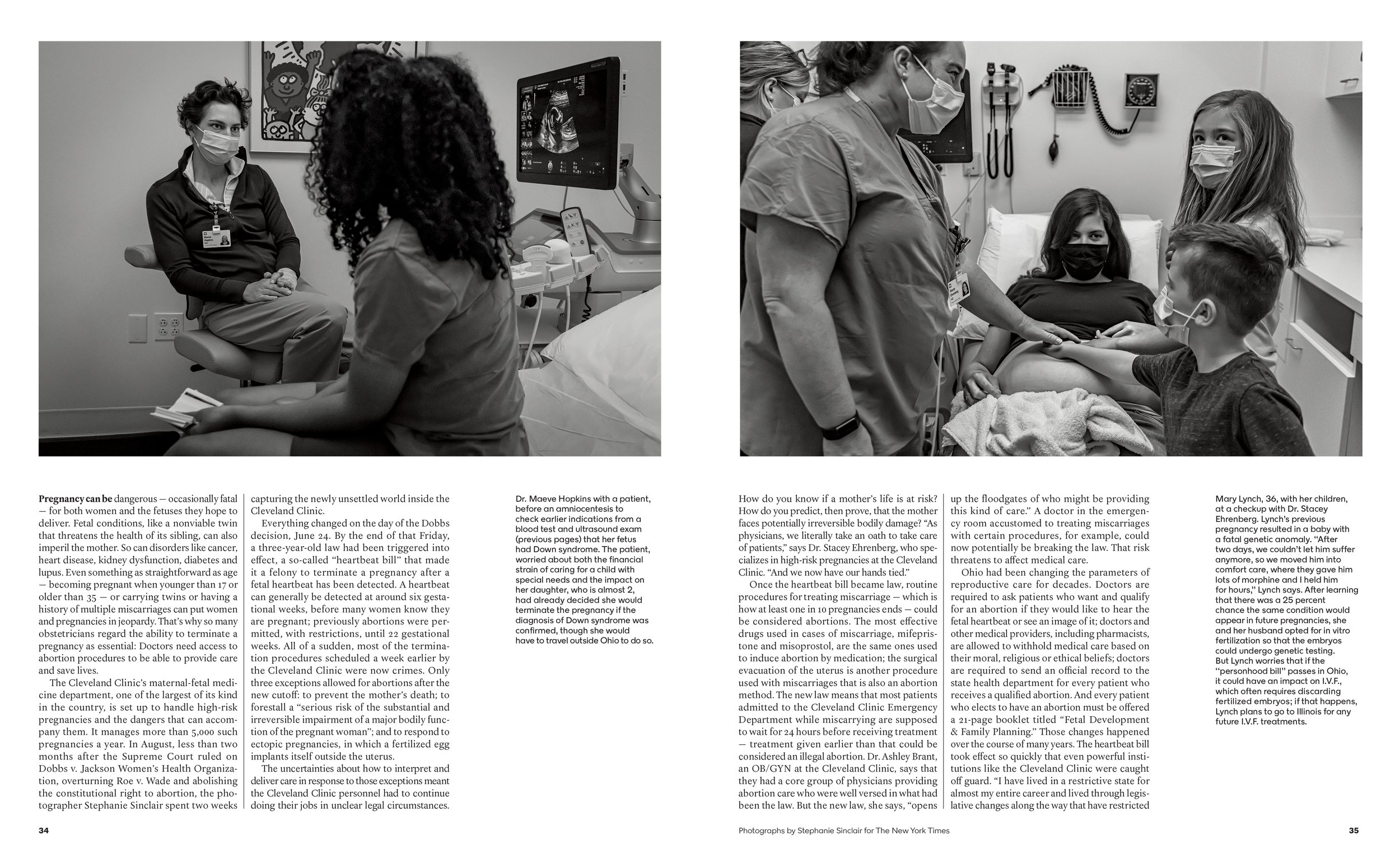
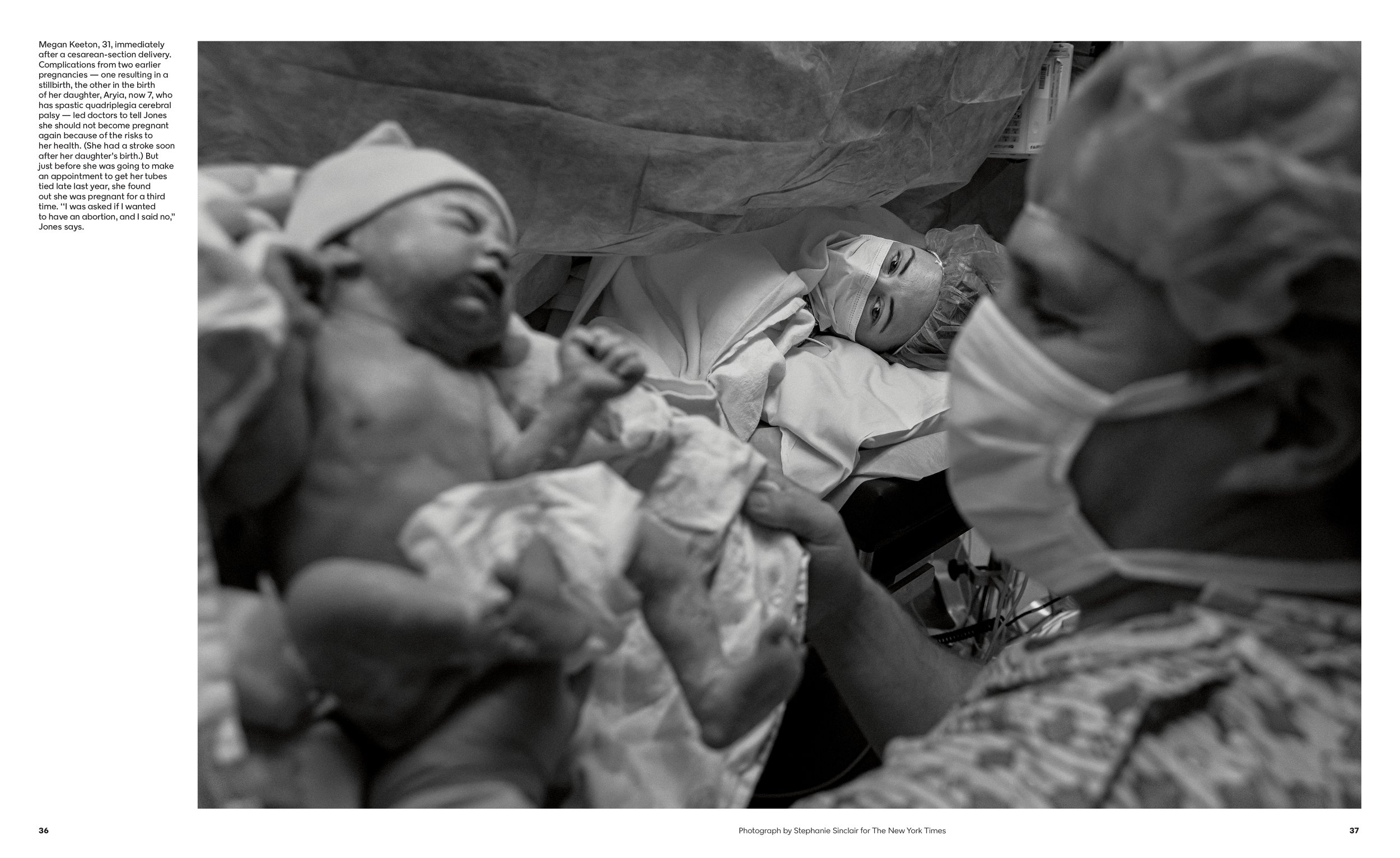
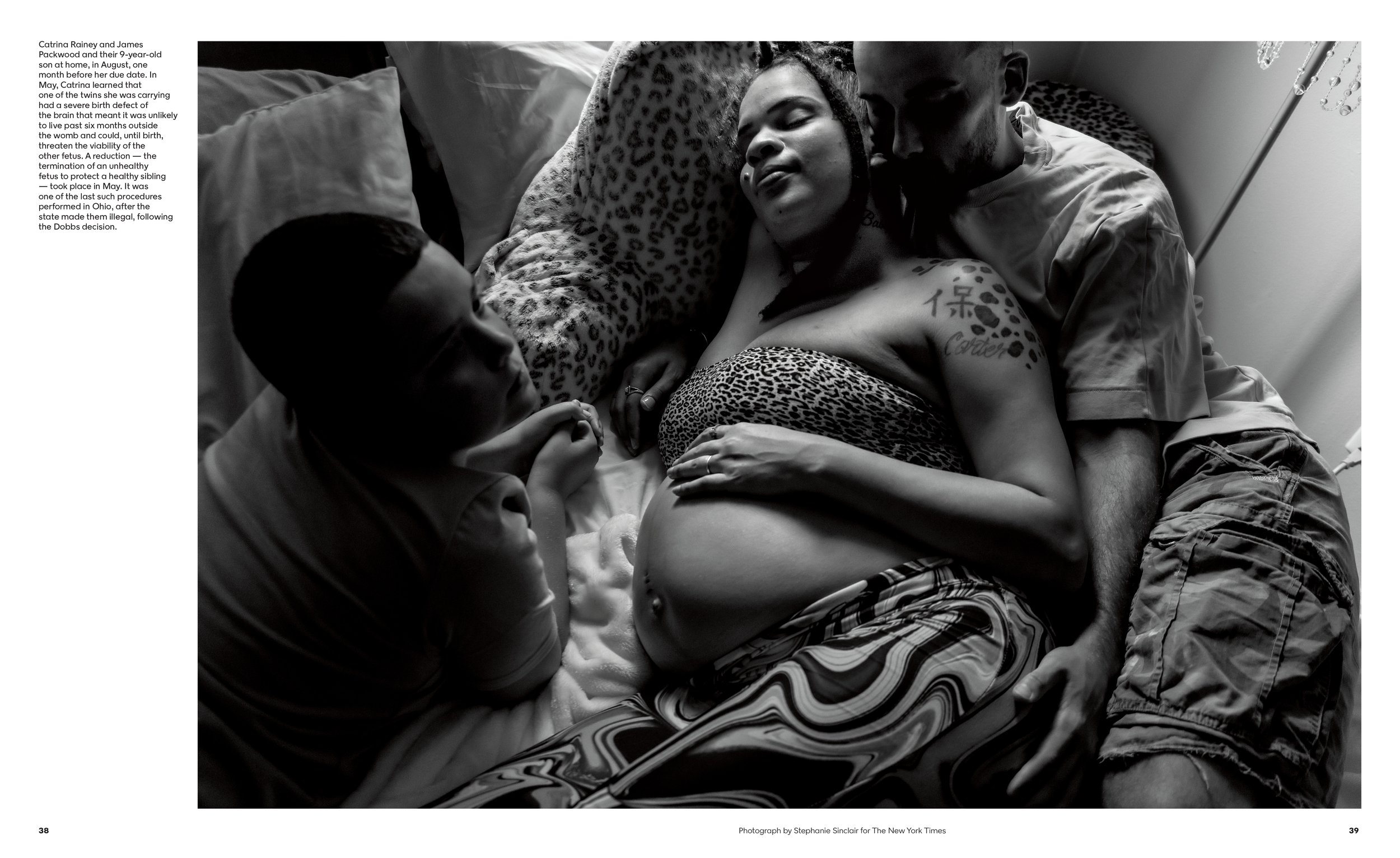

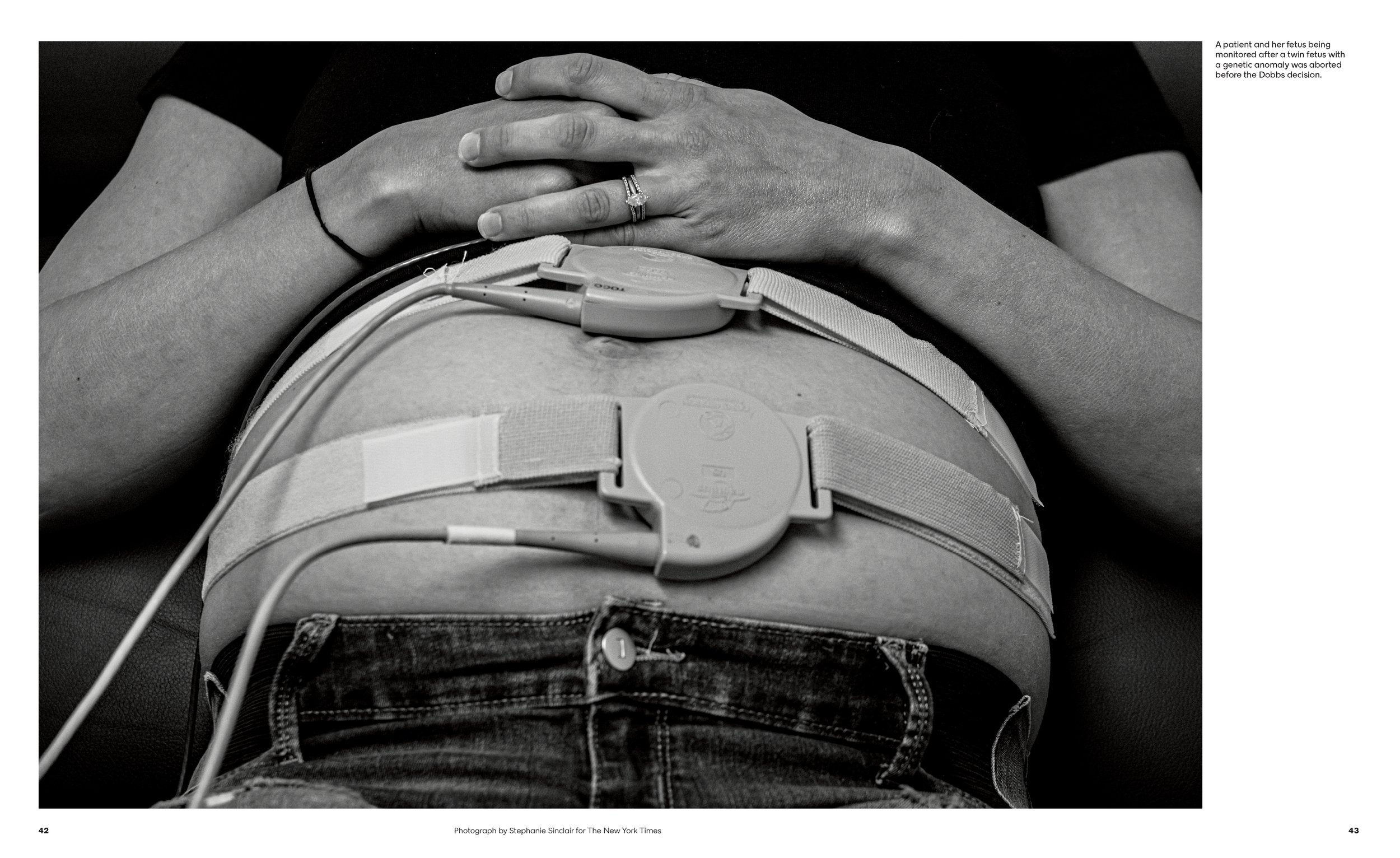
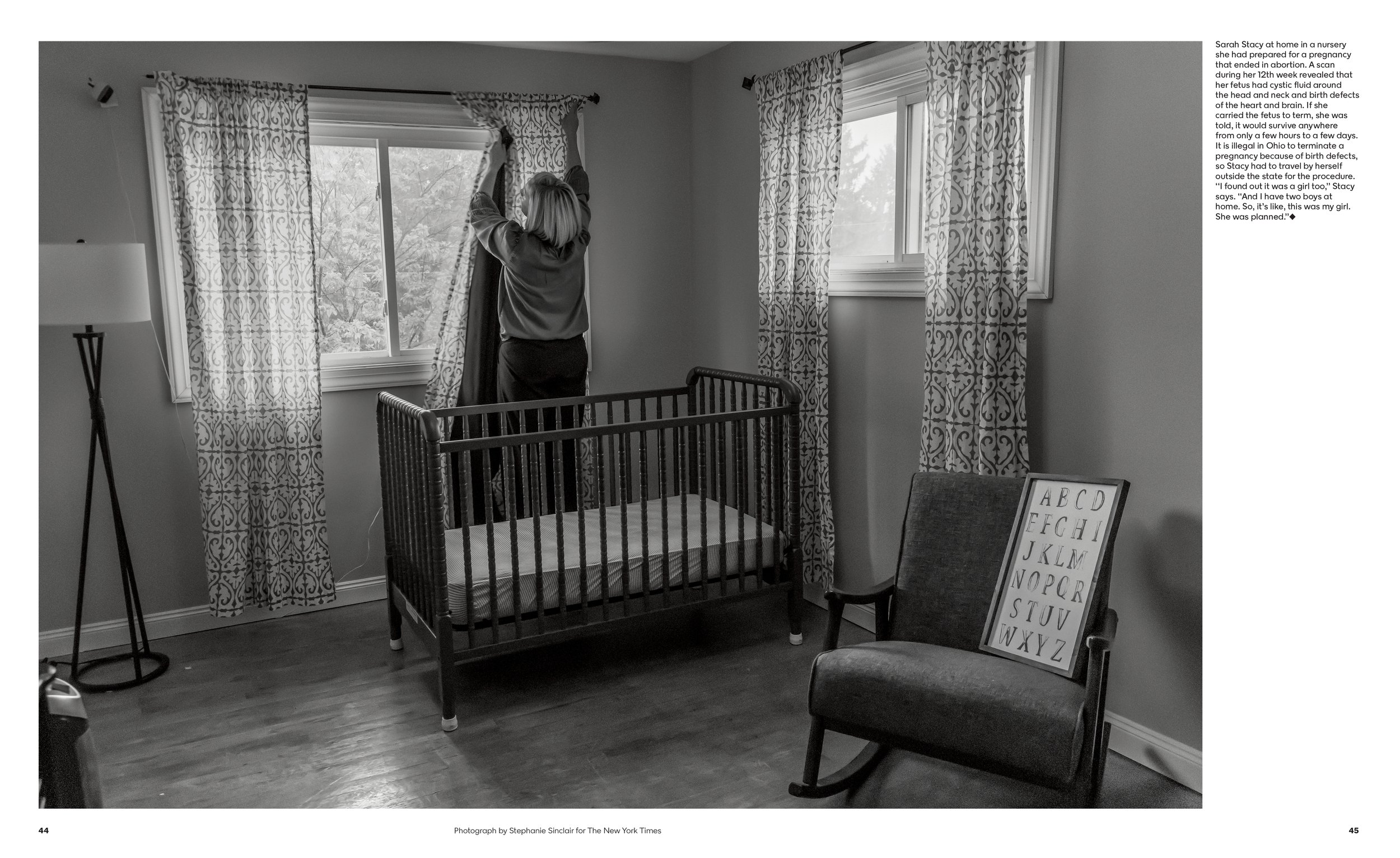
George Gendron: Let’s go back to what you just said a minute ago. It’s an interesting transition point because you were talking about your passion for the photograph. Where did that come from? What did you want to be when you were 12 years old? Did you want to be a photo editor?
Kathy Ryan: I had no idea. I always liked to draw. I was a kid that always liked doing art. And I had an older sister, a year older, and she loved to draw. And we would draw for hours on end. My parents would buy discarded rolls of wallpaper where it was a buff on the back and they’d roll it out. So we had all that blank paper to keep drawing.
Ryan in the third grade
George Gendron: Did you grow up in New Jersey? Because we did that.
Kathy Ryan: Yes!
George Gendron: Did you really?
Kathy Ryan: Yeah. Where did you grow up In New jersey?
George Gendron: Up in Bergen County. I grew up in Oradell and New Milford.
Kathy Ryan: I grew up in Bound Brook. But there’s going to be another overlap because listening to your podcast, a pivotal moment for me was third grade, which I think was the case with you, right?
George Gendron: Yes.
Kathy Ryan: And so it’s a weird coincidence. In third grade, I had a teacher—I was in Catholic school at that point—Sister Mary William, a nun, and she taught art history. This was in a very strict, classic, traditional classroom. But once a week she passed out black and white marble notebooks, and she would pass out small reproductions of paintings, famous paintings, classical artwork. And we would paste them in while she talked about what the symbolism was in the painting, what the artist might be thinking, what the expression on the person’s face and the painting was. I fell in love with it. I just felt like, “I got it.” I so got it.
George Gendron: What was the “it” that you got?
Kathy Ryan: Just understanding. Looking at the pictures. I can’t explain it. It was like, “Wow, I get it!” Whereas, I’ll be honest, in music class I just didn’t get it. I couldn’t hear the different notes. But it was like I could see it.
George Gendron: The power of the visual.
Kathy Ryan: Yeah, the visual. I could see what she was talking about when she mentioned an expression. I could see it in the face or something symbolizing something else. It just kind of clicked. So throughout early schooling I was always drawing, painting, and making art. And then at the end of high school—I had interest also in politics because the Watergate hearings were on. So I went to Rutgers, Douglass College, with an idea toward majoring in art or potentially shifting to politics.
And then very quickly I focused on art, but not photography. My college studies were painting—I did lithography, I did a lot of printmaking. But never photography. And then when I got out of school, I realized very quickly after working for hours in the studio for several months, I don’t like being alone all day. I love working with people. It’s my nature. I wanted to work with the team.
And a friend of mine told me about an opening at a photo agency. It was called Sygma. As you know, one of the big photo news agencies in that era. Sygma, Gamma, Sipa, Magnum. And they needed a librarian to file—remember this was the days of slides, negatives, prints. There were no digital images. So everything existed as a physical object. And they had photographers all over the world that would send their work to the Paris bureau where they would process it all. They had the lab there and then shipped it to us in New York.
And I got hired as a librarian. So I would just figure it out, stamp the slides, and where to file them. Then I graduated to doing photo editing for The New York Times Magazine, when they would call and say, “We’re doing a story on Iran.” And I would put together a package for them of slides and prints related to that subject.
And then ultimately, when there was an opening, I applied. They knew about working with me because in those days they used more existing photography and less commissioned. So they were often calling Sygma. And initially I was doing a lot of painting at night but the more I worked in the field, I just fell more and more in love with photography and it made sense because there’s something “realer” about photography.
Like I often love when photography, as we were saying, goes to a more abstract, playful place. But I do like real. And sometimes I laugh looking back—when I was telling you about rolling out the wallpaper and my sister Maureen and I drawing—she would always want to draw the World’s Fair. And I always wanted to draw shopping at the supermarket. Because I knew shopping at the supermarket—what it looked like when mother would take us.
I liked to draw what I saw. And I sometimes think that The New York Times is the perfect place because in documentary we’re telling real stories.
George Gendron: It all comes together right now. Everything you’ve accomplished, everything you are today, Kathy Ryan, you owe to a Catholic nun.
Kathy Ryan: No, I don’t! I know, right? It’s funny how you get influenced. I know.
George Gendron: Yeah. That’s another podcast.
Kathy Ryan: Yeah, that’s another podcast.
Talk: Celebrity interviews from David Marchese Photographs by Mamadi Doumbouya
George Gendron: You are so obviously both passionate about photography and immersed in a world of the weekly, which is just so demanding. What do you do when you’re not working? Do you go to photo shows?
Kathy Ryan: I look at a lot of art—obviously photo shows. But just in the past month or two the stuff that had a big impact on me was at the Guggenheim, where there’s an amazing double-header right now. The Alex Katz exhibition of his paintings—which is a long lifetime of paintings and you watch the trajectory—is fantastic. And so for me to go see that opens up my mind in terms of photography. And they paired it with a big show of Nick Cave’s work, which is very sculptural.
So you’ve got the minimalism of Katz, and the spareness of it. And then you’ve got the maximalism of Cave and the political underpinnings—he’s taking on a whole other world of importance in what he’s trying to say in his work. And the first show I raced to go see was the big Hopper show at the Whitney, which, of course, is a crowd pleaser.
He’s over and over and over inspiring because, what did he paint? He painted light. He painted the loneliness of humans navigating the world. And photography, again and again, even in what I do as a weekly magazine picture editor is about light. How the photographers see light and have to think about people.
And Aperture has had so many exhibitions in the past that were huge eye-openers and just deeply inspiring. The show that they did a couple years ago, Antwaun Sargent curated, and was a book, The New Black Vanguard. Brilliant, brilliant, brilliant show. And walking through that, I immediately was introduced to the work of photographers I didn’t know, and it reinforced my appreciation of others.
And one of the people in that show, Arielle Bobb-Willis, I was just blown away. Early 20s, brilliant work where she sees color like nobody else and she has the figure, the human figure moves in space in a way that is unique and different. That’s not easy to do. And even her styling of the pictures. She’s since done two different special music issues for us. So sometimes it’s directly related to my role as a photo editor at the magazine.
Six years ago, I saw a show of NYC Salt, a high school after-school photography program. And I went to their end-of-the-year exhibition and saw amazing work by a photographer named Mamadi Doumbouya—at that point, maybe barely 20 years old—and just fell in love with it. And he’s been working with us since.
When we decided to do the David Marchese Talk column, we decided let’s have one photographer, one vision. Now, sometimes, it’s illustrated because it’s geographically not possible. But we’ve had Mamadi doing it since the start. And he has a very distinctive look, uniquely his. So going to exhibits and seeing constantly there are things to be discovered and then at other times seeing the work of great legendary painters where it just reinforces the quality of your seeing
That’s what I feel like. You know how some people go to exercise? I’m not too good on the exercise count, other than walking through museums. I go to exercise my brain. So I constantly regret that I don’t work out in a different way, but I feel like I work out my eyeballs a lot.
Office Romance Photographs by Kathy Ryan


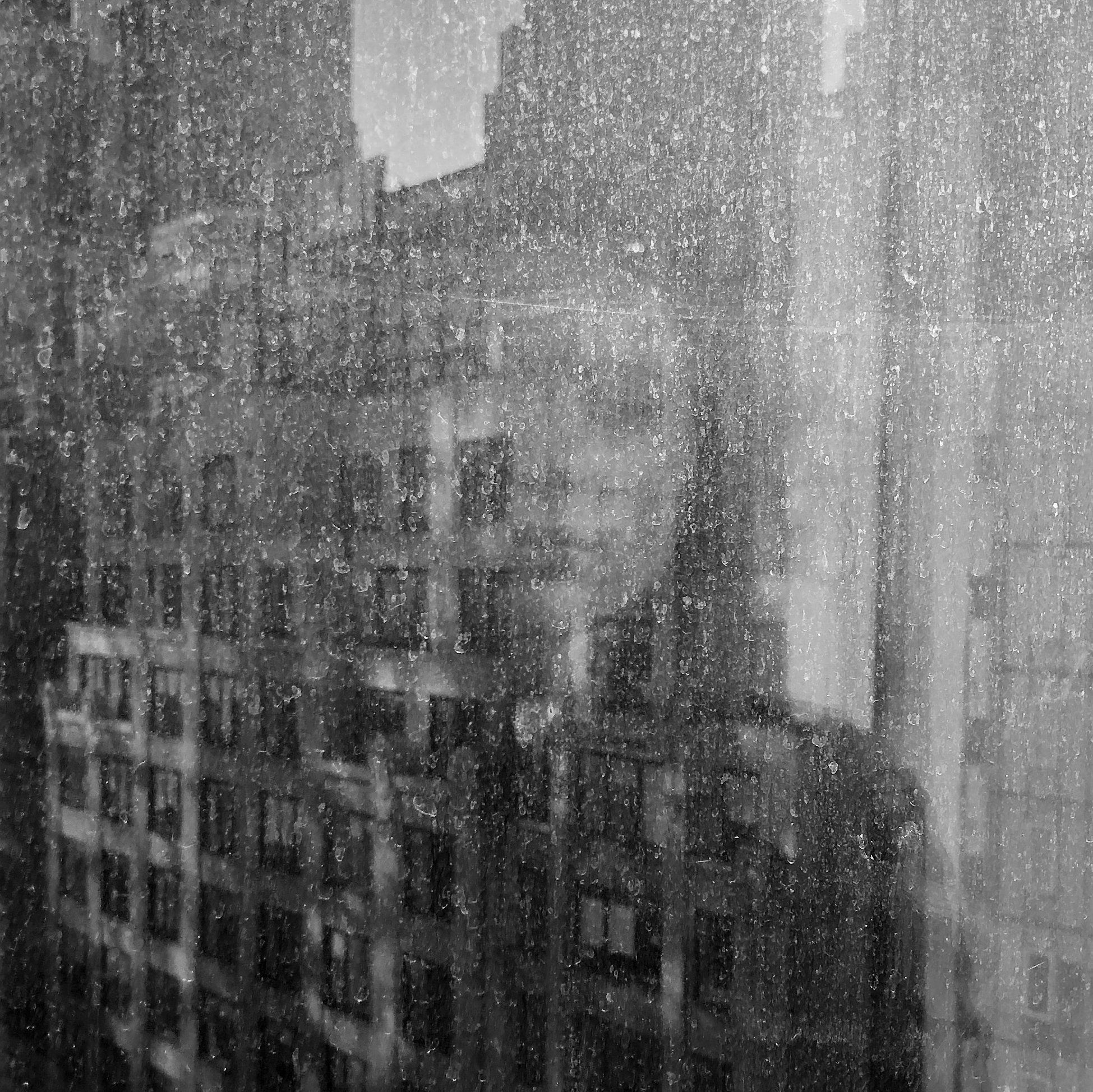
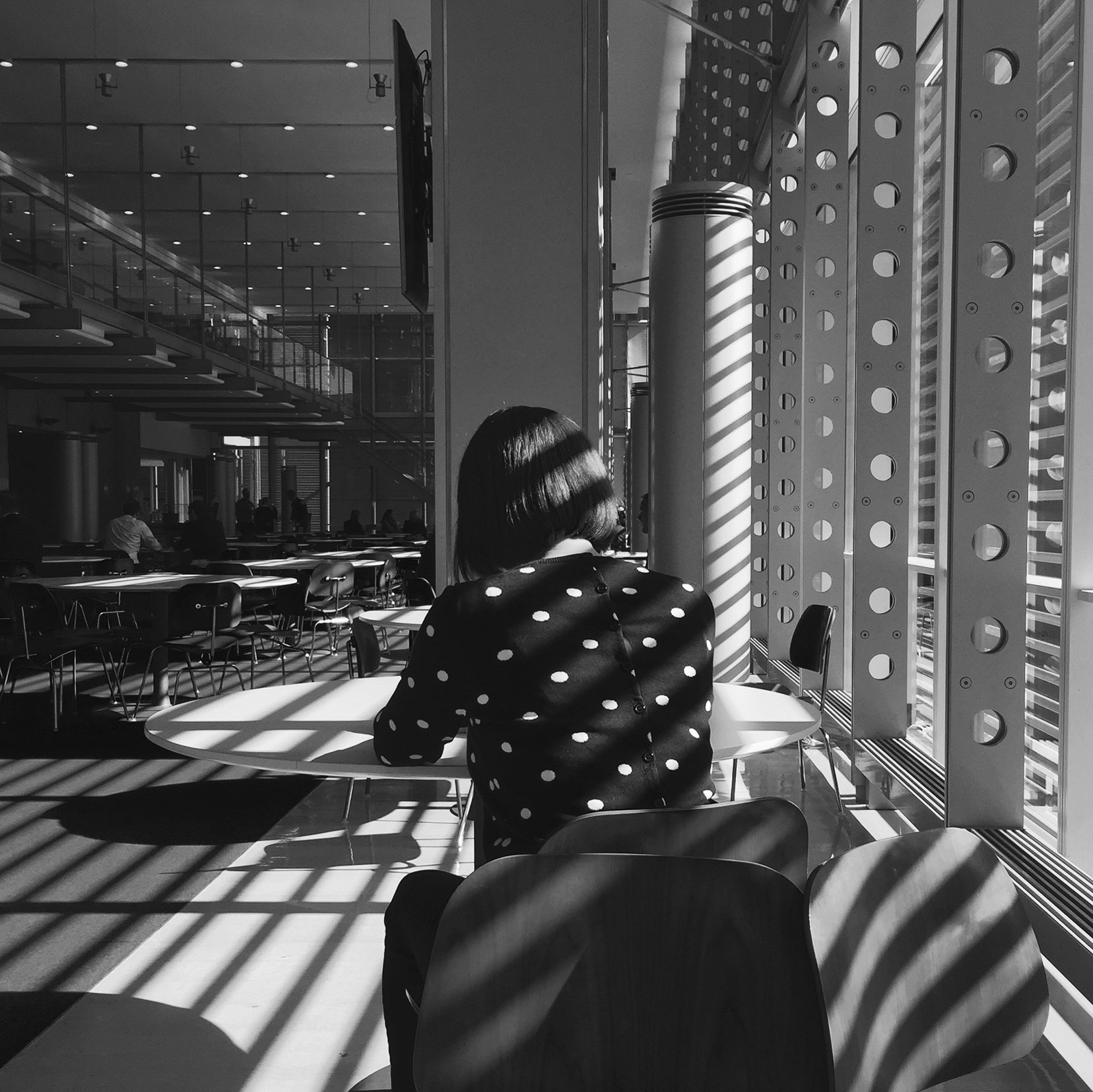
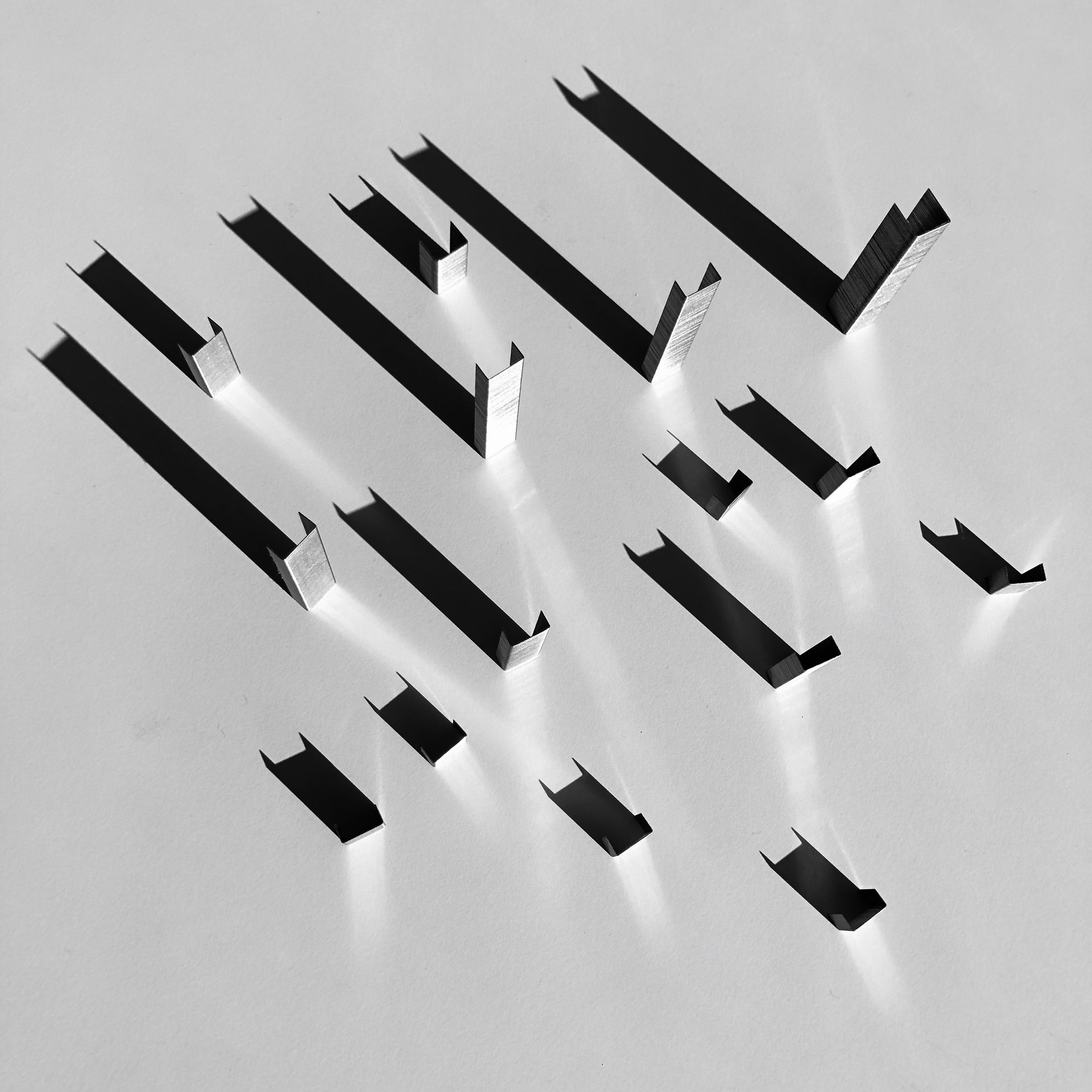
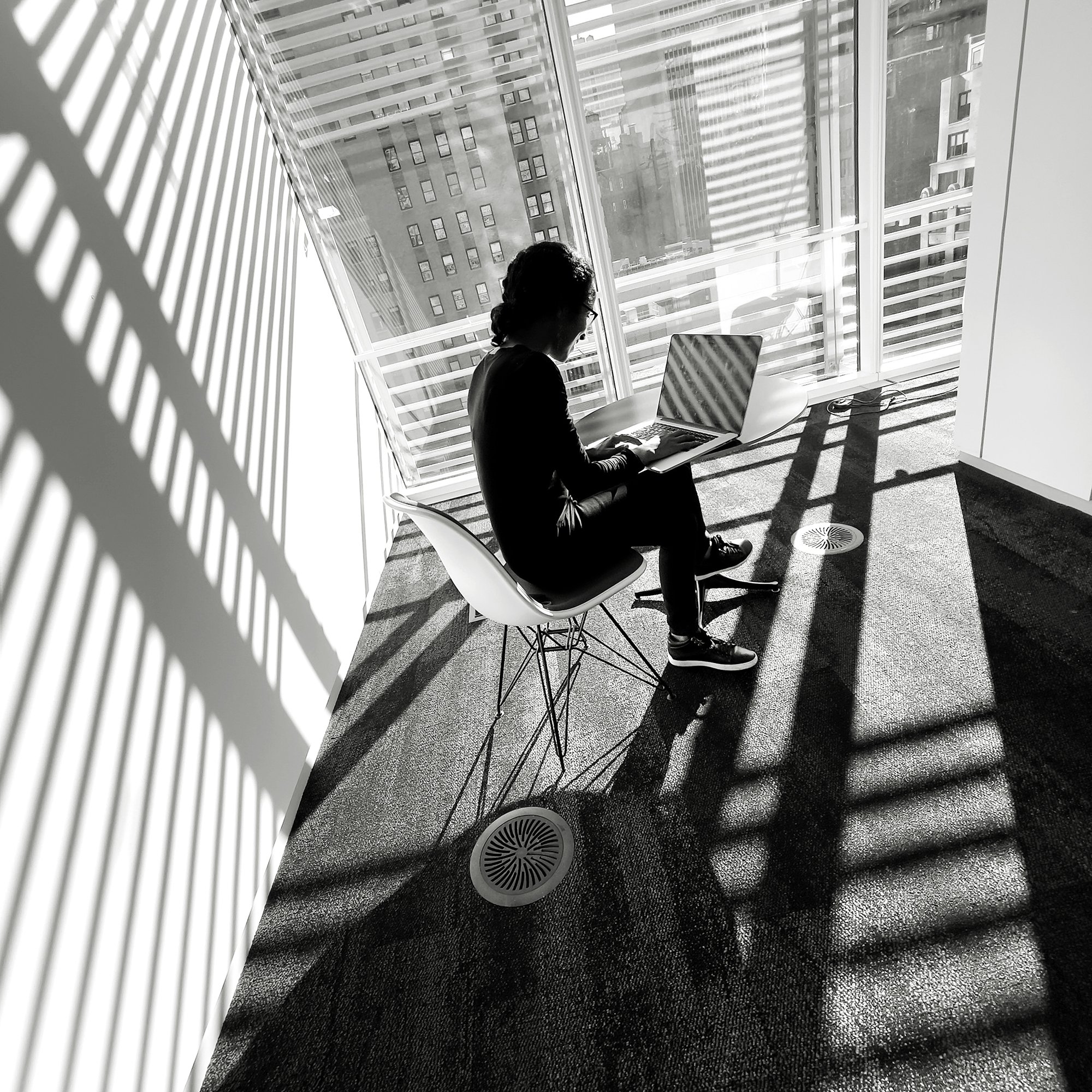
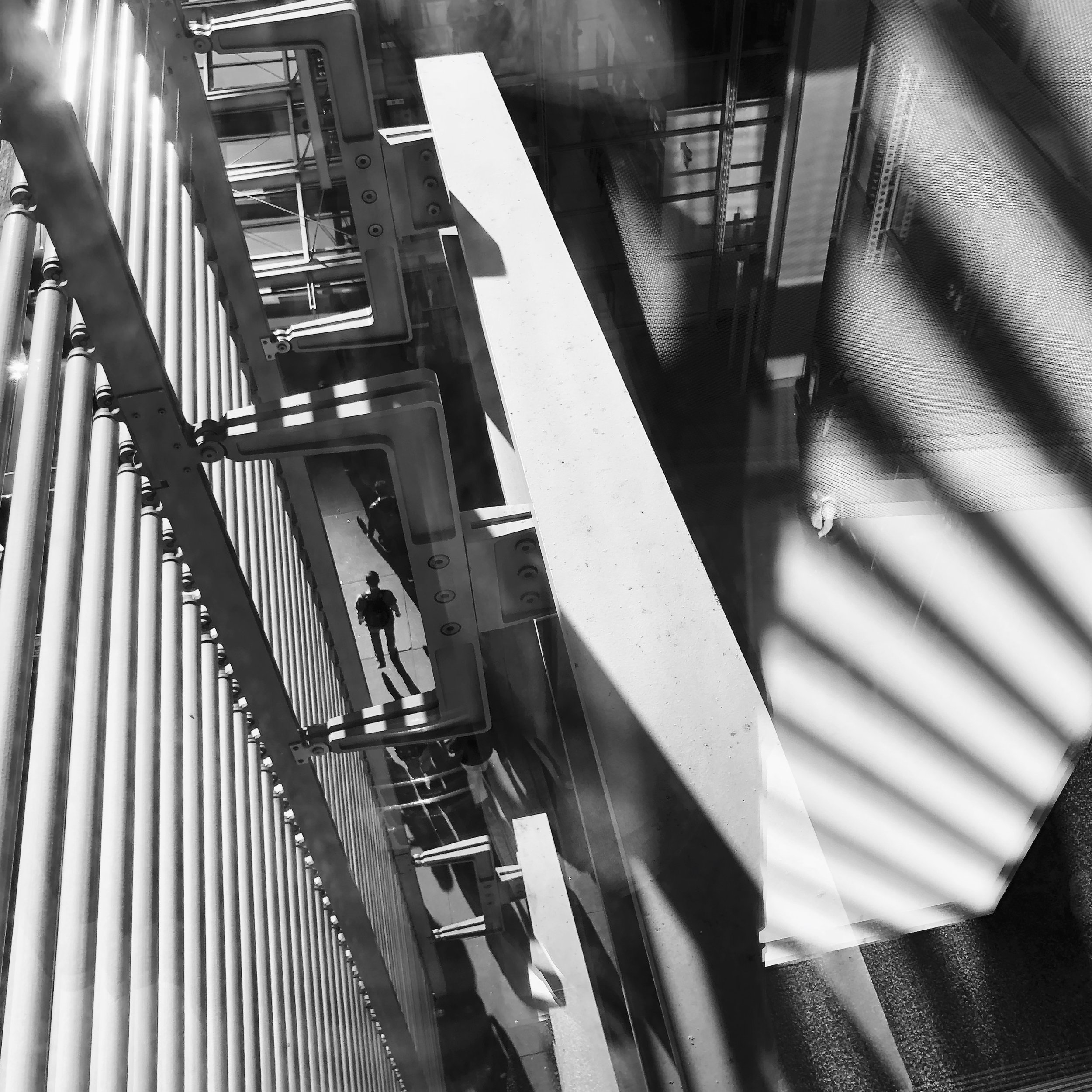
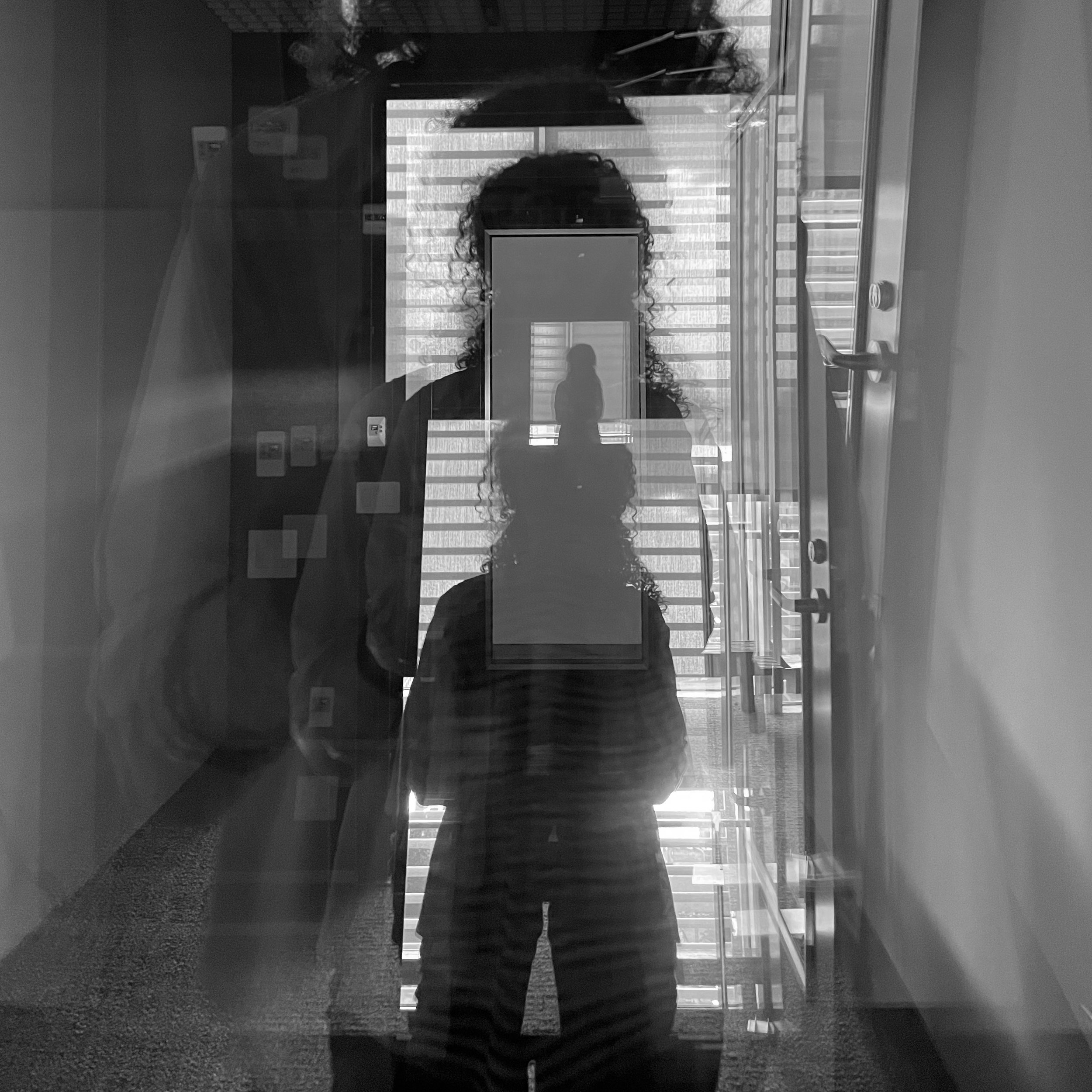
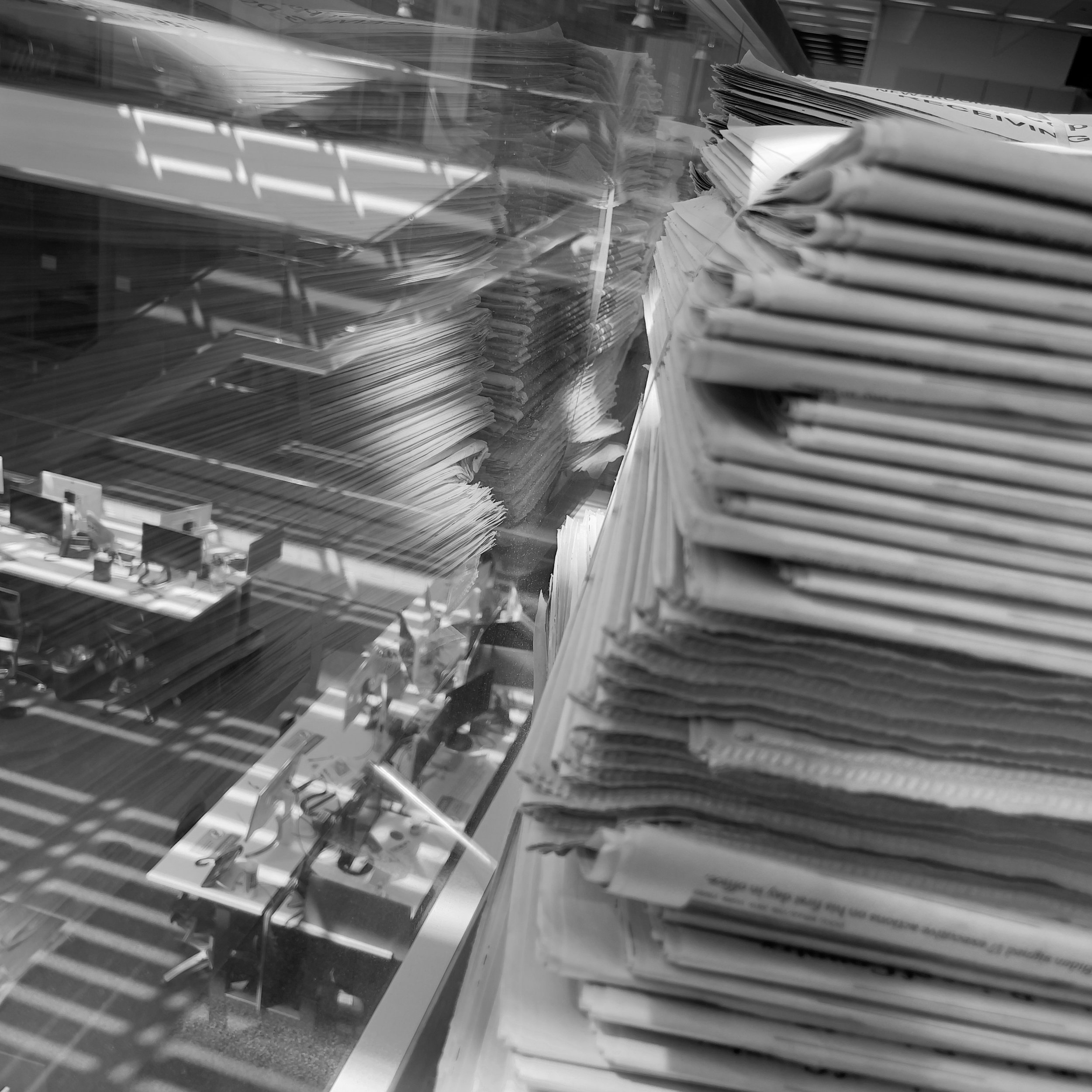
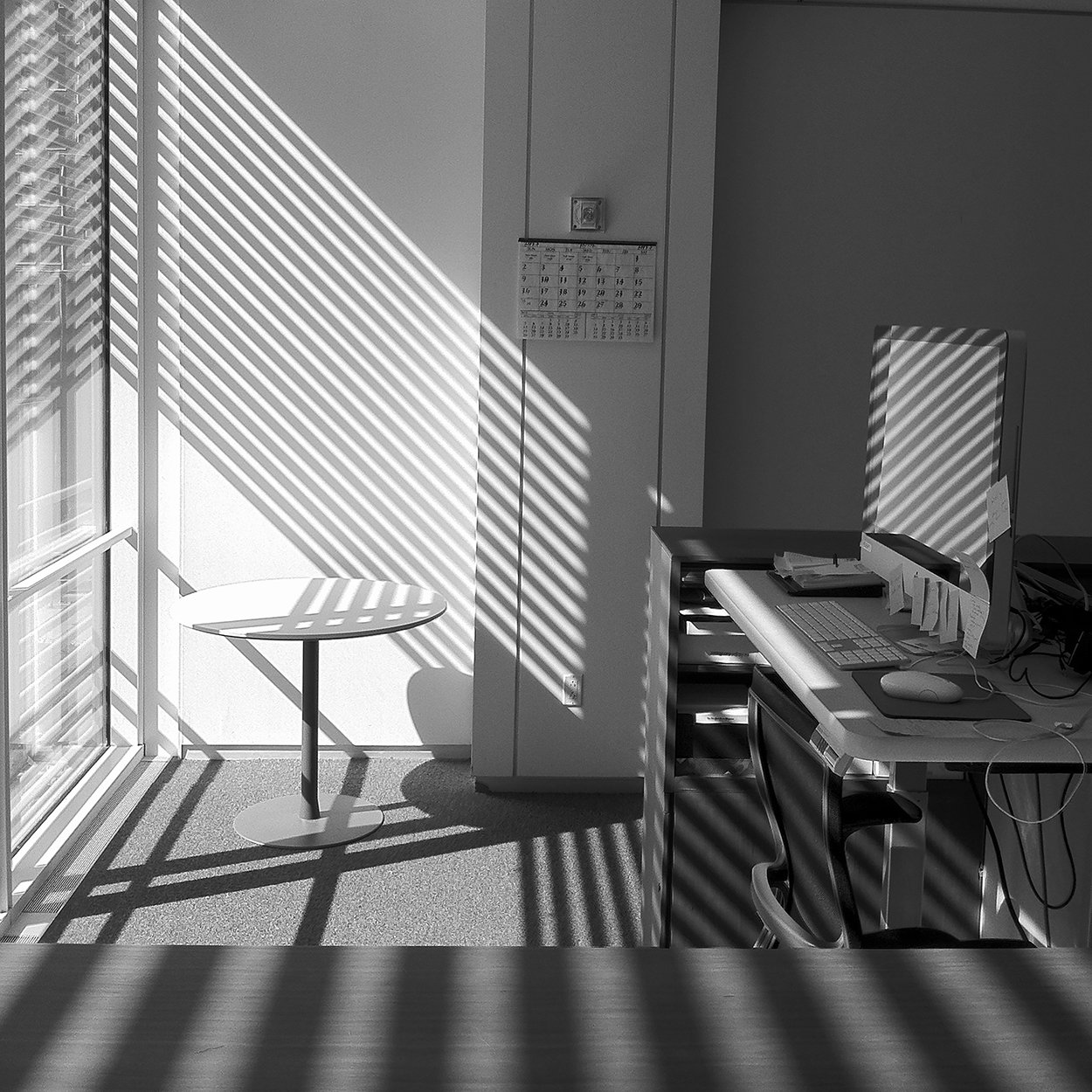

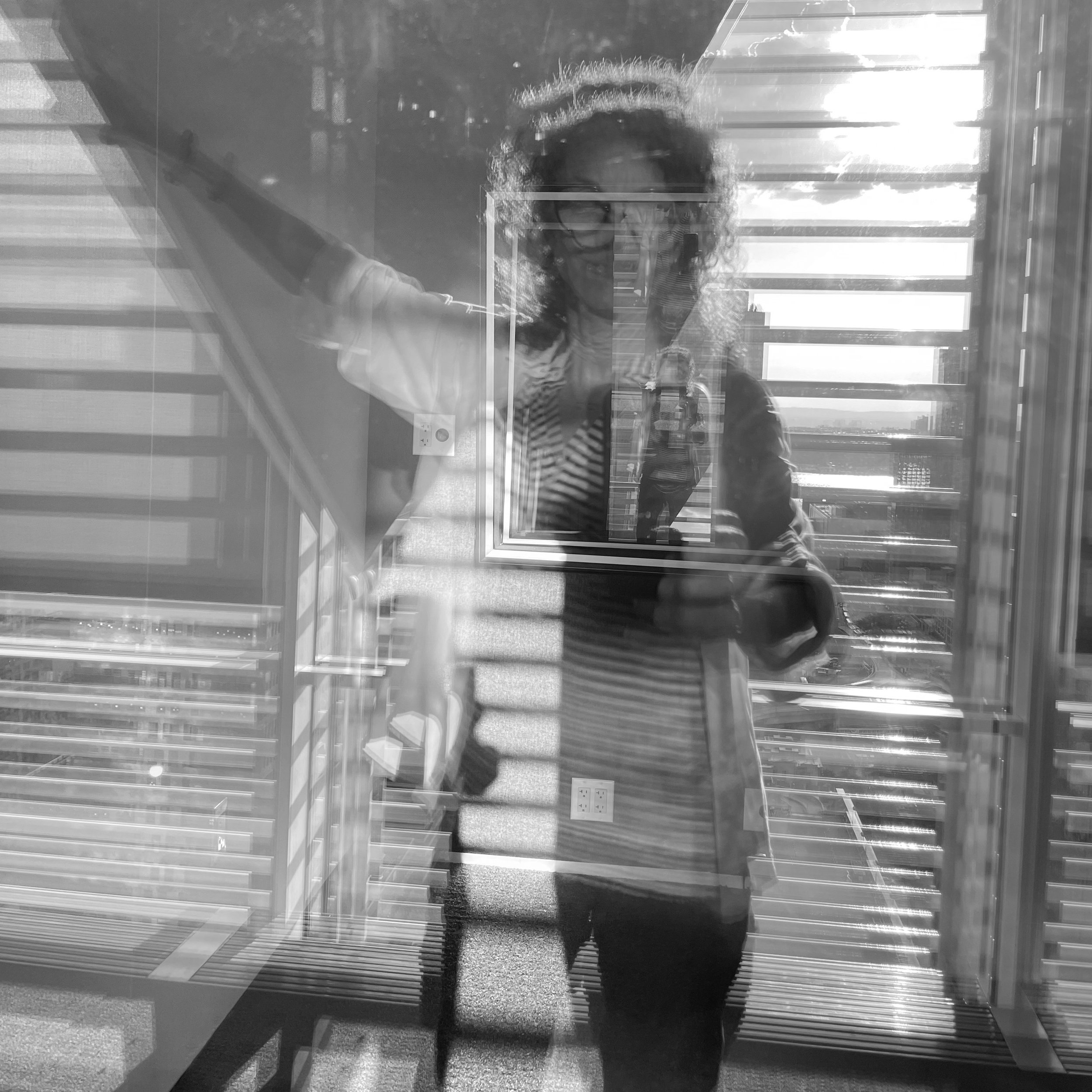
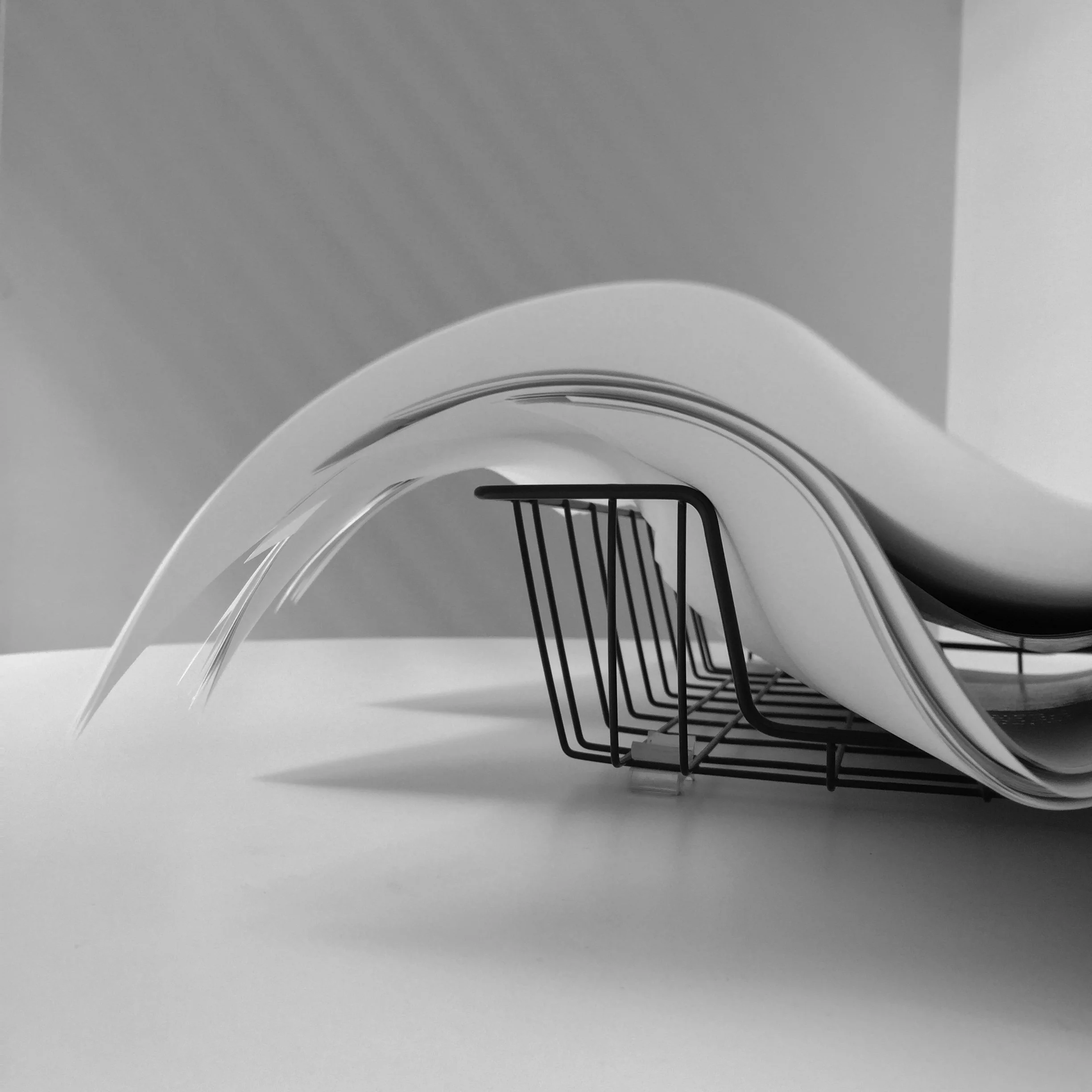
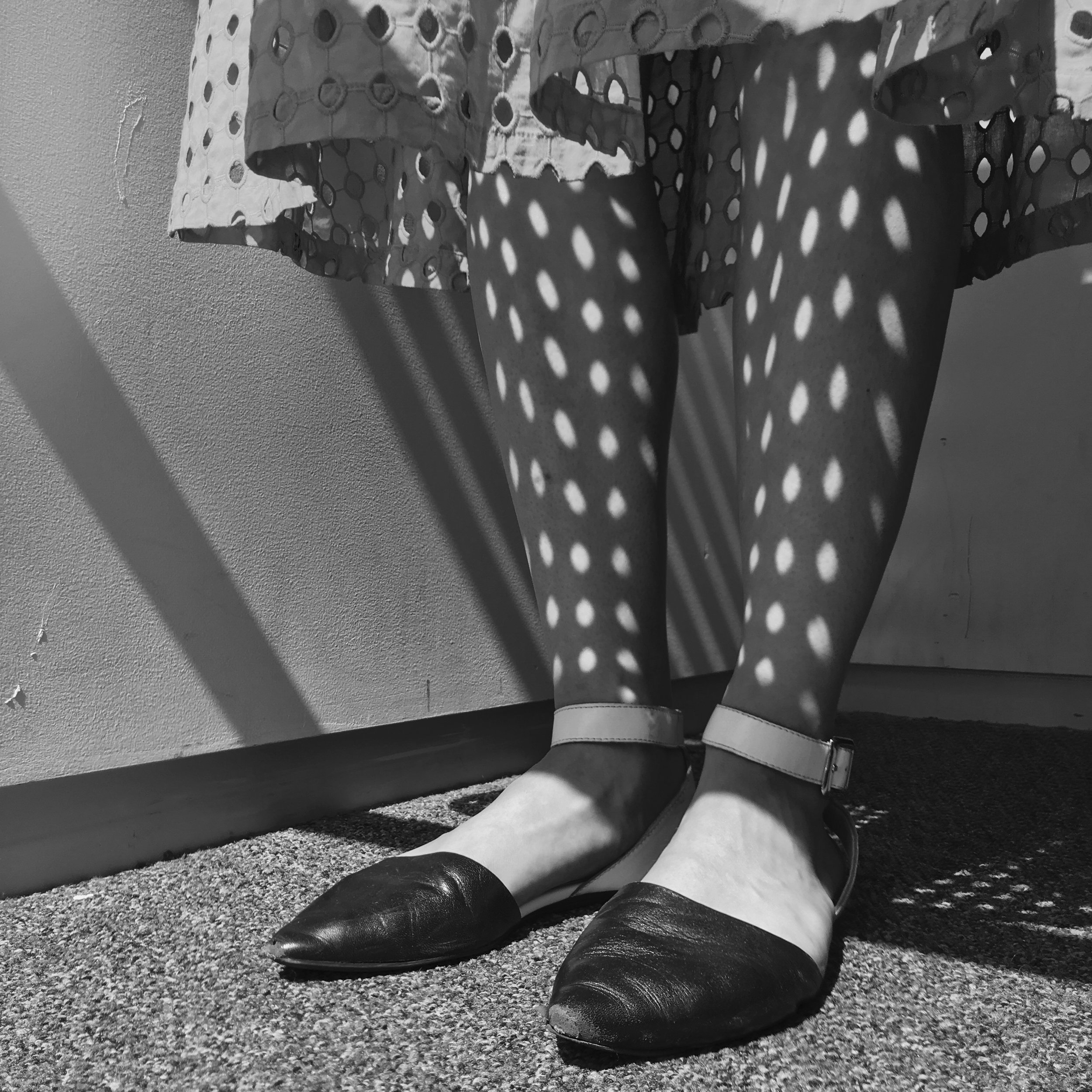
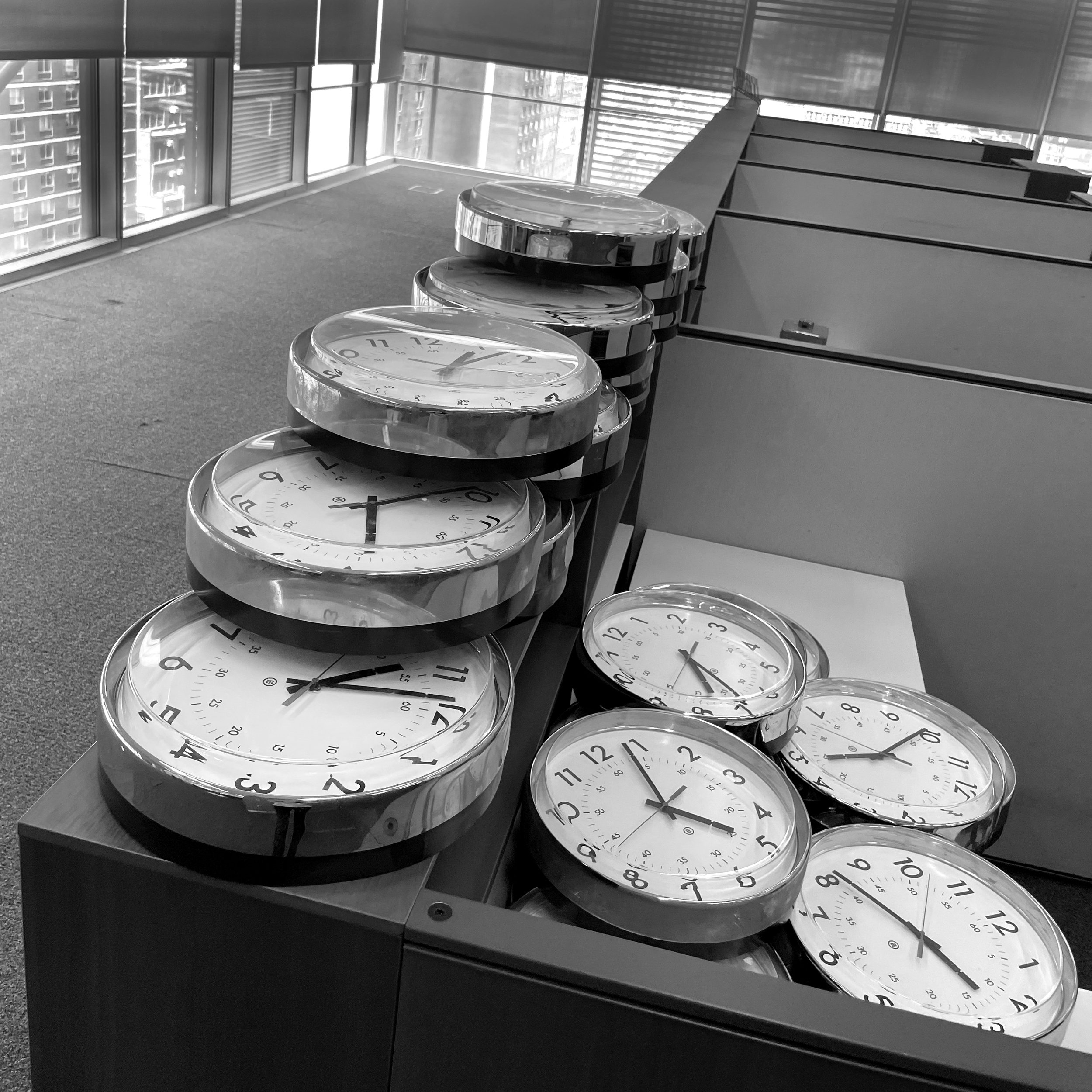
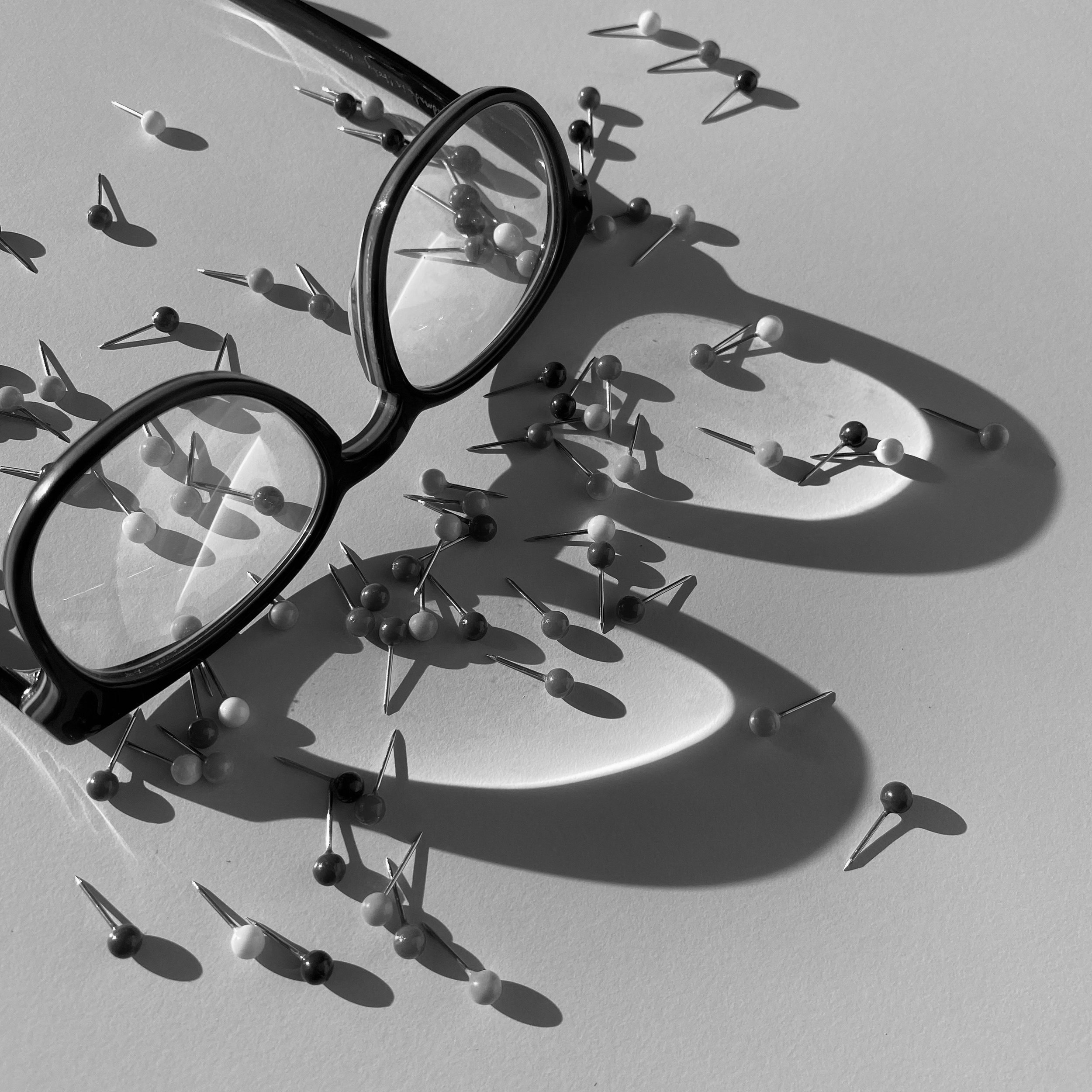
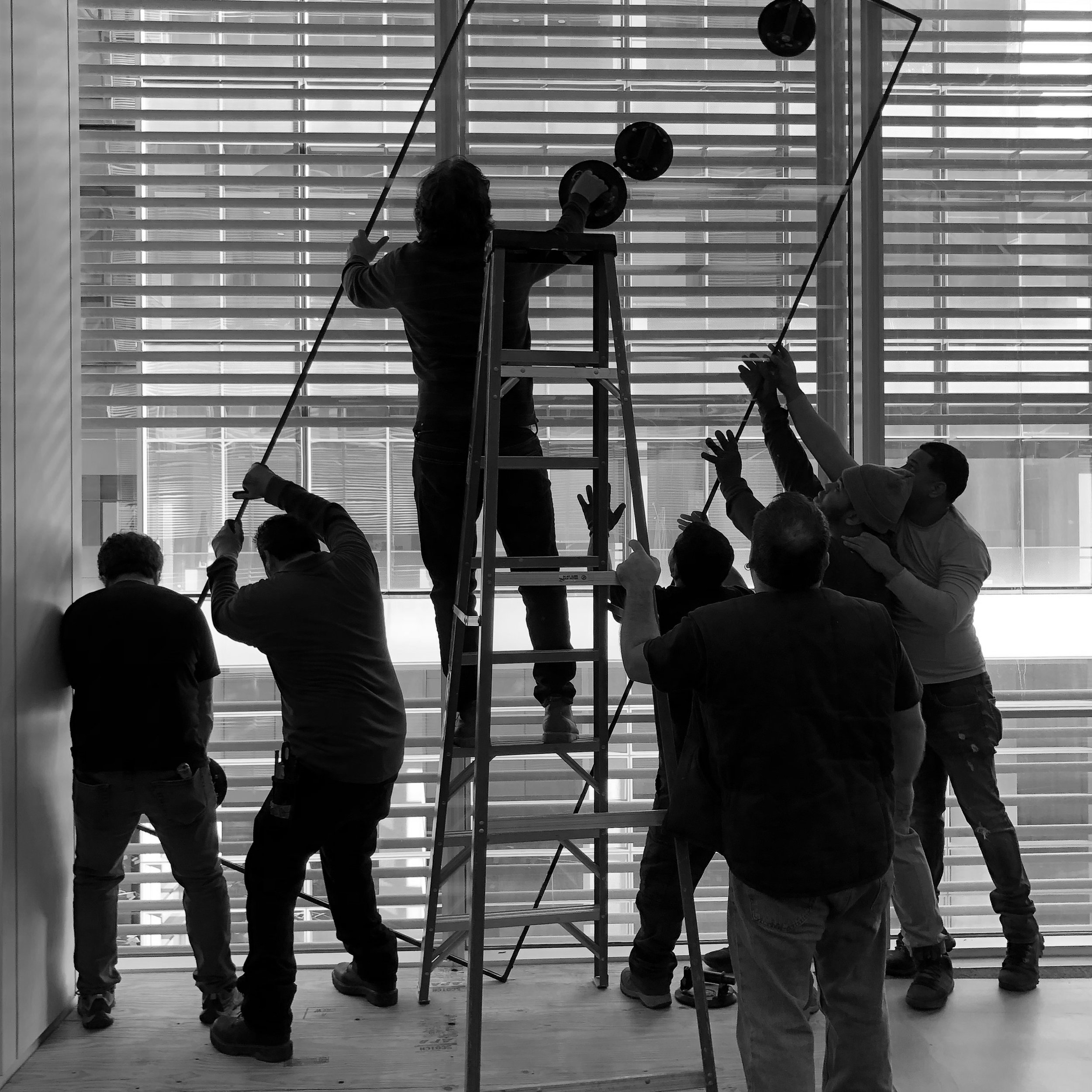
George Gendron: That’s good enough. I can identify with that. I do want to pick up on your discussion about young artists, young photographers in a minute. But before we do, selfishly, I have to get you to talk about Office Romance, your book, which I have and I love, and I know lots of other people who have it. And everybody who has it, they just love to hold it.
The form factor, first of all, is great. And it inspires people to think about looking at the world around them—their house, the light around them—in a completely different way. And I’d love to know, at what point did you stop thinking about taking pictures of the new Times offices, designed by Renzo Piano, and posting them on Instagram, and start thinking about it as a potential book. And did that change your picture taking when you started to think, “Oh, this could be a book now’?
Kathy Ryan: That’s a very good question. And yes and I’ll tell you why. I started making the pictures just for pleasure. Literally, I just, I don’t know, I saw that bolt of light on the stairs one day and—you got the phone in your pocket, right?
So it’s right there, the camera’s in your pocket. And I took it out and I made a picture and it just felt so good. And then I made another, and I made another. And I was doing them at top speed. In between, you know, magazines are a frantic, kind of frenzied place. You know, we’re constantly on deadline.
There’s something deeply—stopping for a few seconds, in the same way somebody might have gone to get a cup of coffee in a cafeteria—I would just stop, make some pictures, take one of my coworkers, colleagues with me, friends. And, I don’t know, it was like a moment of respite and almost meditative. And part of the reason why and, honestly, all the credit goes to Renzo Piano.
The building, The New York Times Building, designed by Renzo Piano, has unbelievable light. Why does it have unbelievable light? It has clear glass windows! Almost no skyscrapers that get built today have clear glass windows. They all have to meet the environmental codes. The green glass, the gray glass, you see it.
He didn’t want to put “sunglasses on the building.” He didn’t want to do that. So he came up with the idea of the horizontal white ceramic rods that sheathe the whole building. And by doing that, he managed to meet the needs in terms of heat and light. The bars cut that down so that we are within the architectural regulations. Well, it creates unbelievably cinematic light, like film-noirish light. And it just kept calling to me. It was constantly calling out to me. It was literally like a siren’s call.
I’d see the light out of the corner of my eye and it was like, “Oh my God, I’ve got to photograph that.” So it’s also often just heartbreaking because for every time I’ve been able to do it, I’ve missed a bunch just due to what I do in my job.
And then somebody introduced me to Instagram. And I just was like, “Oh my God!” So you start posting. And when we first started posting, you’d be ecstatic if you got 50 followers. “Oh my God! Do you believe this?” At first it was just our friends. Like we were in that early. The whole thing seemed magical. And then people write nice comments. And that was helpful because I don’t think I would’ve had the guts.
The New York Times Building, designed by architect Renzo Piano, opened in 2007. (Photographs by Michel Denancé)
“It was breaking my heart during the pandemic—besides all this sadness with the pandemic—that I couldn’t be up in the building for a long time. It was very hard for me.”
I know that sounds weird for me to say that, but to put them out there—but then they were getting good feedback. And then I began to realize, “Wait a minute, I’ve got a subject here.” I just thought, “I’m going to call them #officeromance.” I wasn’t planning to do it, necessarily, as a series. But then it was becoming obvious. It’s a newsworthy building. In Times Square. In New York City, the greatest city in the world. It’s The New York Times, the greatest media company in the world. I’m lucky enough to work with all these amazing people I love, who I could photograph all day long. And I can put that work out there without invading privacy. I still have issues about how many private photos people put out. I didn’t want to be doing that. Everything I’ve ever posted, the subject is happy with. And it’s not that it’s a public place.
The hardest thing—or let’s say one of the most important things—a photographer can do is find a subject that others aren’t focusing on. If you embrace a subject that’s photographed all the time, the bar gets higher. If you choose a subject that's a natural fit for photography—and photographers for eons have gone down that road—if you choose to cover the same subject, you need to do something original with it.
And I mentioned Gareth McConnell earlier. He’s doing something with flowers that feels fresh and new to me and they’re amazing. The bar gets higher. You have to come up with something different. There are certain subjects, I don't understand why they're under-covered. One of them is work.
When you think about it, most people end up retiring from their jobs, not counting people like us, magazine people, but most people, and maybe not today, now that everybody’s got a phone, but even people with phones in their pocket, they don’t have pictures of themselves at work. They don’t. And I know a lot of the Office Romance photos I do are a moment to the side of work. They’re not pure documentary. We paused for a moment. The light is hitting the person. They’re bathing in it.
It just makes me sad. My father was a carpenter and a construction worker. I have no pictures of him at work. Do you know what I’d give to see one picture of him on the job? Just to see it? And so I just liked the idea that it’s more open territory. There’s an extraordinary body of work on office life by Lars Tunbjork, the great Swedish photographer who died about five or six years ago. Extraordinary.
They’re witty, they’re funny, they’re sad, they’re poignant. They’re everything. He touches a chord. That work is incredible. But there’re not that many bodies of work in office. I don’t have to compete. There’re far better photographers out there than me. Far better. Of course, we know that.
So at least I’m just doing something fun. Like, again, it’s mostly thanks to the light. And of course Manhattan has unbelievable light because we’re between two rivers. So the light reflecting off the rivers and that gets absorbed into the Times building.
George Gendron: I think people forget that about Manhattan.
Kathy Ryan: They forget that, right? They forget just how it’s clear and it’s cold, hard, crisp, light at certain times of the year. January, February. It’s amazing. And it was breaking my heart during the pandemic, besides all this sadness with the pandemic, that I couldn’t be up in the building for a long time. It was very hard for me.
But you asked how Office Romance got to be a book. At a certain point, I started, probably like all photographers, printing them out, looking at them and thinking, “Oh, this would be a great book.” And I just wanted to do a small book.
I showed them to Chris Boot, who was the director at Aperture at the time, and I had worked with him in the past on things. And I showed it and I asked if he’d be interested, and he said, “Yes!” right then and there. And we did it quickly. It’s a small, inexpensive book and it was literally pure pleasure. There was no stress.
Now the hard part comes, as all photographers know. The more you do this, the more you are raising a bar for yourself, and now I want to do a second book. And I have enormous self-doubt. I have been working on the book—nobody's seen it except my husband and our daughter and a couple other people. But due to my magazine schedule, I only work on the book in fits and starts.
There have been certain periods where I’ve gotten foamcore boards and I put the work up, and I thought I had a book and then I backed off it. And then I’m not sure that’s the way to do it. And then I struck the boards. And for months my magazine work kept me so busy I couldn’t focus on the book even on Saturdays and Sundays—the only time I can work on it—because it’s seven days a week as a photo editor. Then I would start up again.
Anyway, I want to do Office Romance II, and I’ve got a lot of pictures. I just far more afraid of it now, and unable to—I can’t explain it—I can’t seem to decide when’s the moment that I’ve landed on the right approach.
The New York Times Magazine Photography Team Photographs by Kathy Ryan
George Gendron: I understand that. One of the things that Adam Moss and I talked about when we did our podcast, was when he announced that he was going to retire, step down from New York magazine, he said, “Look, I’ve been working full throttle.” I think that’s the phrase he used. “I need to decompress.” When I was talking to people who knew Adam, I said, “How do you think he’s decompressing?” And everybody said the same thing: “Well, he’s painting. Very badly.”
So I said that to him and he said, “Oh, that’s absolutely true. I’m a tenth-rate painter.” But he made the point that he doesn’t aspire to the same level of excellence in painting that he felt he attained in magazine work. And as a result of that he just loves the process of painting for its own sake. And I understand what you’re saying because suddenly what was—think of it as an accidental project, right? Office Romance number one: it evolves organically, you’re doing it for yourself, you’re posting it on Instagram, you have conversations back and forth, a dialogue. Suddenly it becomes a book. And now it’s a book with a capital B.
Kathy Ryan: I know. Then it’s something else.
George Gendron: And you’re a photo editor and you’re working with some of the best photographers in the world. You’d better be good.
Kathy Ryan: I hear you. But again, it was one of the joys of iPhone photography. It removed some of that burden of “it better be good.” Do I want it to be good? Of course. I work hard. You’d be amazed how many frames I’ll shoot of one thing, trying to get it exactly, precisely how I want it to look.
George Gendron: I know what you mean though. You’re not running around with a Hasselblad.
Kathy Ryan: Yeah. But then, I don’t know, it's just, there was something so informal about it. I was never afraid of putting them out there. I can’t explain it. I just posted them, and if you like them, great. If you don’t—it removes a little bit of that pressure. So I was able to organically go into it in a kind of fearless way. This is just fun, and I love this building. I love the people I work with. And I’m grateful.
At one point after I’ve been doing Office Romance for quite a while, and even after the book was published, Jake said to me—we were undergoing a bit of a redesign—he said “I want to do something different on the contributors page. I’d like to have a portrait of a contributor each week.” It’s usually a writer, sometimes a photographer, sometimes an illustrator. And he said, “I’d like you to do it in the Office Romance style.” And first I was like, “Jake, you’re crazy because that’s now an assignment!” Like I just thought, “Oh, that’s the craziest idea ever.” I was terrified of that. And I’m like, “I don’t know if I can rise to that occasion.”
But I took the challenge and it was great. I loved it. I got to meet writers I might not meet in person otherwise. It also taught me, as a photo editor, I understand the photographic process so much more now having done that. What happens between photographer and subject. The role of power. The photographer versus the subject. The importance of eye contact. Now that I do the contributor photos, it opened up my mind and really taught me a couple things that have helped in the assigning.
So I was grateful to Jake. It was a gigantic new challenge. And trying to cram that in with everything I was doing. And I’m grateful now I have those pictures. That’s the other thing in photography, if you put the energy in it, then you have the pictures.
The Culture Issue, featuring Cate Blanchett Photographs by Jack Davison
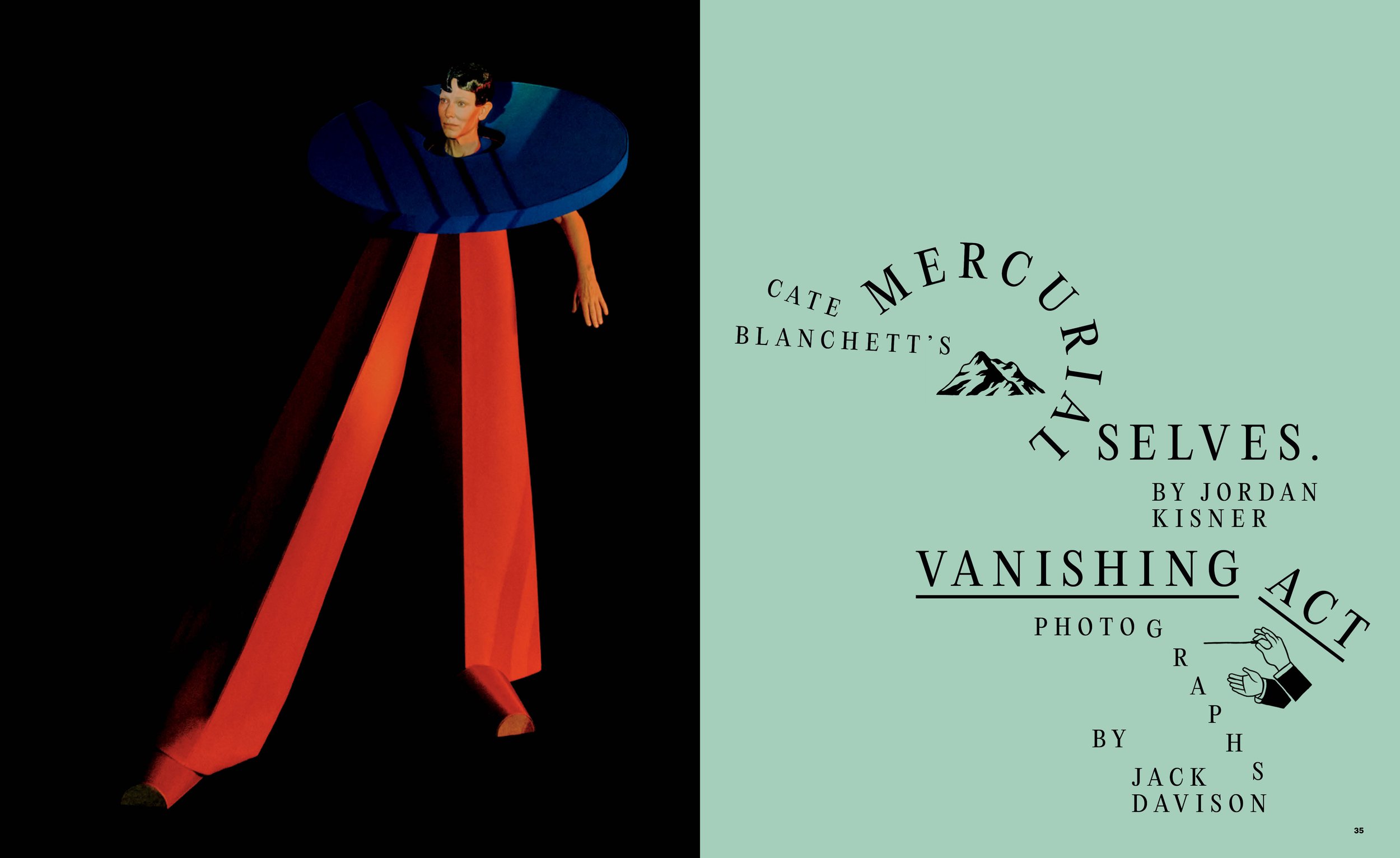
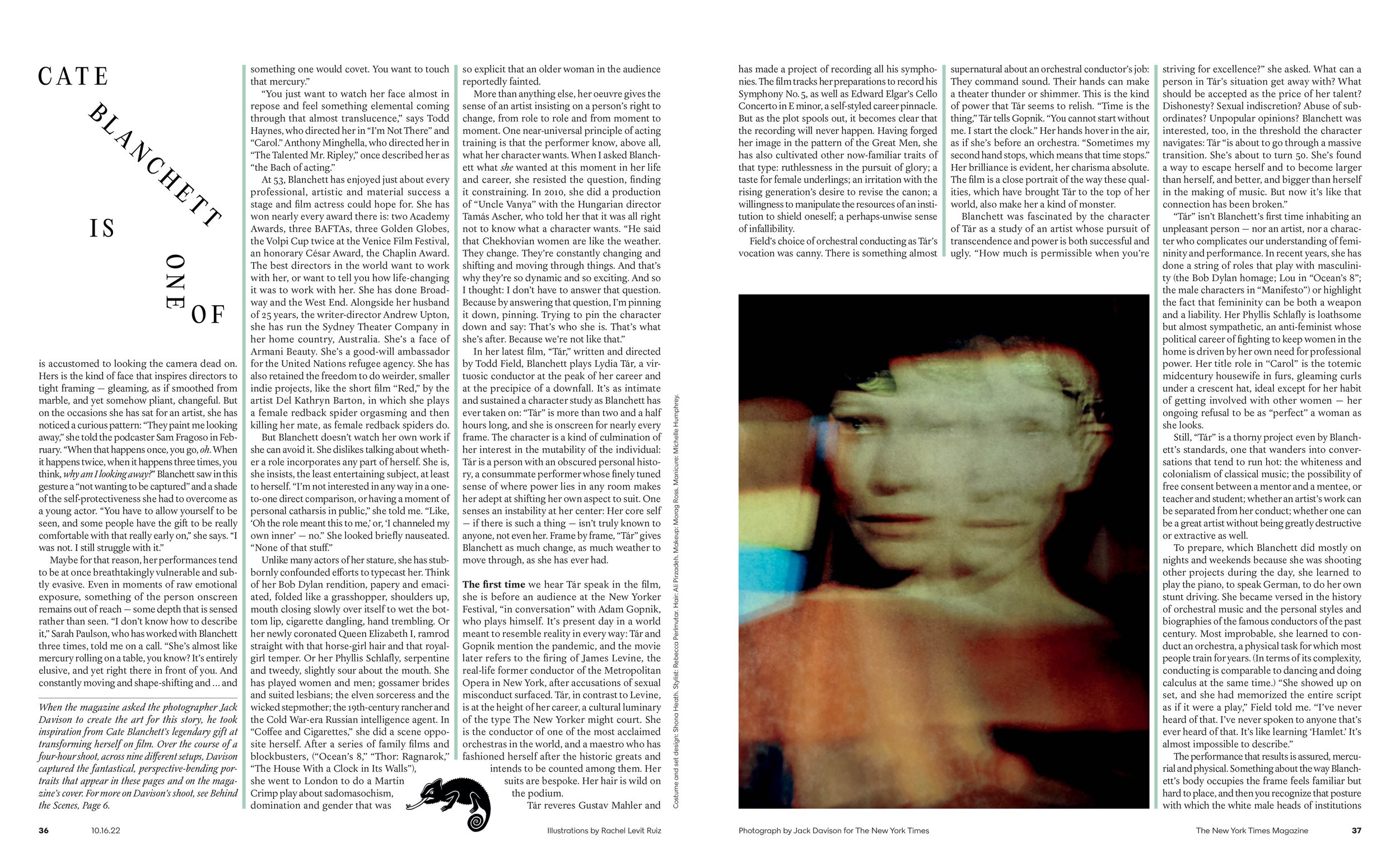
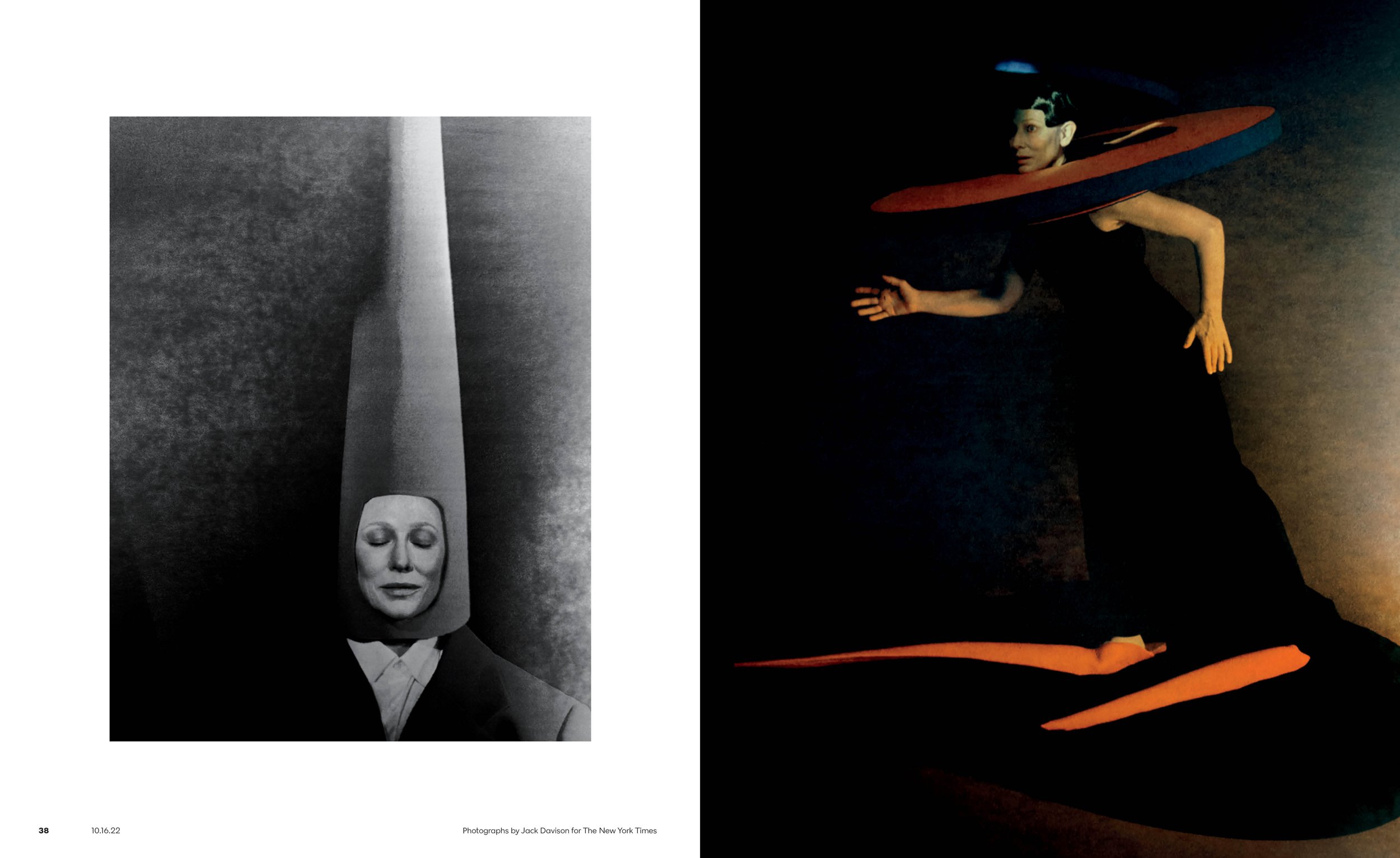
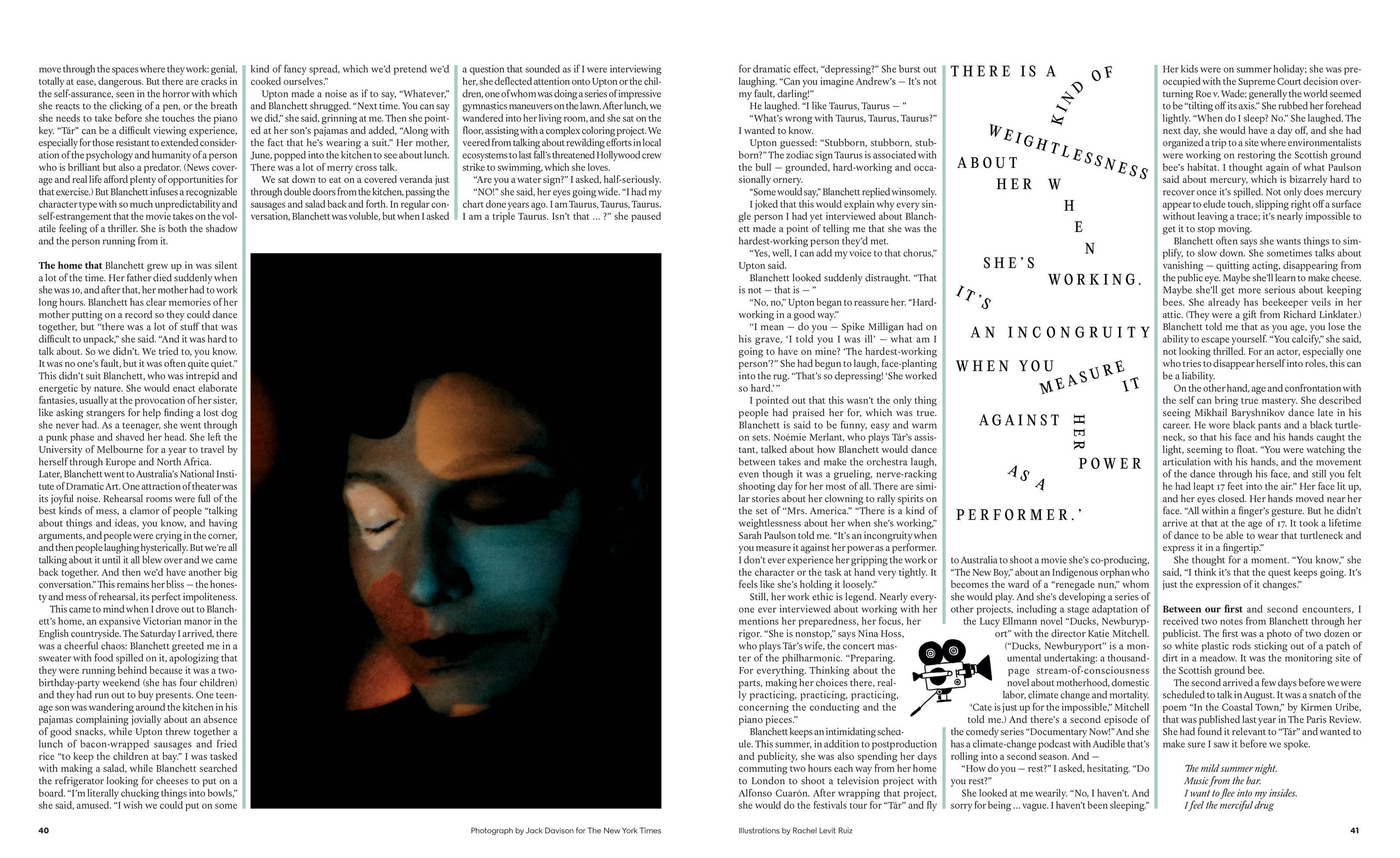
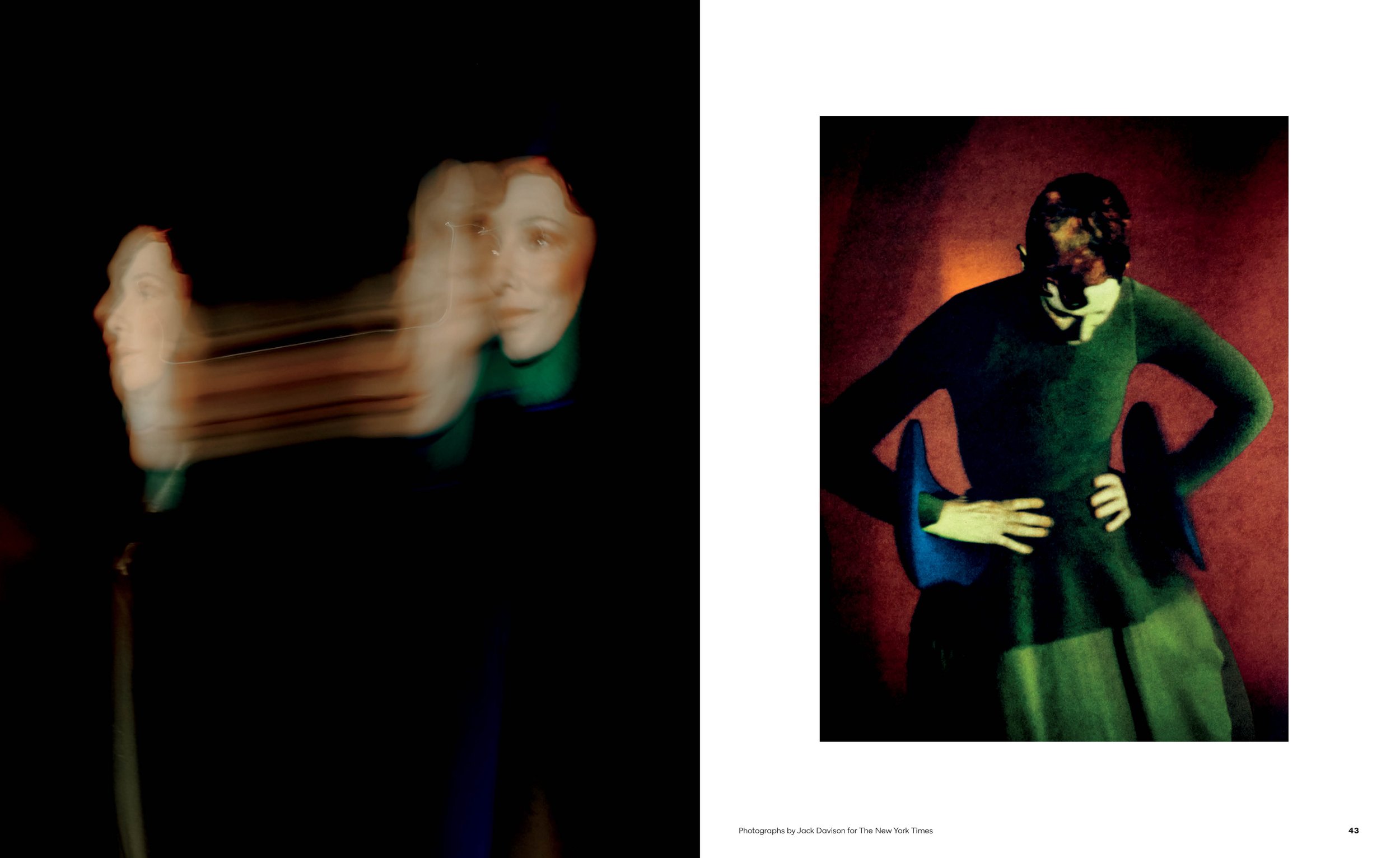
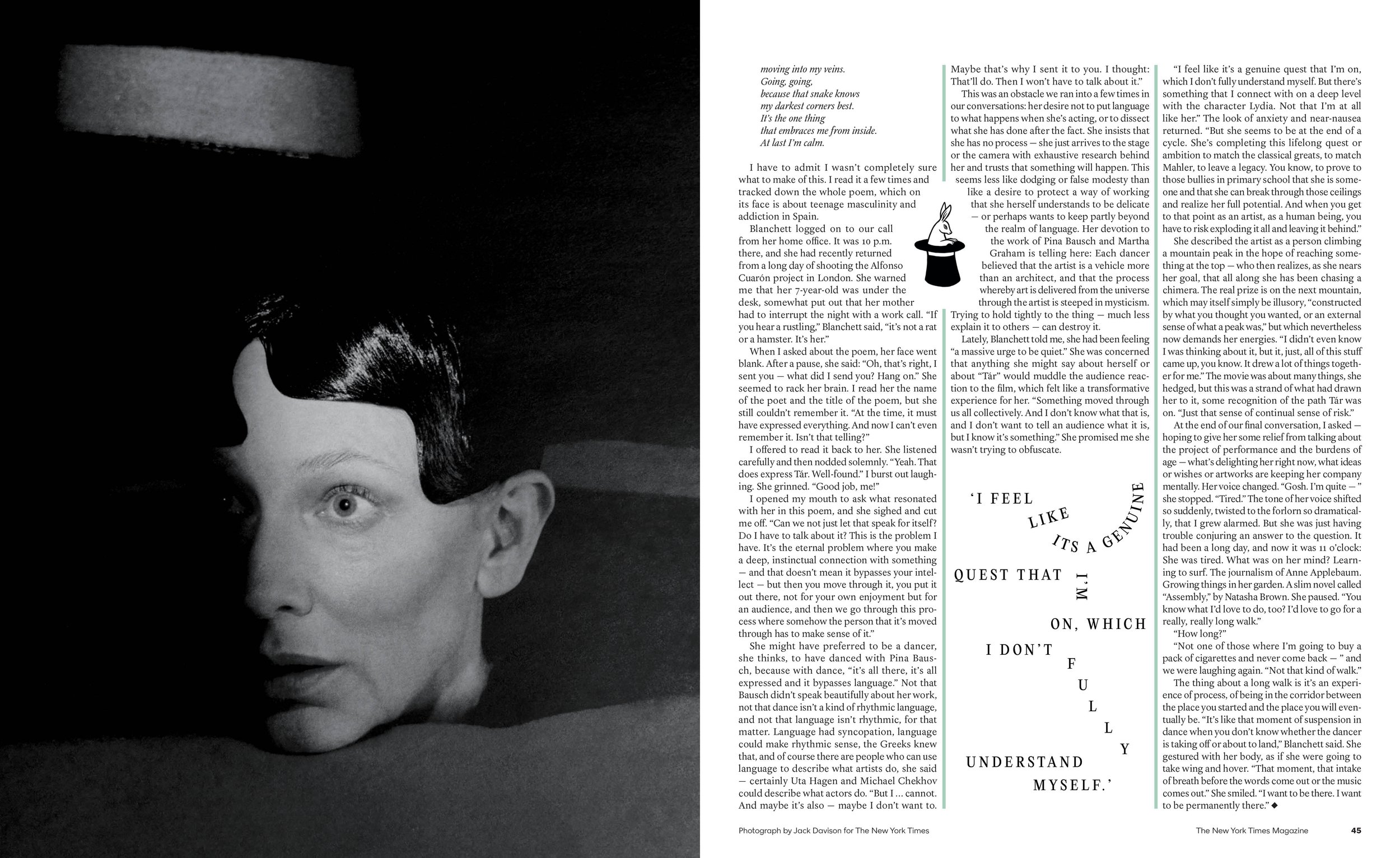
George Gendron: Have you gotten a call from Apple yet?
Kathy Ryan: What about?
George Gendron: Well, if Steve Jobs or Johnny Ive were still there, they’d be on the phone with you right now saying, “We’ve got to figure out how to collaborate here.”
Kathy Ryan: Well, you know, I’ve got my good friend, Rem Duplessis there. And Stacey Baker. Brilliant Stacey Baker, who was one of our photo editors. And Najeebah Al-Ghadban, who was one of our great designers, is there. And Marvin Orellana, who worked as a photo editor at the magazine, is there.
George Gendron: We’ve taken a lot of your time, but I have to come back to one thing, which is that you’ve been talking a lot recently about young photographers. A young photographer in particular. And yet on the one hand, we live in this age where everybody has access to all sorts of different platforms. And can be inspired to pursue creative projects. And yet it seems as if younger people coming up wanting to be journalists, writers, editors, photographers, videographers have a more daunting challenge than ever before.
And so I’m curious if you were in front of young students at an art college who are there because they want to hear what you have to say. What advice do you give to younger people who want to pursue a career in photojournalism? What do you say to them?
Kathy Ryan: The first thing I would say is follow your heart. Follow what you think is important. Photojournalists have to be opinionated. They have to take a stand. There has to be something that they care deeply about. And you have to have the courage to go for it.
George Gendron: Are you talking about subject matter or point of view or all of the above?
Kathy Ryan: Now I’m talking more about subject matter. So for example, Stephanie Sinclair, a brilliant photographer, early on started working for the magazine. She did incredible work on child marriage and she was the first photojournalist, as far as I know, to ring the alarm bell that there’s child marriage in so many places in the world, particularly Afghanistan.
We’re now going back 15 years, whatever. She cared so deeply about that subject that she committed her life to it. She obviously trained and developed her eye. She made remarkable pictures. So a young photographer needs to figure out what a photojournalist needs to figure out what do they care about. And then they have to go after it.
If you’re going to be a photojournalist, you need to actually start to develop something that’s yours. And then that leads to other things, like in the case of Stephanie. Then after that, she started talking about genital cutting. In many cultures in the world that still happens.
“It was one of the joys of iPhone photography. It removed some of that burden of ‘it better be good.’ Do I want it to be good? Of course. I work hard. You’d be amazed how many frames I’ll shoot of one thing, trying to get it exactly, precisely how I want it to look. ”
So she did an extraordinary photo essay for us on the brides in Afghanistan. And then she went on and did a photo essay on a cutting ceremony. And then she proposed doing something on underage marriage within the Fundamentalist Church of Jesus Christ of Latter-day Saints. And that will take you through your career.
So her deep empathy and concern for subjects affecting girls and women, particularly girls in the world, it’s like you have to almost be a visual activist. And she actually became an activist.
Earlier this year, when the draft of the Dobbs vs. Jackson decision was leaked in May, Jake wanted to do something related to that. And Jessica Dimson, the deputy director of photography of the magazine, had the idea to do something on the Cleveland Clinic maternal health clinic where pregnant women go who have risky pregnancies. And for years, doctors have had, as one of their things they can use in the treatment if there’s risk, the possibility of ending the pregnancy, which then suddenly, when the Supreme Court ruled, was no longer the case.
And I suggested we assign Stephanie. And knowing this lifetime of commitment, she was able to walk into the room with those women under duress, their husbands, their doctors. Maybe they’ve gotten news that’s disturbing. They’re making extremely personal decisions.
I think for young photojournalists, entering, as you’re right to ask, a very difficult field. It’s difficult to make a living, and difficult to compete with the abundance of imagery out there. But there are subjects that are under-covered. And if they can find one, if there’s something they care about, that will fuel them. That will keep them driven in a way.
Patrick Mitchell: I have sort of a cynical follow up to that question, now that we’re in 2023. And that’s, is there such a thing as a career in photojournalism, now and moving forward? And what does it look like?
Kathy Ryan: Oh, I think there's definitely a career because we're a visual society, so even though there are a lot of pictures, we still need someone to sort out what's unfolding out there to make smart, informative, focused pictures to tell you how to look at things. I think of people—Philip Montgomery, Mark Peterson—they’ve been at it for years. They’re still so impassioned that between jumping on a plane for self-driven assignments, or for us, or for the paper, or for other magazines, there are stories that actually need to be told by people who can make the complicated images they do.
LaToya Ruby Frazier, same thing. She does her own artwork, but they’re real documentary images. They’re real documentary portraits. Her approach is a little bit of a different approach.
You know, just because everybody has a pencil doesn’t mean they can write. Just because everyone’s making phone photography doesn’t mean they’re making the kind of pictures that merit a million people looking at them and then coming away with an understanding that a great photographer can bring to a subject matter.
George Gendron: One last question for you. Have you ever been bored in your job?
Kathy Ryan: No. No. I’ve never been bored. No, there’s never been a day where I’m bored. That does not happen.
Love City: 24 Hours of Romance, Lust, and Heartache in New York Photographs by Ryan McGinley
“Love City” was a special issue of The New York Times Magazine dedicated entirely to love in New York City over the course of a single day: Saturday, May 19, 2018. All the photography was shot on that date between 12 a.m. and 11:59 p.m. By choosing this theme and so tightly limiting the time frame, the magazine hoped to convey the city’s magical density of intimacies, the way it juxtaposes the private communion of one pair of lovers with the rollicking public energy of the bustling crowd—itself composed of numberless lovers communing privately amid the noise, all the center of their own universe.
Back to the Interviews
The Handy Man
A conversation with photographer Dan Winters (The New York Times, Rolling Stone, Texas Monthly, Wired, more).
A conversation with photographer Dan Winters (The New York Times, Rolling Stone, Texas Monthly, Wired, more).
Photograph by Kathryn Winters
President Barack Obama for New York magazine
Photographers are gearheads. They’re always throwing around brand names, model numbers, product specs.
So when legendary photographer Eddie Adams asked today’s guest, Dan Winters, if he knew how to handle a JD-450, it was a no-brainer. He had grown up with a JD-350. So yeah, the 450 would be no problem.
But here’s the funny thing: the JD-450 is not made by Nikon. Or Canon. Or Fuji. Or Leica. Not even his beloved Hasselblad. Nope. The JD-450 isn’t made in Tokyo, Wetzlar, or Gothenburg.
The John Deere 450 bulldozer is made in Dubuque, Iowa, USA.
And what Eddie Adams urgently needed, right at that moment, was someone to backfill, level, and compact a trench at his farm, which, coincidentally, was prepping to host the first-ever Eddie Adams Workshop, the world-renowned photojournalism seminar, at his retreat in Sullivan County, New York, near the site of the 1969 Woodstock music festival.
Get to know Dan Winters a little bit, and none of this will come as a surprise to you. It also won’t surprise you that the bulldozer incident isn’t even the funniest part of the story of how Winters got to New York City in 1988 to launch what has become one of the most distinguished careers in the history of editorial photography—a career that began with his first job at the News-Record, a 35,000-circulation newspaper in Thousand Oaks, California.
The secret—spoiler alert—to his remarkable career, Winters will say, “is based in a belief that I’m being very thorough with my pursuits and being very realistic. I’m not lying to myself about the effort I’m putting into it. Because this is not a casual pursuit at all. This is 100 percent commitment.”
Well, that, and out-of-this-world talent and vision.
Ryan Gosling for Wired
George Gendron: So it’s 1988. The magazine industry is really thriving, especially in New York City. And you’re a photographer for the Thousand Oaks Chronicle.
Dan Winters: Uh-huh. The News-Chronicle of Thousand Oaks.
George Gendron: Yeah. And I want to hear you tell the story, which I think is really remarkable, about how you made your way from there to New York City, via Eddie Adams’ farm. And don’t leave any details out: the missing portfolio, the uncle who isn’t there…
Dan Winters: Wow. Okay. You want to hear the whole thing.
George Gendron: I want to hear the whole thing [laughs].
Dan Winters: Okay. I was working at the Thousand Oaks News-Chronicle, which was a 35,000-circulation daily. We had seven staff photographers, a full-time lab tech, full-time photo editor. You know, I still hold it to be, probably, one of the greatest times in my life.
I had a ’62 Volkswagen bug and my David Hume Kennerly Banana Republic photojournalist vest and a couple of Canon F-1s around my neck. And I was just absolutely in heaven doing general assignment work. My mentor, John Gray, who was an instructor at Moorpark College, he called me and he said, “Hey, Eddie Adams and Kodak and Nikon are throwing an event called the Eddie Adams Workshop in upstate New York. I think you should apply.” I said okay. He gave me the materials and at the time it was all mail. So I mailed 20 transparencies. They were all copy slides.
George Gendron: Let me jump in. Remind people who Eddie Adams was, and his significance, and his reputation at that point.
Dan Winters: Eddie Adams was a photojournalist best known, in my opinion, for his coverage of the Vietnam war. Most significantly, the photograph of the street execution of the Viet Cong prisoner by General [Nguyen Ngoc] Loan, who, at the time, was the chief of police in Saigon. The photograph immediately went viral and was reproduced extensively the world over. In combination with that image and the photograph that Nick Ut took of the “napalm girl” running from the village, naked—those two images, I think, really weighed heavily on the public consciousness and support of the Vietnam War. I think they were kind of the beginning of the end.
In Eddie Adams memorable photo from the Vietnam War, Gen. Nguyen Ngoc Loan (left), chief of the South Vietnamese national police, executes a Viet Cong prisoner on a Saigon street during the Tet offensive in 1968. Adams reported that after the shooting, Loan approached him and said, “They killed many of my people, and yours too,” then walked away.
Eddie had a career after that. He started doing Parade magazine covers and much more slick, studio stuff. He kind of always imagined an environment that could foster young talent that was solely merit-based. It was based on review of work, not an interview. Nothing else. It was based on 20 slides. And at the time it was available to applicants that had two years or less professional work.
I applied and kind of forgot about it, to be honest with you, because it seemed like the application processing took a very long time, but I got a letter in the mail, and I’d been accepted to the first year, and that was a hundred students from all over the world. I had never been to New York and I was beyond excited about it.
At the time I was at the paper, I was thinking very, very strongly about magazine work. I was looking at all the magazines. I was looking at what Sports Illustrated was doing, what Fortune was doing. A lot of the stuff that Gregory Heisler was doing at the time and really fashioning a lot of my newspaper work in that manner. I was taking lights to assignments and doing portraits that were lit, and I was shooting 4x5. I really had my sights on doing magazines. So I went to the workshop and I lost my portfolio … somehow. So I had no work to show.
George Gendron: [Laughs] I don’t mean to laugh. [Laughs again].
Dan Winters: Yeah, no, it’s actually funny, now. I had made arrangements to stay with my Uncle Bill, who was, at the time, the head of world public relations for General Motors. He had a very big job in the General Motors building on the park. I had communicated with him and told him exactly when I was coming, et cetera, and he was totally fine with it. And I showed up in New York and first off, tried to figure out how to track down my portfolio in a cab, which is the most naïve thing probably ever. But I had no idea. I started calling cab companies and asking if they’d found a black box. It was just a debacle.
I got to my uncle’s house and rang the buzzer and I didn’t get an answer. So I waited a little while, went and got something to eat. Went back, kept buzzing, nothing, nothing, nothing. I ended up spending the night in the—he lived in a brownstone on 82nd street on Central Park East. I ended up sleeping in the flowerbed area of his—and this is October—of his place …
“What are you doing right now? Okay, here’s what you do: Quit your job and move to New York.”
George Gendron: … Welcome to New York!
Dan Winters: Yeah, right! The next morning, I just decided I was going to buzz all the buzzers in the building. I got the super, and I explained that I was Bill Winters’ nephew, and he actually had a contact number for Bill whenever he would go anywhere. He’s in Detroit at the time. He called Bill. And of course I got the thumbs up, so I had an apartment after that for the two days, and I have a loaner car from him as well.
So I drove up—this is, like, a comedy of errors because I also drove up to the workshop thinking it started on a Friday, but it started on a Saturday [laughs]. So I got up really early on Friday and drove up there and I pulled into the farm and it was just this absolute beehive of activity.
People were trying to get everything prepped. They still didn’t have—they’d just hooked up the power to the barn. But they were overwhelmed and there was a trench that went from the barn of Eddie’s farm, which is where the workshop is being held, to the road, which was several hundred yards. And I kind of assessed the situation and I asked someone—I said, “Is there anything I can do to help? I’m here early, accidentally. I’m one of the students.” And they said, “You know how to drive a bulldozer?” And I said, “Yeah, I do.” We had a JD-350 growing up and you guys have a JD-450. I can totally drive the bulldozer. And they said, “Can you backfill that trench?” The trench went from the barn to the road, a couple hundred yards. And I said, “Absolutely.”
So I got on it, and several hours later I had it back-filled, leveled, and compacted. And Eddie, I saw him a couple of times standing around, in his black gear from head-to-toe, with his black hat, and his black pants, his black shoes, and his black shirt. I saw him watching me a few times while I was working. And when I was finished I saw him and I went up to him and I introduced myself and he said, “Listen, I want you to come to the farmhouse every night.”
So, “coming to the farmhouse” meant that you got to go into this wonderful environment where all of the instructors sat sipping whiskey and sharing stories. I remember Carl Mydans talking about shooting [General Douglas] MacArthur coming ashore onto Leyte [in the Philippines]. It was just this amazing magic.
That’s the first time I met Nick, by the way. And it was just this incredible experience. I was the only student in there. And, for whatever reason, I talked to the folks at the workshop, I spoke at the 20th anniversary and the 25th anniversary. I spoke to the folks there that had been involved in it that entire time. And they said in the entire 25 years of the workshop, not one student has ever been allowed in the house. I was the only student that’s ever been allowed in the house at night. And I thought, Well, that’s a pretty cool little achievement.
So anyway, at the workshop—since I didn’t have any work to show and everybody else had work to show—I convinced someone that they should dig through the files and pull my 20 slides that I submitted, so that I’d have something to show. I felt like I already had quite a bit of juice because of the whole bulldozer thing. So they did. They went and found it and gave it to me. So I had something at least at night because there’s a really wonderful … First of all, the environment there was really, really wonderful and conducive to creative talk and creativity in general and the exchange of ideas, et cetera.
Ridley Scott for Wired
And every night, ancillary to the workshop, is this informal portfolio review. A number of the many instructors and speakers would make themselves available to students to look at work and have an exchange about it. It was very informal. It wasn’t scheduled. You waited around the table.
If you wanted Jay Maisel, or you wanted Greg Heisler or Mary Ellen [Mark], you hung out and waited your turn. And it’s really wonderful. And it was actually very rewarding and satisfying for me at the 20th anniversary and the 25th anniversary to be able to function in that capacity with students. Having been a student, it was very, very moving for me.
So I showed my work to Jay Maisel, because there was a little pause and I kind of horned in there, and he looked at it and asked me a few questions and said, “Come with me.” And he walked me over to Greg Heisler, who to this day, I really, really admire and respect all that he’s brought to our industry.
And Jay said, “Look at this stuff.” So Greg looked at it and he looked at me and he said, “Okay, what are you doing right now?” And I said, “Well, I’m a staff photographer at a 35,000-circulation daily, blah, blah, blah.” He goes, “Okay, here’s what you do: Quit your job and move to New York.” Literally those words. That quickly. And I said, “Okay, that sounds good. I’ll do that.”
And later on, after becoming very good friends with Greg—he actually had an apartment in Little Italy that he had just moved out of, but he still held the lease on it. He gave me the apartment, so that I had a place when I landed. I had two bags and one camera bag. He said, “I could have said that to a hundred people, and one of you would have done it.” So he always really admired that fact. So I literally went back—this will give you an idea of the climate at the newspaper as well.
We won a lot of regional awards. We had one guy that won the POY, Joe Luper, and we were incredibly supportive. And we were competitive, in a very healthy way. We went out and every time we tried to come back with something really good, no matter what. It was a really great photo paper. And when I went back and I told the story, everyone was like, “Yeah! You gotta go. You gotta do it. You gotta do it!” So it was always accepted. And it was quick: “I’m giving my two weeks notice. I’m moving to New York. I’ve got this apartment all worked out.”
“I really believe that if we shine our light on something, the universe reflects back. And all I did 24/7 when I was at the paper was photography.”
And the one thing I did leave out momentarily here, is that Greg Heisler said to me, Chris Callis, who was an incredible photographer—is an incredible photographer—he did some amazing work around the time that we’re talking about as well, mid-to-late ’80s, that was kind of his time—Greg said, “Chris Callis is looking for an assistant and I think you should go interview with them. I’ll call him for you.”
So he called him and I went over to Chris’s, and Chris was really interested in manufacturing his own lighting equipment, and he had a mill, and he had a whole metal shop and a wood shop.
I have skills in all those departments and when I talked to him, he started asking me about that. And I said, “Yeah, absolutely. I can work the mill. I can run the mill and I’ve been around other equipment, that’s not a problem for me.” And he said, “Listen, this is really unfortunate, this timing, but I just hired a first assistant two days ago. I let Greg know that I needed someone, but that’s sort of passed. I hired Irving Penn’s first assistant.” And I said, “Well, okay. I still plan on moving to New York.” I wasn’t deterred by that, but it would have been nice to have a locked-in source of income when I got there. But I was confident that I could figure it out.
So, I went back to California and I had a message on my answering machine from Chris. And he said, “Listen I don’t think it’s going to work out with this other guy. If you’re willing to move here, I will hire you. Full-time.”
And so I moved to New York and I had a position right away. I got there on Saturday and on Monday I started. The guy he had hired, he just really didn’t have any of those practical building skills that I had. And Chris really wanted that. And it was all very amicable. So it wasn’t ever a thing.
It was nice to be able to move to New York and have a job that I went to. I got paid $80 a day, taxes were taken out, and I was happy as long as I could by film and paper.
I set up a little darkroom and everywhere I lived in New York: I lived on Mulberry Street in the Village, then I lived in Prospect Park in Park Slope, then I lived in Tribeca, and then I finally landed in the West Village on Leroy Street. That’s where I built my first studio that I actually had enough room to shoot in. And my darkroom.
Angelina Jolie for National Geographic
George Gendron: Dan, a minute ago, you said when it looked as if the assistant job was falling through, you said, “Well, my response was, ‘That’s okay. I’ll figure it out.’” Not a lot of people would’ve reacted that way. When you think about New York as the mecca, everybody—writers, editors, photographers, designers—felt they had to go there, for the excitement and to prove themselves. But for most people it was a really intimidating prospect. Getting there, getting work, breaking in, all of that stuff. What gave you that confidence so early in your career—that “Well, I’ll figure it out”?
Dan Winters: Really, honestly, I really believe this: If we shine our light on something, the universe reflects back. And all I did, 24/7 when I was at the paper, was photography. I would stay many, many, many hours after I was off, working in the darkroom. I shot constantly for myself. I really believed in myself and I studied photography extensively. I fancy myself as being a scholar on photography. I continue to this day to do research, and I’ve written quite a bit about the history of photography. So it kind of wasn’t an option. I talk to students often and I tell them, “If there’s another path that you could consider going down, besides photography, I would suggest you take that other path regardless of what it is, because this is not a casual pursuit at all. This is 100 percent commitment.”
I was completely committed, and I also feel like there was a level of confidence because I made that inroad with Greg, and I felt like he could probably steer me somewhere. Worst-case scenarios, I could start shooting for the Village Voice, which wasn’t actually even a worst-case scenario, but one scenario was that I could shoot for the Voice or for Time Out or Metropolis—pick up some freelance work.
Another thing I’ve spoken about in the past is that, at that time, the worst thing that could happen is I would land on my parents’ couch. The parachute was going to open no matter what. If I couldn’t make it, if I couldn’t, I knew I could at least regroup on my parents’ couch. And that was a really comforting feeling, to know that the parachute was going to open regardless of what happened. But I do feel like I have a lot of self-confidence, and I think it’s not arrogance at all. I think it’s based in a belief that I’m being very thorough with my pursuits and being very realistic, I’m not lying to myself about the effort I’m putting into it. I think when we start doing that, we go down kind of a rocky road, if we’re dishonest with ourselves about how much we’re putting into it.
I’ve had relationships, I had a girlfriend for a while who was working as a photographer as well. Some conflict that arose in that relationship, through my feeling like she wasn’t putting as much as she needed to into it, in order to get the kind of return that she needed. But she’s doing fine now. She’s a cinematographer and everything’s fine. But I remember really feeling like I had to do this 24/7 in order to make it work.
Musician Robert Cray for Rolling Stone
George Gendron: So you’ve landed in Manhattan. It’s 1988. I’m curious what magazines at that time really resonated for you personally, as a reader, as a photographer, visually, for whatever reason. What were the magazines that you were really drawn to?
Dan Winters: I worked for Chris for a year and in that time I shot nonstop. I shot every weekend. I did a bunch of photo projects. He would go to his house in Mattituck every weekend with his wife, Lisa Jenks. So I had his darkroom, which was a huge—I had my own darkroom at home, but he had this really big, beautiful, darkroom that I worked in and printed constantly.
I had a box made that was embossed and it was loose prints and it was all very calculated. When I got the job from him, he said, “I need a one-year commitment.”
And I said, “That’s not a problem. I’ll give you a one-year commitment.”
And, as my departure time approached, I would remind him, “Okay, I’m going to be here two more months.”
And he’s like, “Ah, you’re not going to go anywhere.”
I’m like, “No, I’m going to be here two more months.”
So I replaced myself with a guy named Dave Bashaw, and I left right at the same time I showed up, which was November of ’88, and November of ’89, I was gone. And I had already printed a portfolio, had a whole plan of attack. I had a list of magazines I wanted to go to. And the first one I went to was Horace Havemeyer III’s Metropolis, which was doing some really cool stuff and was really beautiful. Jeff Christiansen and Helene Silverman (Gary Panter’s wife) were designing it. And I thought the design was really really smart. It kind of had Bauhaus Swiss overtones to it, which I really loved. They used photos big. It was a large-format magazine. I lived in Tribeca at that time and I walked over to their studio. It’s called Hello Studio, which I always loved, because they’d answer the phone and say, “Hello Studio.”
I dropped off my portfolio and I went to get something to eat. And I went back to the house and my light was flashing on my machine and I got two assignments in—it took an hour to get two assignments! And I thought, This is going to be so easy! Wow, crazy! Right off the bat, right off the bat, getting work.
Patrick Mitchell: They really need me.
Dan Winters: They really need me. Everybody needs me. So I did those. And honestly, what I was looking at were magazines not for the subject matter of the magazine as much as the way the subject matter was being handled, and American Health—they were doing a great job there. Beautiful design, using photography beautifully. At that time, I believe EGG magazine had just launched—they were real allies of mine. Jim Franco was the photo editor there and he gave me some great assignments. My first travel assignments. I think American Health was the first travel assignment. I flew to Chicago and shot a portrait and flew back in same day. I just remember how liberating and free it felt to be able to be earning a living in the way I was. And it was different than the newspaper, because the newspaper had, of course, job security. And this didn’t, but I felt like if I did the best I could every single time I shot, that was how you create job security. And I still hold that to be the case.
Rolling Stone obviously was, in my opinion, incredible. Harper’s Bazaar was amazing. Interview was doing great work—Tibor Kalman was art directing it at that time, and he’d never done a magazine before. But I felt like he was doing such incredible work. Actually, Tibor became a real champion of mine. I showed him my work, and he sent me to Brazil and he sent me to Venezuela, and he was giving me work in New York, and all these things kind of started to build. And obviously I started to get higher profile subjects for my portrait, so that compounds itself.
And I had a funny story about Rolling Stone. I looked at the masthead and Fred Woodward was creative director and I thought, Well, creative director is the guy I want to talk to. I know there's a photo editor, but the creative director is the guy I really want to talk to. So I started calling his office. Geraldine Hessler was his assistant at the time, and every time I called, she said he couldn’t come to the phone. I called so many times that I sort of had established this phone relationship with her.
And I was like, “Hey, Geraldine, it’s Dan. Hey, is it possible for me to get on the phone with Fred?”
And she’s like, “Oh, he’s in a meeting right now.”
And I said, “Geraldine, just tell me straight, is he really in a meeting right now?”
And she said, “No, he’s not really in a meeting right now, but he doesn’t really take phone calls, like photographer phone calls.”
And so she said, “I’ll tell you what. Bring your portfolio up here to my attention and I’ll look at it. And I promise you I’ll put it in front of Fred.”
And she did. And I got a call that afternoon, late, from Fred directly. And he said, “Can you come up tomorrow and meet with us?” And I said, “Yep.” So I went up—rode my bike up there. I rode my bike everywhere in New York. I rode my bike up there and went and had a meeting. And it was [Fred], and Jodi Peckman, and Nancy Jo Iacoi, and Laurie Kratochvil, and Geraldine. And we sat in a room and went through the portfolio and I walked away with a couple assignments and shot for them pretty regularly from then on out.
“I felt like if I did the best I could every single time I shot, that was how you create job security. And I still hold that to be the case.”
George Gendron: So they really did need you?
Dan Winters: They did need me. At the time too, and I’m not really sure how much it factored in, because [Mark] Seliger was doing pretty big shoots for them at the time that had a lot of production and stuff. I was still sort of working by myself. I had a rollercase that had my lights in it, I was using Normans, so I had a few 200-B, 400-B Normans, and I shot with a Hasselblad, always. So that was my shoulder bag. I was working really light and I was traveling alone. And I could spend a considerable amount of time on a project and it would be pretty low-impact for them financially.
I was very frugal. And so I think there’s probably an element of the fact that I could really work economically for them. But also I felt like I was making good work for them. I started working for GQ quite a bit. Karen Frank and Robert Priest. In fact, it was the first time I ever got a raise.
I remember that everybody’s day rate at that time was $350. And that was everybody, from The New York Times Magazine to Fortune. It didn’t matter. It was $350. And I think the assumption was that everybody worked for $350. And I found out that actually wasn’t the case. But they kind of present as though that’s the case. Like, “No, that’s our day rate.” And I realized later that the day rates are actually fluid. I remember I was in the elevator with Karen and Robert, and Robert said, “How much do we pay you a day?” And I said, “You pay me $350 a day.” And he said, “Well, we’re going to pay you $650 a day now.” And I thought, Wow, I just got a raise. That’s pretty cool.
George Gendron: Wow. Nice negotiating! [Laughs].
Dan Winters: Yeah. Right? I know. Totally. I could’ve asked for more! But those were amazing days. And it’s interesting you’re bringing up that time. I suppose you’re bringing up that time in photography and magazine publishing because that’s kind of my time, but that was a really magical, really magical time for me.
I know magazine photography very well all the way from, let’s say pre-war Life all through the war and then into LOOK and Nat Geo and a lot of the picture magazines that existed. And then, in through the sixties and seventies, and certainly the way the photo essay developed and everything from Walker Evans’ work with Fortune pre-war and then post-war, like Eugene Smith .
I do feel like there was this notion that there was a school of photography for each magazine. So, the “Fortune school of photography” or the “Nat Geo school of photography.” And there was a level of expectation, I suppose, on the reader’s part to get this sort of a similar aesthetic delivered to them.
I do know while Nat Geo’s aesthetic and the way those images were presented slowly changed over the years, and I think that Alex Webb was largely responsible for the shift that took place in Nat Geo’s stuff. Tom O’Brien. Was that his name? He was the photo editor there for a while, who hired Mary Ellen Mark to do a black and white photo essay and hired Greg [Heisler] to do these beautiful, lit portraits and Michael O’Brien to do these beautifully lit portraits that really deviated from Nat Geo’s standard aesthetic.
So there was definitely this push for individuality and for work that was, singular and identifiable, and it was really fostered by the magazines I think. And I feel to a degree there was an expectation at some point that I was going to be delivering work that was maybe unique to me and feeling like, “I’m kind of a baby in this world. I’m trying to develop a sensibility.” Even back then I was really aware that style was very fleeting, and having a sensibility or an opinion about the world—the way things function, an opinion about photography and what makes good photography—was much stronger than a stylistic approach, which was very thinly veiled, I think.
Millie Bobby Brown for Entertainment Weekly
George Gendron: It’s interesting you talking about this because of course, although the time frames are slightly different, on the writing side you had the New Journalism.
Dan Winters: Yep.
George Gendron: Which, from the editorial perspective, did exactly what you were describing, which is suddenly, you could identify one author from another simply by their style and their approach.
Dan Winters: Sure.
George Gendron: People were willing to take risks. And Tom Wolf develops writing block, and his editor says, I don’t know, “Write me a letter.” And they publish the damn letter, just, take out “Dear Byron!” And there was this sense of wild experimentation that was really thrilling.
Dan Winters: Yeah, I don’t know if you remember Tom Junod, the piece he wrote on Fred Rogers for Esquire?
George Gendron: Yeah, sure.
Dan Winters: He basically wrote a piece on himself and how the Fred Rogers encounter affected him. It started out as a profile on Fred Rogers. I shot that one, actually, and that was one that really resonated with me. And the stuff Mike Sager was writing. And yeah, there’s a lot of, you know, Robert Draper who was at Texas Monthly at the time, but then, New York stuff as well. But there were photographers that were doing work that were—it was so inspirational.
When I see magazines now, there are exceptions and there are exceptional pieces where there always were exceptional pieces, but I feel a lot of the magic has gone away. I feel the “event photo,” or the “event photo essay,” or the “event story” that I experienced so many times in early part of my career, where you just, you couldn’t believe that Matt Mahurin did this photo for Rolling Stone. And it was so beautiful and so inspirational you were really challenged and inspired—not to trump what he did, by any means. But to really just push your own work.
And this was something that was very common in my experience: Albert Watson doing a photo essay on this or that, or Seliger doing a photo essay on this or that, or a beautiful portrait, or seeing a photo essay by Mary Ellen or… You were really challenged, but also just inspired, and also just kind of almost taken aback. The “event experience” is probably the best way I could explain or describe what I mean. And I remember so many of them. I remember opening Rolling Stone, for example, and seeing something and just being so blown away that I felt like, Man, this guy just upped the game!
George Gendron: And people would talk about…
Dan Winters: And people would talk about it. Yeah.
George Gendron: …the story or a photograph for weeks.
Dan Winters: Absolutely. A hundred percent. Yeah. People would tear them out of the magazine and tape them up to their walls. And yeah I went to a party one time, and one of my photos was taped to the wall of a party of someone I didn’t know. I said, “Whose house is this?” Or “Whose apartment?” and “I want to, I want to tell them that I shot that photograph.” And they’re like, “Oh man, that’s so cool. It’s such a beautiful photo.”
But really the expectation became really high. Everyone felt like they were a part of something. It was a thing—I don’t want to say it was a movement, but there was this. Karen Kuehn and was shooting. And Chip Simons was shooting stuff. And it was experimentation, and it was social awareness, and it was like reverence, and was concept. And it was so much more difficult to research people back then.
I research people now, it takes me 20 minutes and I know someone’s life story, at least a part of it. And I’ll watch a couple of interviews and I’m like, “Okay, I got it.”
When I go on a job, I have a really good idea of what their dog’s named, for Christ’s sake. You can get every bit of information. I remember getting assigned to shoot Ryuichi Sakamoto. And I’d never heard of him, and I’d never heard any of his music. And I had to go to…
Patrick Mitchell: … Tower Records [laughs]?
Dan Winters: I didn’t go to Tower for this [laughs]. I went to The Underground. It was just off Bleecker, and there was a bar. It was a below-street-level record store that I used to go to all the time, and I found something. But yeah, Tower—I’d go right over there on my bike. I usually walked over to The Underground and bought stuff. But, that’s how you did it. I mean, I tell my son about writing papers in college and how difficult it was to spend eight hours at the library, and you can do it now so quickly with the information that’s at your fingertips.
George Gendron: Dan, what happened to that sense of experimentation? Why does it seem that there’s so little of it now?
Dan Winters: Well, if we’re talking about now, like the time we’re in right now, money is a big factor. And the budgets are very low, and they’re usually flat-rate budgets. So they’re “all in.” And they’re incredibly low. They’re able to attract people that will work for nothing. And that’s kind of what they’re getting, oftentimes. They’re getting that.
Patrick Mitchell: The value isn’t there for…
Dan Winters: … The value’s not there. And people don’t value it. And it’s like, “Oh, it’s just a picture of a guy. This guy has a good Instagram, so we’re going to hire him and send him. And we’re going to pay him a thousand dollars, all-in.” Which, when I used to shoot for Metropolis, I’d shoot a whole job and say the budget was $250 all-in.
And so what I would do is I’d say, “I need to make this much.” So I’d say, “Okay, four rolls of Triax is what I’m going to give to this job. I’ll process it and print it myself, and I’ll make $200, or whatever.” It would be $250 or whatever. And it still holds true: you can shoot it, you can process it yourself. You can transmit it yourself, and you can work pretty cheaply. And sometimes I do that. Pretty rarely, though, because there’s money in the advertising sector. And there’s money in tech.
“When I see magazines now, there are exceptions and there are exceptional pieces where there always were exceptional pieces, but I feel a lot of the magic has gone away.”
Patrick Mitchell: Yeah, I think it’s safe to say that when big publishers look back at whatever they did wrong to get themselves in the position they’re in now, it wasn’t spending too much money on photography.
Dan Winters: I would agree with you [laughs]. What was the great quote by Greg Heisler where he said—I saw him speak one time and he said, he said, “Yeah, magazine photography. You can literally make hundreds and hundreds of dollars.” [Laughs]. I thought it was hilarious. I still use that when I speak, of course I always credit him, but it is true though. It was never really like a money-making thing for me.
I felt like I was a part of a community and I felt grateful that I was a part of that community. I knew all those guys. We had parties. And Matt [Mahurin] would have a party or Bill Duke, every year he had a Halloween party, and everybody went to that.
And one year Mark, and Matt, and Frank Ockenfels, and Brian Smale, and this great list of people, including some illustrators, we all went down to Mexico. And we hung out for a week. And every night we showed work and laid in the sun and drank beer. It was just this great community, and I felt like I was a part of that community, and that community was—Fred Woodward was there—we kind of watched out for one another to a degree. It was a kind of beautiful moment, and it was a moment. I don’t think that exists anymore. I think there’s a lot of people that are shooting for magazines that really don’t have any business being in the pool. And I think a lot of it has to do with budgets.
Patrick Mitchell: You already explained how you got to New York, and you didn’t really have to make a choice, but was there a point back in Thousand Oaks where the idea that New York was in your future, that popped into your head?
Dan Winters: Actually, I felt like LA would be my “New York experience.” I didn’t think I’d go to New York. I’m certainly grateful that I did. And I do know designers—DJ Stout, we’re talking about Texas Monthly—DJ Stout to this day when I speak with him, New York comes up. Because he never went and he feels, as successful as he’s been, he feels a little bit like, “I didn’t do New York.” And he was hiring all New York photographers at that time. But my sights were on LA work. Entertainment. I really love music, I’ve done a lot of music stuff and I felt like LA would be a good place for that. Obviously any kind of entertainment stuff was in LA or, not all of it, obviously, but there was a good deal that was in LA. So I thought that that would be my move. That I would probably stay in Ventura County and start trying to get work in LA, whether it was LA Style or or even just go to New York, show work, and be an LA guy for the New York magazines, like Interview and those guys. That’s probably what my plan was, but I was pretty fluid with regards to the path I took.
And again, I think that was largely supported by the confidence that I… I told my son, “Do your best to not have an overhead.” And if you don’t have an overhead, you have a lot of freedom. Once you get an overhead, you cease to have that freedom. Mine was very, very low. I was living very economically.
The one thing I remember when I moved back to LA was that I had acquired a whole lot of books. And that was the one thing that when I moved to New York I didn’t have. I had a couple books. And I don’t know if you remember A Photographers Place over in The Village. I mean in Soho. Harvey Zucker —and I bought so many books off of him. It’s not even funny.
That was kind of continuing to be sort of a major part of my passion: photo books. But I think LA would have been the move probably that I would’ve made. I’m not sure—at one point I may have moved to New York, but, I think, when someone like Greg says that to you, you take that as sage advice. And I could have completely missed that opportunity and not done it, and I don’t know where things would have gone. I certainly know I would have still been doing photography. Never an option. And it was really not an option to not be doing magazine photography, but it would have gone down differently.
Leonardo DiCaprio for Wired
Patrick Mitchell: In an interview you talked about some great advice Jay Maisel once gave you. He said, “If you want to become a better photographer, become a more interesting person.” Based on your career, this has been true for you. And I have a theory that being interested in a lot of things from a young age somehow gives you a sense of security for, if/when your first career choice maybe doesn’t go as planned. Do you think that mindset has helped you survive?
Dan Winters: Yeah. I had that mindset long before I heard that from Jay, but I wasn’t really aware of it. We were a very working class family. My dad was a welder. And the one thing my parents did is they fostered my interests. And regardless of what it was, whether it was beekeeping, or woodworking, or model building, or photography, or filmmaking. My mom worked at a bank as a teller and down the street from the bank in the little town I grew up in Moorpark, California, was the library, and I would walk from school to the library at 3:30 or whatever it would be—and I would stay at the library for a couple hours until she got off work. She’d pick me up and take me home.
So I had this constant exposure to information that I really grew to value—any of those sort of specific pursuits with regards to that. So world history, European history, Civil War—whatever it was—aeronautics, military history, a lot of science stuff. So yeah, I do feel like I’ve always really been hungry for knowledge. And the knowledge that I possess, and have possessed, and continue to seek out, has certainly been an ally for me with photography. I’ve done a lot of aerospace stuff and I’m very knowledgeable about aerospace, and the history of aerospace, and how things work. And I’ve done multiple—I’m working on a four-year National Geographic project right now on the Artemis program. I get these jobs because the editors know that I know about the subject. And if you know about the subject, you can interpret it in a way that someone that doesn’t really understand that well. And that’s not a criticism, because I know there are photo editors that really liked the idea of, “I got so-and-so to shoot this, it’s totally not what he shoots, so let’s see what his take on it is.”
But something as complex as a learner program over four years, you kind of want someone that knows, like maybe someone would see something and react to it. That’s not really that significant a piece.
For example, there’s also prisons. Over the years I’ve gone to prisons many, many times. And there was an early Texas Monthly assignment where I went and shot at prisons in Texas and did a photo essay on that. That won some awards, and I think it planted the seed. And people said, “Dan knows how to navigate prisons.” And so I’ve done a lot of prison assignments. Or, even with celebrity portraiture, where you know how to navigate that world, and you’re knowledgeable about that world.
I’ve really made a point to try to understand human interaction, how that works. Like, What’s the best way to get from the point where the subject shows up to the point where you’re photographing? What kind of pleasantries…? And sincerity, I think, is the best tool you have. If you’re insincere, I feel like people can sense that. There’s also that reverence for your subject matter. But yeah, that quote from Jay is absolutely true: knowledge outside of photography is as important as knowledge inside of photography.
George Gendron: Picking up on that question from Pat—from an early age, there are two really striking characteristics that you seem to possess. One is this insatiable curiosity, and the other is this passion, maybe even obsession, but a passion for making things. Where did that come from?
Dan Winters: The curiosity, I think, is you just make a choice: either you’re going to be engaged or not going to be engaged. And we’re this biological organism navigating a physical space. And the thing we all have in common is we’re in the same space, right? So how much do I want to know about the space and what it offers and what exists within the space? I think that curiosity piece for me is like trying to make some sense of, yeah, I read this great quote the other day. I can’t remember who it was from. I wrote it down, but it said, “Think of yourself as a soul with a body rather than a body with a soul.” And I thought that was kind of an interesting way to sort of bracket that. And the idea that, first and foremost, you’re this soul having this physical experience.
But the making piece, that started at a very, very, very young age. I think my dad and I built our first model, it was a World War I, British SE5a [biplane] fighter. And we built it together. And painted it together. It was a magical experience for a number of reasons. One is because it was one of many things that my father and I did together. And I learned an immense amount from him. But secondly, the satisfaction of starting in one place and a definite ending, like “we’ve completed this task.” But I got really into woodworking and making my own airplane models, not kits. I learned about painting and airbrushing and I learned about—we built a lot of kits—so I started scratch-building models out of plastic as well. Started scratch-building spacecraft and this and that.
And that was really inspired by 2001. And I had an 8mm camera, and I would film my models against black, like they were going through space, and do stop-motion animation things. And you’re really into creating these worlds. And, as photographers, we’re completely reliant on something to sit in front of our camera, right? We can’t just conjure like a painter. We can, I mean, if we make the thing, and so I really got into and started to try and understand the way special effects worked, and the way miniatures worked into special effects.
And I started working on a pretty high level by myself doing miniatures. And then I approached ILM, Industrial Light and Magic, who did the miniature effects and special effects for Star Wars. I started taking pictures of my models and sending them to them and eventually was invited down to take a tour. And then eventually started working in the special effects industry, when I was still in high school, as a model builder. That was incredible.
I had Work Experience class, so I’d take two periods in my senior year, and then the last four periods were work experience. It was a pass/fail. So your employer basically either you passed or failed kind of thing, and you got school credit, provided all your other mandatory credits were taken care of, which they were. So I would go to my first two periods and then I would drive down to Hollywood and work in a model shop and drive home after work. And I did that for quite a long time.
So all of those building things, I mean, that’s kind of the thing that Chris was talking about when he was interested in hiring me—the idea of “how much building skill do you have?” And I had a lot of building skill. I’m good at building.
And I have a huge shop here at the studio: full-on chop saw, table saw, presses, everything. And we do a ton of building now: set building, all kinds of things. I think it’s just a progression. And once again, it’s also a desire to understand how to do something, as a kid watching Conquest of Space or watching 2001 or watching Thunderbirds, Space 1999. And all those British shows that used a ton of miniatures, like UFO, and trying to understand how that was all done and starting to experiment without any guidance.
I didn’t know anybody that was in the special effects industry. I didn’t know any model builders. I just kind of was making it up and trying to figure out how to do it. I think that attributed, obviously, to the stuff we do today with regards to—I just finished a film, a 35-minute film—since the science fiction films have been doing really, really well with the festivals, and it’s got a bunch of miniatures in it that I built.
I just think the building thing was just a byproduct of the curiosity: Start with the question, and then everything else kind of falls into place as you try to solve the problem.
George Gendron: And these different activities feed each other. I was struck by the story you tell in your book where you’re doing a portrait of Helen Mirren and she walks in and she’s absolutely blown away by the set, which you happen to have designed and built yourself, single-handedly.
Dan Winters: Yeah. One thing I think is, when we go the extra mile like that and really have something, there’s an expectation, even though it’s unspoken, like, “Okay, we’ve done all this for you, we need you to sign on for this.” And of course, there were no requests on her part. She walked in and she was like, “Oh my God, is this for me?”—I remember very clearly—“I’ll try to do it justice!” And then she certainly did. It was wonderful.
Helen Mirren for The New York Times Magazine
George Gendron: Yeah, that was an amazing shoot. God.
Dan Winters: We scanned that negative just a while back and I was blown away as to how little film I shot on that job. I think I shot, like, 35-40 sheets of 4x5. It was a very little, considering the effort, but it worked. It just worked right away. And there’s a tight portrait of her and there’s that pulled-back shot of her in the room. And I didn’t really work it that much. It just seemed like, “Okay, we’ve got it, it’s done.”
And I think that’s an interesting challenge as a photographer too: to understand that shoots have arcs. And when you start, sometimes, it happens very quickly. And sometimes it takes a little work. But our job is to be conscious about when it’s working and to understand, and I say this out loud on shoots often, because it’s important—and I think everybody understands that, “Okay. It’s working right now. Okay. We’re getting it right now. It’s working right now. And is there anything that we can do to make it better?” To me, when I say a “perfect photograph,” I feel like what I mean by that is it’s a photograph that can’t be improved upon. There’s nothing I can think of that would make this photograph better. And that’s a really satisfying way to look at an image.
I see Stieglitz’s “Winter, Fifth Avenue,” and I don’t know what you would do to that image to make it better. It’s perfect. And those are rare. Those images are rare. If you can make one of those in your career, I think you’ve—and that something that contributes to the form of photography—I think you’ve done a great job. You’ve done a great service to your pursuit, because they’re elusive. Very elusive.
Patrick Mitchell: You mentioned the Greg Heisler quote earlier about making “hundreds and hundreds of dollars” as a photographer. Pretty funny, but terrifyingly true. In my case, because my current clients are not deep-pocketed, I’m still pretty much paying the same rates we paid 20 years ago. Photographers and illustrators talk a lot about this. In your experience though, have commissions kept up with inflation?
Dan Winters: As far as rates go, I do a lot of illustration as well, and I think illustrator rates are really low. DJ at Texas Monthly used to talk about “the end of the year” would be “pretty lean.” And so the magazine tended to have a lot more illustration than photography, because it was cheaper for him to commission illustrators than it was photographers.
I do love illustration. It never bothered me at all. But it is interesting that yeah, rates haven’t changed a lot. I remember, actually funny you should bring up the Helen Mirren image, because when I was shooting that image, Kathy Ryan from The New York Times came to the shoot. It was in LA, and I had spent the night in the studio because we’d worked so late. I didn’t want to drive all the way across town and then drive all the way back for an early call. So I slept on the couch at Smashbox [Studios]. Kathy showed up and she said, “Oh my God, Dan. I’m so excited to tell you this. We’re paying $500 a day now. I just got it approved.” That was 2006—it had been $350 up to that point for The Times.
I think the magazine clients, yeah. Kept up with inflation? I’m not really sure. I’d have to do the math, but I’ve gotten raises all along. I don’t charge now what I charged 10 years ago. I get more. Sometimes clients allow me to bill multiple days because it’s easier for them to get that through. So it’s just like, “Well, bill me for three days because I can get that through the beancounters really easily.”
Patrick Mitchell: Well, the justification for photographers used to be, “Well, I’ll make up for this with my commercial work.” But it seems like all of that is disappearing.
Dan Winters: Yeah. I think I’ve been really fortunate. You know, I do a lot of entertainment stuff for Netflix and Apple and those are pretty great with regards to what they pay. I do research projects for different tech companies, where I’m shooting long-form projects for them. I get good money for those. So it’s a blend. I also feel like, to a degree, with magazines—and I’m grateful for this and I don’t insist on it—but it certainly has come my way, they’ll pool their money a little bit and say, “Okay, we’ve set aside this much money for you to do this project.” And it’s a good rate and it’s a good project for them.
They want it done and they want me to do it. So I’m grateful for that. Other things come in that I have to make a decision one way or another. If you don’t want to do it—I have a set rule with regards to travel jobs where, “Is this going to be something that is worth my while outside of the experience of doing it for the magazine? Am I going to use this picture for anything? Is it worth me leaving home and leaving my family for a week for something that’s not really going to be important to my archive?” Monetarily, it’ll be something that I’ll do.
Patrick Mitchell: On shoot day, what’s your process—physical, emotional, practical, spiritual—for getting yourself into the moment?
Dan Winters: Depends on what it is. If it’s something that’s a really simple thing, where we’re in a studio say, in LA, and it’s seamless or it’s background, not a lot of production has gone into it, that’s kind of a more intimate thing. Those are great because they’re—my wife and I have this joke: The one thing I know how to do is I know how to take pictures. That’s the joke, because everything in my life can be a shambles, but I know how, when I’m put against the wall, I know how to make a picture. And I know how to solve a problem. And, hopefully, you hit a double or a triple. You know, if you hit a home run, that’s great.
Those are really, really rare as well. Very relaxed. I’m very relaxed when I’m in that element. And I’ve heard people talk about how they get sick to their stomach before something or whatever. And I always feel like if I’m prepared—and I always prepare—I think when we did that shoot with Obama, they told us we could have five minutes. I had six setups, and we had taped arrows on the floor for him to go to the next setup. And there was a camera at every setup, and all the lights at every set setup. And I did 10 minutes. It took—and he stayed for—10 minutes. And we had prepped for six hours. We showed up at the White House at like 6 am, and we loaded in. And I had five assistants. And it was super-buttoned-up, and it was super-planned, and everything was diagrammed.
So everybody knew what we were doing. Every setup was discussed, what it was going to be, storyboarded. And so it just becomes, not a formality completely, but you’re so prepared for this eventuality, that it just goes smoothly. As a result, I really enjoyed that process of photographing the president for 10 minutes. I really enjoyed it. I didn’t feel stressed at all. I felt like I had someone right behind me calling time for me saying like, “Okay, you’re at 45 seconds. You’re at a minute.” It was wonderful.
But I think prep is everything. If you’re ready and prepared—and those are jobs that are portrait jobs that are set up. If you’re doing stuff that’s journalistic, or like this project I’m working on for Nat Geo that’s kind of an unknown, where are you going to go? You have to trust your instincts and trust your knowledge and trust that you have a sensibility and you understand how to apply it to a certain subject.
“How much building skill do [I] have? I have a lot of building skill. I’m good at building.” Here, one of Winters’ detailed photo illustration constructions.
Patrick Mitchell: Yeah. Well, along those lines, your choice of backdrop is one of the signature elements of your work when you’re not in your studio. When you’re out on location, is that a priority—to find something where you can just avoid hanging a seamless? Because it seems so integral to the work that you do.
Dan Winters: Yeah. When I do those, the kind of painted background stuff, I have a bunch of them that I’ve made. And I have had a couple made for me by a couple in Belgrade. And they sent a couple to me just for free just to try. And the smaller ones are easy to travel with. So I can have them with me if I’m going to do that type of picture. Or I can find something that’ll work, depending on where we’re at. Find something that works or find a location that works or find something that I feel like would be suitable.
I’ve gone to different cities and gone to Home Depot and bought plywood, and bought paint, and painted backgrounds, and taken them to the shoot. I’ve painted tabletops, the day before the shoot, and taken them. Buy paint, paint-rollers, background, canvas, painting canvases, paint them, you know, on location. I’ll find a parking lot usually, or something to work in, roll them out and then take them to the shoot and use them.
So there are a lot of ways. I have these really cool—I was doing this portrait of Bill Gates and I wanted a really beat up, rich wood tabletop to shoot him on. So I called around to prop guys in Seattle and they’re like, “Okay, it’s my day rate, twice. Transportation and rental.” It’s just a fortune. I was like, “It’s totally not worth it, but I want something like that.” So I designed this modular tabletop and it’s all numbered, and it all fits together like a puzzle.
And you can just put it on anything. Any table. So I just went and bought a door at Home Depot, and two sawhorses, and took it to the shoot. And then we put our modular tabletop on the door. And then we returned the door and returned the sawhorses, and got our money back. So, the old stylist trick. And it looked beautiful. I did it for Obama. We made an Obama one. I have an Obama one, I have one that’s labeled Bill Gates. I have other ones I’ve made that are just—they fit into our cases really easy to travel with.
Patrick Mitchell: Do you sketch these setups out before the shoot?
Dan Winters: Yeah. On the Obama one, I just storyboarded it to say, “This is the expectation of this setup. Whether it deviates from that—that’s neither here nor there, right?” But at least I know when I do launches, like shuttle launches or rocket launches, I storyboard those all out. Say, “This is a 50 mil [millimeter lens], there’s a 100 mil, or 35. This is 28mm, and this is the picture I’ll get.” I draw a picture of what I think the image is going to be. That way I’m not repeating myself. I’m not really overlapping cameras at all. So I do feel like all that prep really factors into it for sure. And the Obama one, yes, we definitely, I said, “Okay, this is, like, tight head. This is a picture of his hands. This is him against the window, looking out the window from behind.” All these different ones were all boarded.
Patrick Mitchell: Have you ever asked NASA to bring a rocket back down and do it over again [laughs]?
Dan Winters: Yeah [laughs]. There’s a great Hasselblad ad from the ’60s—maybe the early ’70s—it was a picture of [Buzz] Aldrin on the moon that [Neil] Armstrong shot, where you see Armstrong in the visor. It was in a photo magazine. I’ll never forget it. It said, “Hasselblad cameras cost more, but when you consider the cost of a re-shoot, they’re worth it.” [Laughter].
I felt it was really brilliant piece of copy I thought, because, you know, yeah, normal Joe can’t—I remember distinctly thinking that I would never be able to own a Hasselblad. I remember distinctly thinking, I’ll never be able to afford one of those. I have, like, five of them now.
It’s funny though, when you’re so young, it’s just like, “God, I’ll never be able to afford a Hasselblad.”
I used to shoot with a Kowa 6, which was an awesome Japanese Hasselblad, and it was wonderful.
Winters does a lot of work in aerospace: ”I get these jobs because the editors know that I know about the subject. And if you know about the subject, you can interpret it in a way that someone that doesn’t really understand that well.”
Patrick Mitchell: During the previous administration, I remember seeing a lot of photographers, like Nigel Perry, posting pictures of the previous president. And it made me wonder, have you ever photographed somebody you really didn’t like? And if so, how do you handle that?
Dan Winters: Yeah, I don’t think I would. I would handle it by not doing the job. Just not taking it. It just wouldn’t feel right to me. I don’t really want that picture.
Patrick Mitchell: So that’s a prerequisite.
Dan Winters: Yeah. I don’t really want that picture. And I don’t think I need it for anything. And someone else will do it. So I’ll pass. That’s the way I would have handled that.
And then there’s also photographers like Richard Burbridge, who would have an agenda. And they would go and they’d make the most offensive portrait you can possibly imagine of someone’s face when they look disgusting and sweaty. So there’s that whole thing too.
But I like to really have a human—my wife, it’s funny what happened one time where I got assigned to shoot George Bush, Jr. [“W”], and I didn’t want to do it. So I didn’t do it. And then I didn’t do it again when I got an assignment to do it. And then there was a third time.
This is one of those things where he’s totally a nice guy or whatever, but just couldn’t make peace with the idea that we like attacked a sovereign nation without provocation and killed a lot of civilians. That really never sat right with me. I know Saddam was a dick, but they didn’t attack us.
So anyway, I never wanted to do it. And then I got this third offer to shoot Bush and I said, “Nah, I don’t want to do it.”
And my wife said, “No, you should do it.”
She said, “He’s out of office now. You’ve objectified him all this time. Just go do it. Just have an experience.”
So I was like, “All right, I’ll go.”
And it was a perfectly wonderful day at the ranch with him and we made some beautiful portraits of them. And I was able to sort of see him as a human being—and as a flawed human being. Like we all are.
And so it was a great growing experience for me. I don’t use those pictures for anything really. They’re on the website. So I guess they’re being used. But, yeah, I think two things can happen: You learn about that person and you can come to see them as a human being, as a fellow human being. Or you can have a shitty experience, I suppose.
Patrick Mitchell: So your wife gave you that advice?
Dan Winters: Yeah. She said, “You should do it. You should go do it.“
Patrick Mitchell: I wanted to ask you about Kathryn. I know she plays an integral role in the business. How did you guys meet?
Dan Winters: We met in ’91, I believe. I was on assignment for Vanity Fair to shoot Tom Sizemore and Dylan McDermott. They were in a film called Where Sleeping Dogs Lie. We also shot the director, Charles Finch, Peter Finch’s son. And they were doing post-production on the film, and Kath was the post-production supervisor. And so they were doing ADR (automated dialogue replacement) at a sound recording facility in Hollywood. Tom had flown in from Chicago. Dylan was working on something else. So it was like it all had to happen on this day. And so that was the time that the magazine had negotiated with their respective managers, agents, whatever. And so Kath was my contact.
And she’d never done a photoshoot before or anything. She was post-production supervising on this film, but the shoot had to happen on this one Saturday when everybody was in the same place. So I called her from New York just to set things up, and I started talking to her.
And I don’t know if she would admit this, but I felt like I had expectations, a little bit. We’d established that we’re both single and I was probably 28. And so she said, “Well, hey, listen, I’ll help you scout for a location that’s near where we’re going to be working.”
So we ended up on Mulholland. We found a spot on Mulholland that I thought worked really well. It was kind of a cool.
Patrick Mitchell: Isn’t that where people go, uh, “necking”?
Dan Winters: I don’t think you can anymore, but back in the day you could, for sure. You could just pull over, but now you can’t pull over anywhere. They have no parking signs everywhere. So we find the spot and did the shoot. And basically went out every night that week—went to the Hollywood Bowl one night and we just had this great romance and yeah, Vanity Fair. There you go.
Patrick Mitchell: And flash forward to more recently: How did you two decide to work together to make a family business?
Dan Winters: Well it started then, really. She finished that film, which, like I said, she was supervising the post and it was out the door and she started working for Al Ruddy for a little while, who produced The Godfather and a bunch of others. He’s a very old Hollywood guy.
She started going through my receipts because I hadn’t paid taxes in a couple of years, and I had just boxes and boxes of receipts. And I hadn’t billed jobs for months, and this and that. She’s very organized. So she started kind of laying everything out on the floor and looking at everything, and it just organically happened. She just quit her job and started taking care of things and started putting things together and producing and traveling with me. And that happened very early on. I mean, we’ve been working together 30 years.
Tom Waits for Stern magazine
Patrick Mitchell: I read somewhere that you said, “Stop apologizing for digital.” And I’m not sure if that was aimed at pros or all of us, but you first turned to digital in 2013, and in your own words, you have not looked back. I remember the old days photographers insisted everything had to be done “in-camera.” That was what separated the pros from the amateurs. Now we all have these digital tools and filters. Is it safe to say that the only important thing is how you feel about the end result? No matter how you got there?
Dan Winters: That’s a great question. It’s a great question to ask me as well, because I went through that entire arc. I think the thing about digital… So for me, first and foremost, yeah, it’s image. What’s the image, right? And there is a great satisfaction historically about being able to do an image and execute it in-camera.
Now, from an historical standpoint, you didn’t have a lot of options. So you kind of had to figure out ways to execute in-camera. And you were talking about the late ’80s, and you think about Eric Meola and Pete Turner doing these really complicated—remember [Michel] Tcherevkoff?—doing these really complicated, montage-type images and stuff that were all done in-camera on multiple, multiple exposures, duping, all kinds of things. And those were guys that were getting really high-profile work because they understood how to do that. At a very high level, a technical level.
For what I do, I find it very satisfying to do things in-camera. And first and foremost, that’s kind of my priority. Unless the intent is to have a digital element in it, I try to shoot it just like shooting anything else. But at the end of the day, I think it’s still image-making.
I think what the digital world has given to—there’s a technical barrier that historically people that were amateurs couldn’t cross and that’s what professionals held as sacred. And they knew when they left a shoot that they “had” it. They understood the materials. They understood the equipment to the point where they had a confidence level that they were able to achieve the image.
Nowadays, because we have instant feedback—and we have auto-focus that’s incredible—and we can get our exposure right without any problem. The technical barrier, in my opinion, largely has been broken. So what we have then is we have the ability to create an image. At the end of the day, it’s still image-making, I’ve made images on my iPhone that I think are wonderful. It’s just a tool. The camera’s a tool.
I think when I said that probably it was solely because I have a 100-megapixel Fuji system that I use now. And it’s like walking around with a 4x5. And I never would have imagined that I could have that in my bag. I carry it literally in my shoulder bag. So I have a 4x5 in my shoulder bag that I can shoot with, essentially. And the files are actually even cleaner than four-by-five. I spent 30 years shooting 4x5 or 25 years shooting four-by-five because I wanted that high, high, hyper-resolution that 4x5 would give you. And I look at my 4x5 files now, compared to the Fuji files, and the 4x5 files are really dirty and grainy. And you know, it’s just a different thing.
So it’s an incredible tool. It’s better for the environment. I’m not dumping chemistry down the drain, and labs aren’t processing my stuff. And we have the gift of the digital darkroom. There’s not been a bigger breakthrough, in my opinion, to color photography—since the inception of color photography by the Lumière Brothers at turn of the century—as significant as the digital darkroom. The digital darkroom has enabled us to do things that we used to struggle and struggle to do, and never could achieve them properly. Shooting through tons of ND, pulling stuff, over-exposing things, pulling on all the things that we used to have to do to try to get an effect.
I mean, I remember Greg Heisler spent a fortune having Kodak run this pallet of dupe film. So duplicating film is very low contrast film. And he felt like transparency film was too contrasty. So he had them run a pallet of dupe film as 120. And they spooled it for him when it wasn’t available. It was available in 4x5, which he shot all the time, dupe film 4x5.
“I’ve really made a point to try to understand human interaction, how that works. And sincerity, I think, is the best tool you have. If you’re insincere, I feel like people can sense that.”
And so we’d try to figure out ways to work that would accommodate what our sensibility was. But there was a lot of frustration met by the limitations of the photochemical process. And I think that the digital process is vastly superior to the photochemical process. The print quality that we can make is like—it’s leaps and bounds above a photographic print.
We’ve tested, and tested, and tested. And I’ve seen every sort of variation of what a photo from Ilfochrome to [Fuji] Crystal Archive to C-prints, to all those. And there’s nothing better than a beautiful, beautiful inkjet print. The blacks are so deep and it’s just beautiful.
So when I said I never looked back, I think it was because I was implying that I really didn’t lament the fact that the technology had shifted, that I was just embracing the natural progression of the technology. Now having said all that, I just shot a whole bunch of—I just ran 20 rolls of Hasselblad film right before I went on this last trip. So I still shoot film. I still shoot with my Hassys and my Rollies. And I have a [Hasselblad] Xpan that I like to shoot with.
So it’s not that I have any disdain for that process. I’m grateful I came up through that process. I’m grateful that I’ve spent many thousands of hours in the darkroom working. It’s just that I can achieve a four-hour darkroom session—I can achieve a beautiful final image so much more quickly and so much more environmentally-sound than I could in the darkroom.
I know that there’s a whole hip movement among the young people about, “Yeah, I shoot film, man,” and that kind of thing. And I’m like, “Well, that’s cool. I’m glad, because I’m glad that you’re gonna learn that piece of photography and keep it alive. That makes me happy.”
Patrick Mitchell: I know photographers probably worry about, like you said, people hiring people from Instagram, which I have done, literally, one time and never regretted anything more because I went on that shoot and this person just didn’t know what they were doing. They were all “filters” and all “we’ll fix it in post.” And the things they were ignoring at the shoot were just astonishing to me. So you still don’t have to worry about separating the pros from the amateurs.
George Gendron: There’s one point, and I’m trying to think about when it was, it was an interview that you did—it’s on YouTube—and you were talking about this, and I understand exactly what you’re saying, and respect it. However, when you did talk about working in the darkroom and making a print, you just lit up. I don’t know what it was—and I guess the question is, Is there a different psychic payoff that you feel you get somehow from the darkroom then from digital?
Dan Winters: Yeah. My time in the darkroom is, I guess I could refer to it as “sacred” time. You slow down. And there’s a solitude to it that I really like. A couple of weeks ago, I worked in the darkroom one whole afternoon, working on a project, doing some contact printing, and the magic of walking in and smelling that glacial acetic acid and watching the prints come off. That magic that all of us have experienced who have been in a darkroom. It’s still very salient for me.
The thing that I do with the darkroom most now, honestly, is I do photograms a lot. And I do chemigrams or chemical paintings. I spend a lot of time making many hundreds of those. I continue to do that very regularly. So my darkroom work has kind of gone from figurative to abstract, and being in there and creating those images is still as special as it ever was. In fact, maybe more so, because there’s a level of chance when you’re working with chemigrams and with photograms and there’s a wonderful sort of surprise element. And every time it’s an original object, right? You’re not working on, if you have to put a single negative in the enlarger, then use four or five sheets of paper and feel like you have a…
Patrick Mitchell: … They call those NFTs now.
Dan Winters: Yeah [laughs]. There you go. So if I’m making this conventional print of an image, let’s say five or 10 sheets of paper, maybe I get it perfect or get it as close to where I want it as I can. And then move to the next thing. Doing chemigrams and photograms, it’s a one-off object, obviously, and it’s also just, there’s the level of revelation with it every time. But no, I do. I love working in the darkroom. I have beautiful—I have two darkrooms. Both beautiful darkrooms, and very roomy. Yeah, I really enjoy working in there.
George Gendron: Going back to what you were talking about a moment ago, Dan, which is the so-called “renaissance” of film photography among the younger people. I hate to sound like an old cynic, but I think, for a lot of them, a camera’s a fashion accessory. And they shoot the film and they don’t go into a darkroom. They drop it off at Walgreens.
Dan Winters: Yeah.
George Gendron: And so I, think it’s a slightly different thing.
Dan Winters: They go [laughs]. They shoot the film and then the first thing they do is scan it. Which cracks me up because it’s like, “Well, you just turned it into pixels, and it’s a grid now.” And the whole point of the stochastic experiment that you’re taking on is negated by that, in my opinion. So like, What are you doing?
If you’re going through shooting film, processing it, printing it in the darkroom, and the final print is your final piece, I totally admire anybody that’s pursuing that. And the truth is, I do agree about the fashion accessory thing. I see people all the time posting images that are so subpar and feeling very proud …
Patrick Mitchell: … but it’s FILM! …
Dan Winters: … Yeah, well. And even so much so it was like calling that out, right? Calling out, “Shot on Ektachrome 160, blah, blah.” You know? And to me, it’s like, I don’t put “Shot on Canon 5D!” Or “Shot on Fuji, GFX 100!” That wouldn’t make any sense. I don’t know.
It’s all good. I mean, I think if it helps to foster someone’s love of photography or an understanding of that process, that historical process, I’m all for it.
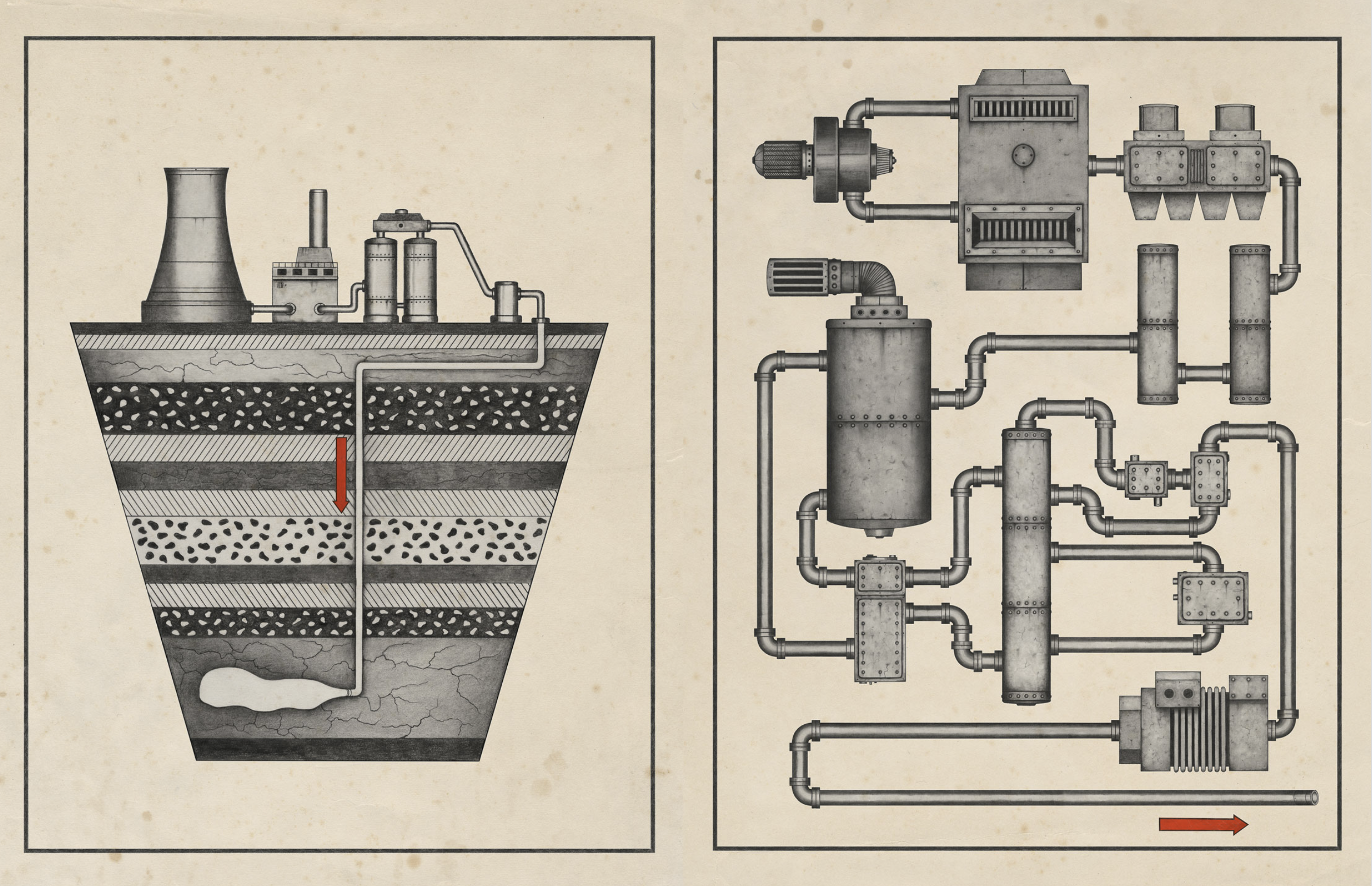
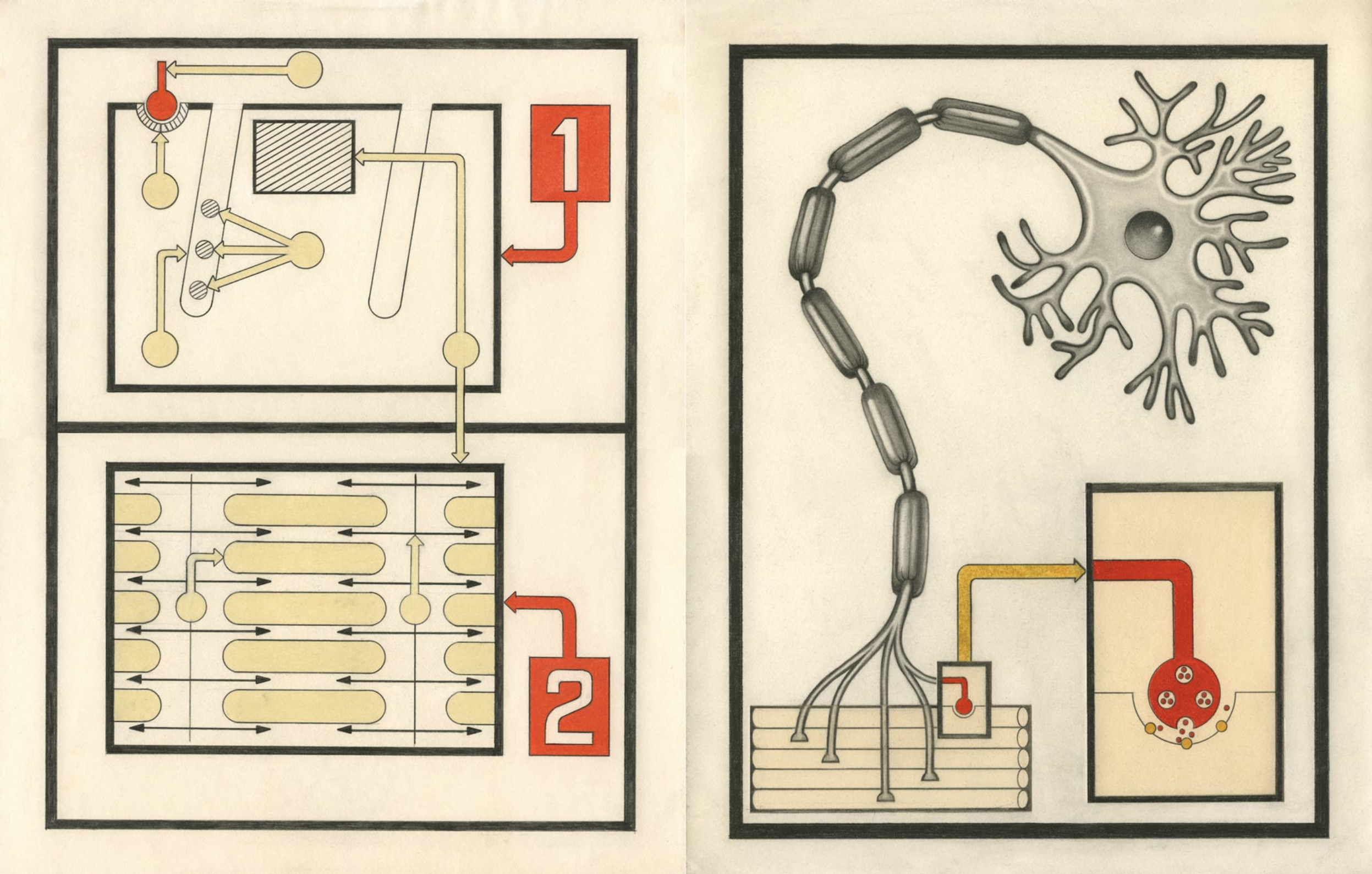


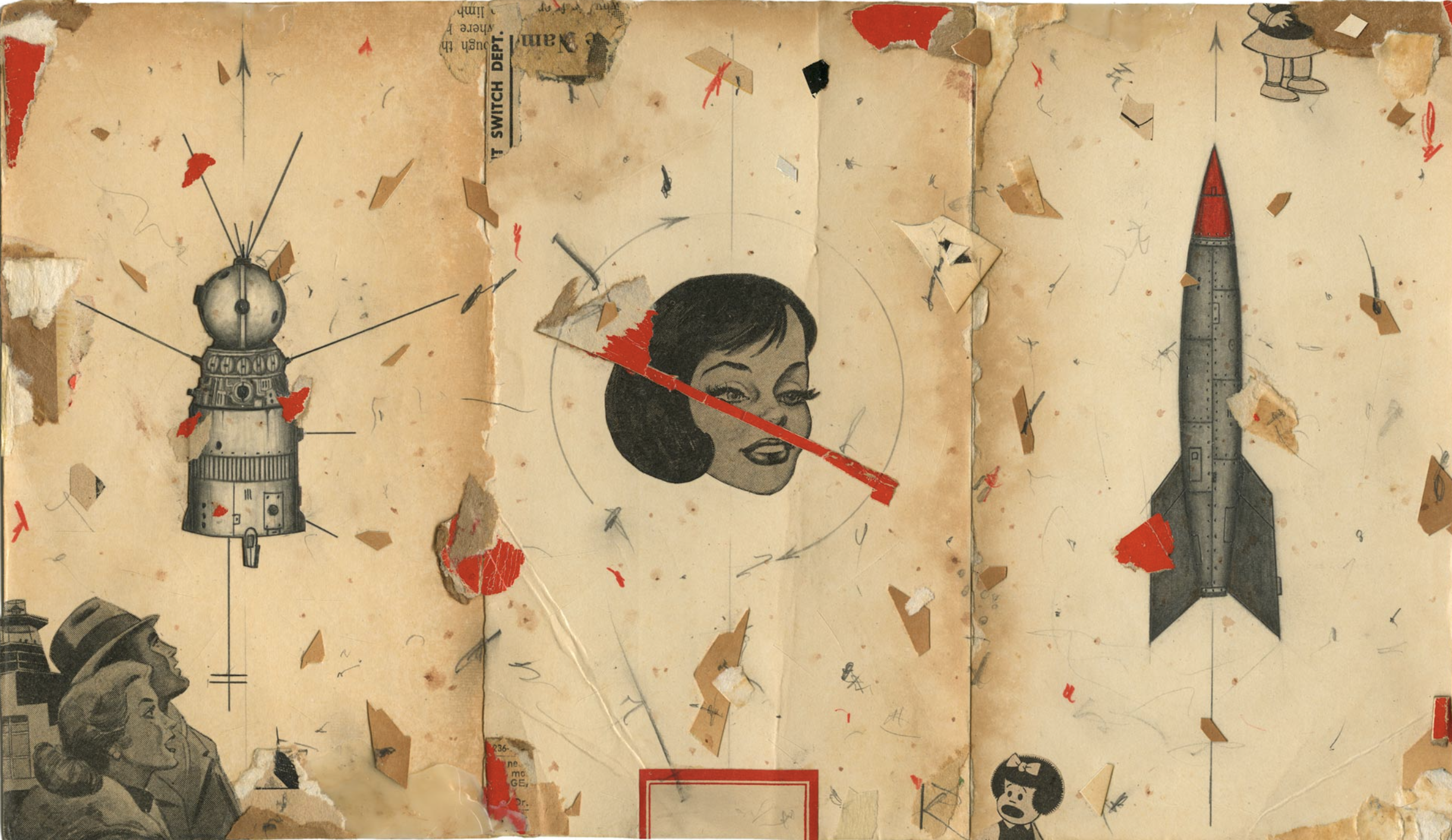
Winters is a rare double-threat—equally accomplished as a photographer and illustrator.
Patrick Mitchell: Unfortunately, we’re not going to be able to cover the breadth of your illustration career, which is really impressive. I saw an interview, I think it was at American Illustration/American Photography, where you were talking about Marshall Arisman, Brad Holland and Matt Mahurin—I will add Mark Ryden to that list because your studio looks like he could have designed it.
You were talking about the influence these guys had on you. And, as I was coming up, those guys were so powerful to me, too. Iconic and unique. Those were the guys on my Mount Rushmore. And when I started out, I revered them. And luckily I’ve been able to work with them over the years.
But when I heard you talking about them in that context, it was weird. I had this flash—I immediately saw you in that same group, even though you’re a photographer—and it really gave me a different lens on your work, which I think is—it’s photography, but it’s very illustrative and it’s got its style and it’s got its lighting and shadows. And it’s not weird at all to consider you in the same conversation with those guys.
Dan Winters: Yeah, they were giants for me as well. And I would include Mark Ryden. And I think that Brad Holland was—I think one thing was they were so consistent and they had such a singular voice—each one of them—and it was very succinct. And I think, as a creative director, as an art director, assigning one of those guys a job … I can only imagine how exciting it was to get that envelope, get that print, and get that image.
Because you knew that they were just going to rise to the occasion. Every time. I don’t remember Marshall Arisman ever phoning anything in. And his illustrations, they evolved, and they got more and more abstract and violent at times. And they were just such a great gift.
Well, that’s certainly a compliment, I will say, because those three guys were just absolute giants for me. And I always was a lover of illustration. I’ve drawn for years and I chose photography as kind of my primary pursuit, but seeing illustration in magazines always, always inspired me greatly.
And, you know, I went to the same junior college as Matt [Mahurin]. So I’ve known Matt for—I talk to him regularly—I’ve known Matt for 35 years. His career has taken on a lot of different twists and turns. He got into doing videos and films and stuff as well. But yeah, thank you. That’s an amazing compliment.
George Gendron: At one point again, in this interview they asked you about gallery shows, and you said one of the things you really liked about gallery shows was walking in and seeing very, very large prints of your work. And they asked if you have any large prints in your house. And you said, “Oh, I have one and it’s 40x60, but it’s not a print of my own work.” Whose work is it?
Dan Winters: I don’t have any of my pictures hanging. I have a house full of a photography and painting, but I think I have one print that my wife hung upstairs, but everything else is either historical or contemporary stuff of people I know, typically, that I’ve traded with or whatever.
George Gendron: Can we ask what print your wife chose to hang?
Dan Winters: It’s a picture of a boy in Cincinnati, behind a waterfall. George Krause made a photograph called The Submariner [1958] and it’s a little black boy behind a curtain of water. And he’s kind of protruding from it a little bit. Herb Ritts did some images that were similar to that. I did it at a public fountain in Cincinnati. And it’s a really beautiful print. It’s printed on Ektalure and toned with Gold 231 [gold chloride and ammonium thiocyanate], and then it’s varnished. And it’s a really rich, rich print. I had it and she’s like, “Oh, we should put that upstairs.”
But the big print that’s in my house is a print from the Detroit Publishing Company of a ship that’s being launched in 1904. And then I have a E.O. Hoppé image of a shipyard in Bremen. And then I have a “found negative”—I have a giant collection of negatives—that’s a glass-plate negative of the Statue of Liberty shot from a ship. And it’s really heavily degraded. The emulsion is gone off of a good portion of it, but it’s this magical, organic image. It’s a darkroom print I made with it with a 4x5 neg. And some paintings. And yeah, I don’t have any of my big—I have a lot of big prints at my studio that are crated, but not visible anywhere.
Scenes from Winters’ studio (above and below) in Driftwood, Texas, just outside of Austin.
Patrick Mitchell: Let us know when you have a yard sale.
Dan Winters: [Laughs]. I’m actually thinking about having one. But yeah, I love my photos.
There's a great Callahan quote, where he said, “I make the kind of photographs that I like to look at.” And I think that’s a great jumping off point for any photographer. It’s like, “Well, what kind of photos do you make?” Because when I review portfolios at schools, you can tell the ones that are serious and the ones that aren’t, I mean, flat out, right?
But I’m not the playground bully. And I want to inspire, and I want to maybe push someone into a realm that they wouldn’t be in. So I’ve looked at books before that were 25 images and 23 of them were almost—you couldn’t even look at them. But maybe there are two that are really good.
And so I call those out, “See these two images really work, and here’s why they work. Go make a bunch more like this.” And that’s a great piece of advice to give to someone that’s struggling. And maybe it’ll prompt them to try to achieve more than they are already. And then some people are just not gonna—it’s just not gonna happen.
Creativity is a strange ally. I don’t know where it comes from—that wellspring, whatever it is, you know what I mean? Some photographers and artists have experienced great, great periods of productivity and followed by a lifetime of… I mean, Evans is always my great example about that. Evans made all this significant work within a three-year period. All that Farm Security Administration stuff. All the rest of the stuff he did for Fortune, and took pictures of tools, and this and that, the other thing, were just, they paled in comparison to the work he made in that short period of time, you know? And I’m so grateful that he made that work in that short period of time. And I don’t know the reason that he never was able to eclipse that.
George Gendron: As we close here, Dan, we are going to jump around a little bit, and personally, I have to ask you something that I’m really, really curious about. And that is I’m thinking about Texas Monthly here in particular. Where do you think the DNA of a magazine like Texas Monthly comes from in the first place? Where it arrives on the scene with this extraordinary, brilliant, vibrant visual identity—design typography, illustration, photography—and it seems to come out of absolutely nowhere. And I know everybody loves to refer to the founder, Mike Levy, as “the son of a plumber.” But I knew Mike a little bit, because he used to hang around the newsroom at New York magazine talking to Felker and Milton Glaser and so on and so forth. And then I had a chance to work with them a little bit on the Radcliffe Publishing Procedures course, where I got to know him pretty well as we worked with some younger people. And I’ve always marveled at the brilliance of the visual identity of Texas Monthly over a long period of time. Where does that come from?
Dan Winters: Texas is a really unique place, it’s the one state that in my opinion has an abundance of regional pride. And I think that Texans love Texas, I’m not sure what the sort of chemistry of the magazine in its inception was. But I do know that when Fred Woodward took over as creative director—art director they called them at the time—he started really looking at work that was non-Texas work. And that was one of the unique pieces about Texas Monthly is there were Texas photographers that were in there, but there were more photographers from New York and all over the country. Then there were, you know, Kurt Marcus was coming in from Colorado and, then Fred kind of handed that off to DJ Stout, who was a gifted, gifted creative director.
And he kept that tradition going. He was flying people in constantly and he was constantly coming up with ideas of photo essays. And they were willing, under Levy’s watch, they were really committed. I mean, I’ve done photo essays for Texas Monthly that were 20 pages. People did 15-20-page photo essays for a magazine in a time that no one did that. No one did that.
And the level of achievement that the photographers were manifesting—and also, once again, that kind of that Rolling Stone description I gave you, and there were certainly like Details magazine as well, where we kind of had this family of photographers and we all, in my opinion, inspired one another.
I mean, Matt Mahurin was actually shooting for Texas Monthly when Fred was there. And then he was shooting there when DJ was there. I started shooting for them when DJ was there and worked for years with DJ and then started working for Scott Dadich, who ended up at Wired.
I think when a photographer got an assignment from Texas Monthly, photographers knew the reputation. And I think once you’ve formed that reputation, man, you’re not going to screw up a Texas Monthly assignment. You’re going to work your butt off to make sure you get it. And the truth is, that should be the case with every assignment. But the bar is really high.
And I think when you establish that you have a publication where the bar is set that high, I think it almost kind of takes care of itself a little bit. The kind of writers you’re hiring, what the expectation is, the kind of photographers you’re hiring. There’s an expectation, and you better achieve it.
I think it was a gift to get a Texas Monthly assignment. And it was even more satisfying to see the way it was run, and the way it was played, and how proud you potentially could be to sit there and ponder that sort of achievement. And it was a great achievement
George Gendron: Yeah.
Dan Winters: I sat in front of Levy on a flight to New York and he was talking to a woman about what he did. And he told her about Texas Monthly. And she said “Oh, I’ve never heard of that.” And he was like, explaining all the awards they’ve won and this and that and the other thing, and I felt like Texas Monthly is one of those ones, either you know or you don’t know. If you know, you know what it is. If you don’t know, I’m just not going to explain it to you.
Patrick Mitchell: If you know, you know everything about it too.
Dan Winters: Yeah. 100%.
A sampling of Winters’ movie posters
Patrick Mitchell: Somewhere you said, “The words ‘I am’ in quotes is an incredibly empowering concept. And back when you were studying in Munich, you said that that was the first time you ever referred to yourself as a photographer. That’s a huge moment. I mean, it’s obviously a life-changing moment. Can you talk a little bit about that?
Dan Winters: Well, that was a time when I was really questioning—because I was going to film school at that time that and I was studying documentary film. And I was shooting constantly. And I had been shooting for years constantly. And I made a decision then that my life’s work would be photography.
And the “I am” always, for me, was a definite. And it was a way for me to understand my own place. And so I tell assistants that say, “I’m going to break out. I’m doing this. I’m doing that.” And I say, “You are a photographer. That’s what you are. That’s the way you need to identify yourself. And things will fall in behind it.” But, first and foremost, I think that self-identity is a really critical piece. That’s what I was alluding to when I said that. It just felt incredibly empowering. And I’ll add to it that, if you think about any conversation you’ve ever had at any dinner party or any sort of house party where you don’t know the people, among the first questions are, “What do you do?”
And What do you do? is interesting, because What do you do? oftentimes, I think, could be perceived as some networking question. But also, I feel like that question is kind of a gift to give to someone, because they’re allowed to reflect on the way they spend their time in this world. And so, the What do you do? question I actually, really, kind of enjoy. And “I am a photographer” oftentimes is the response, but I usually try to build on that. And I talk about other pursuits and other things I’m interested in. And the things, kind of the breadth of what I do, outside of my Professional What I Do.
Winters wears an awful lot of hats: photographer, illustrator, builder, filmmaker, historian, researcher, educator, muse, storyteller, bulldozer pilot … the list goes on.
To find out what he’s doing next, visit his website, and follow him on Instagram @danwintersphoto.



